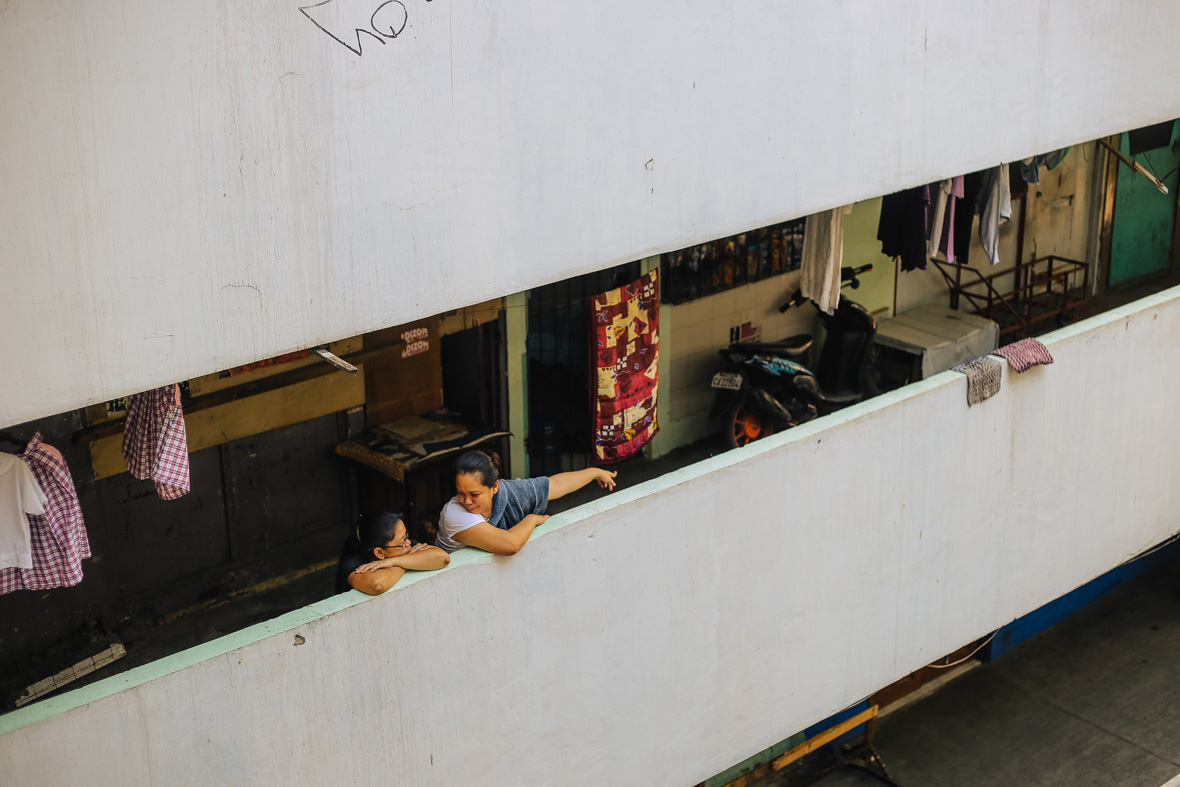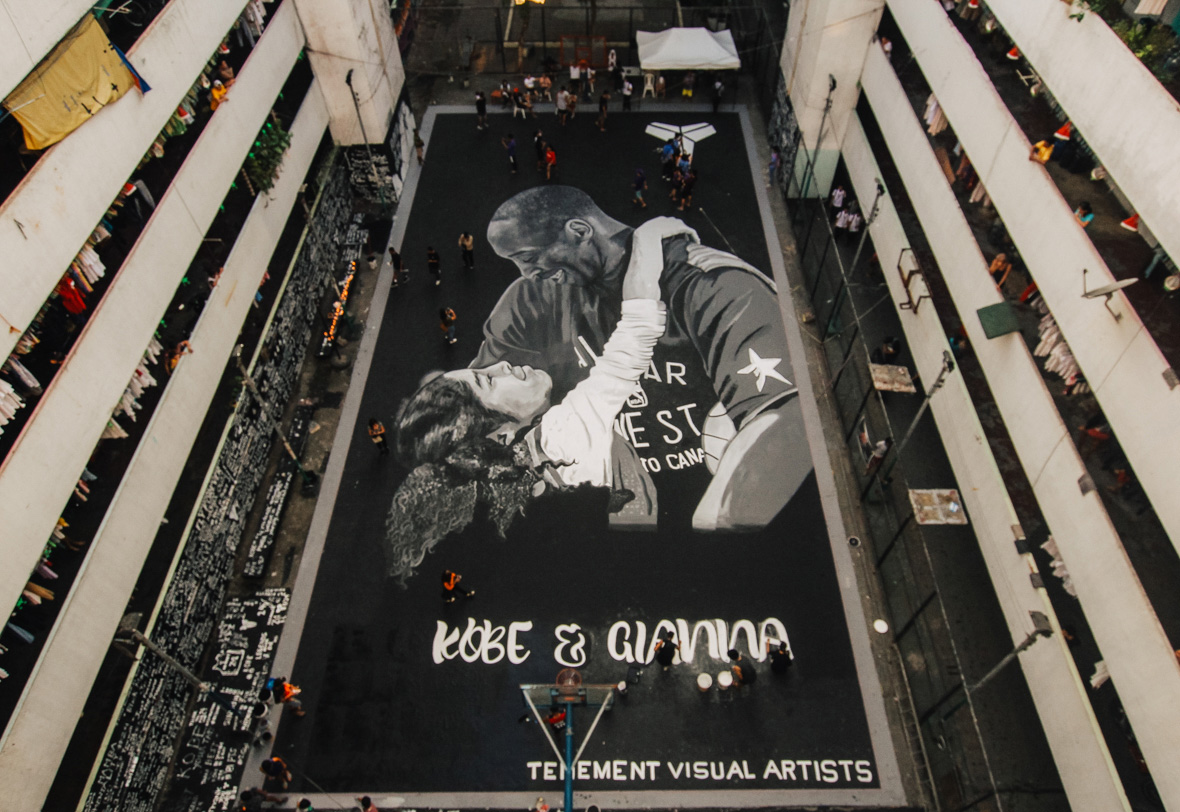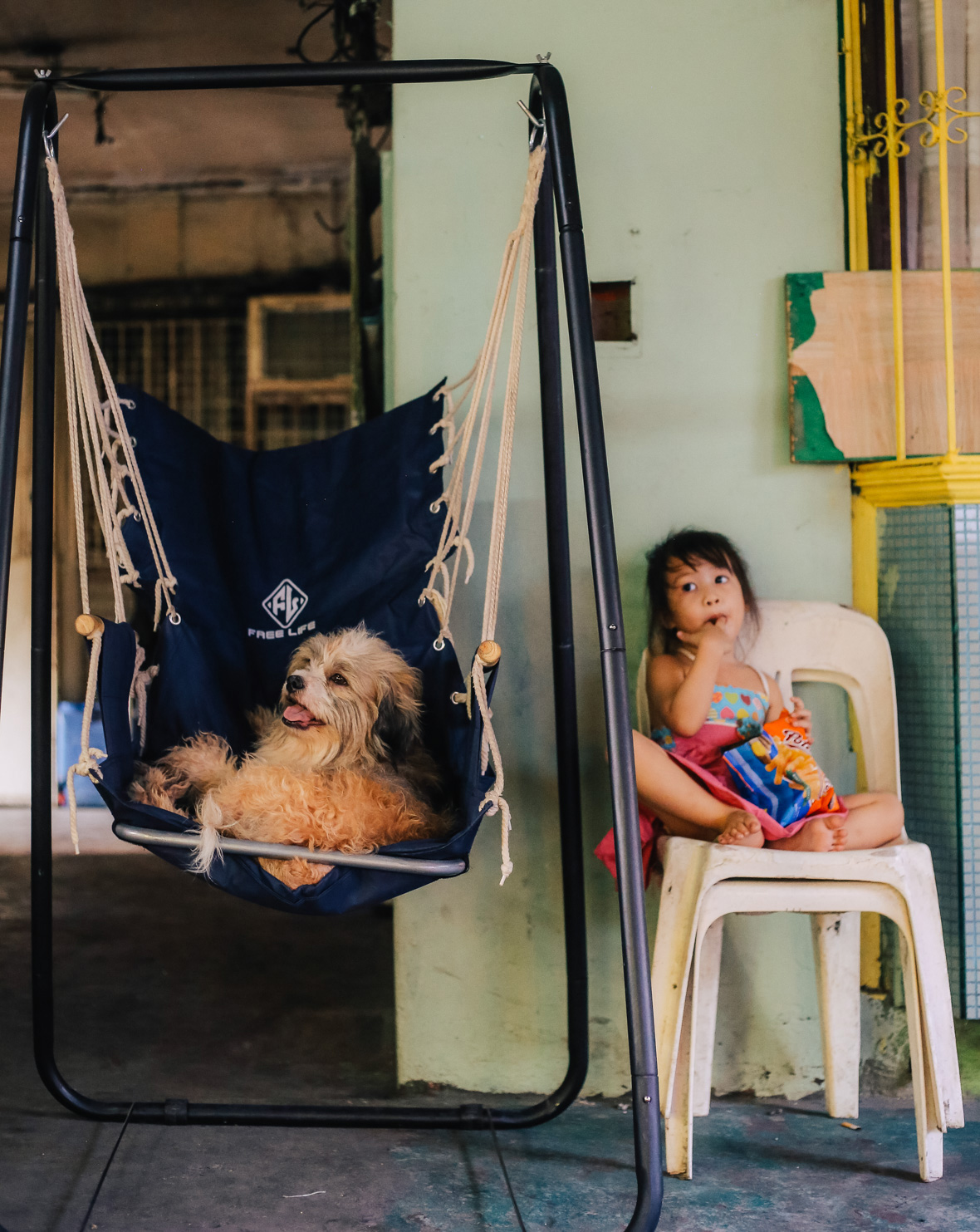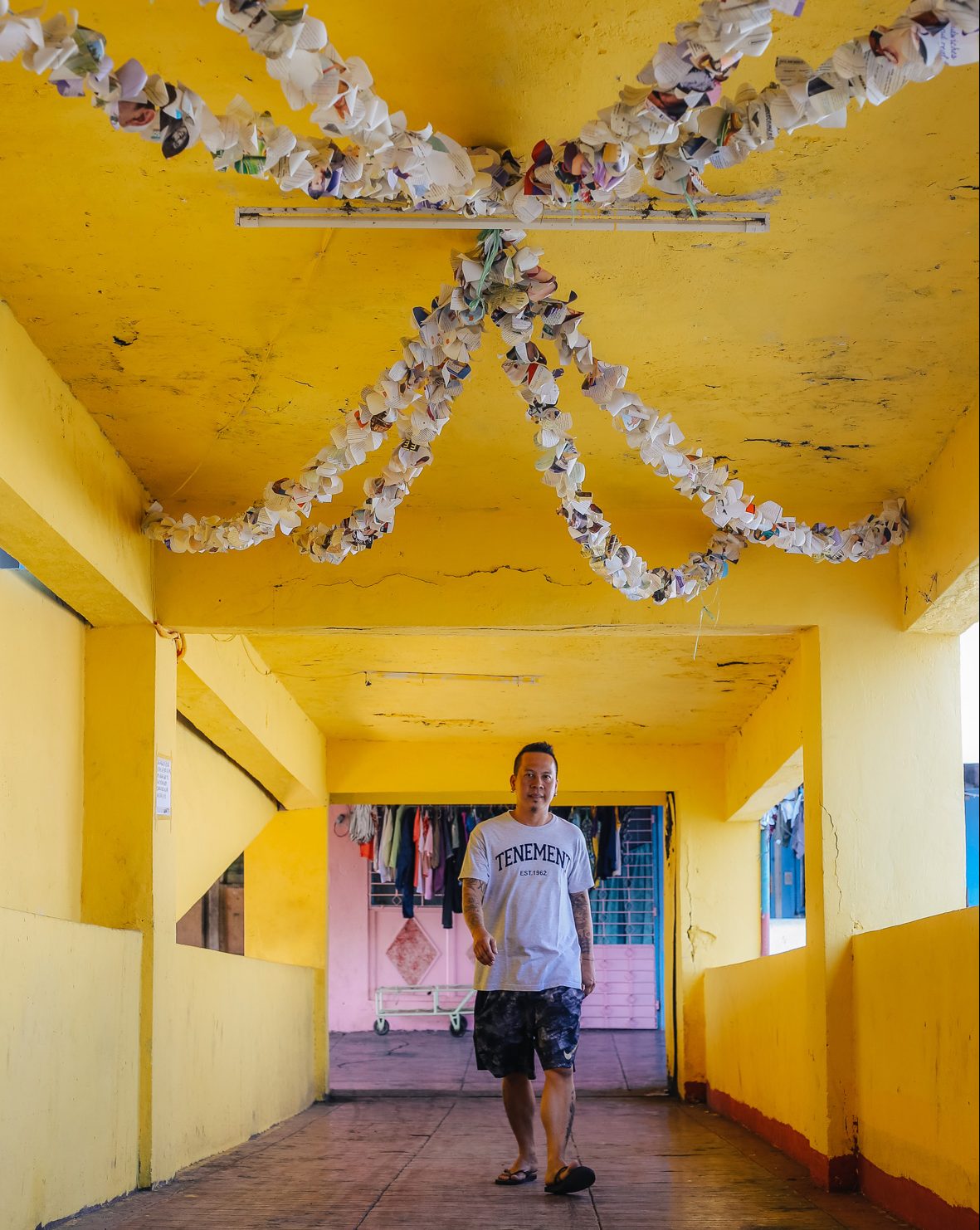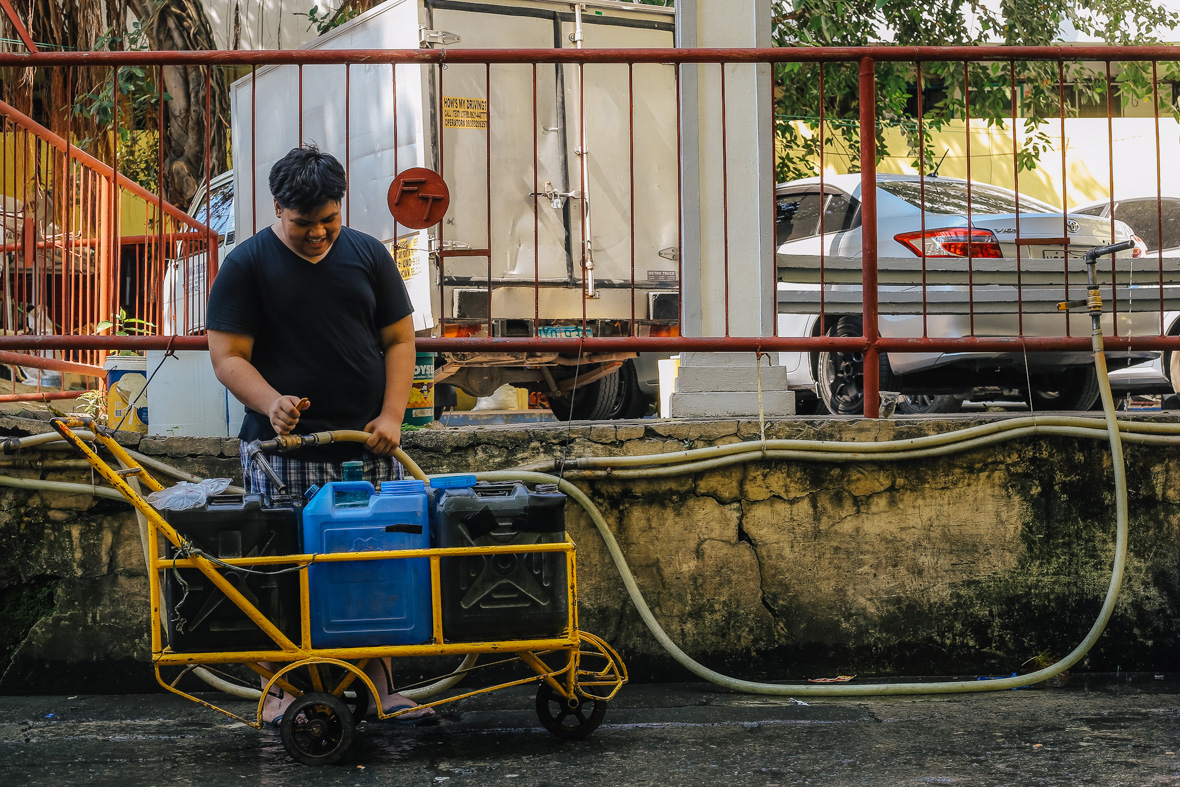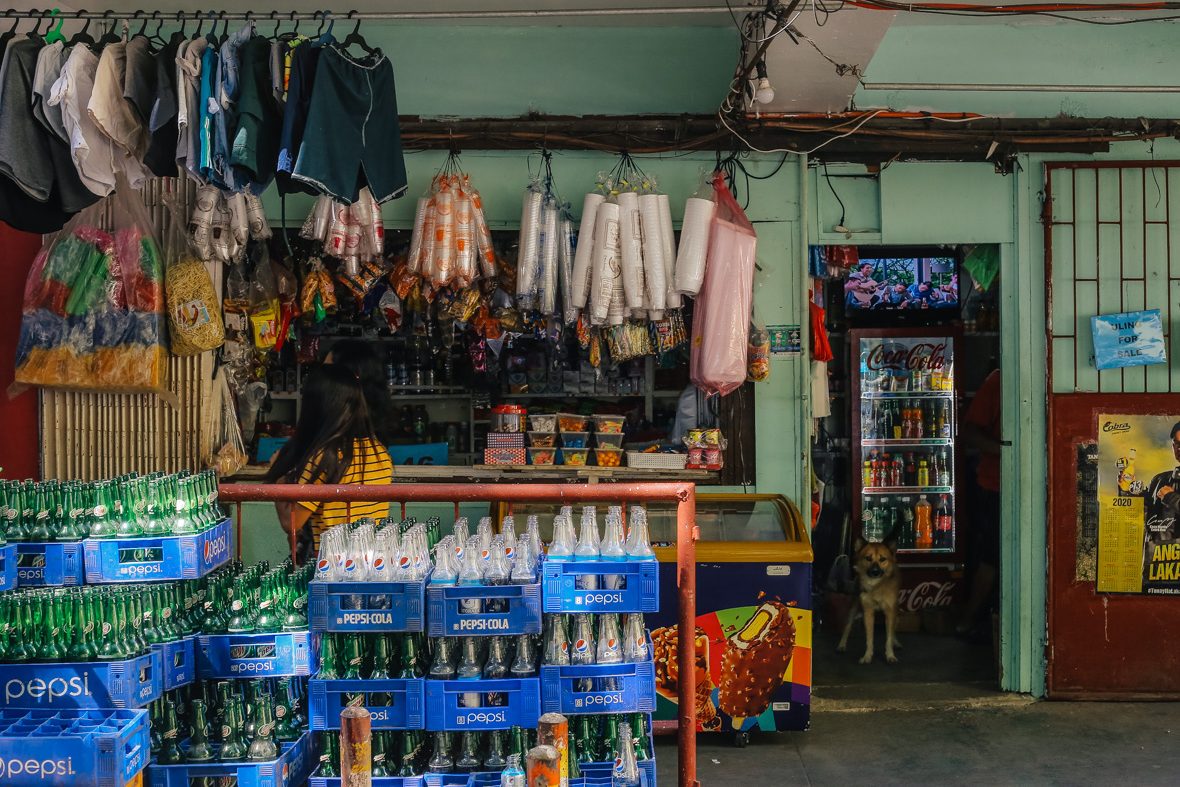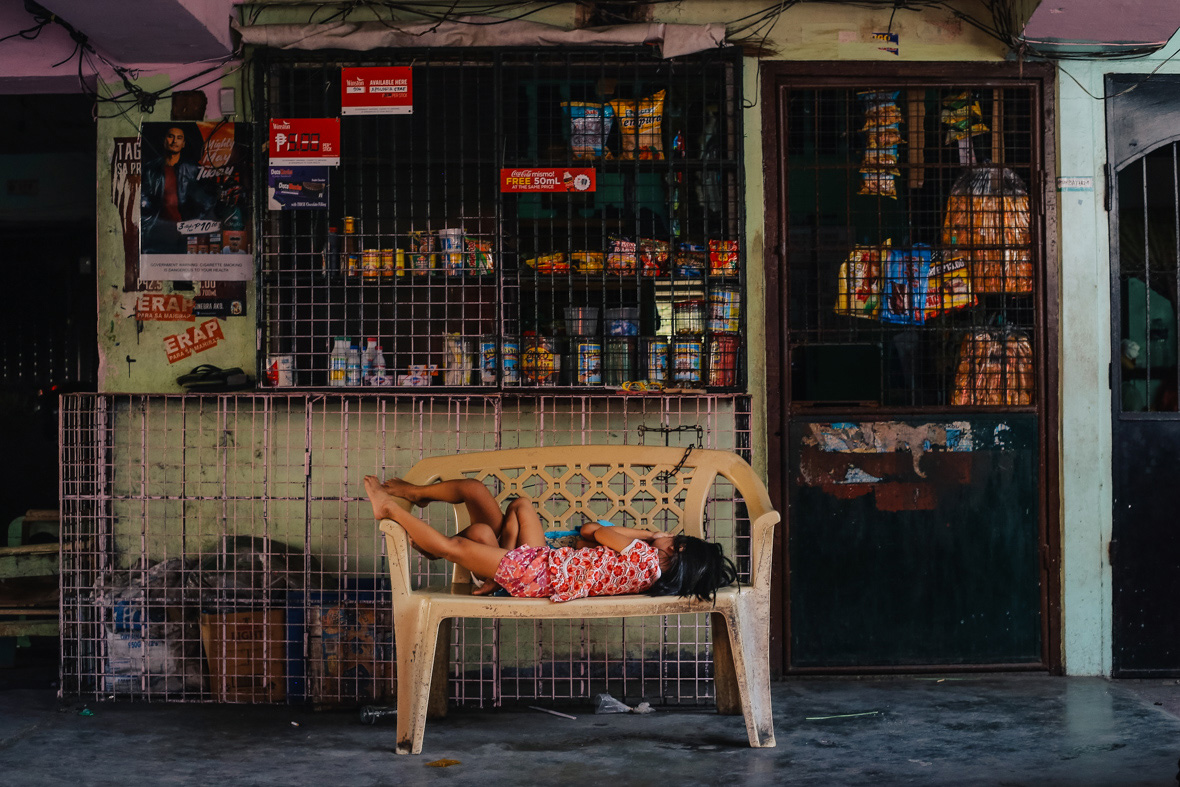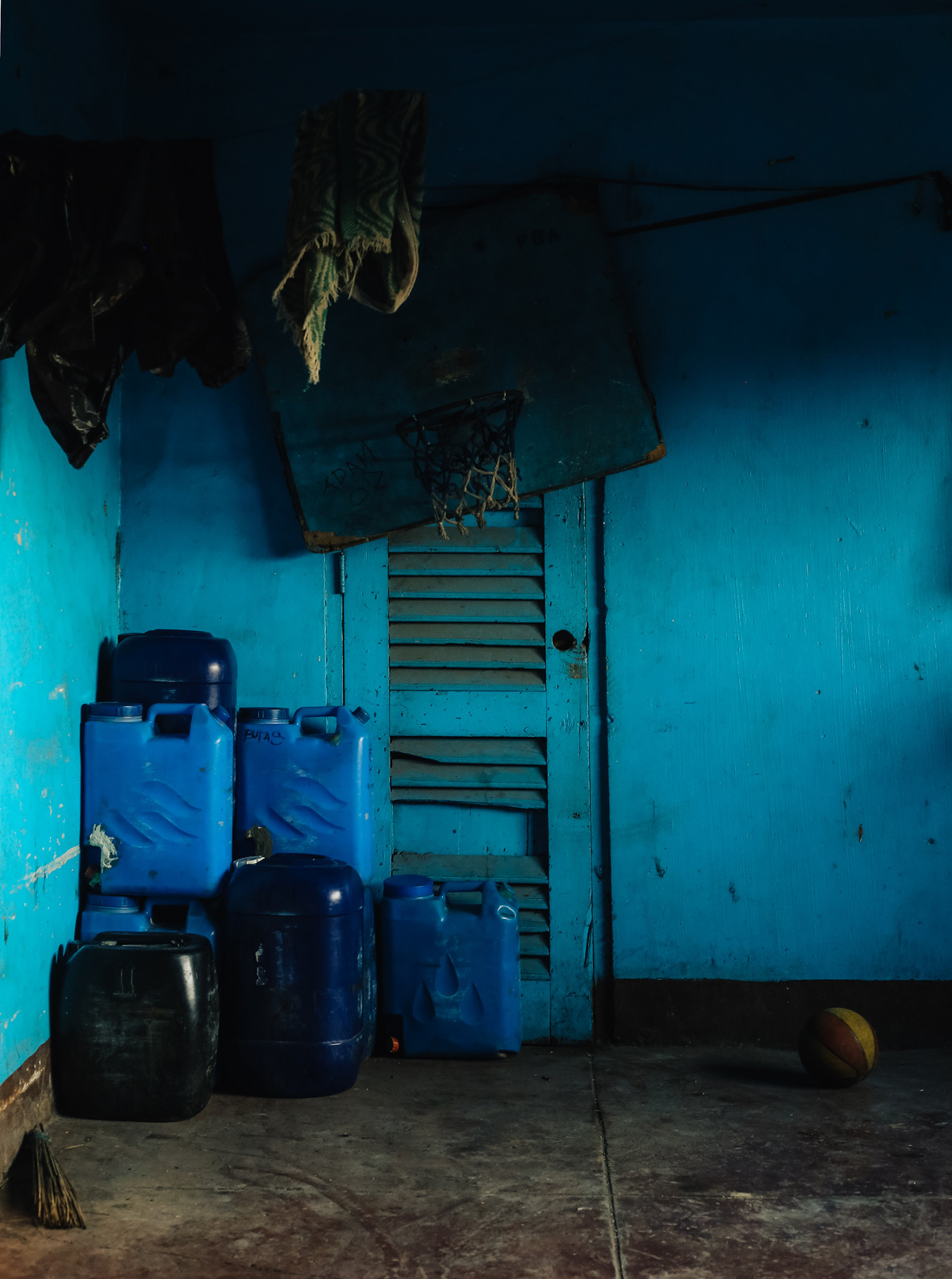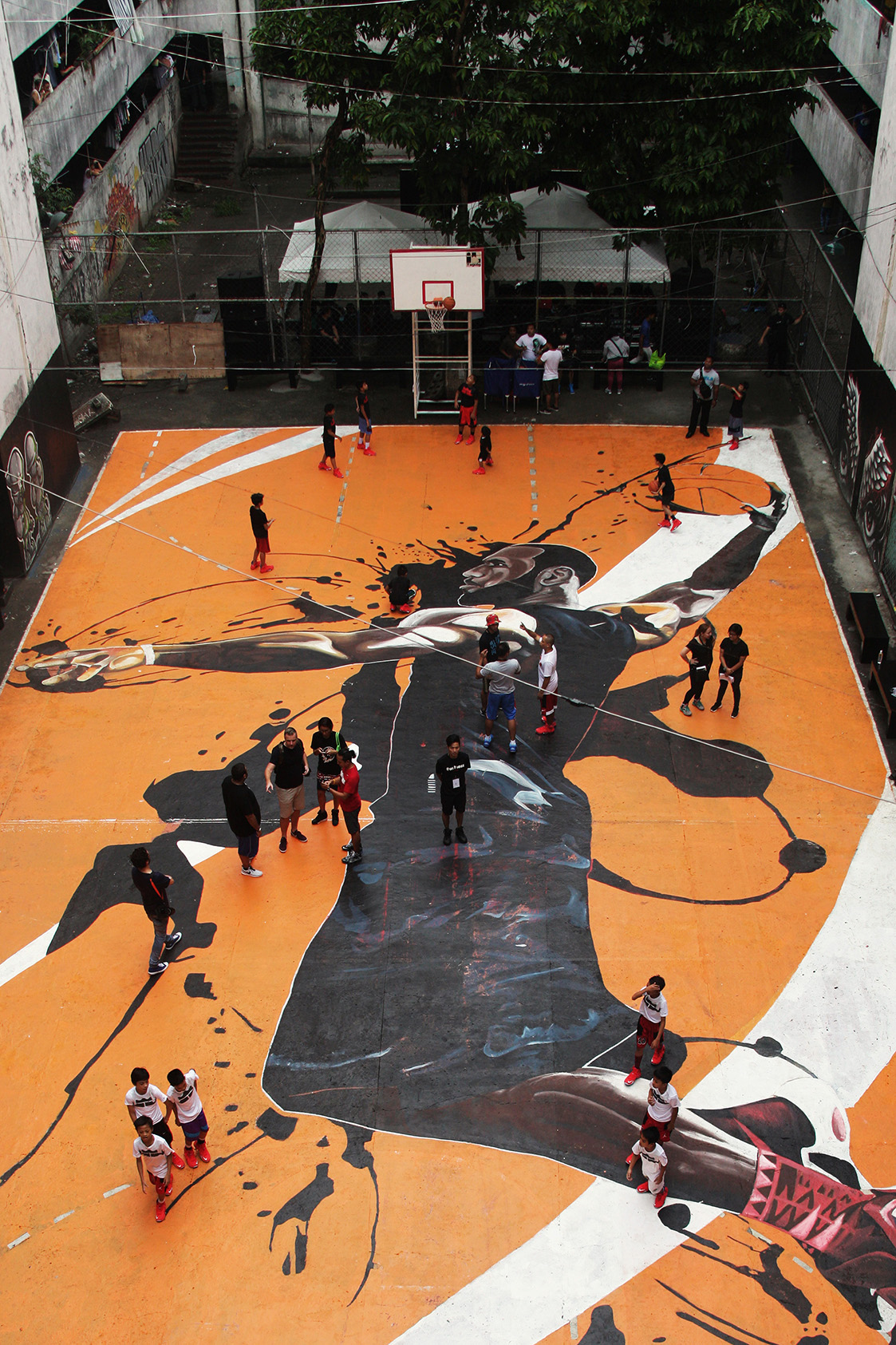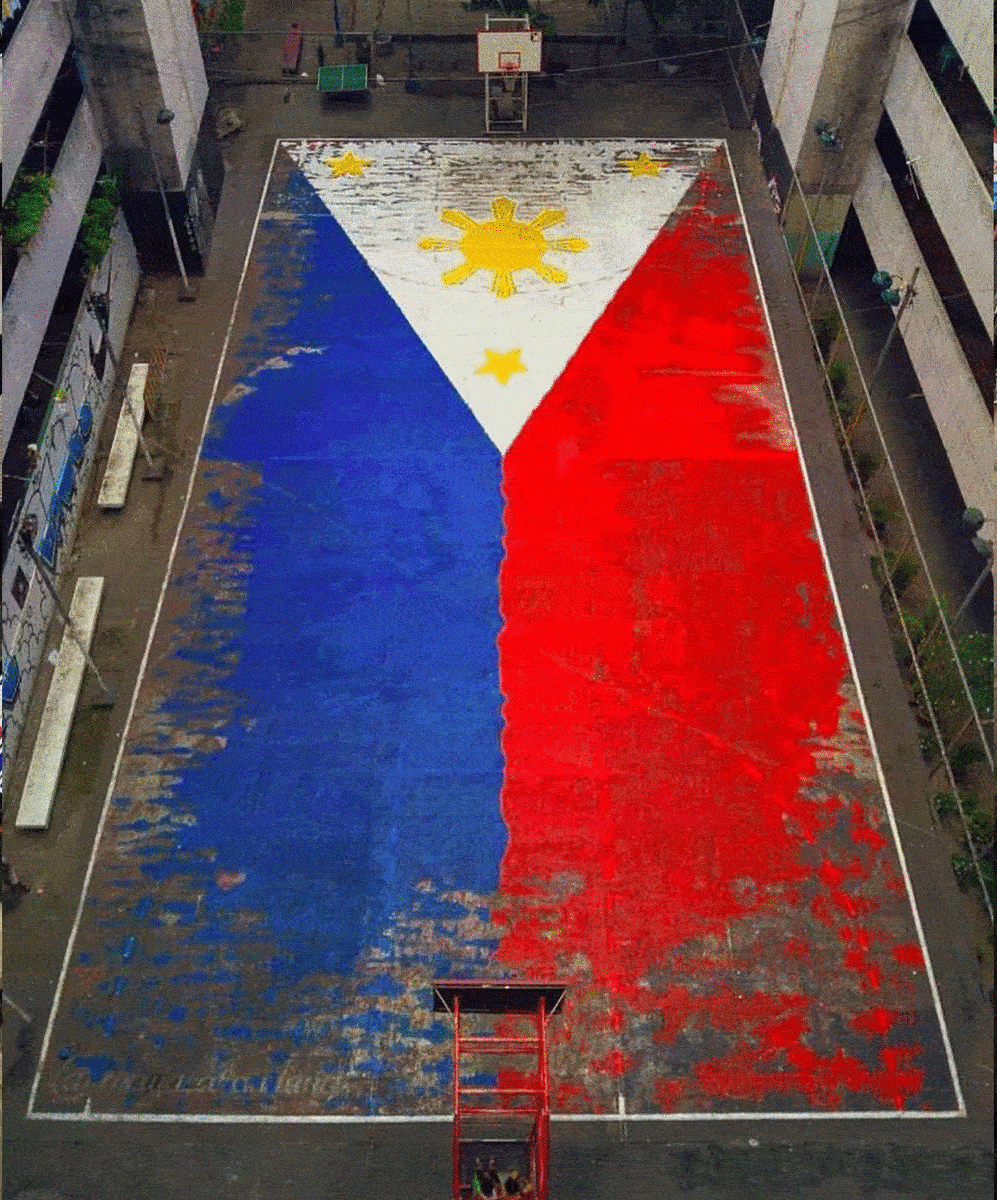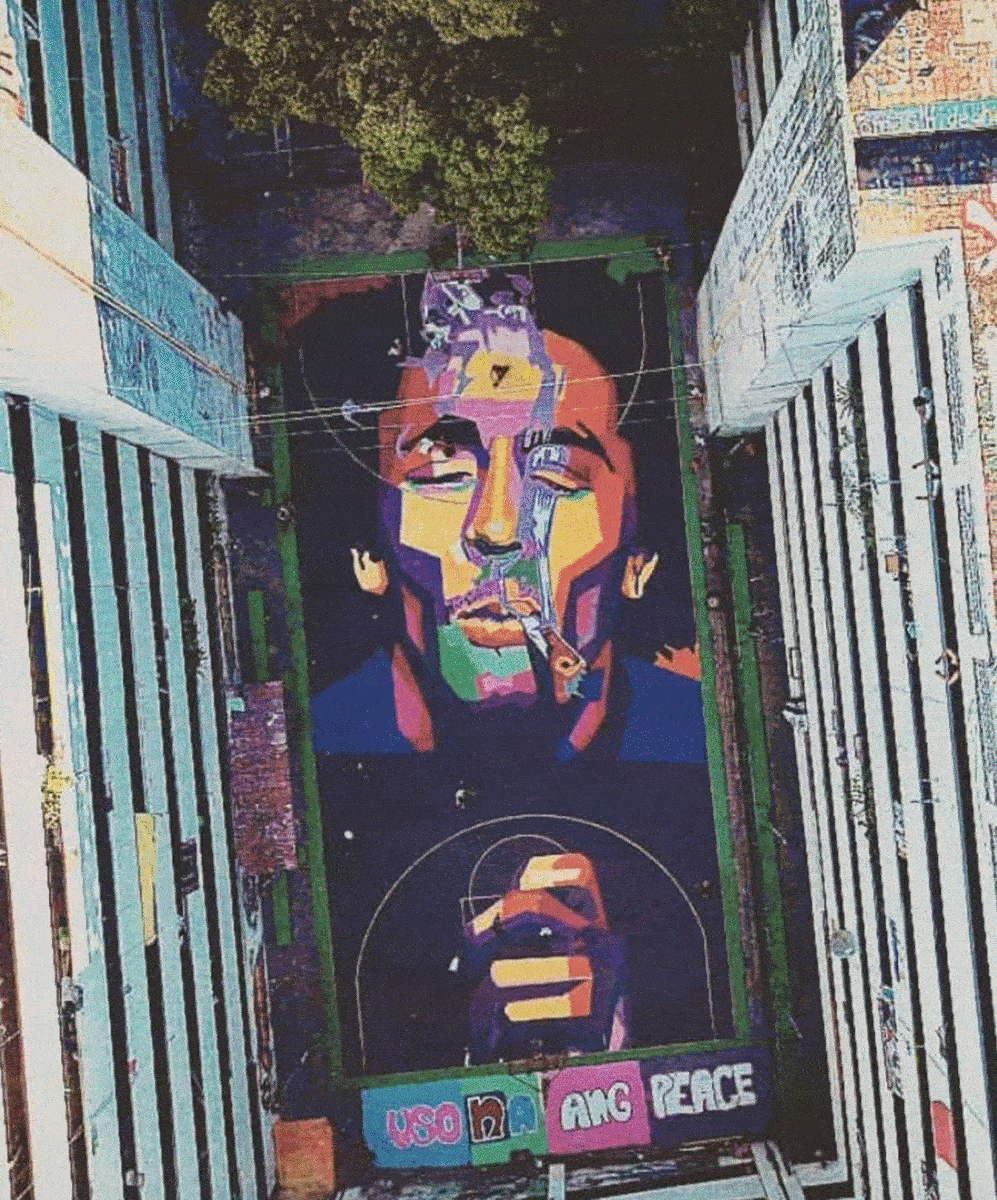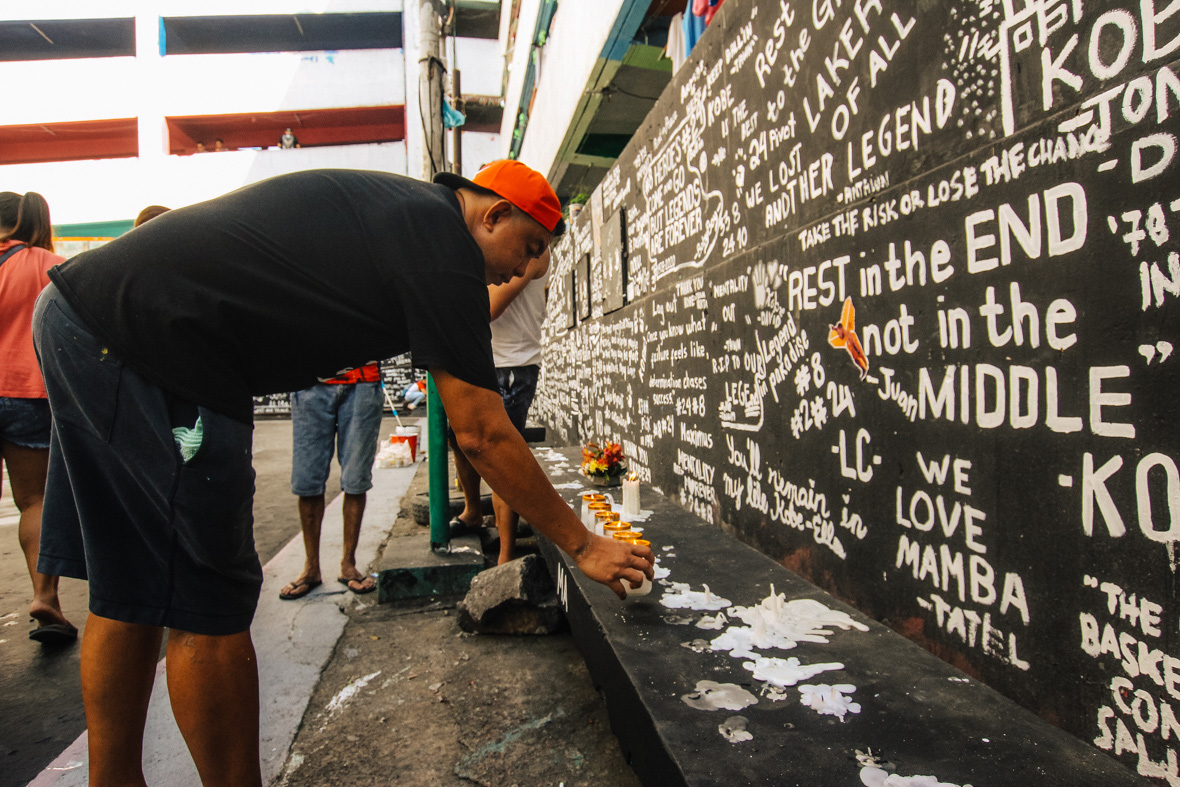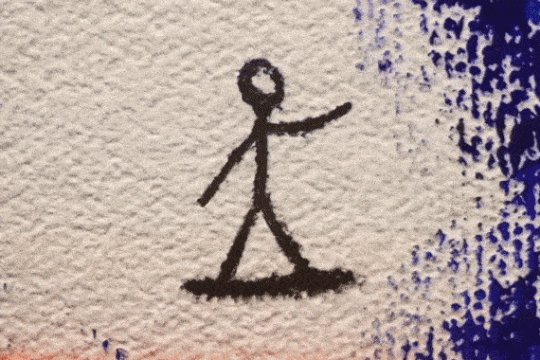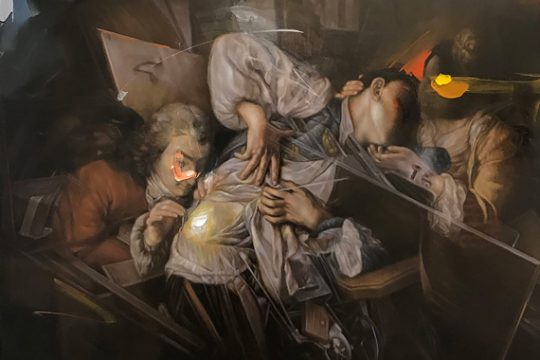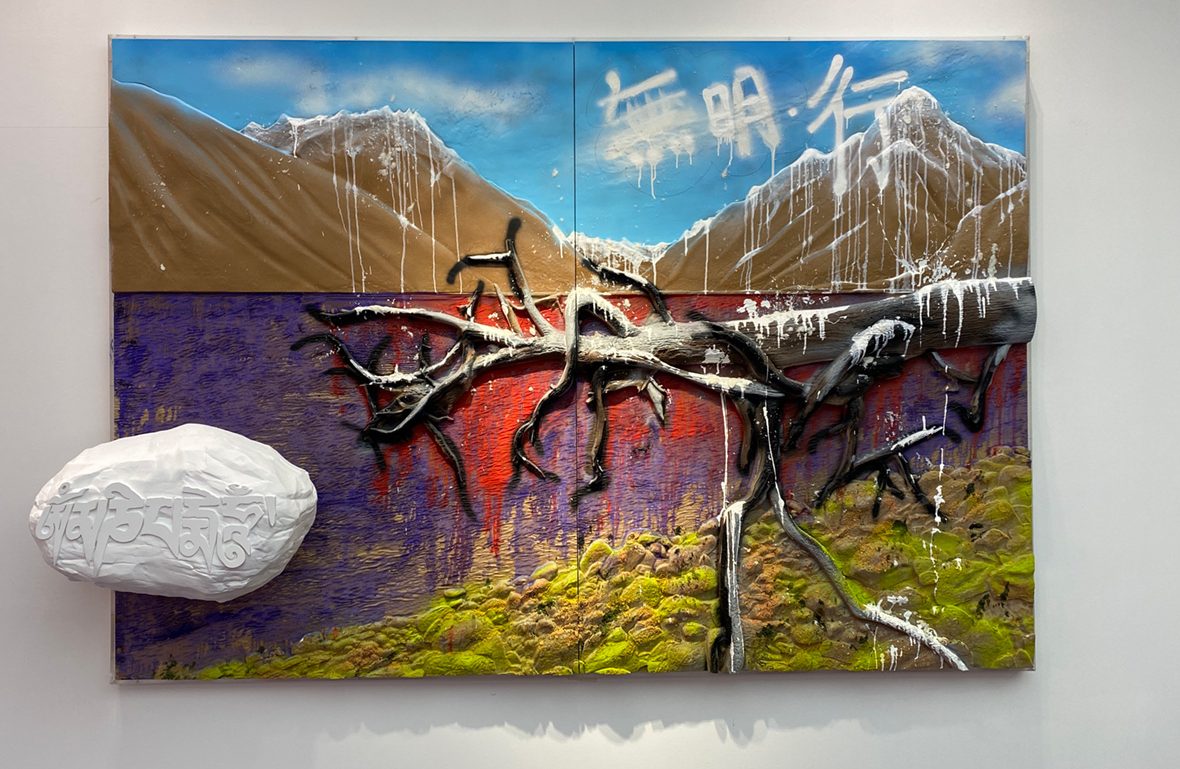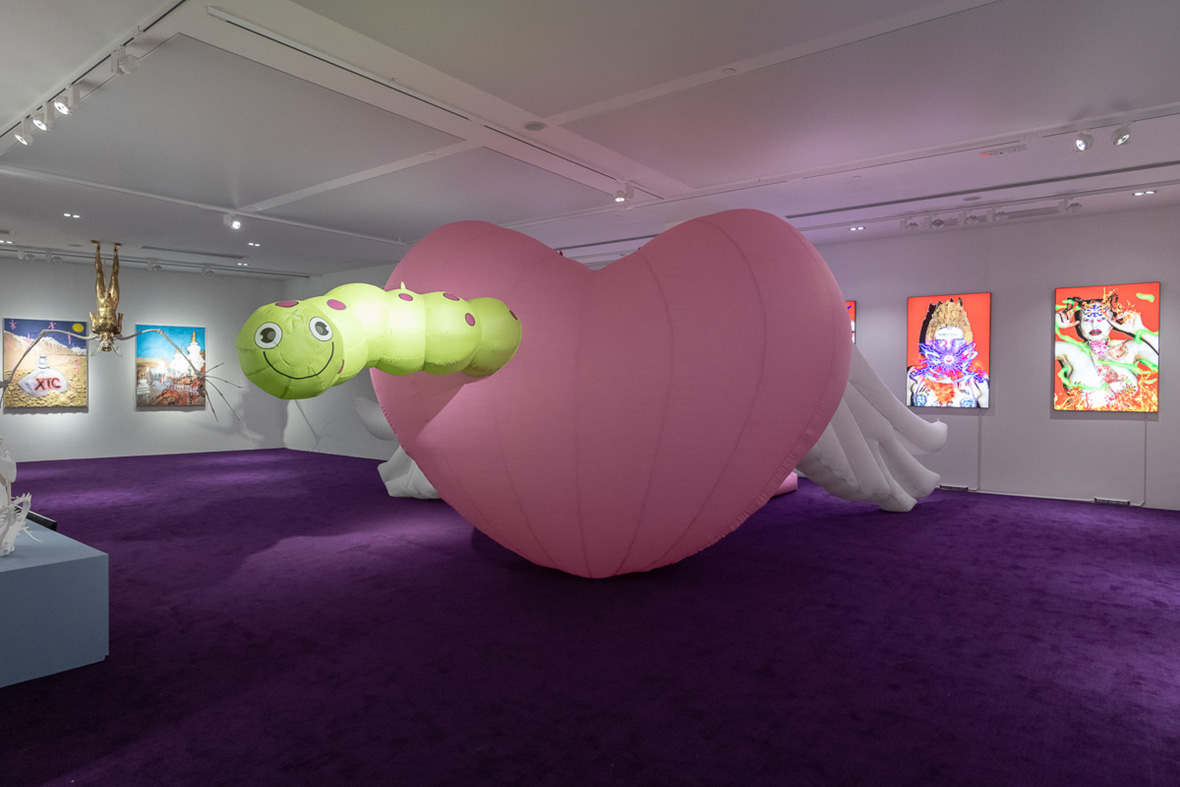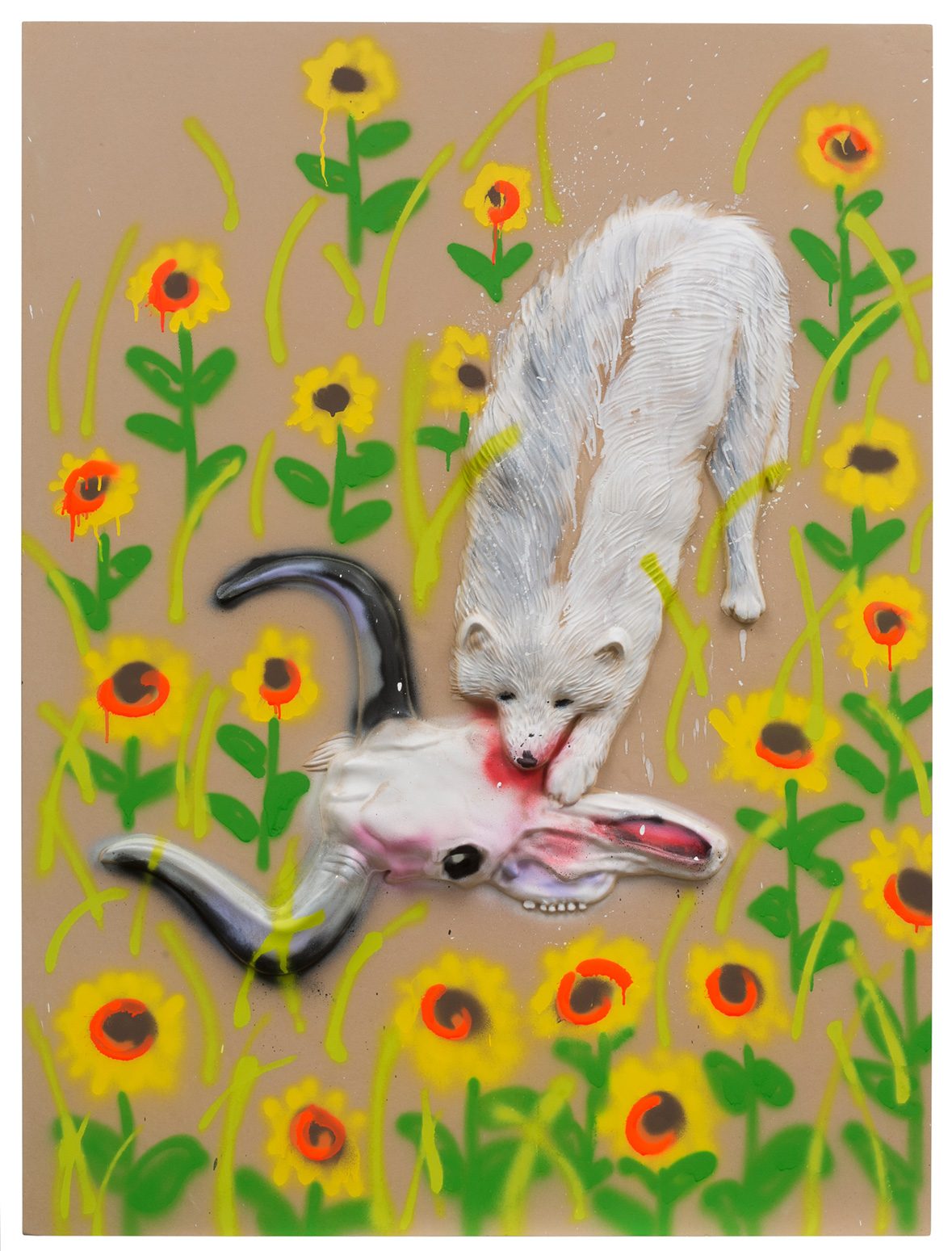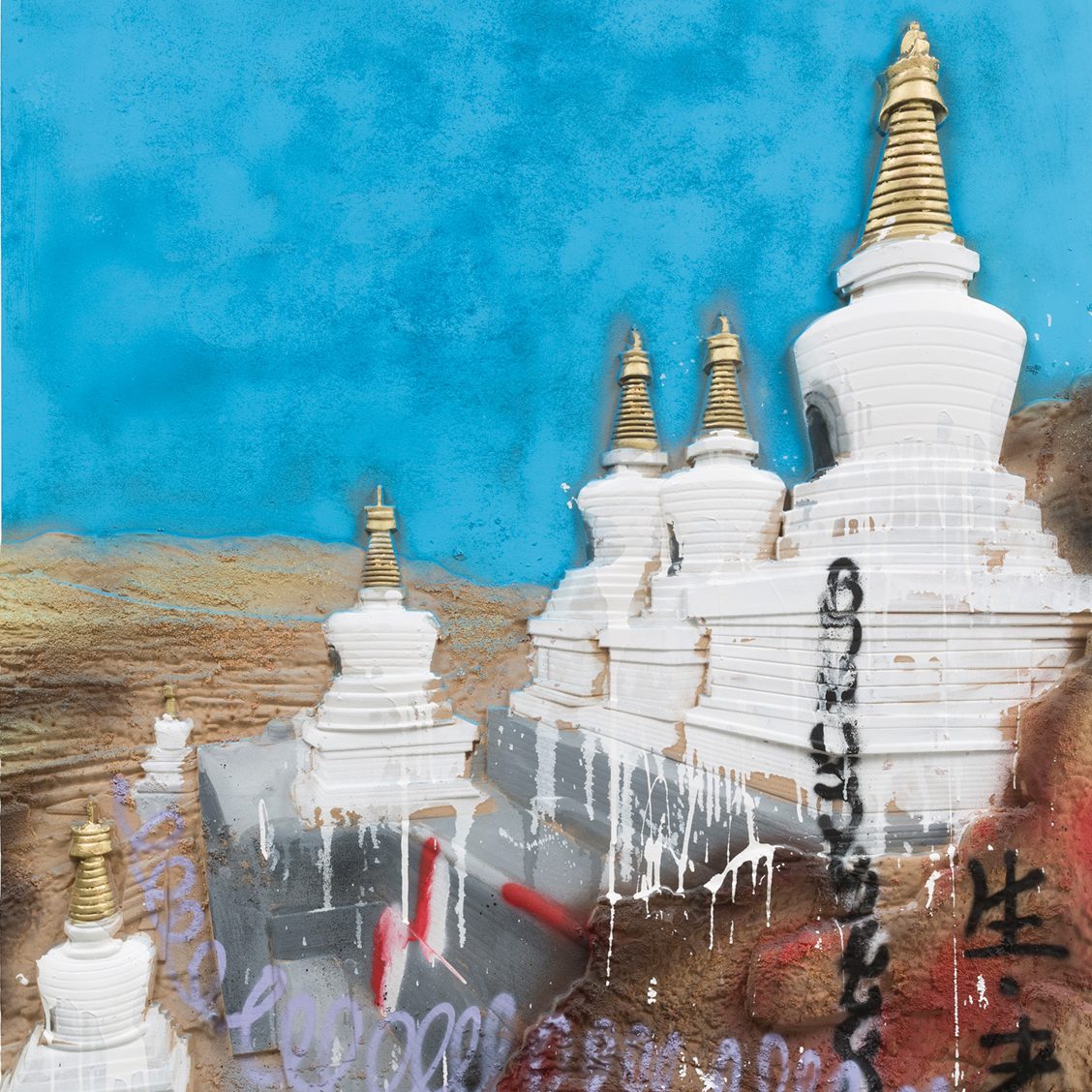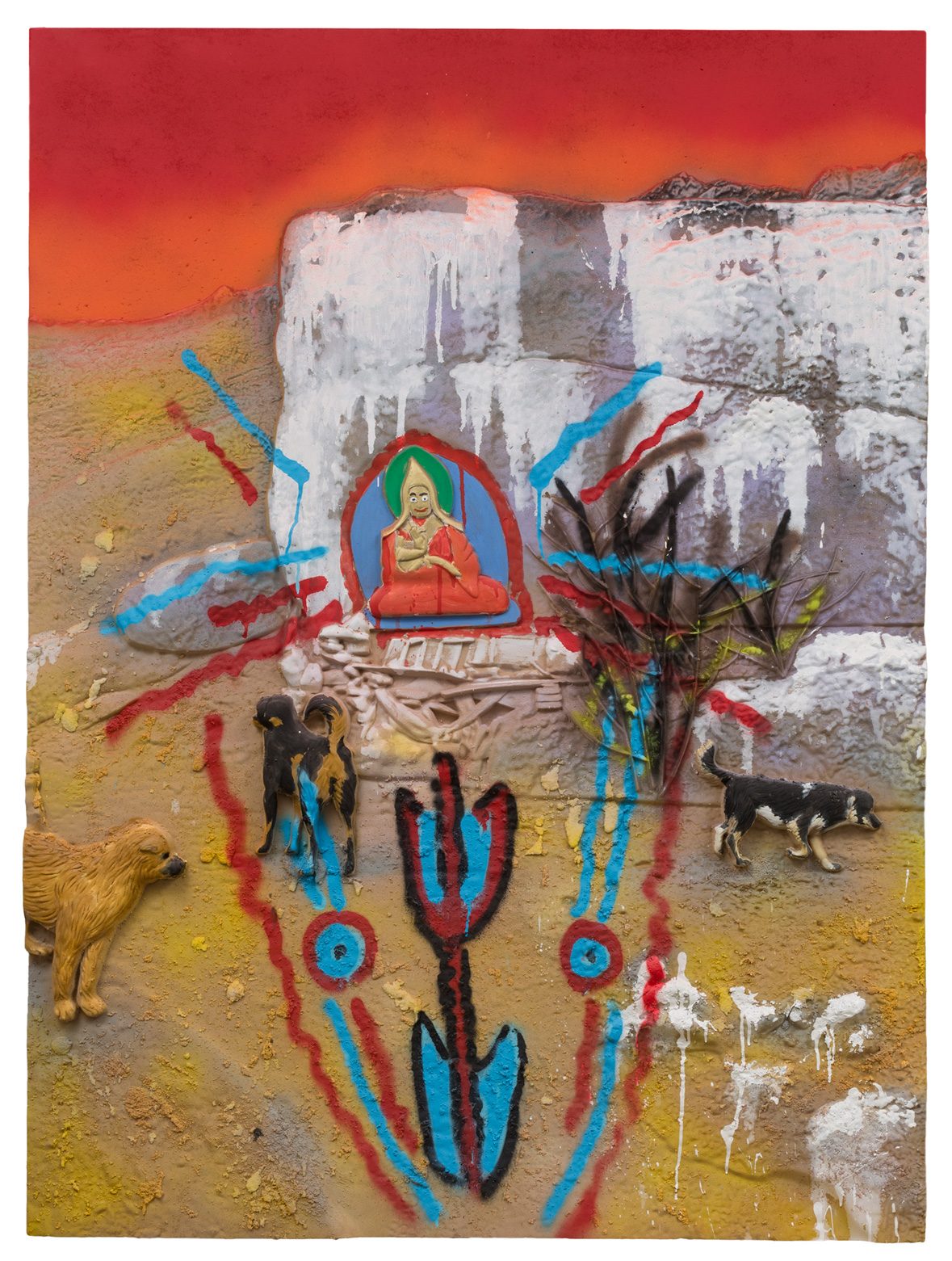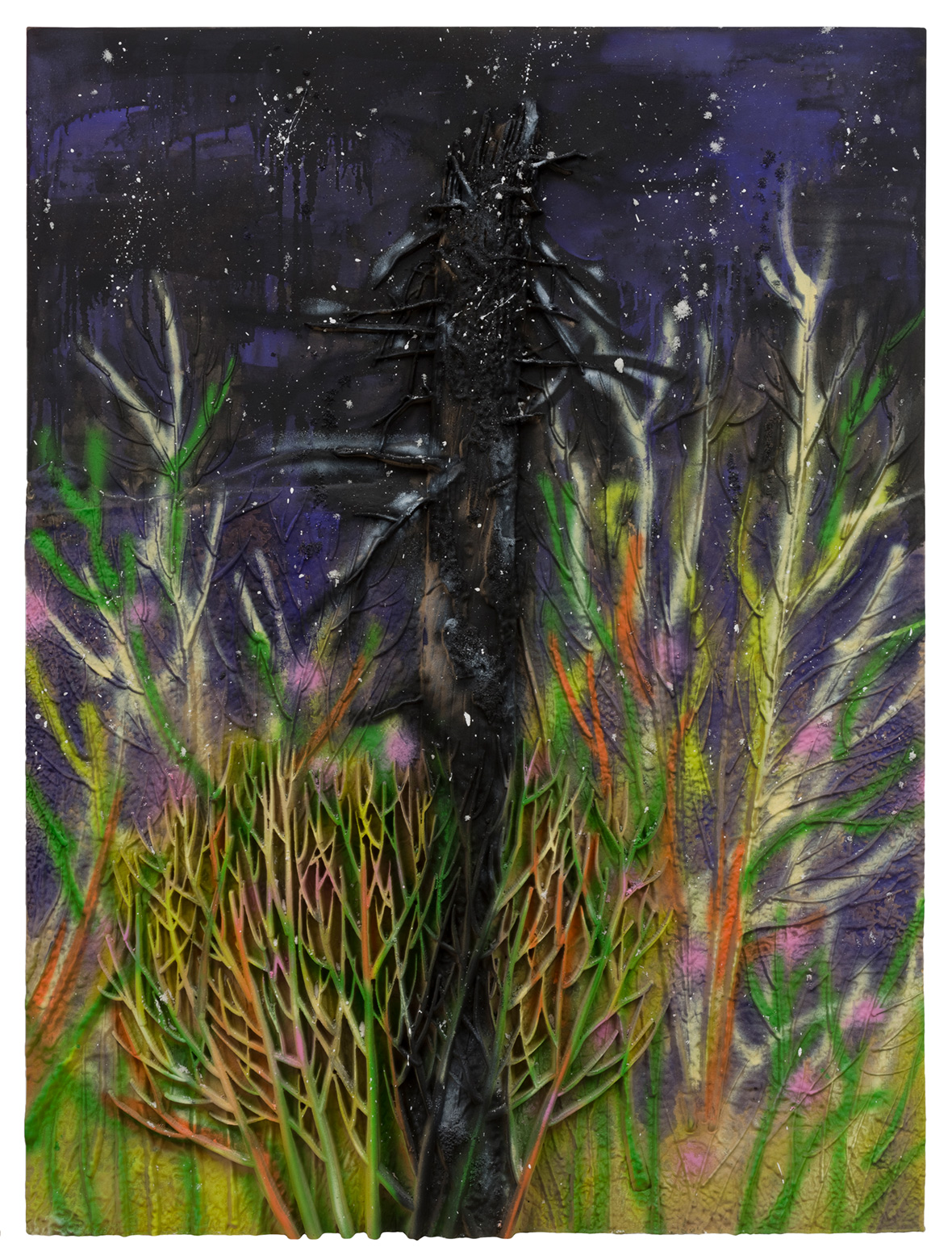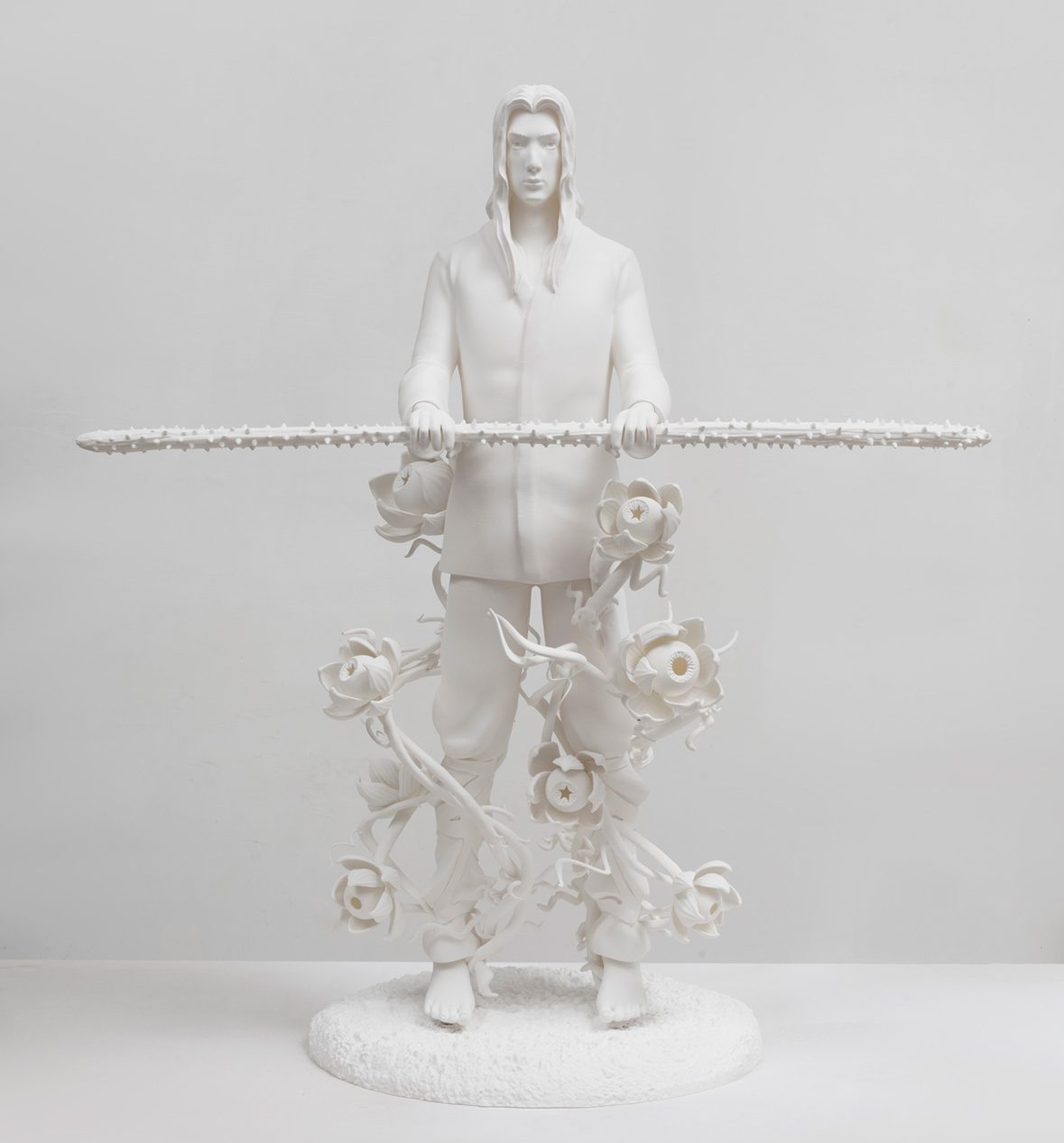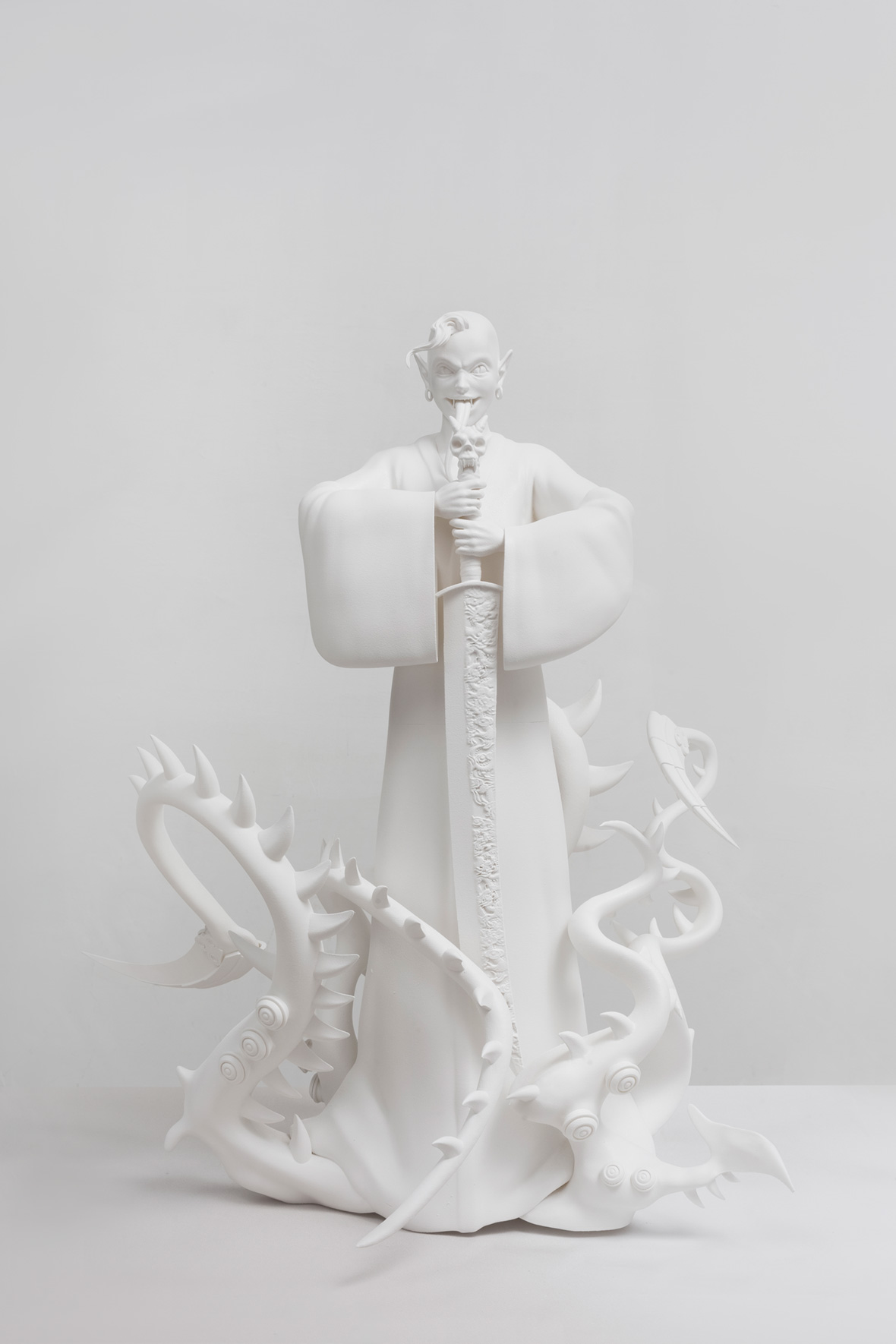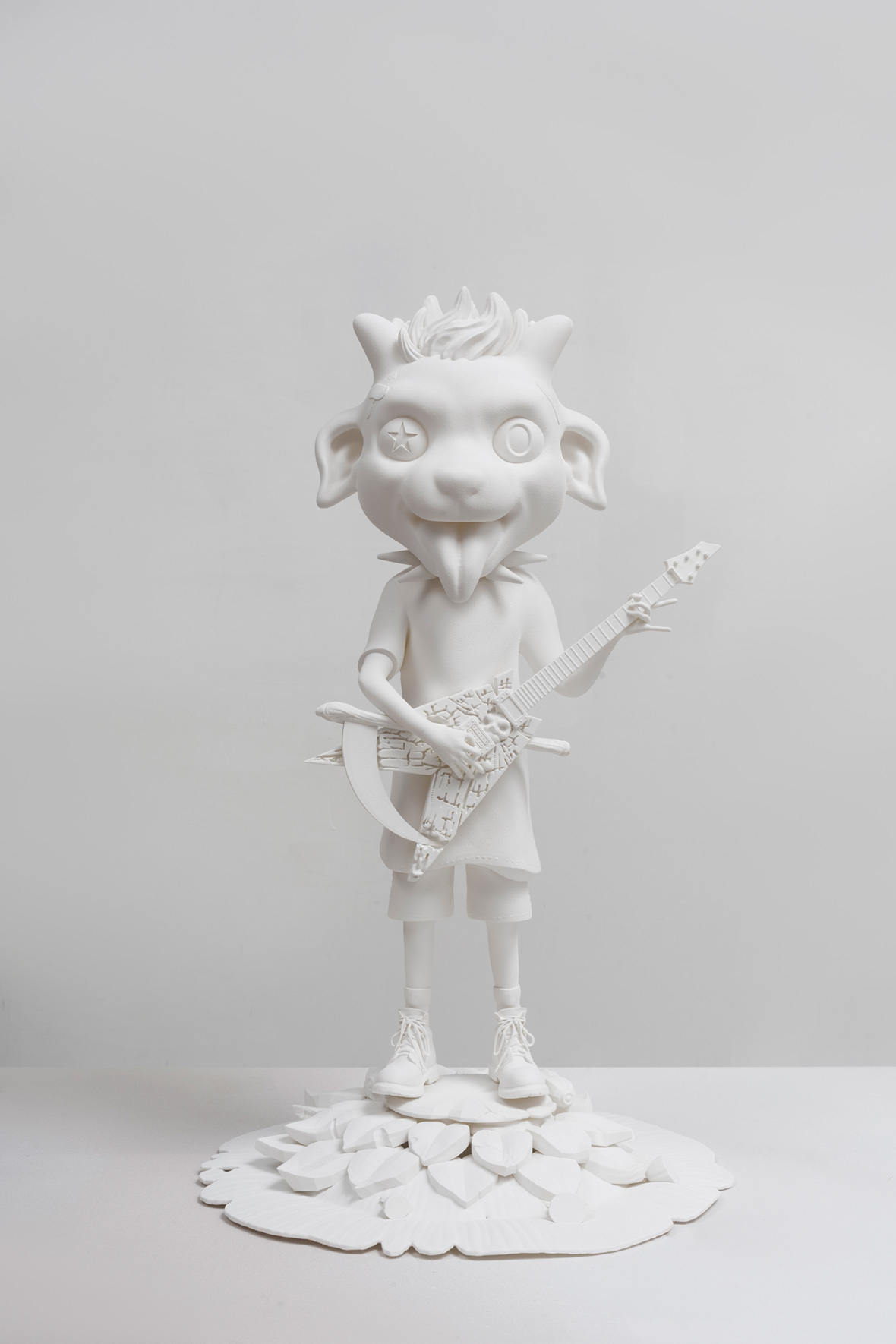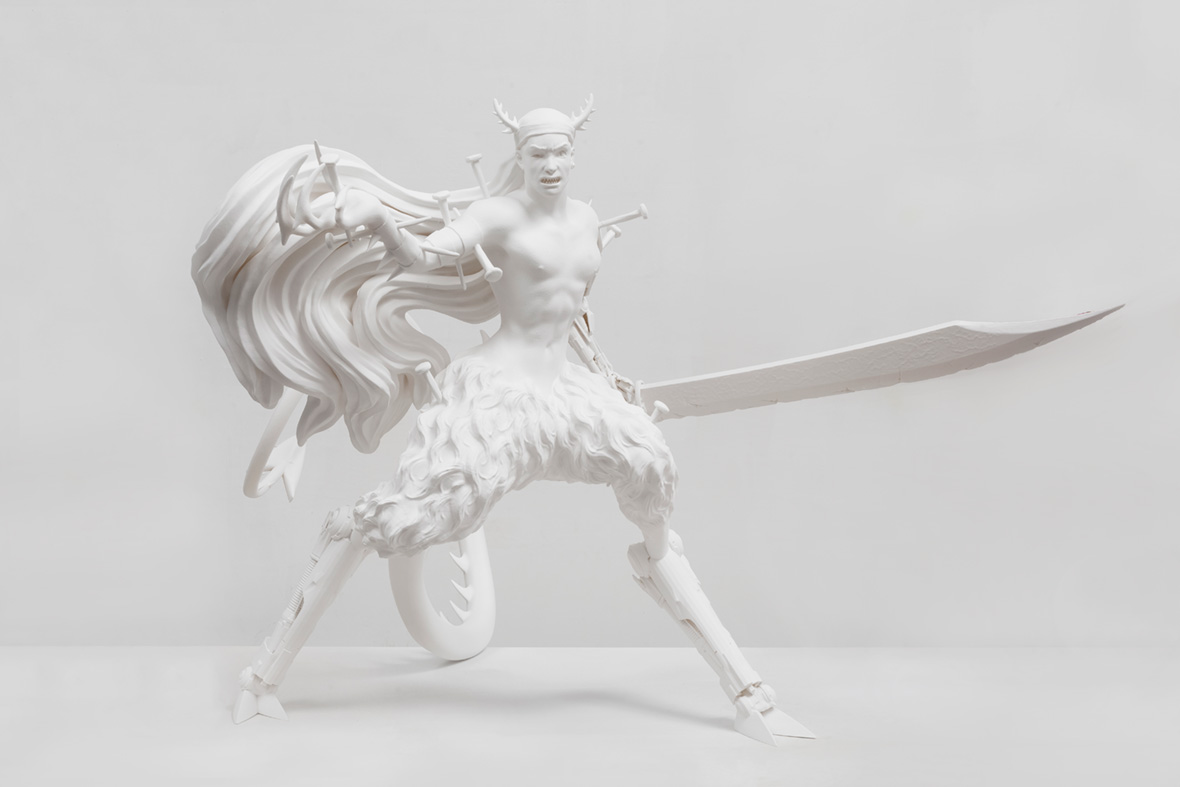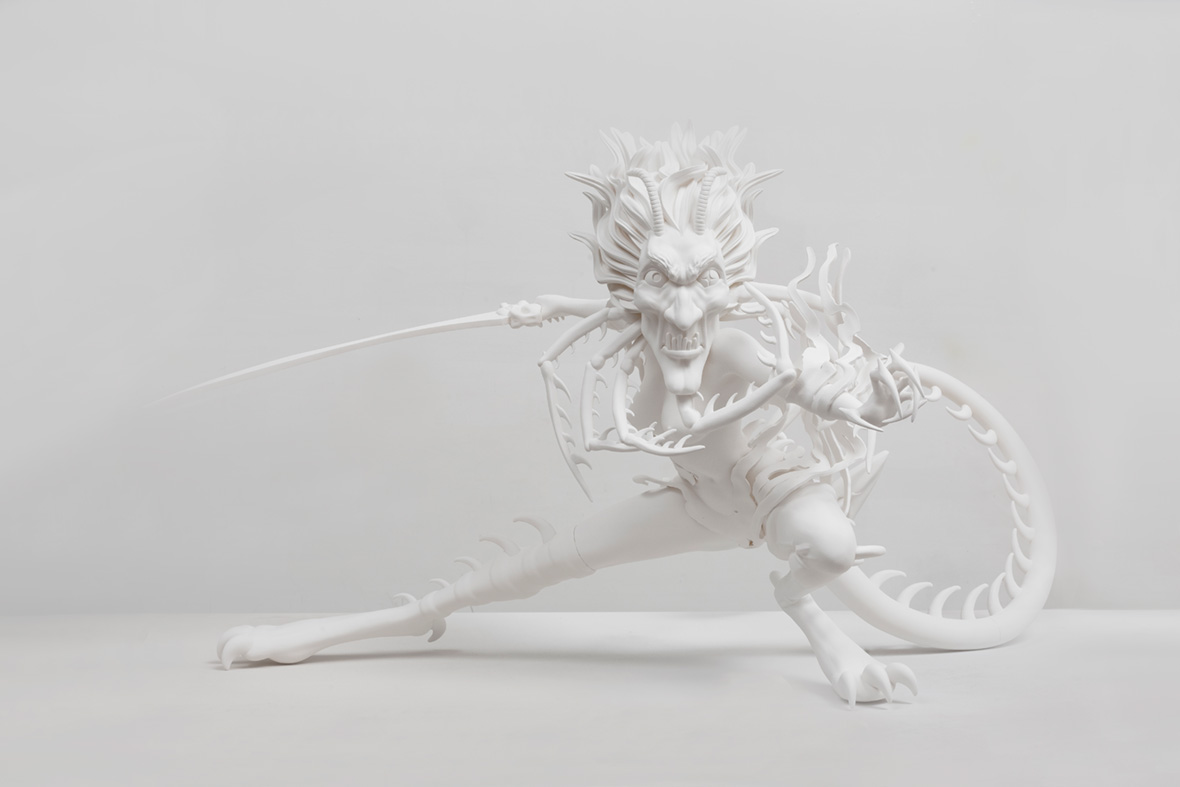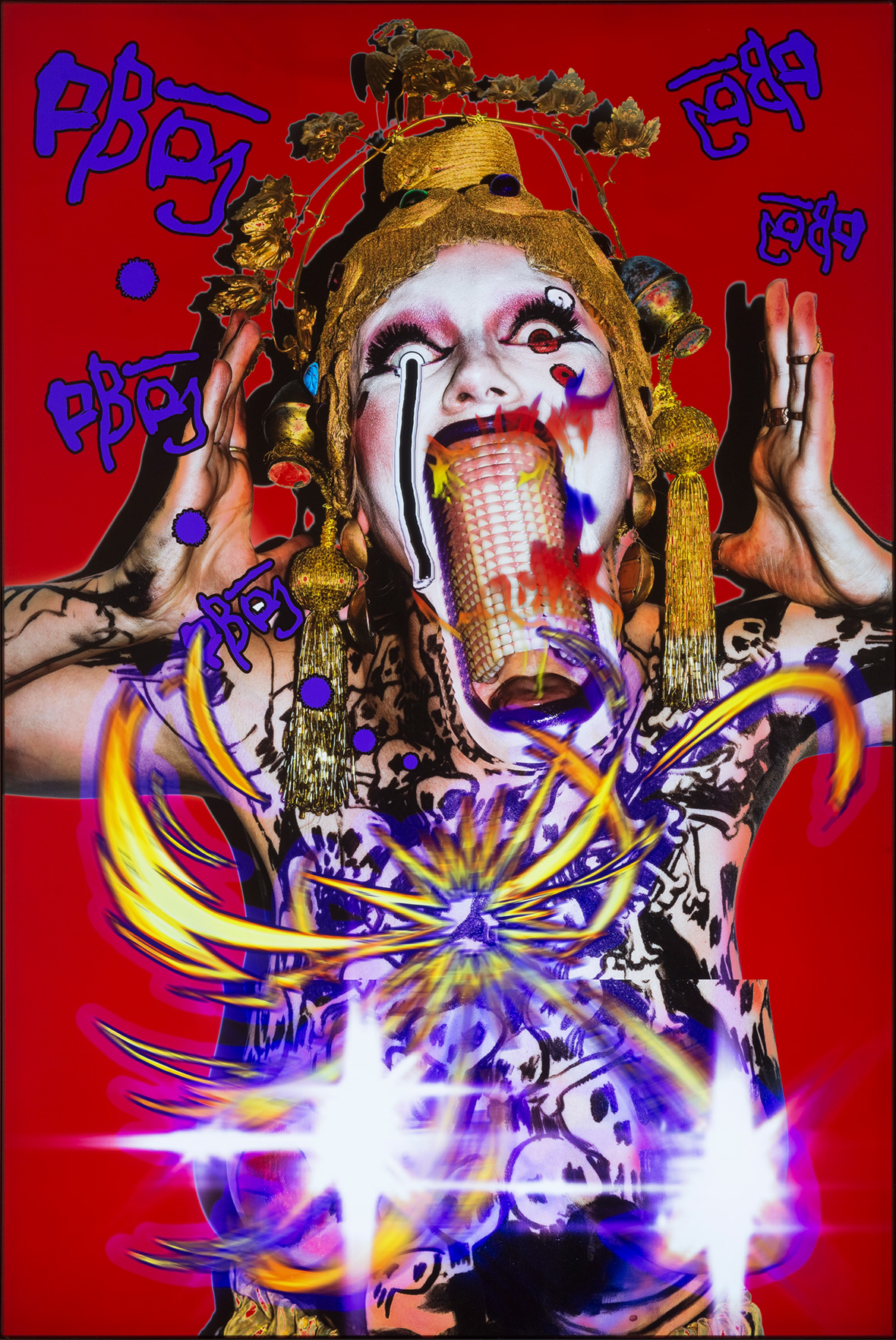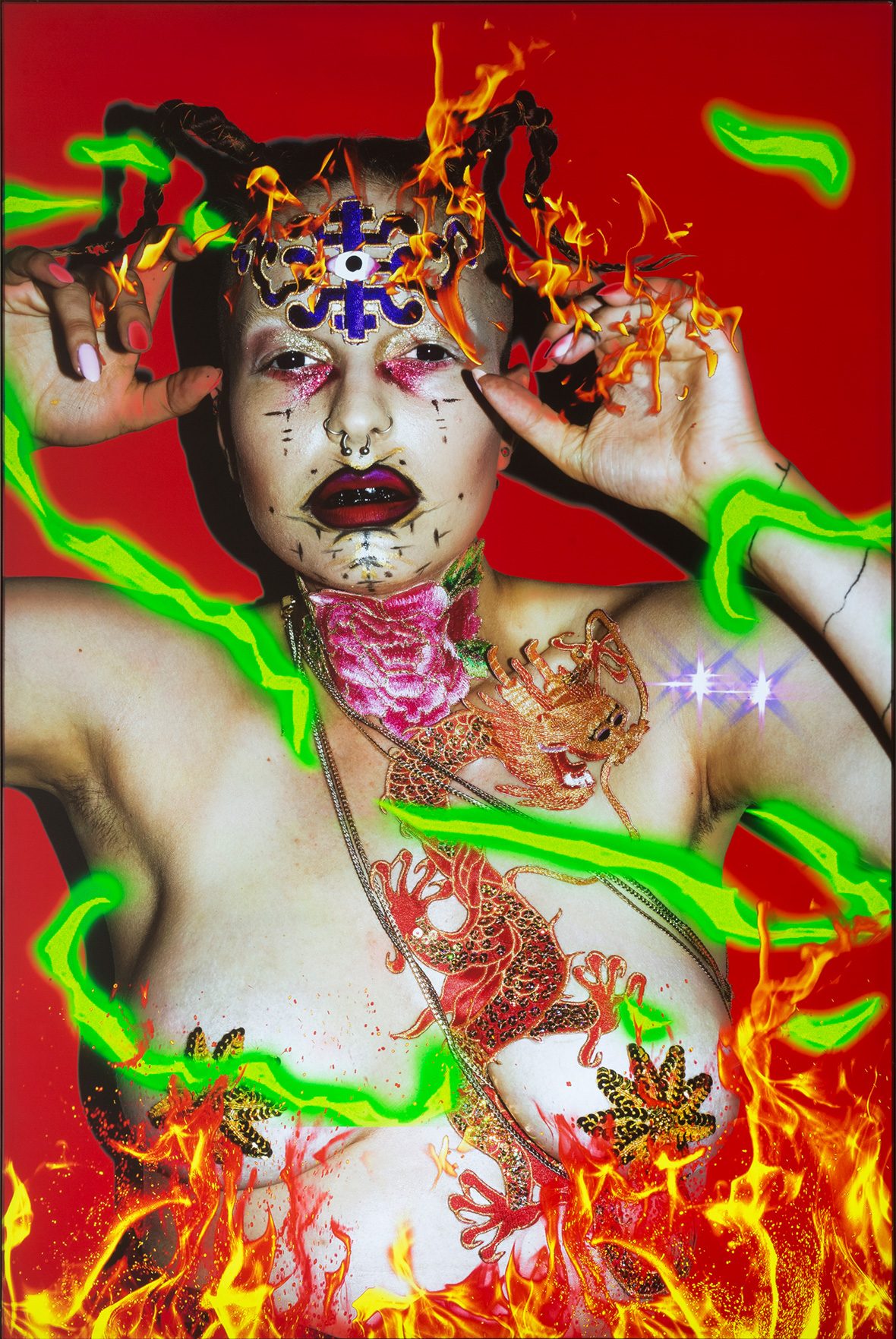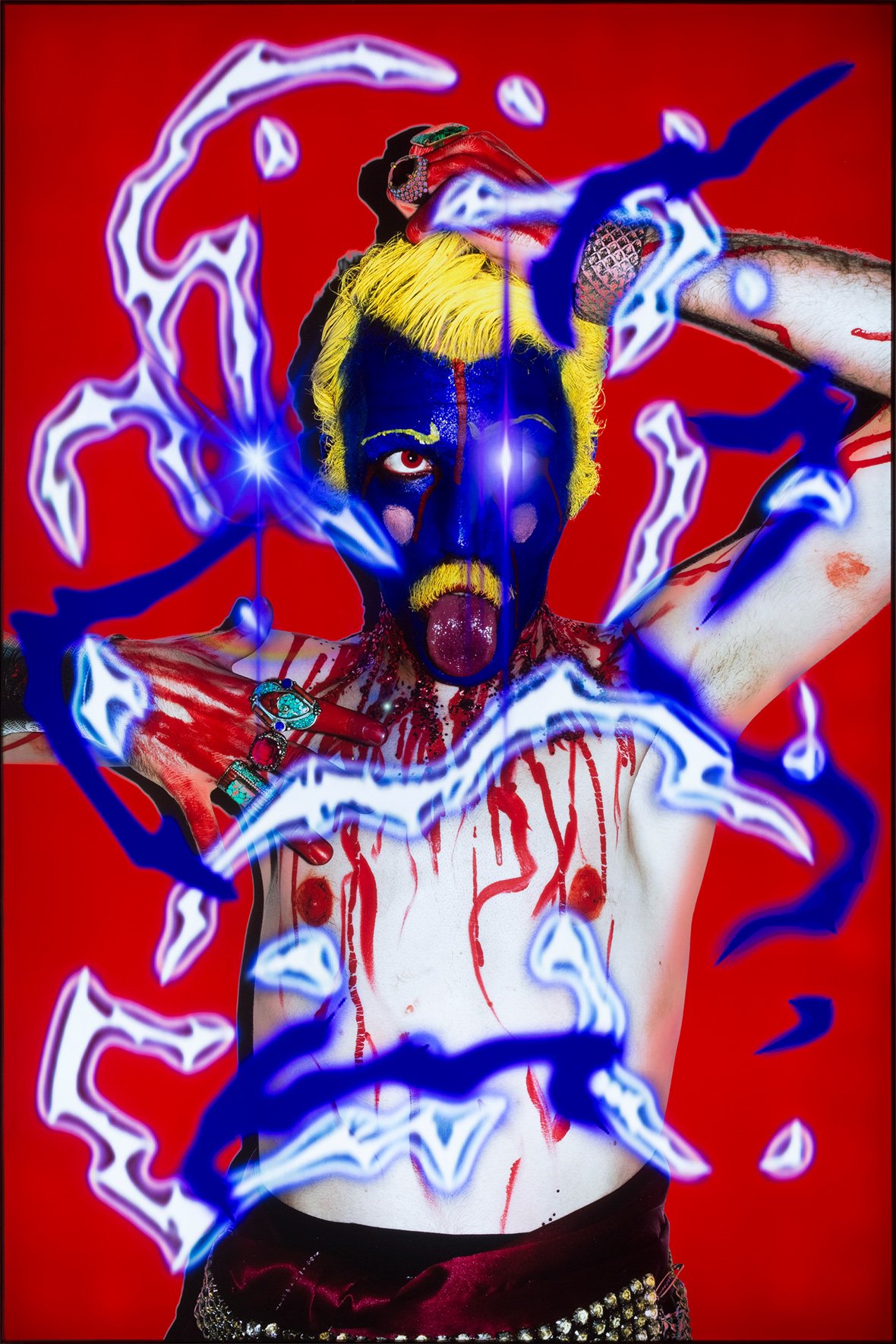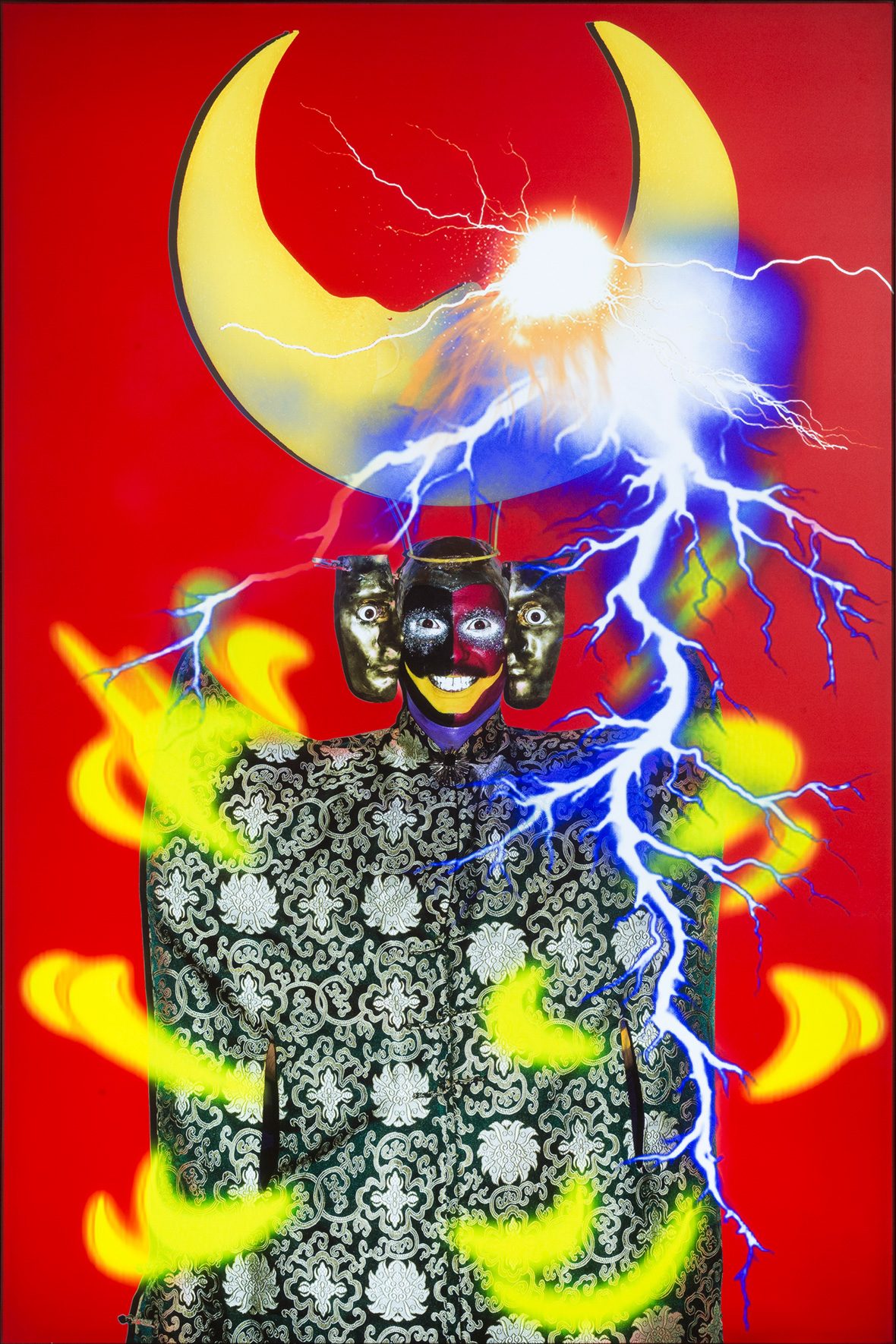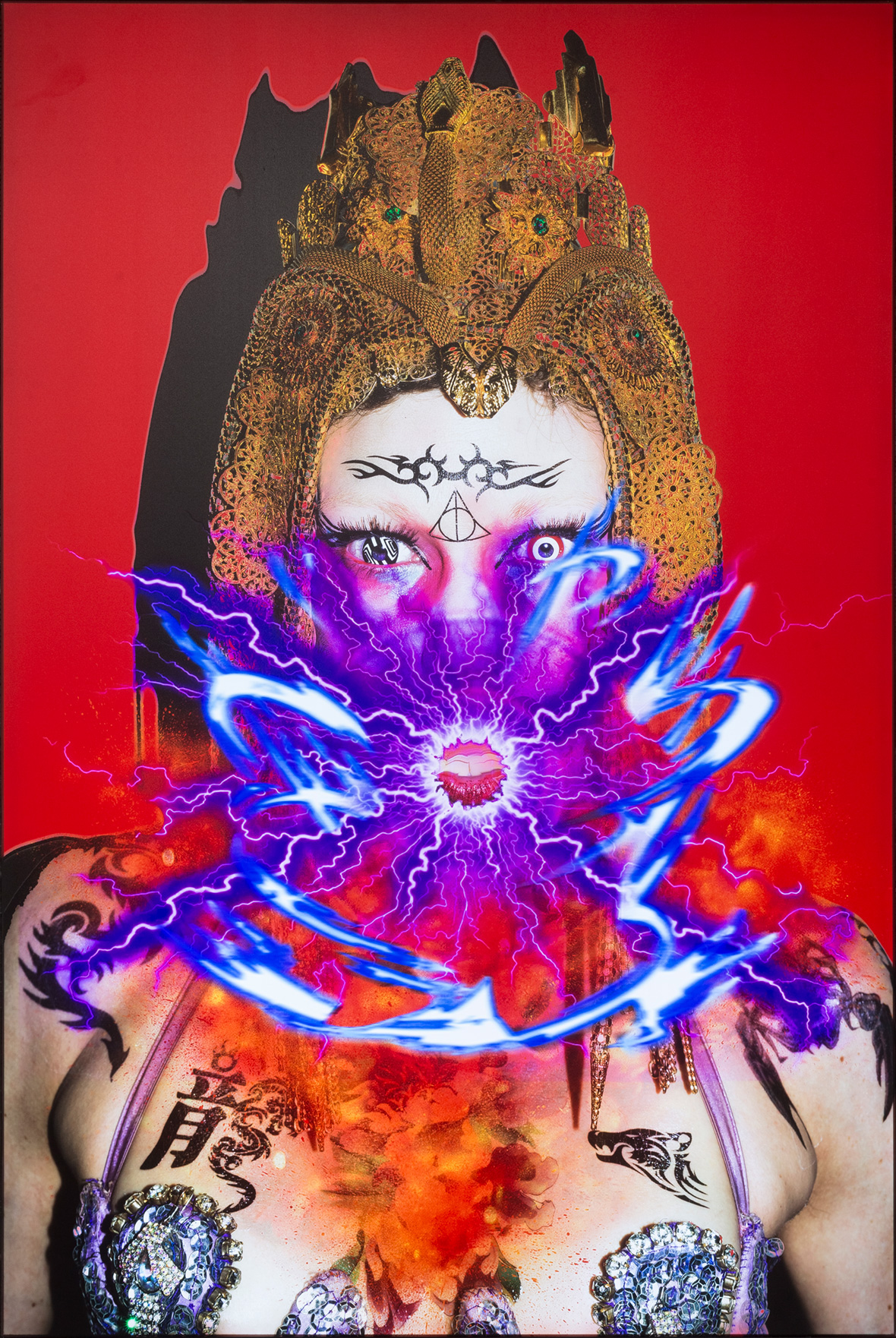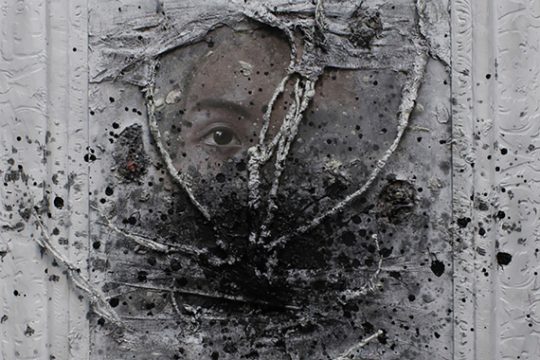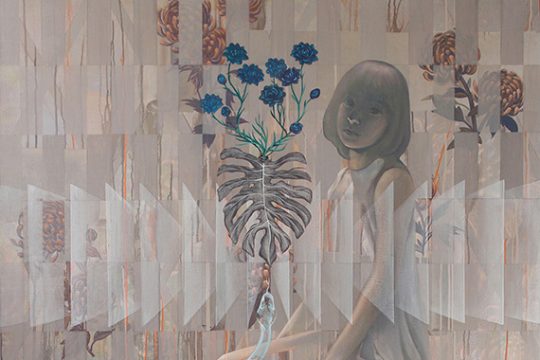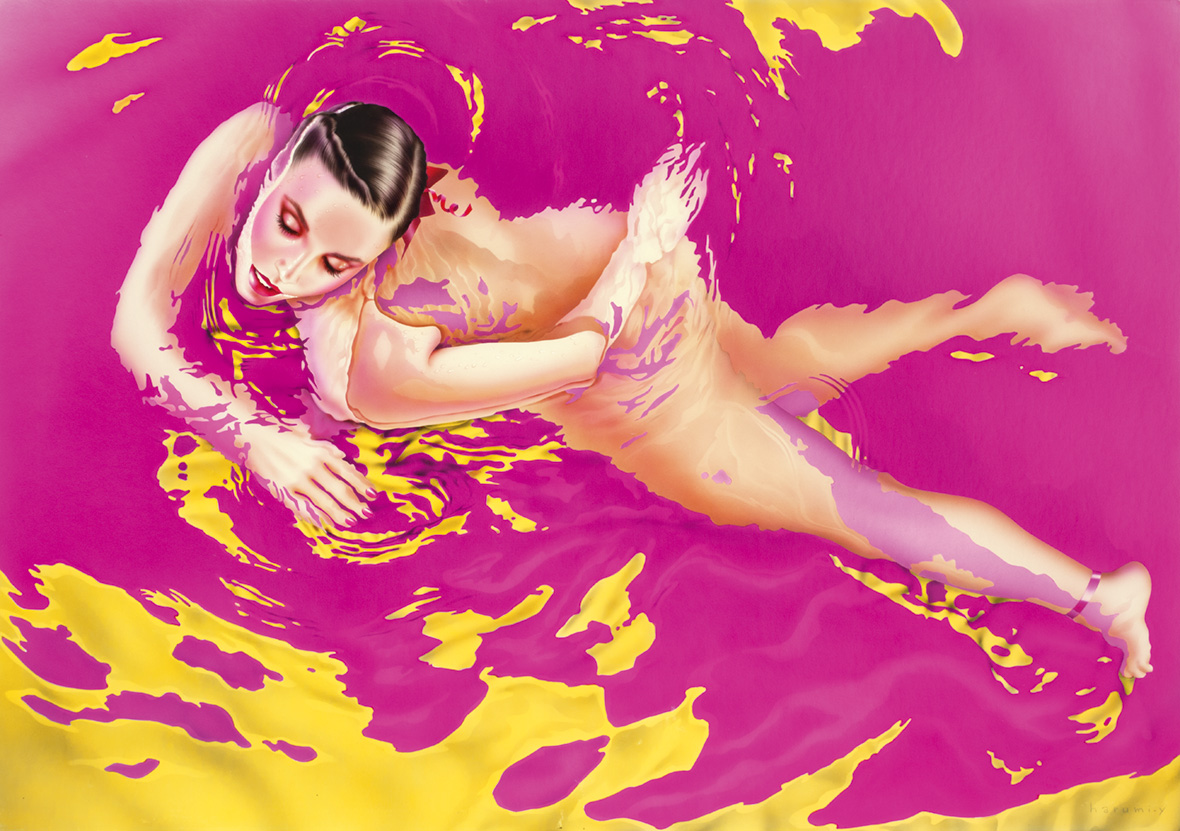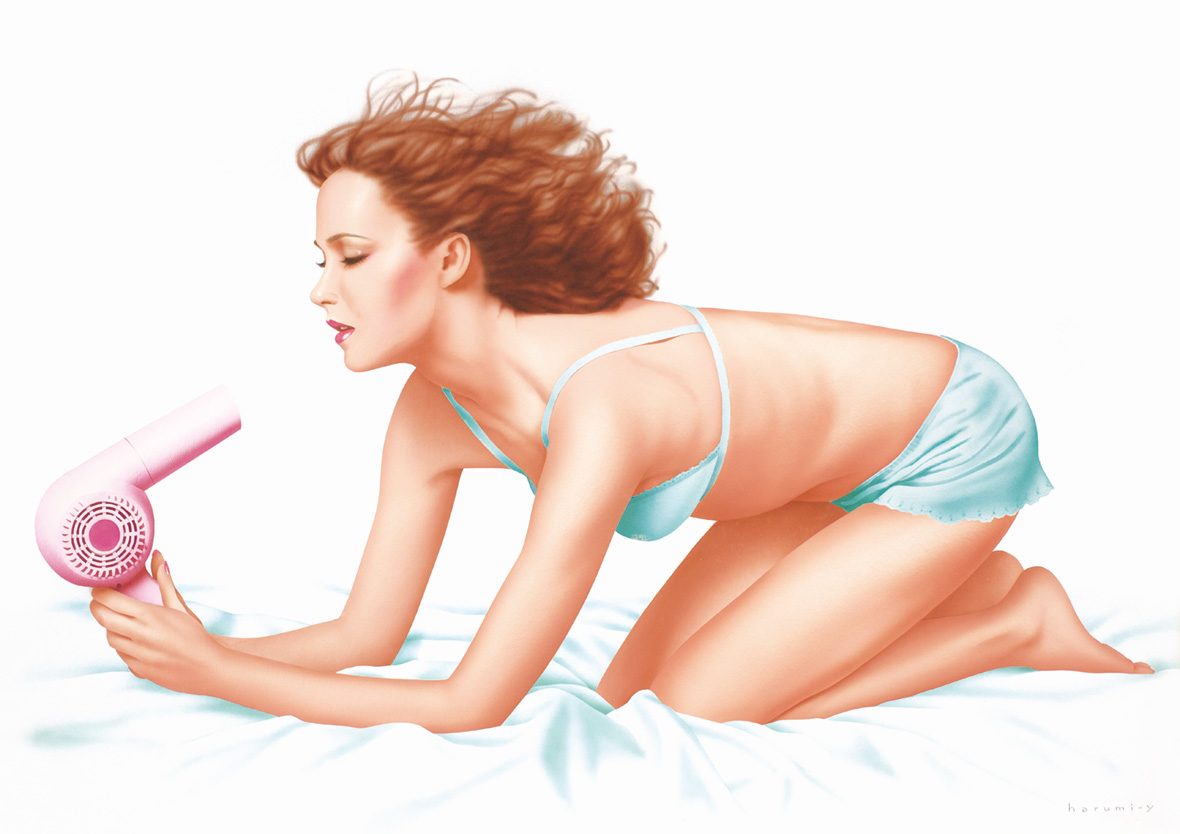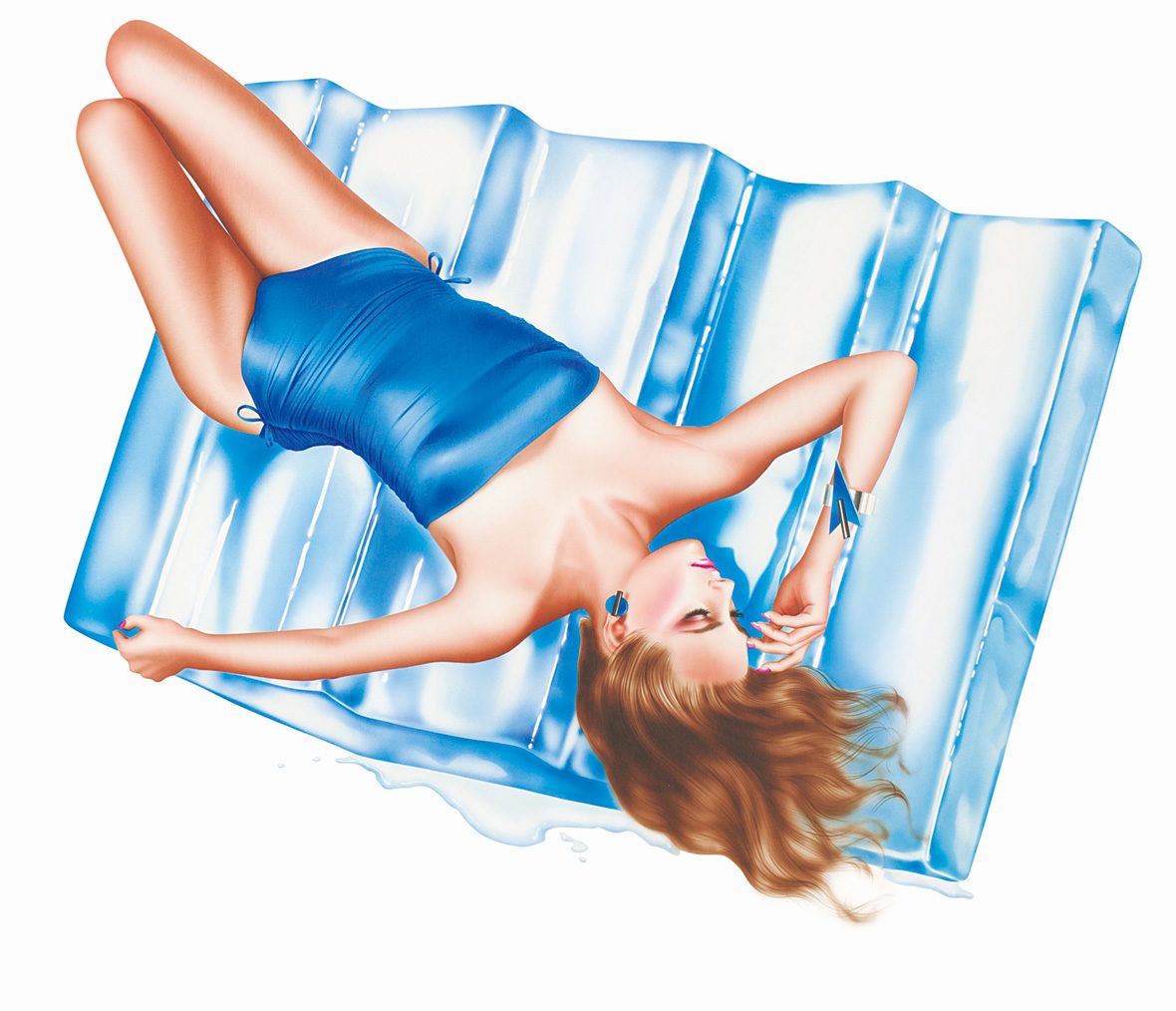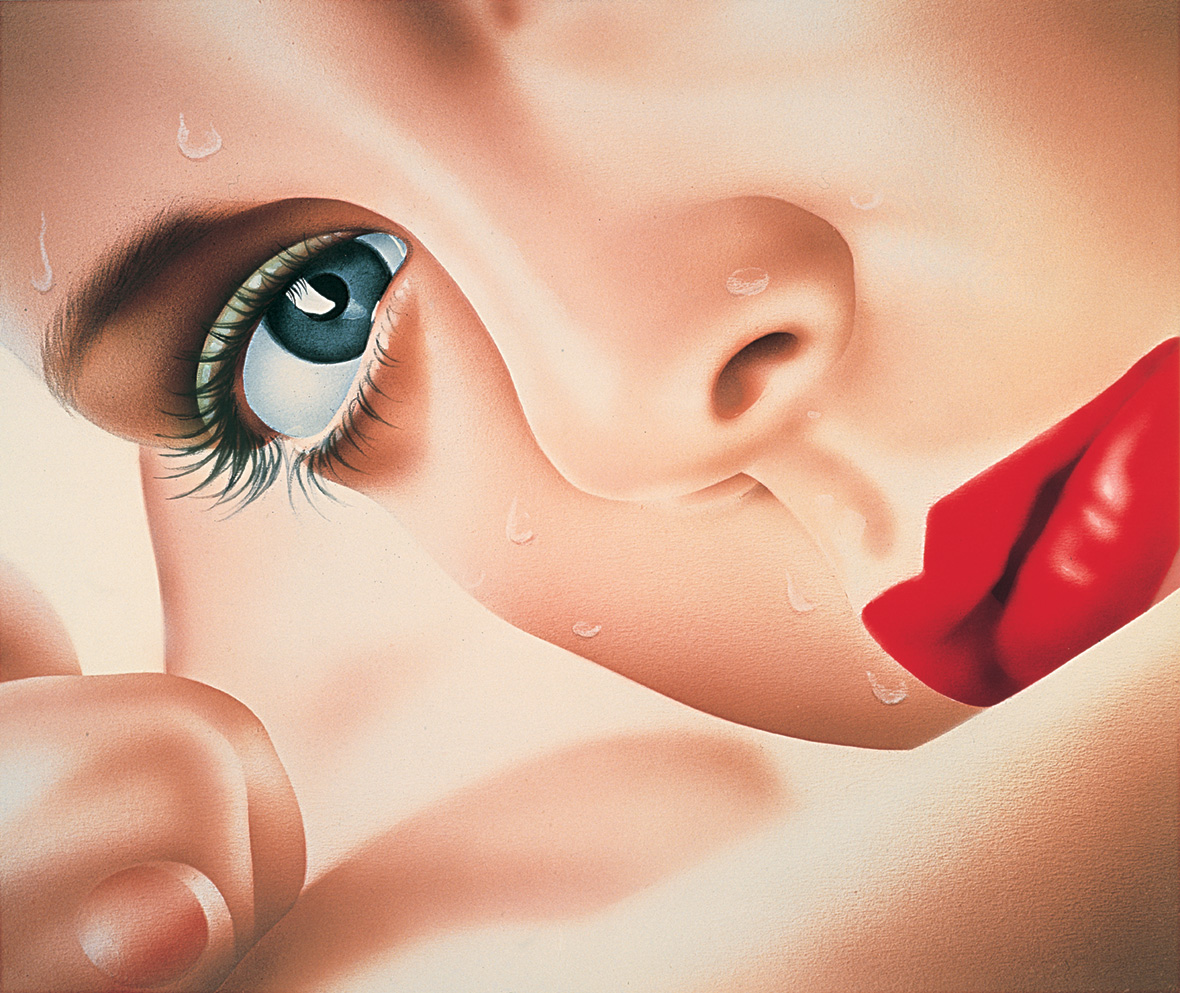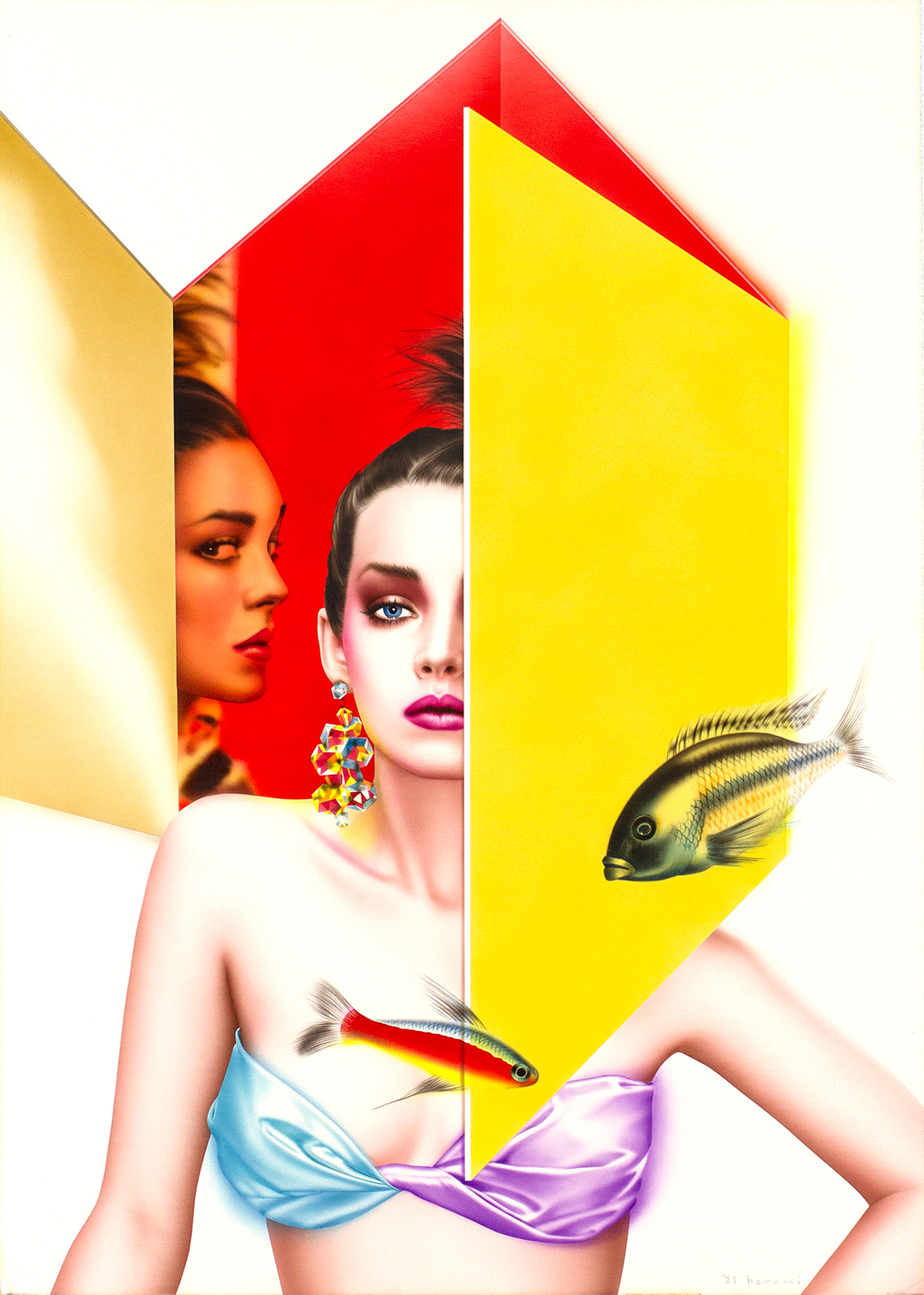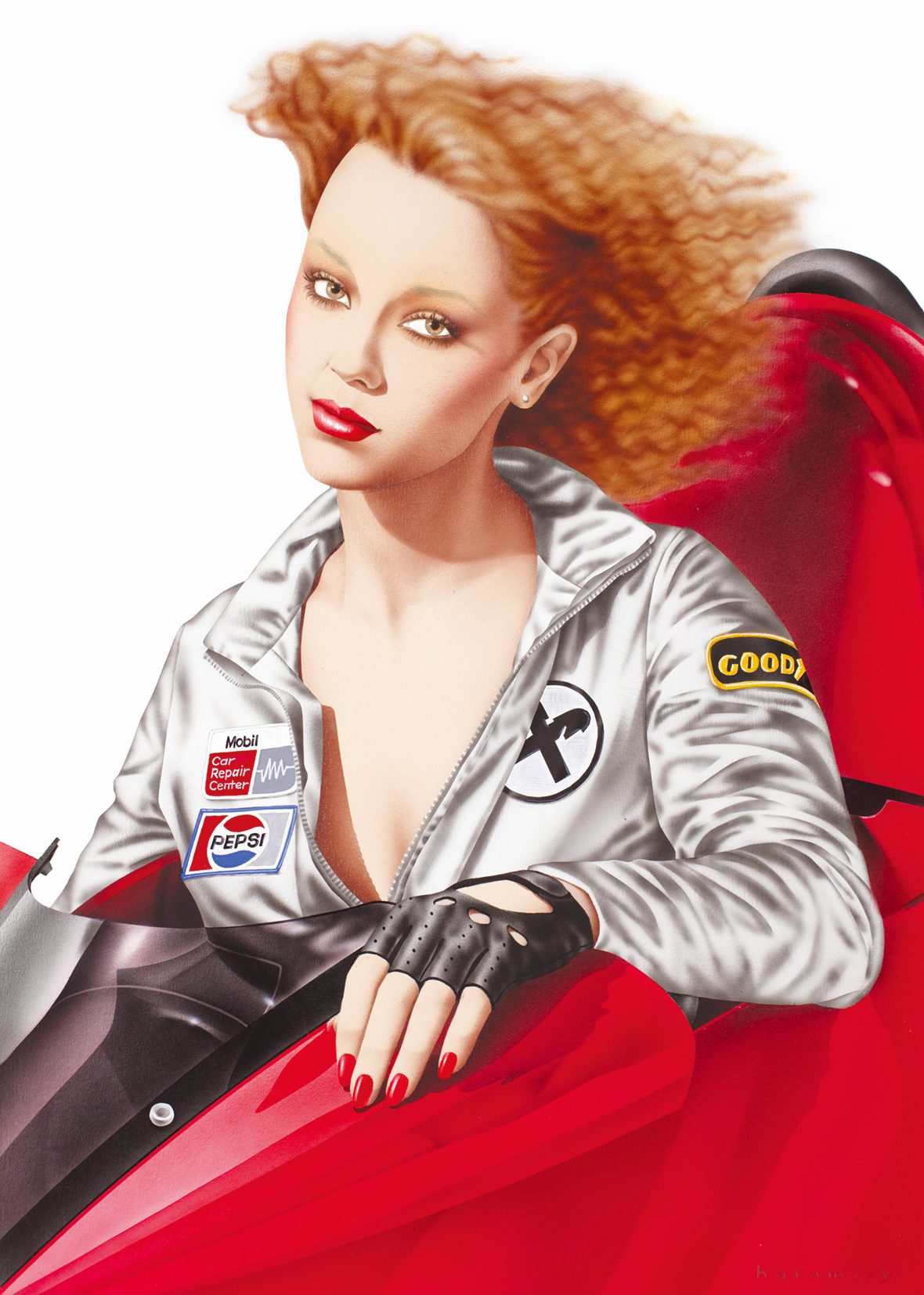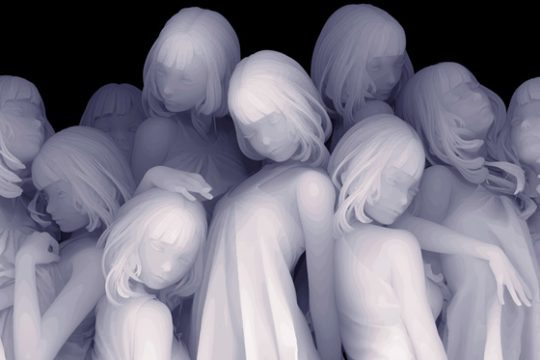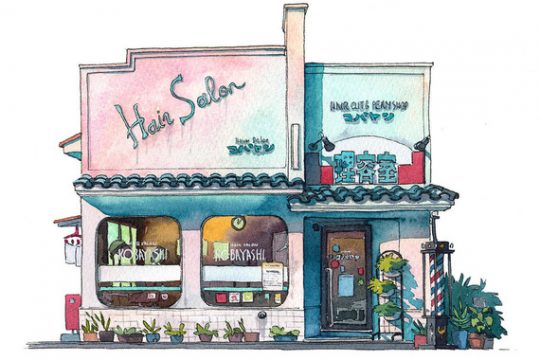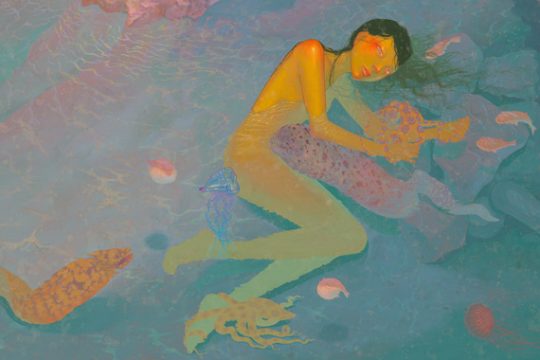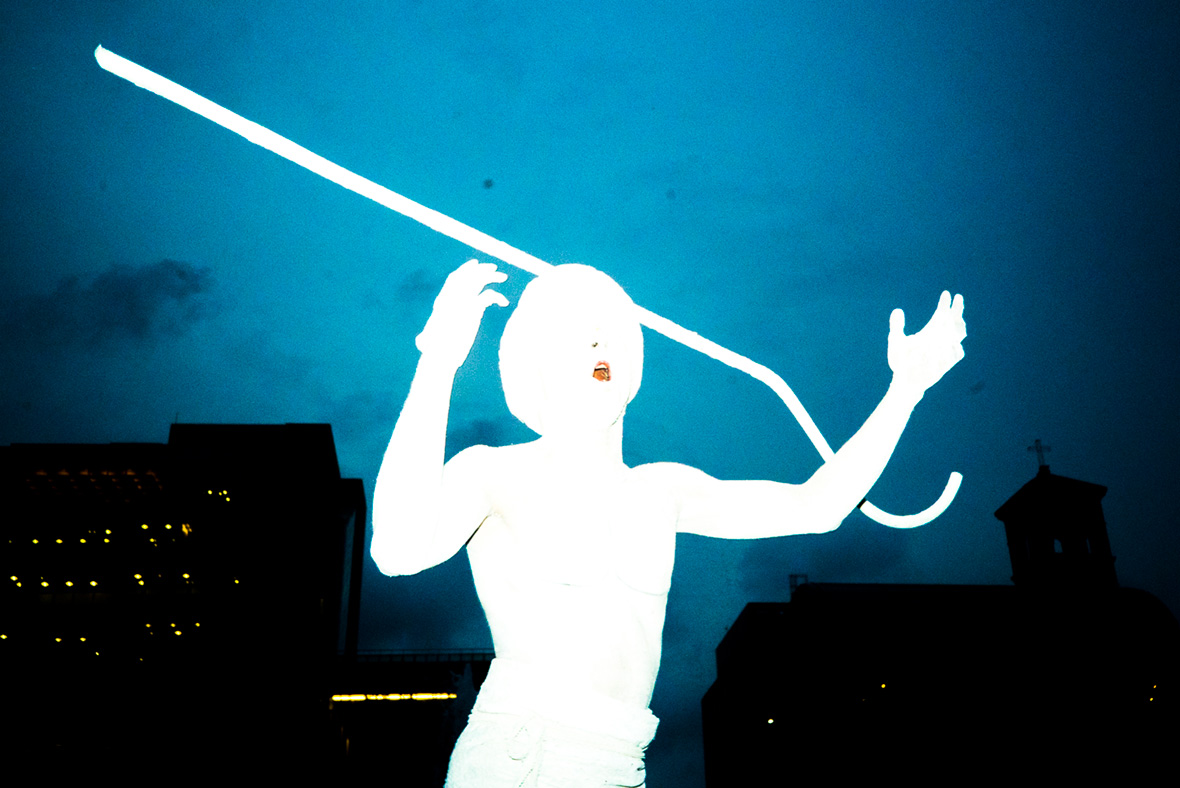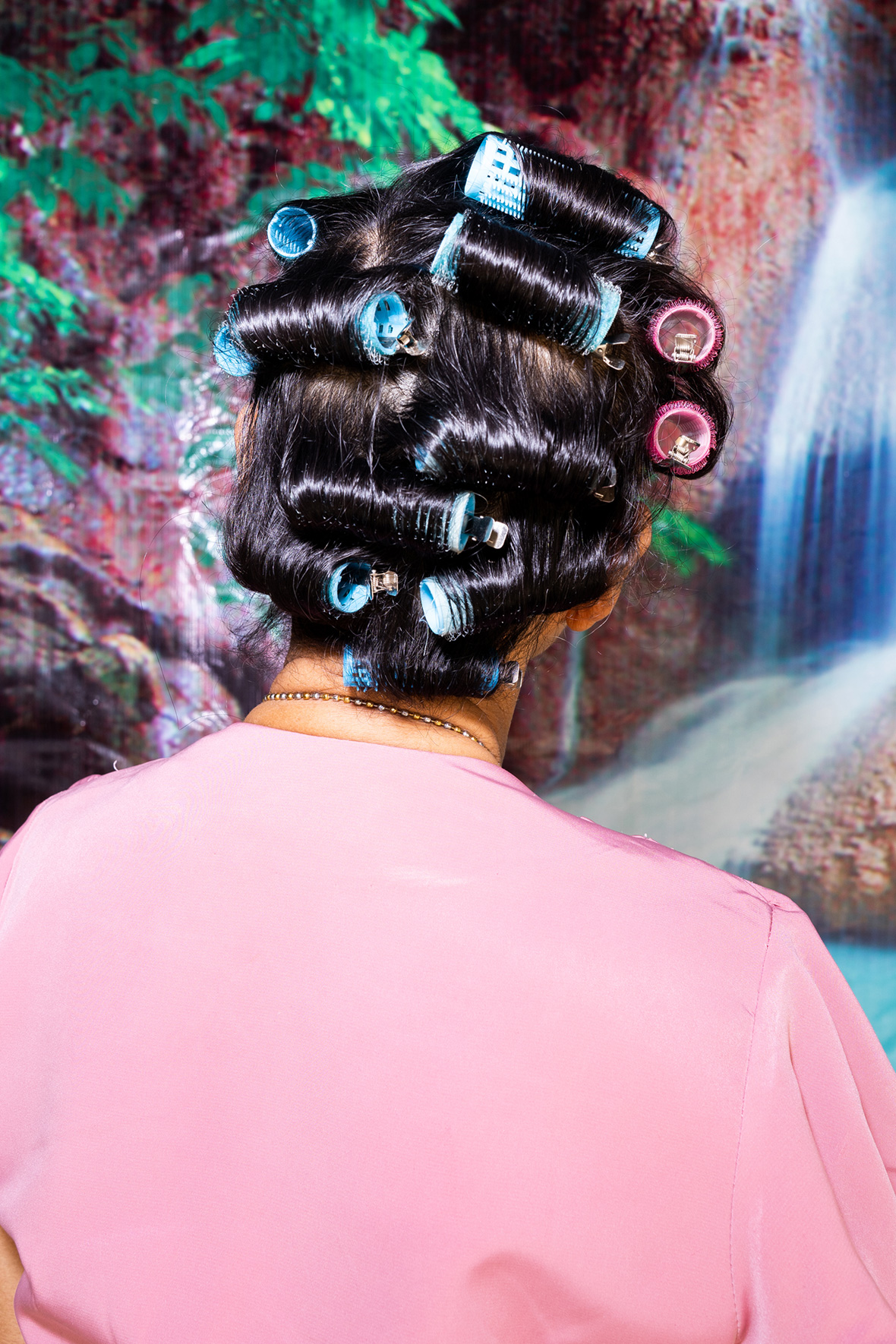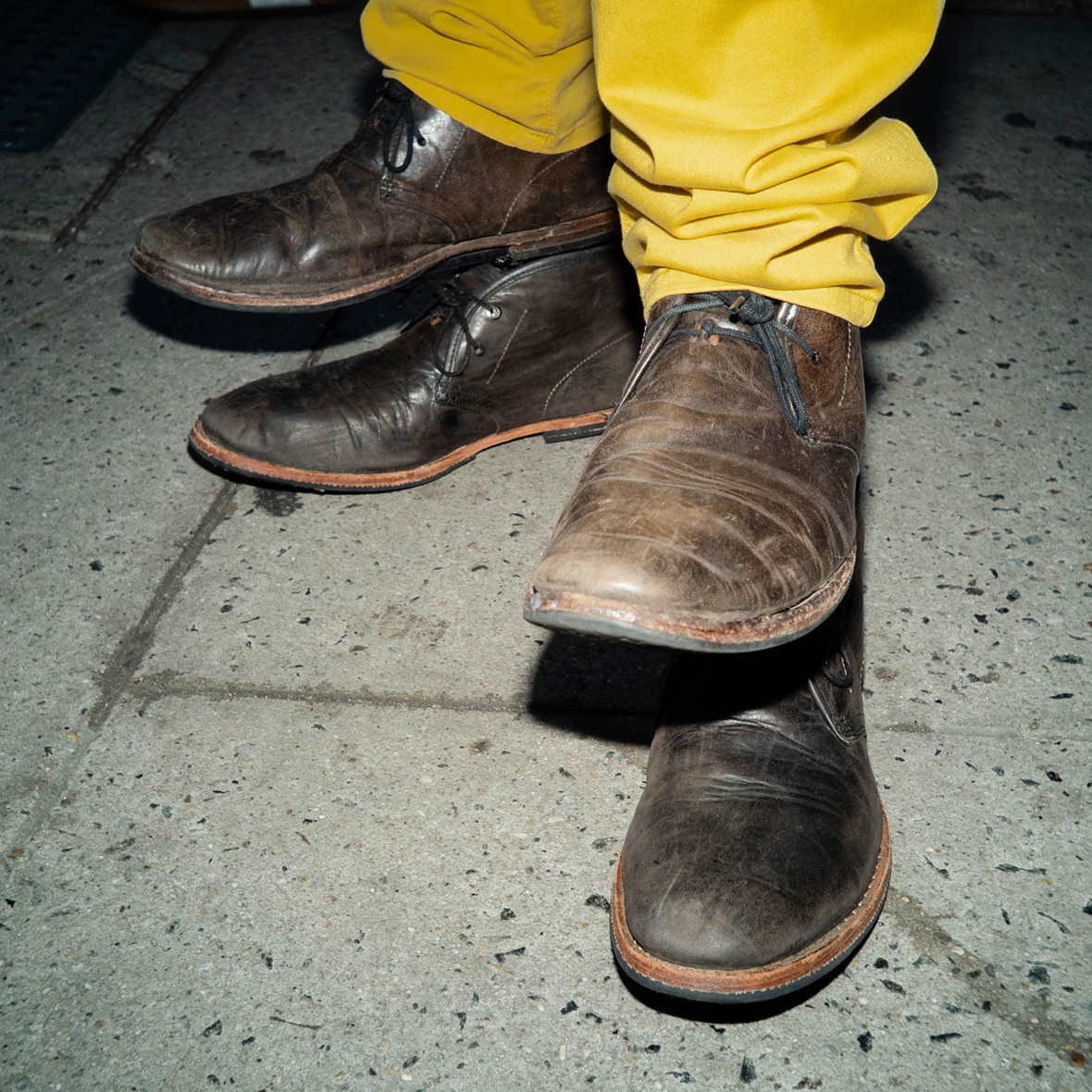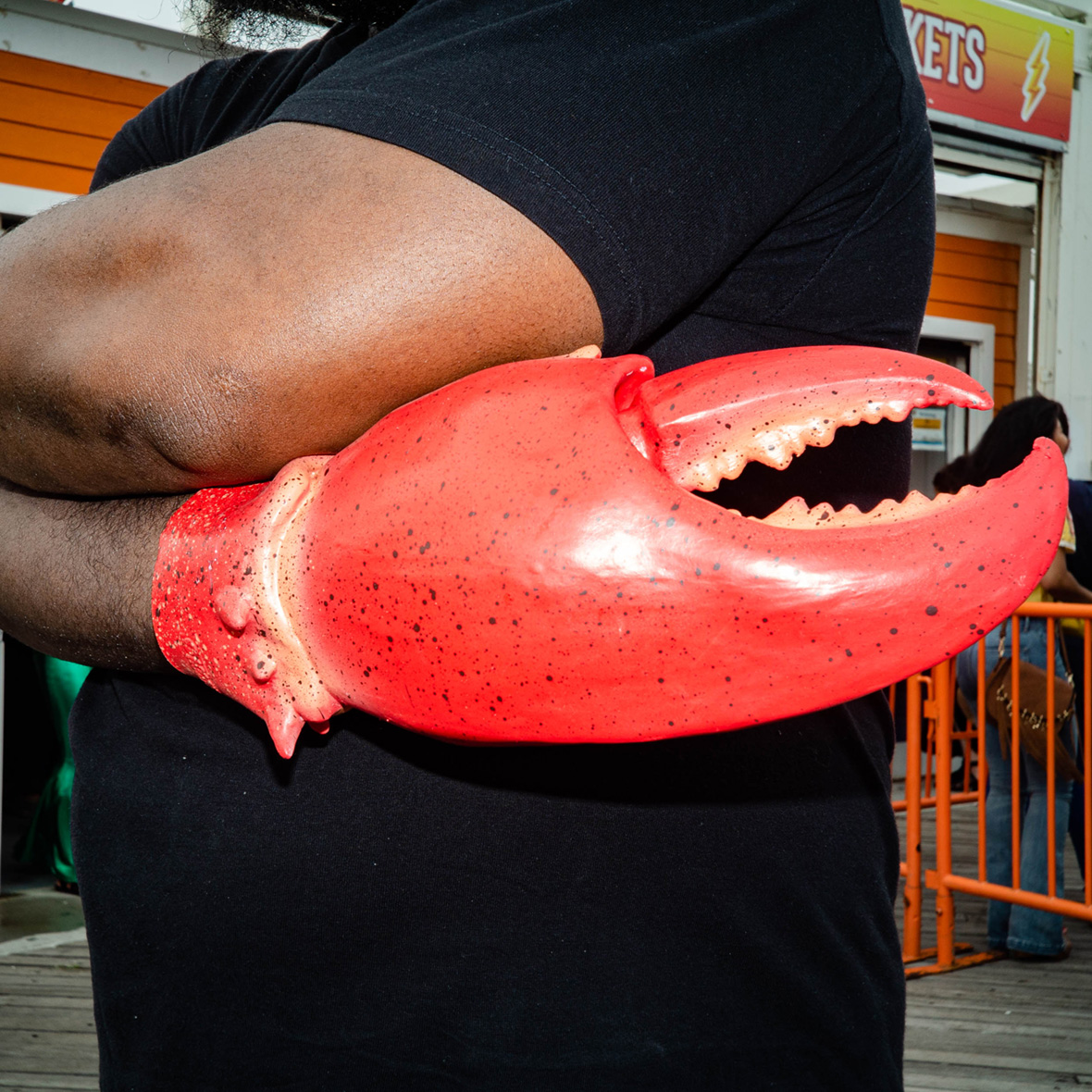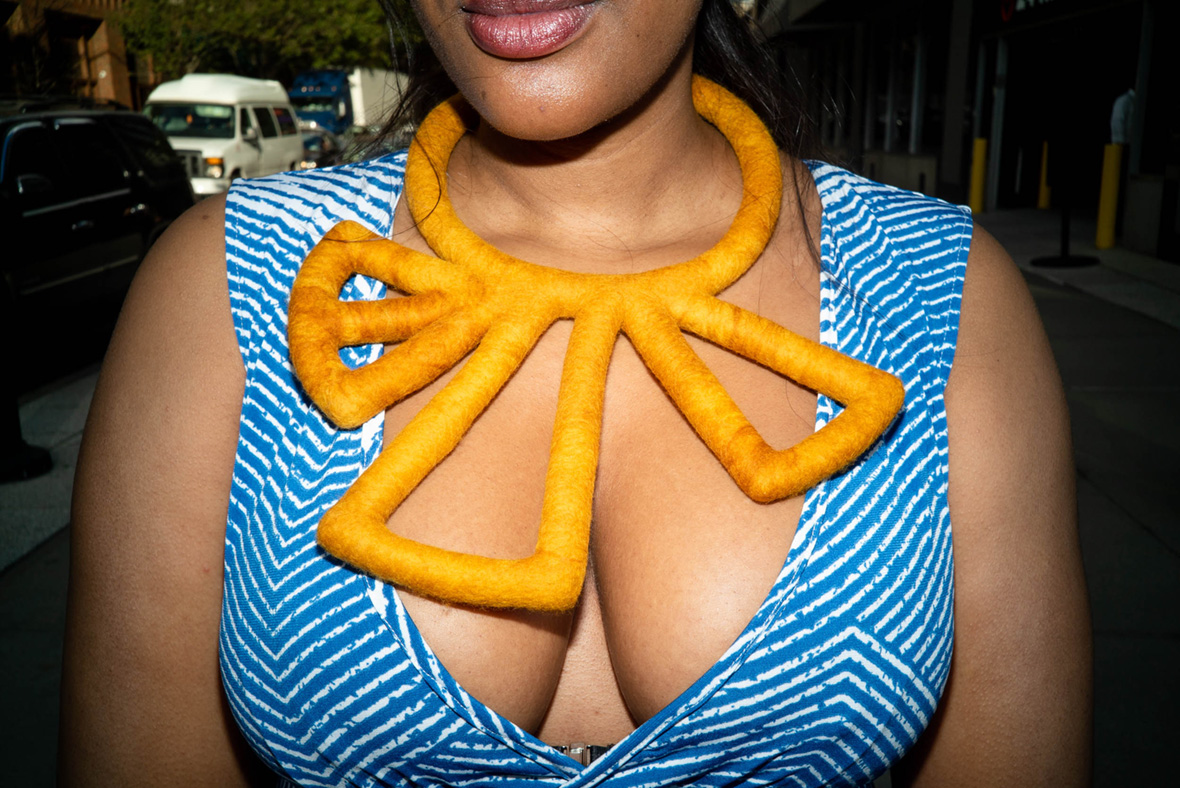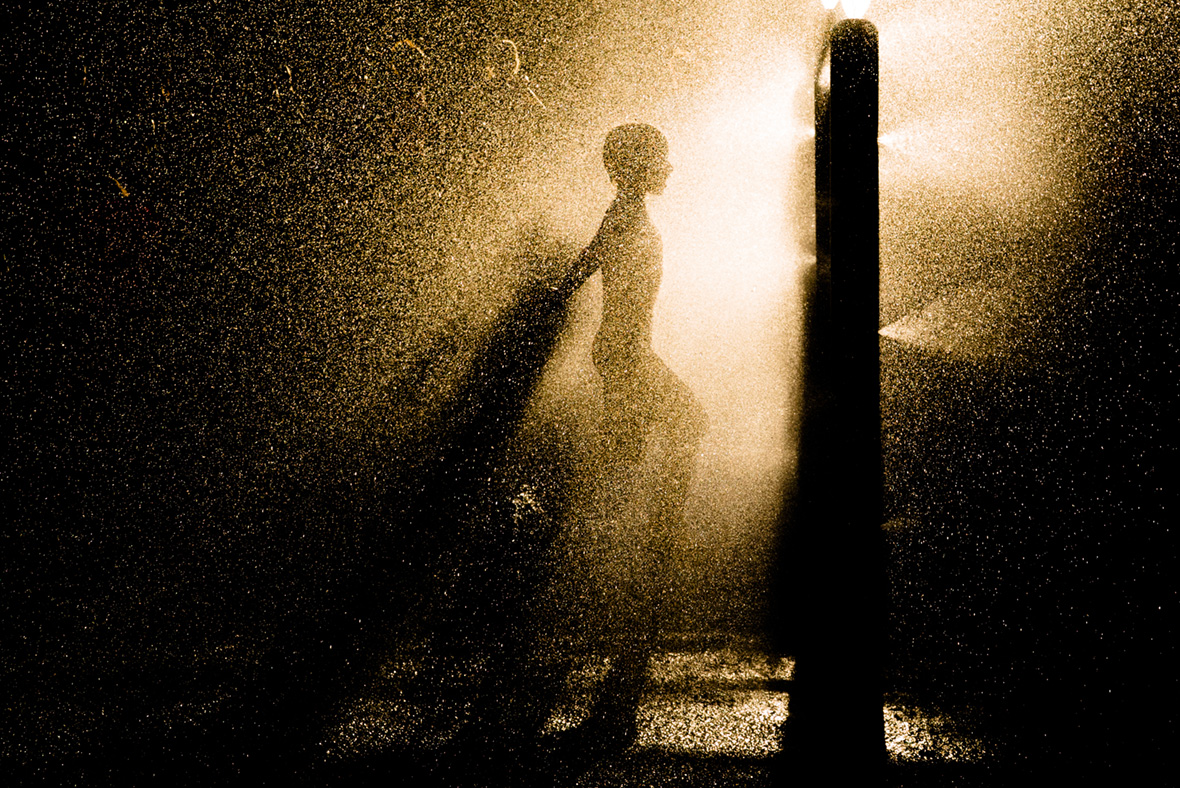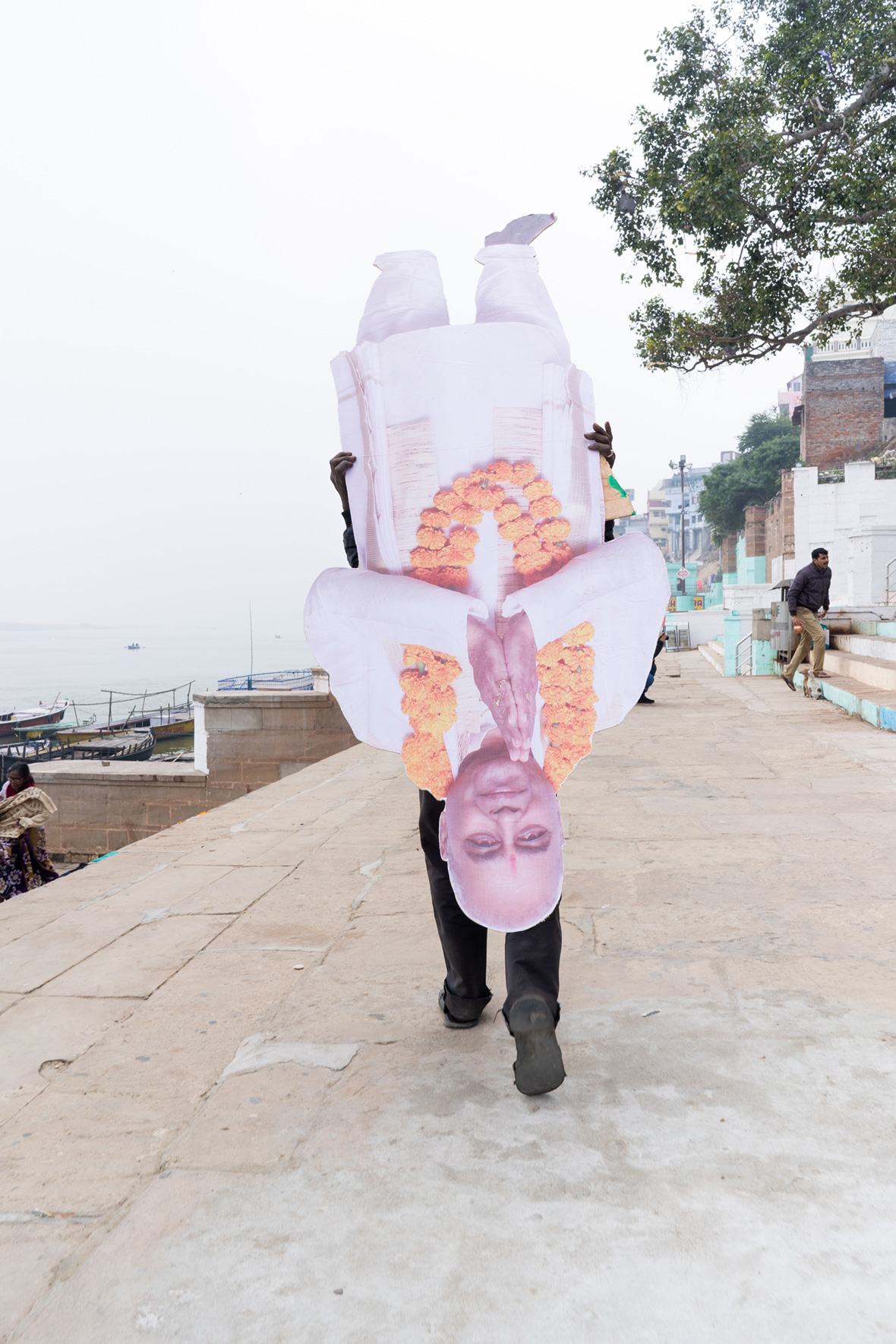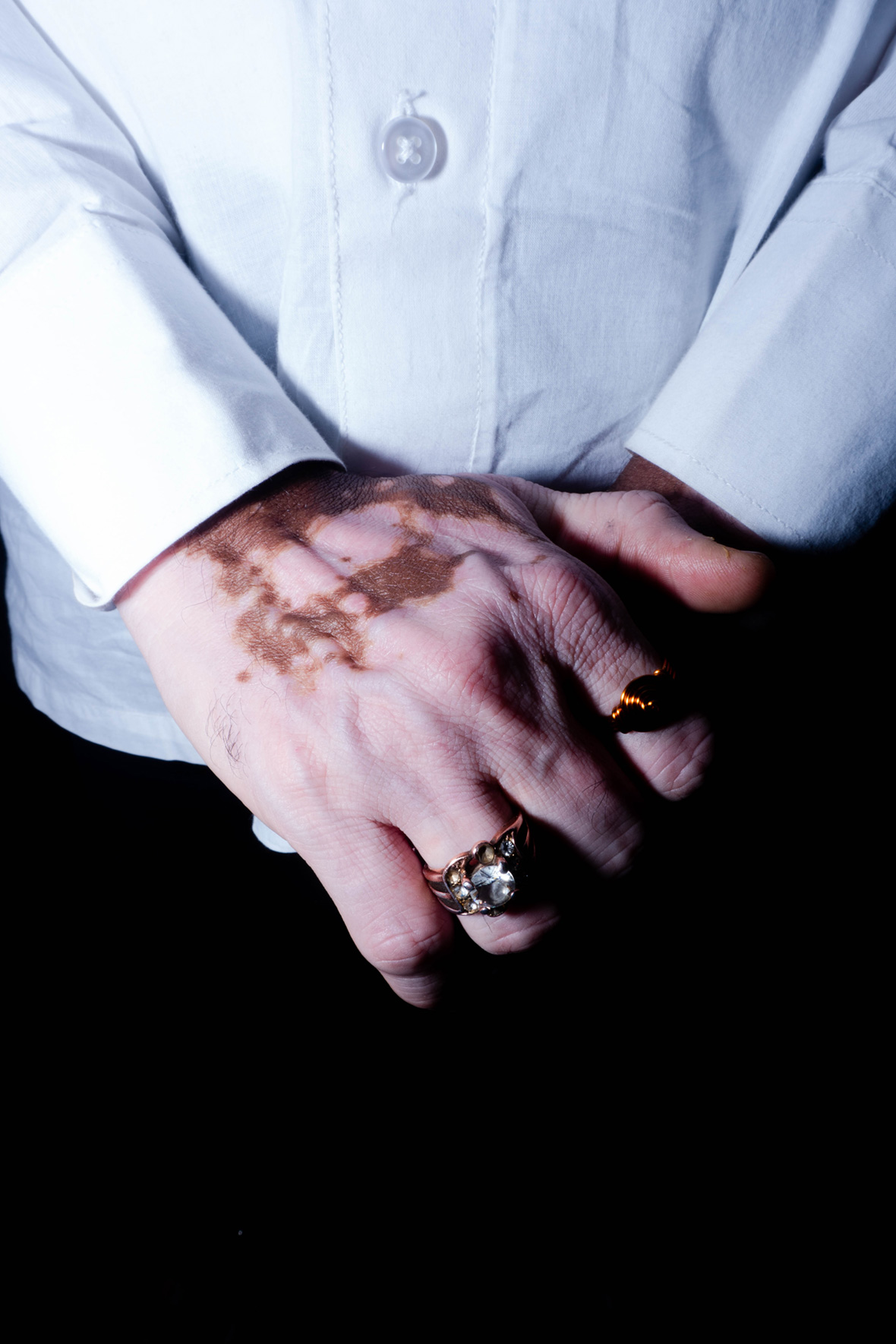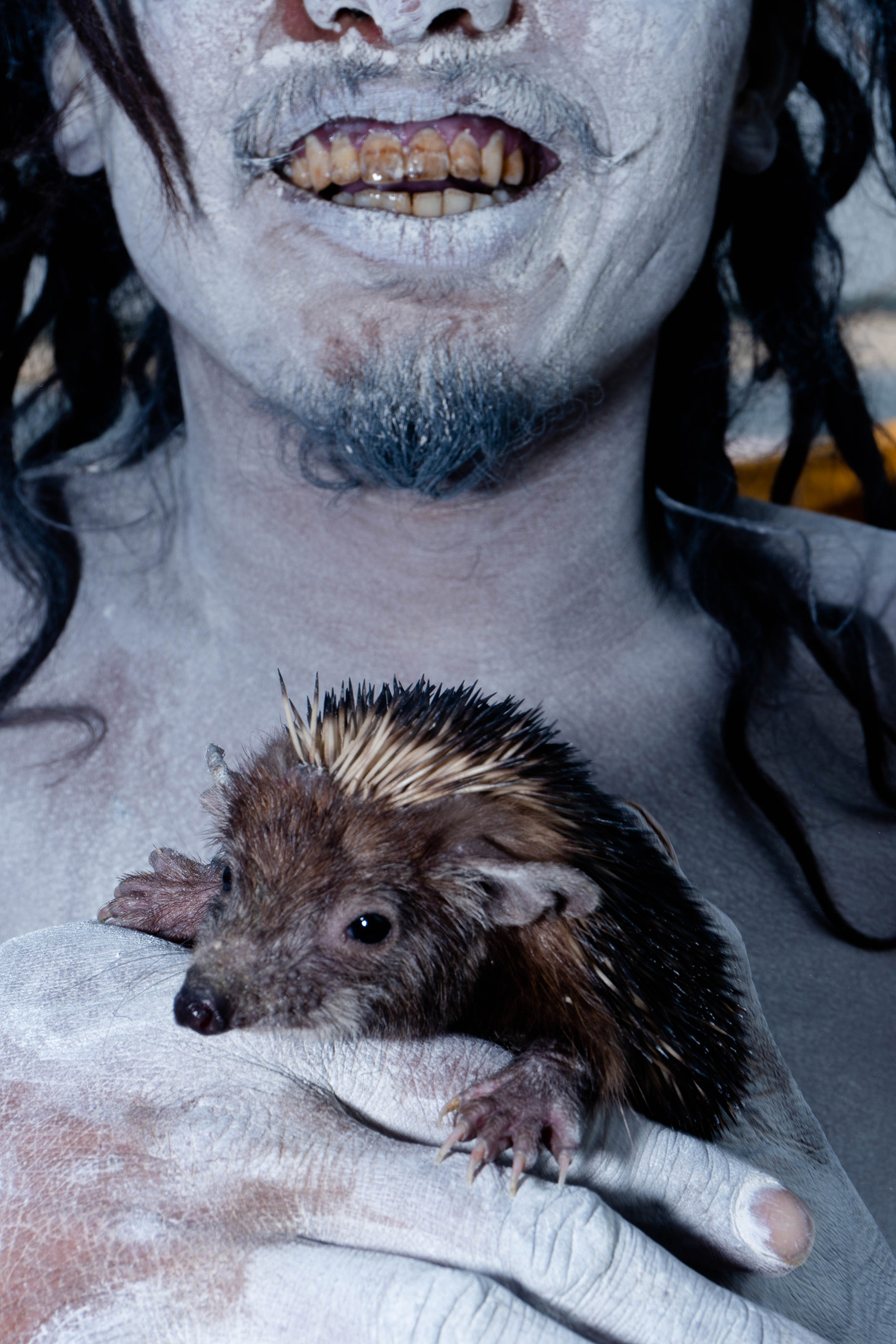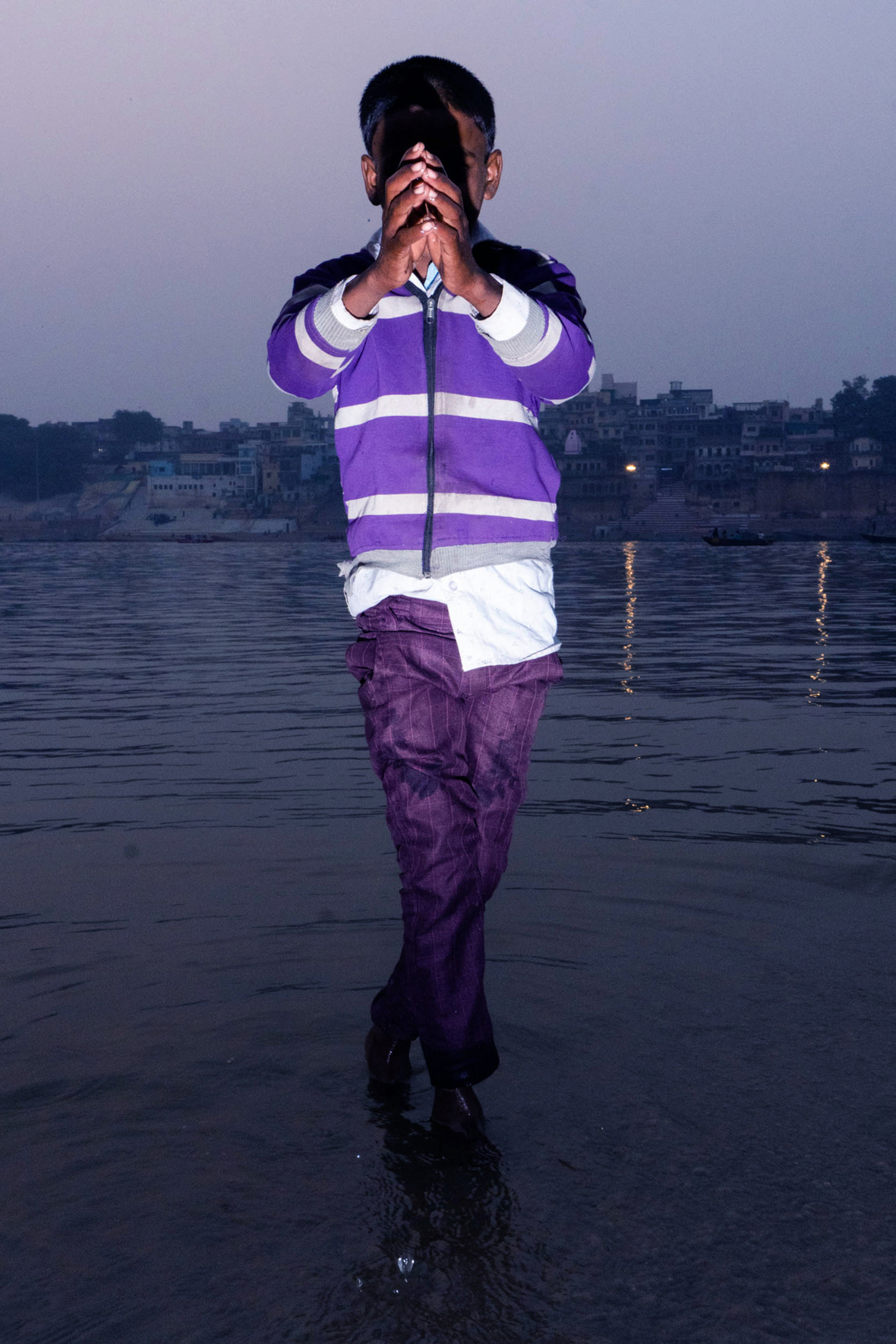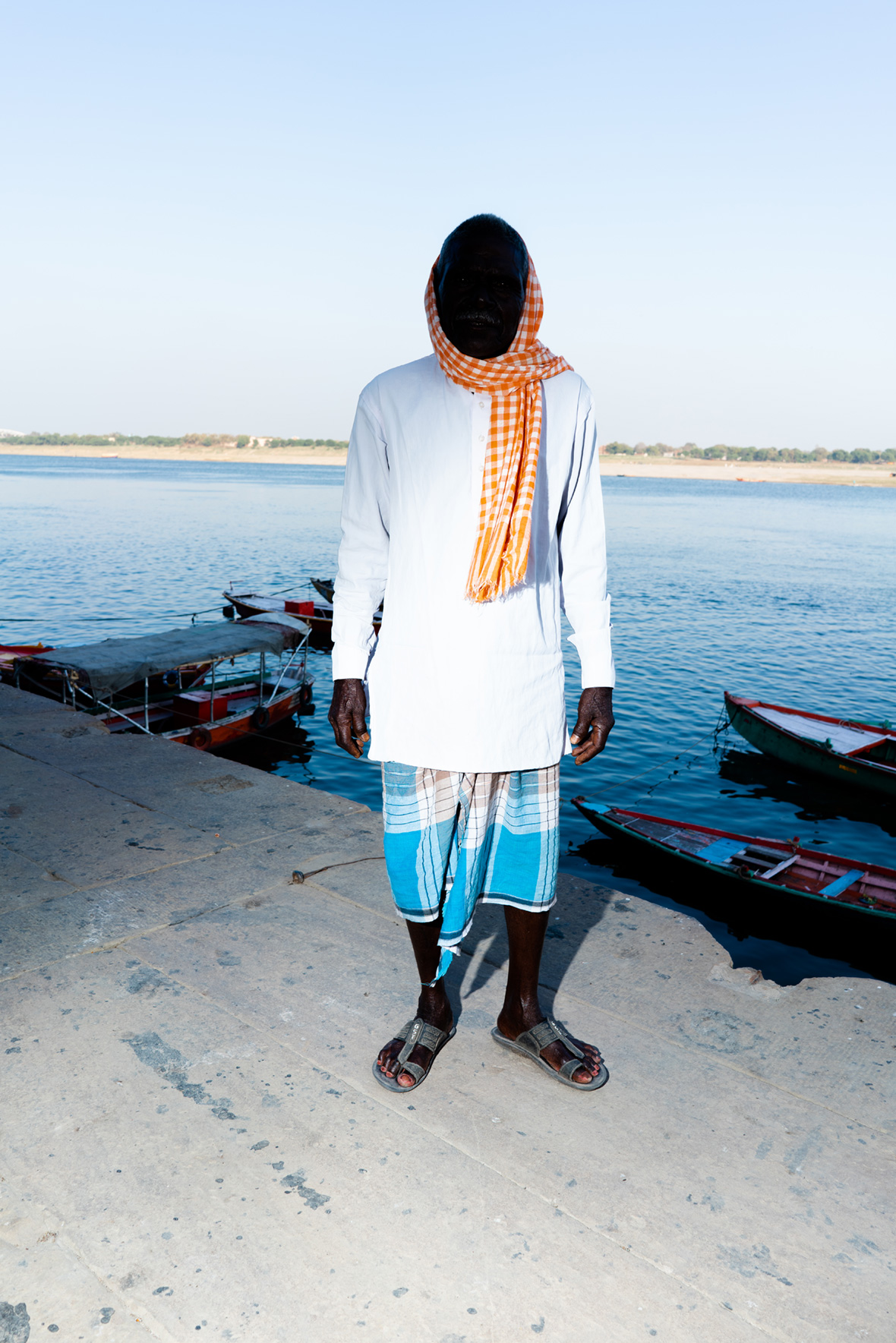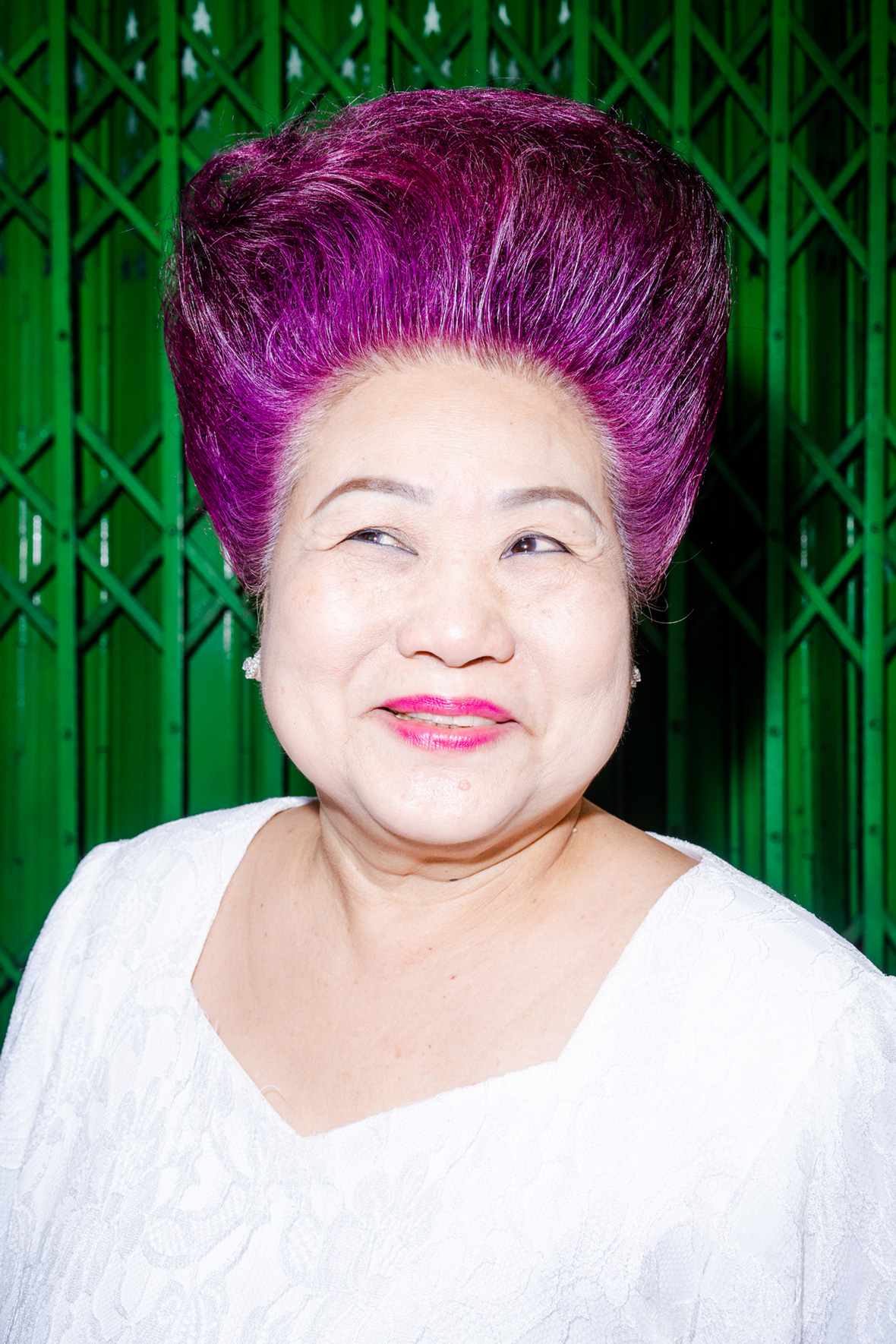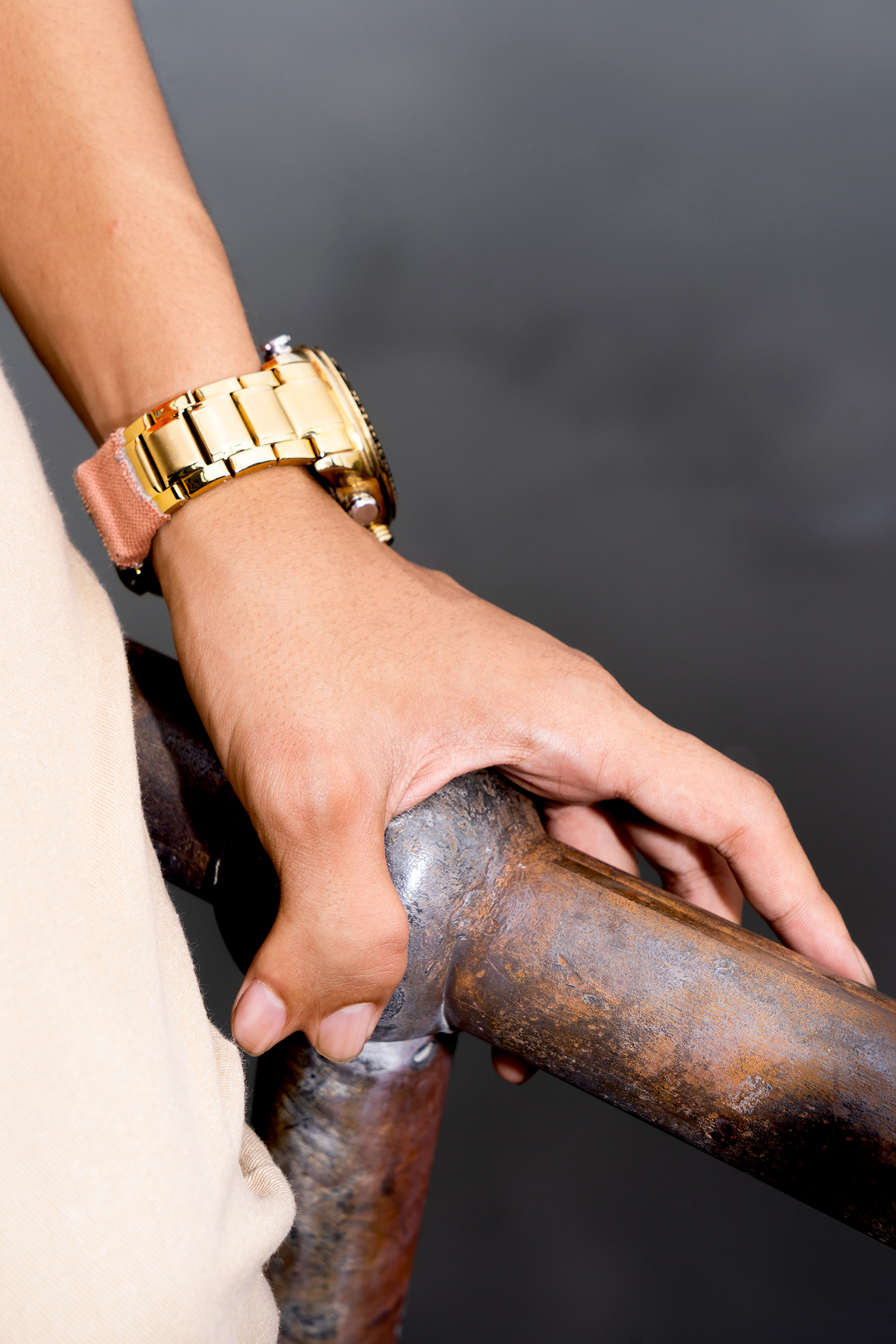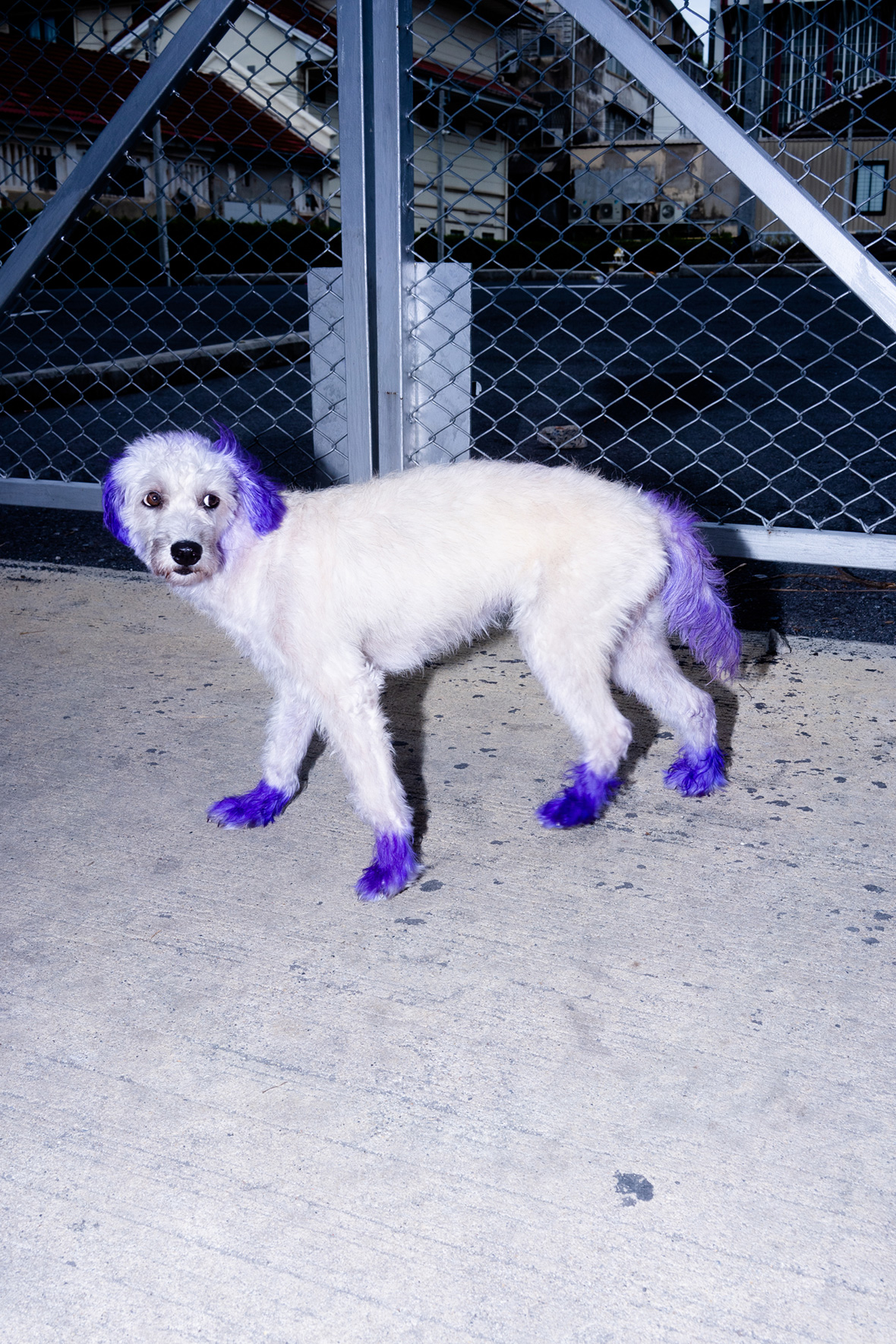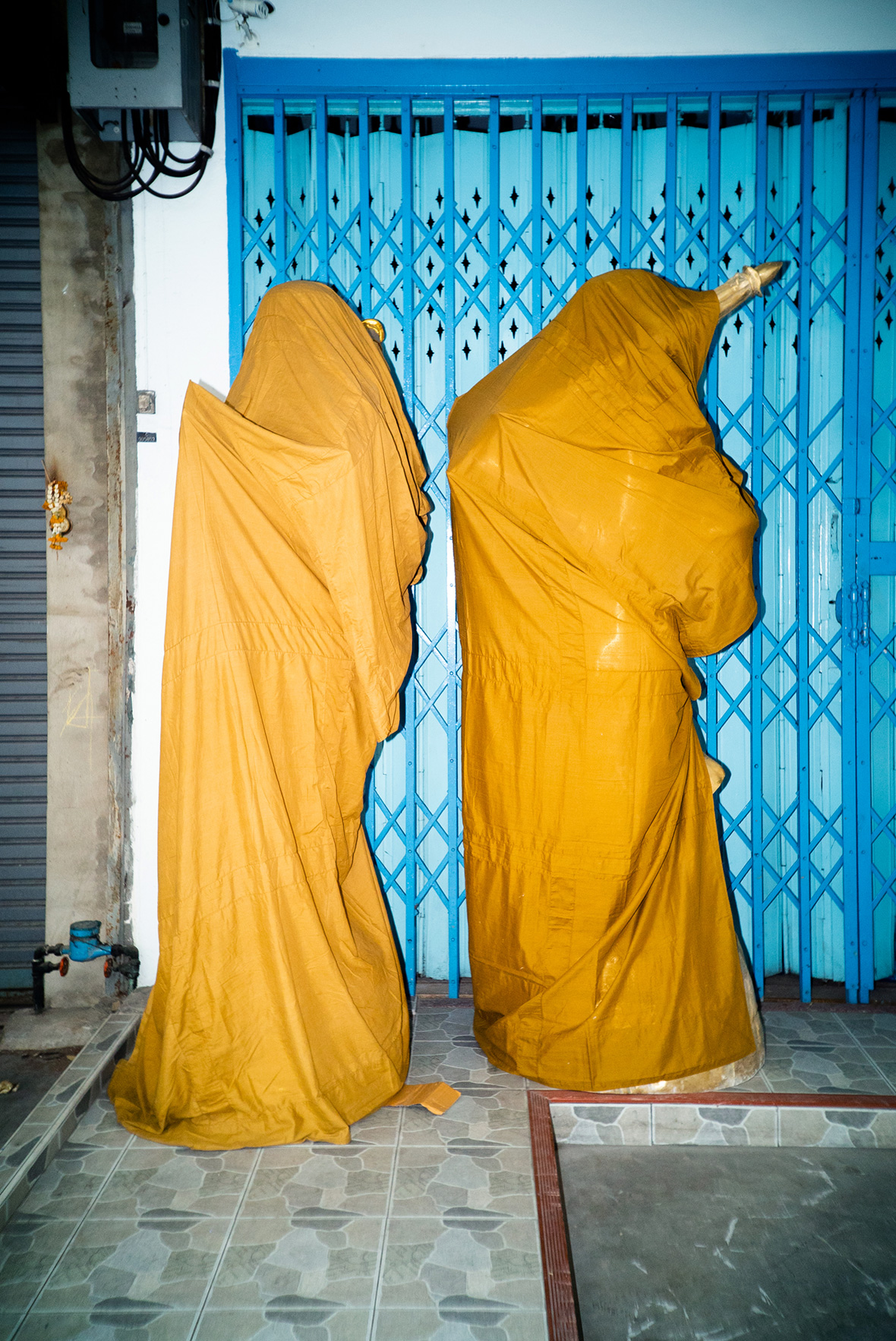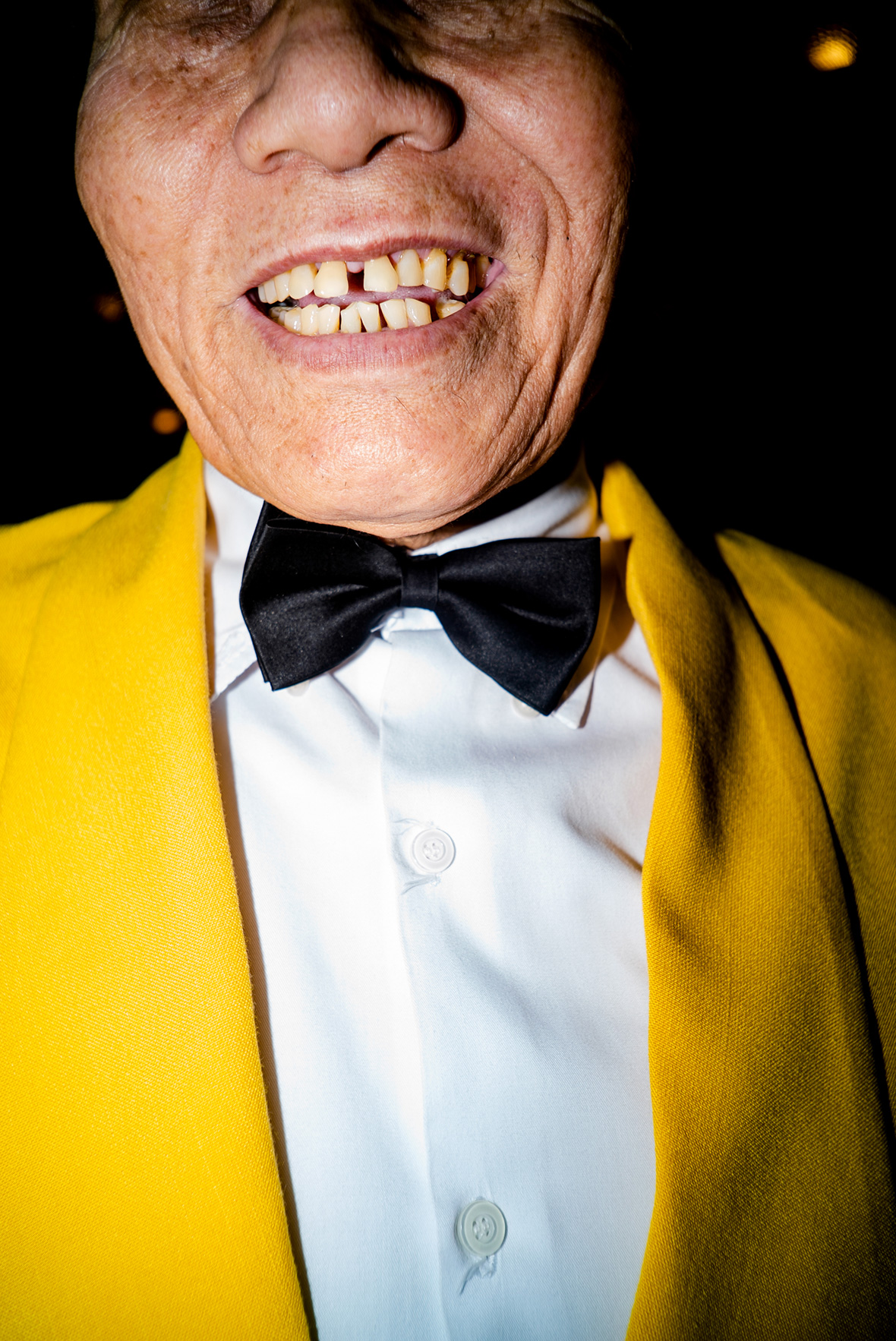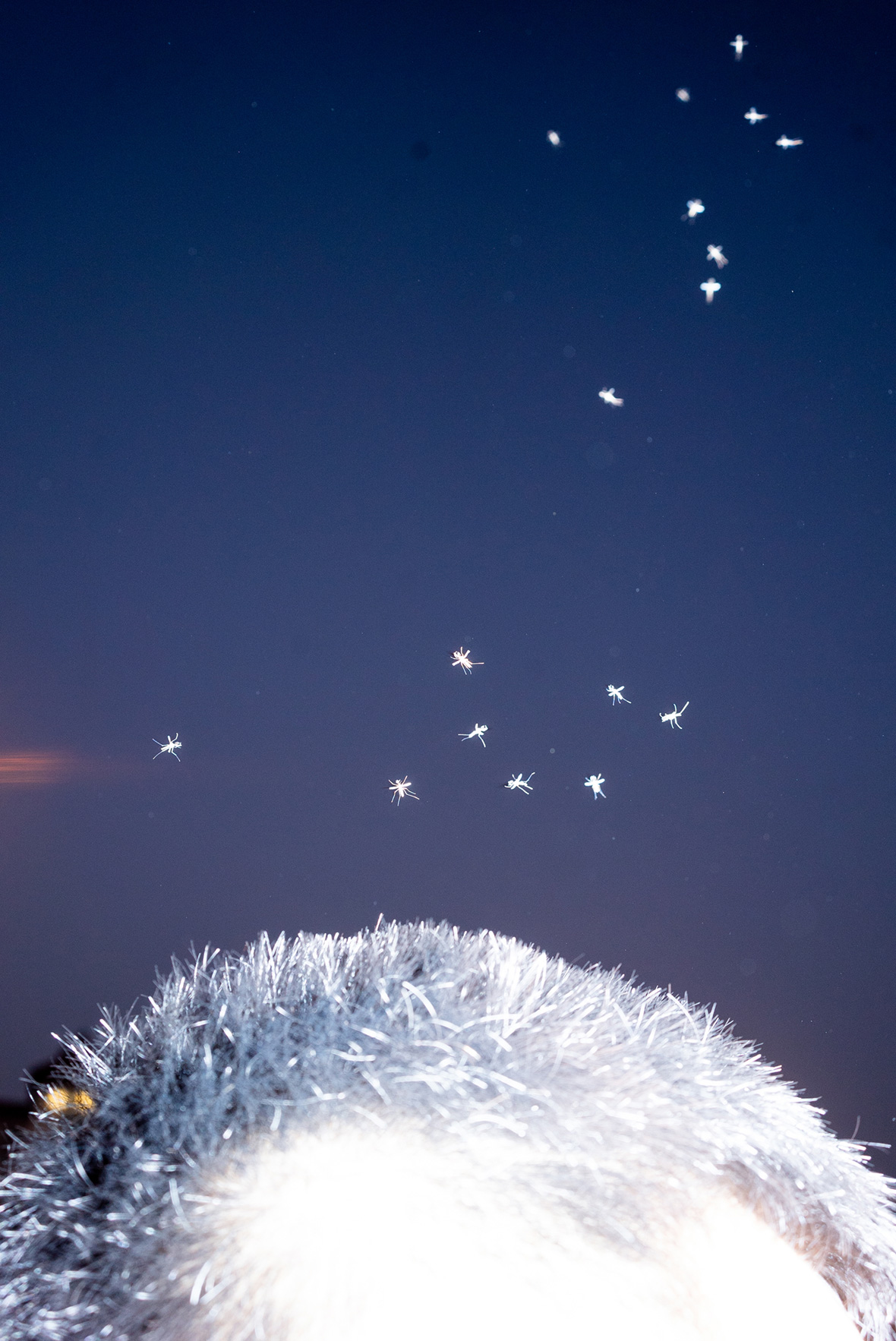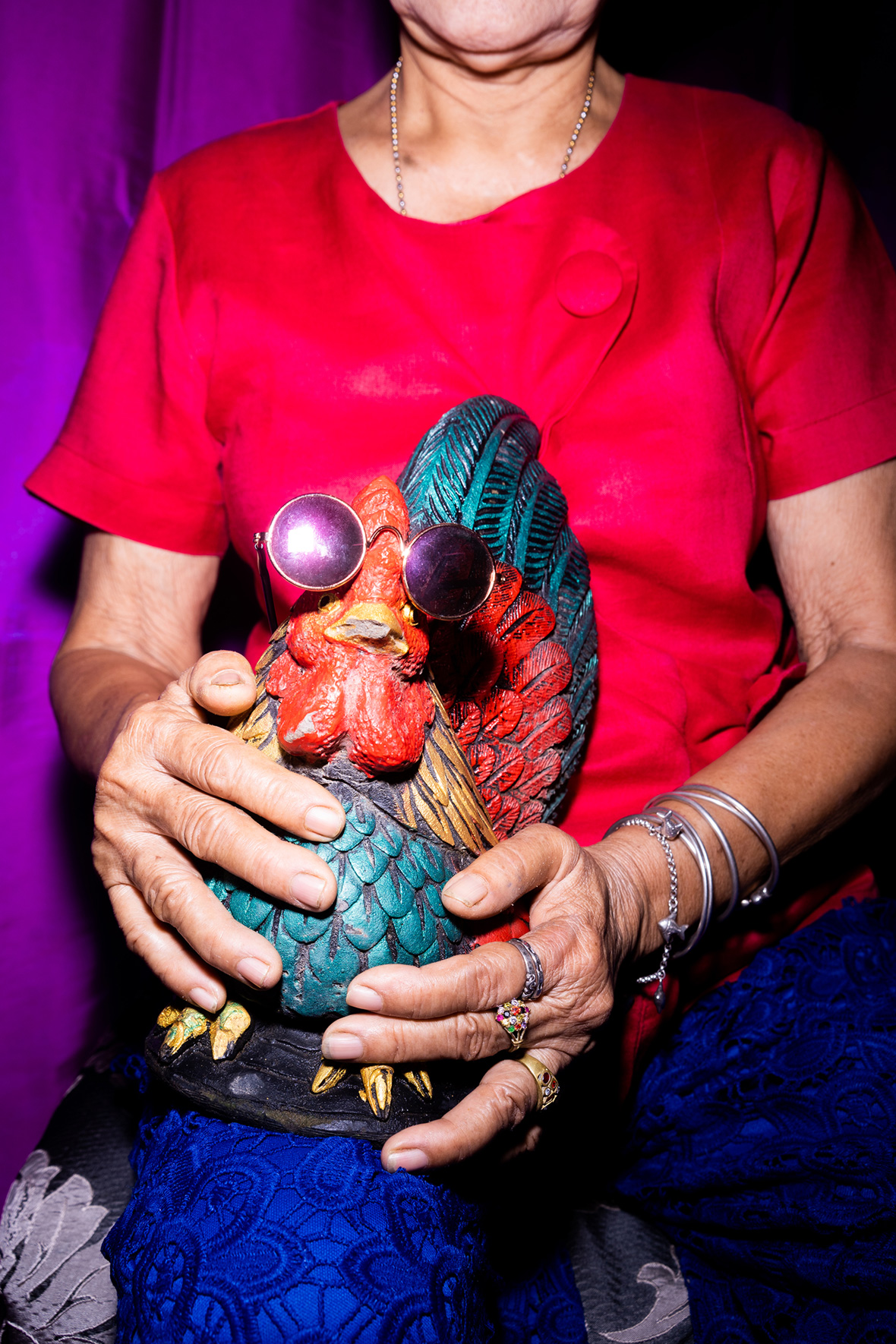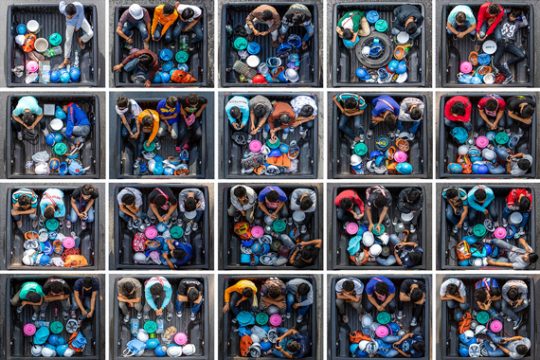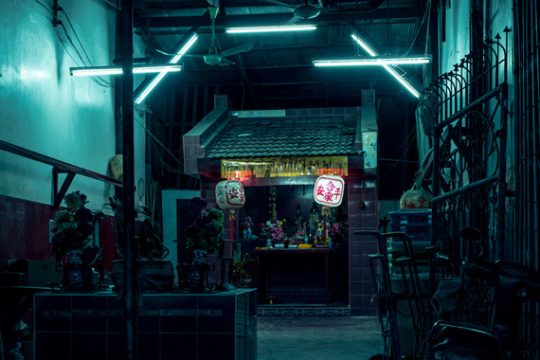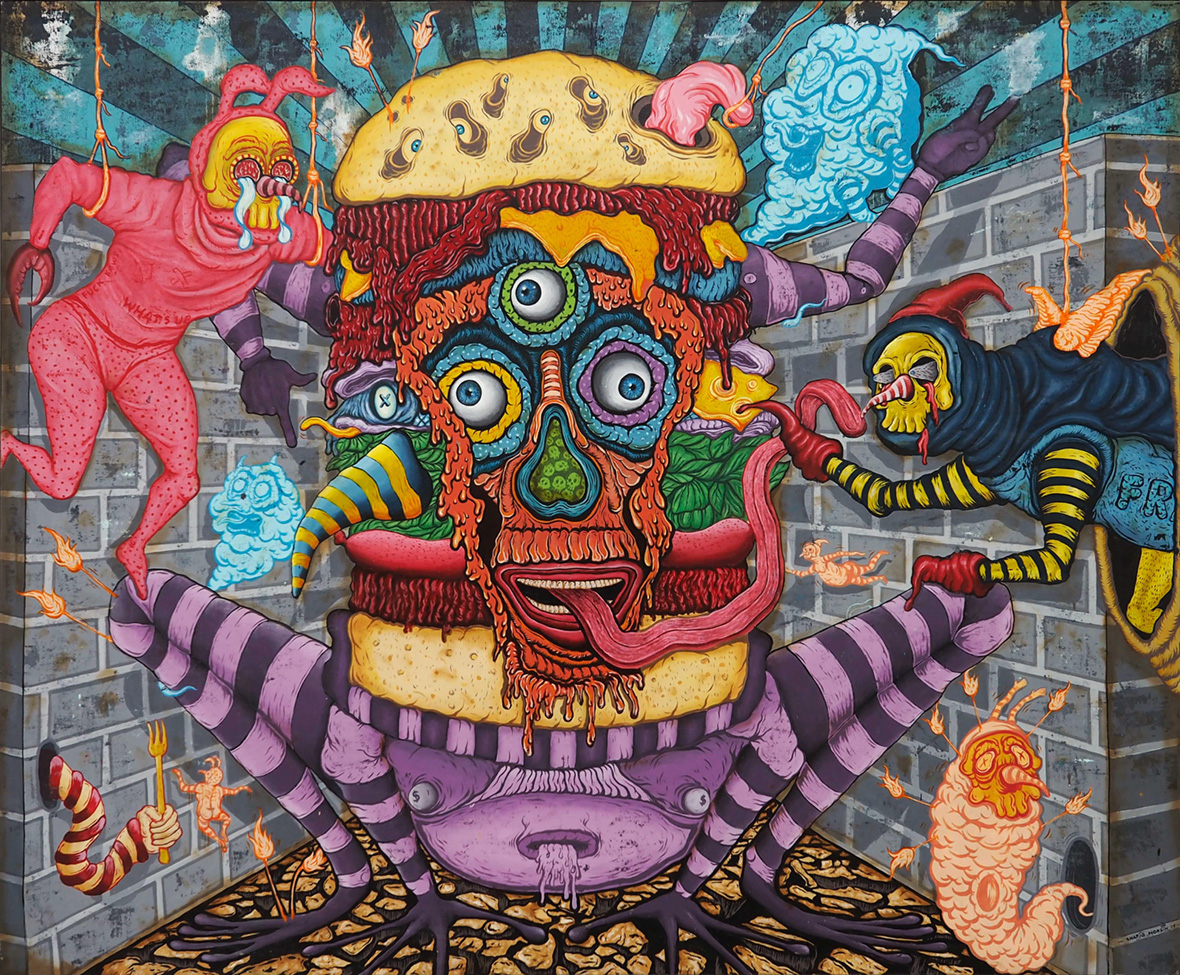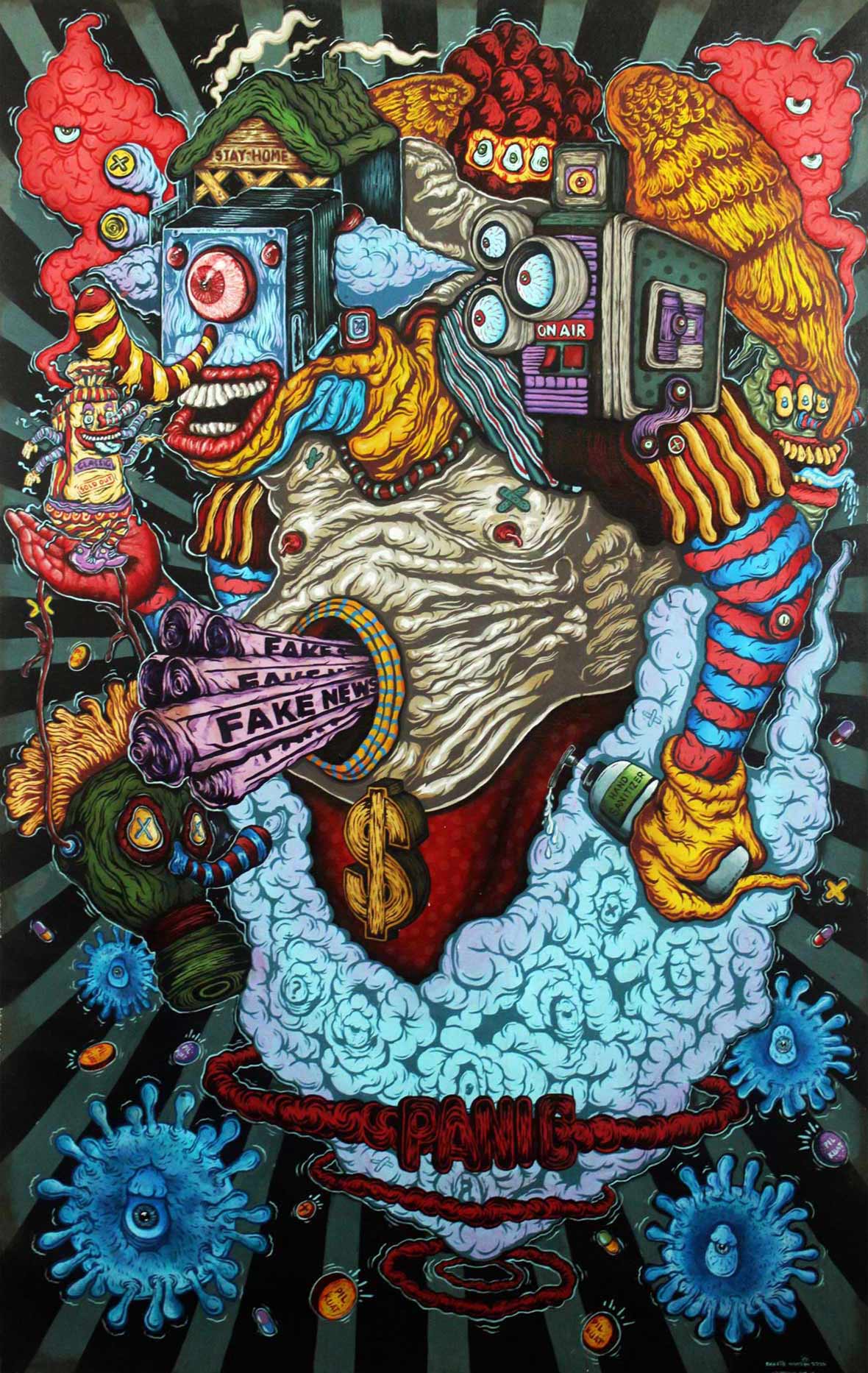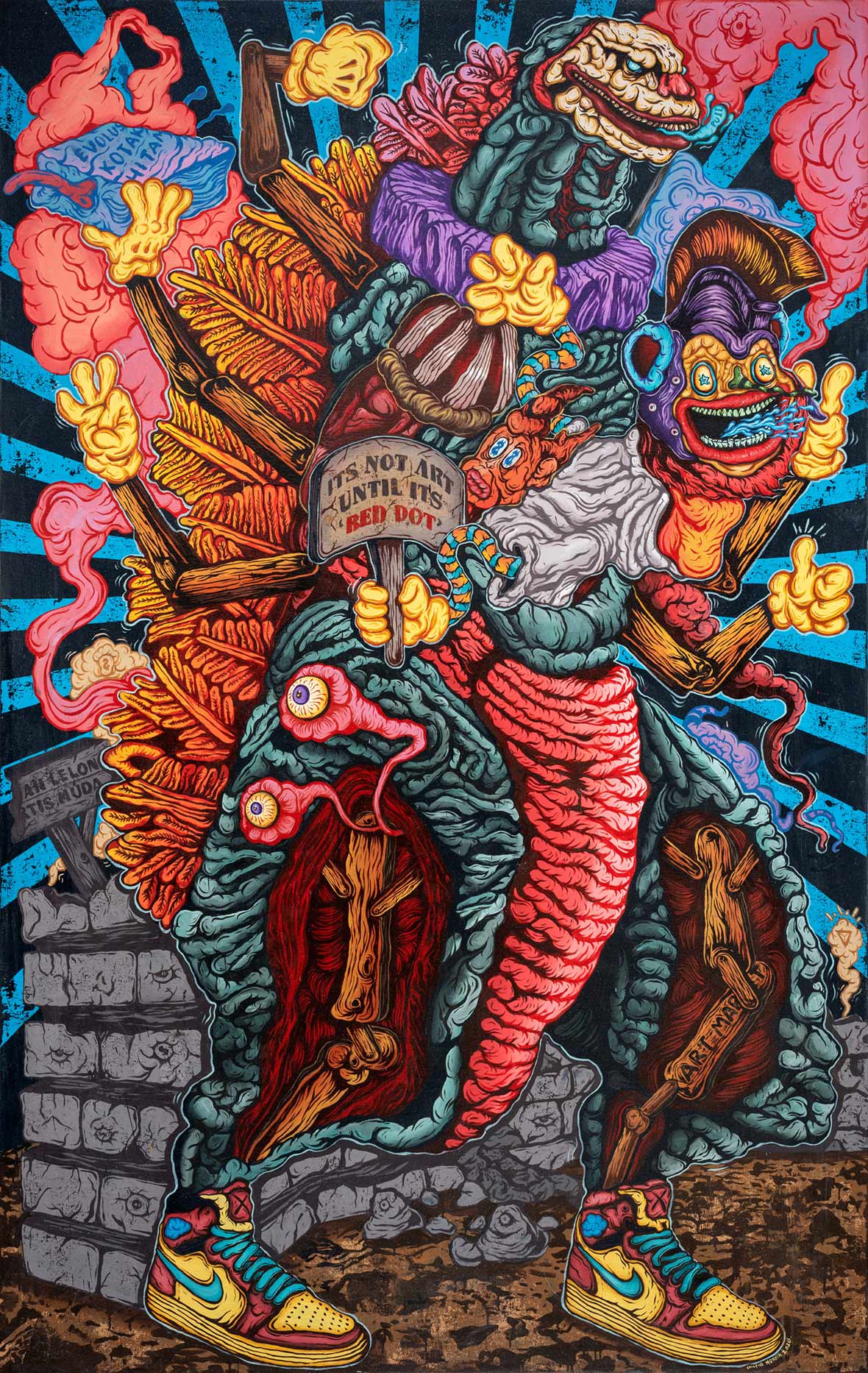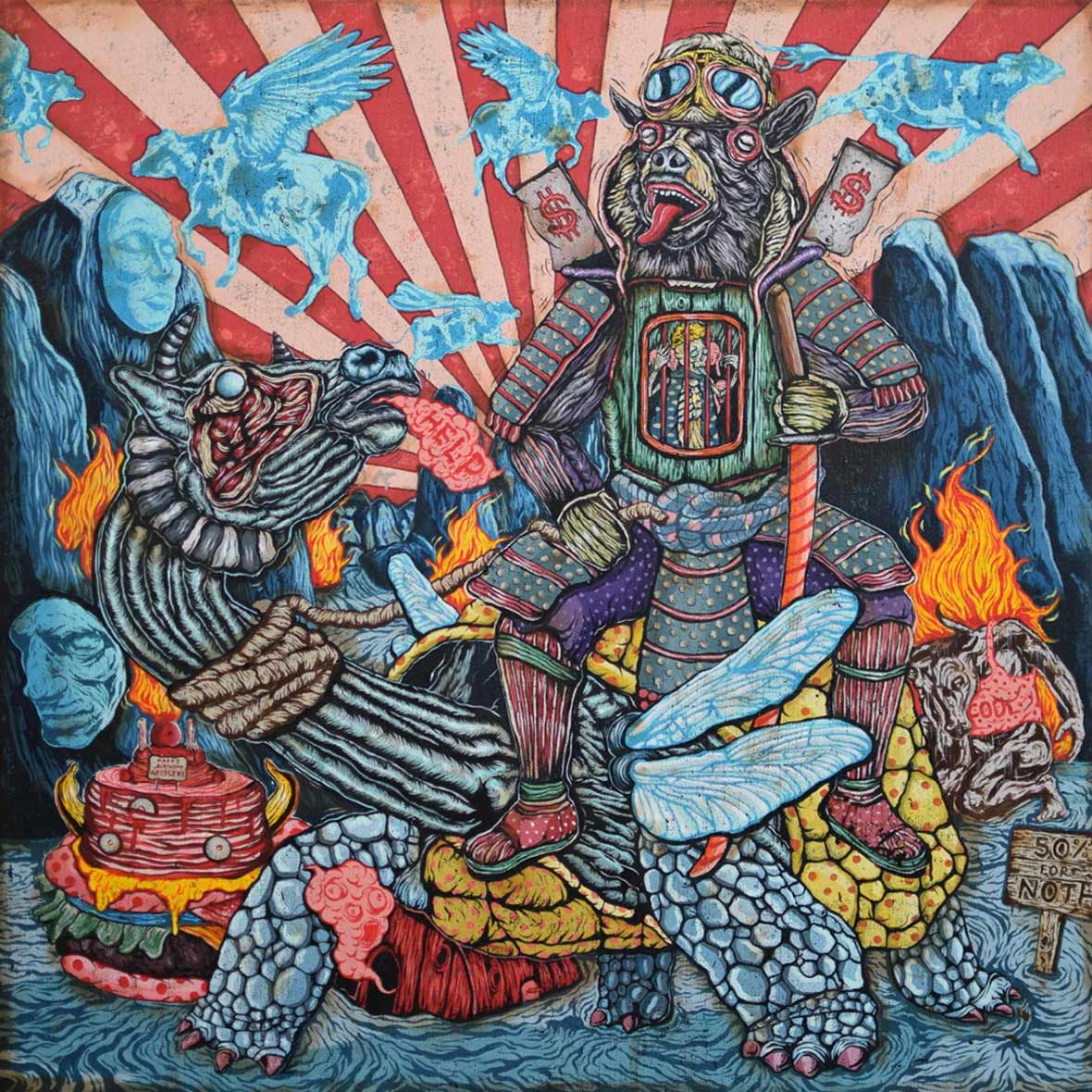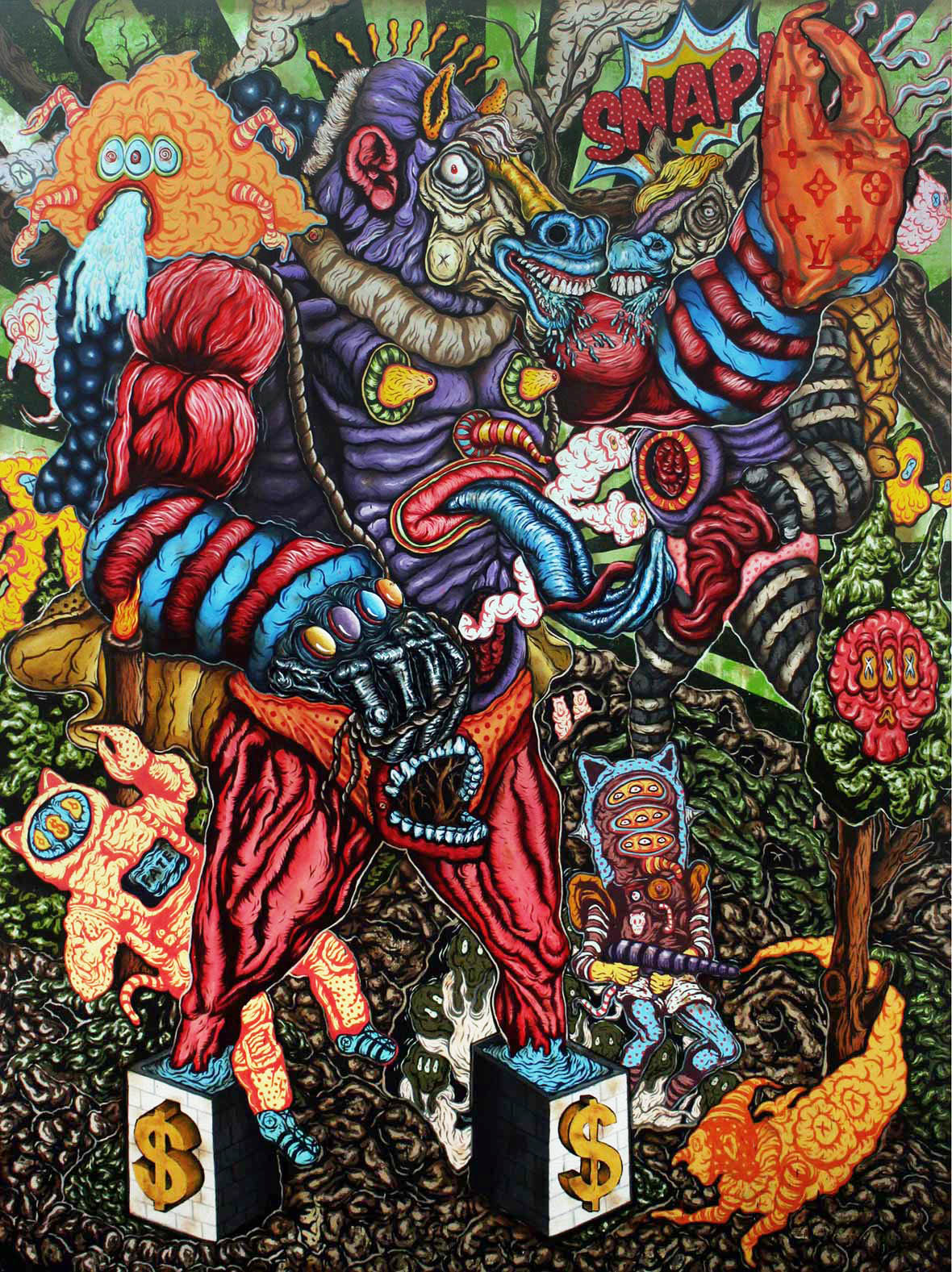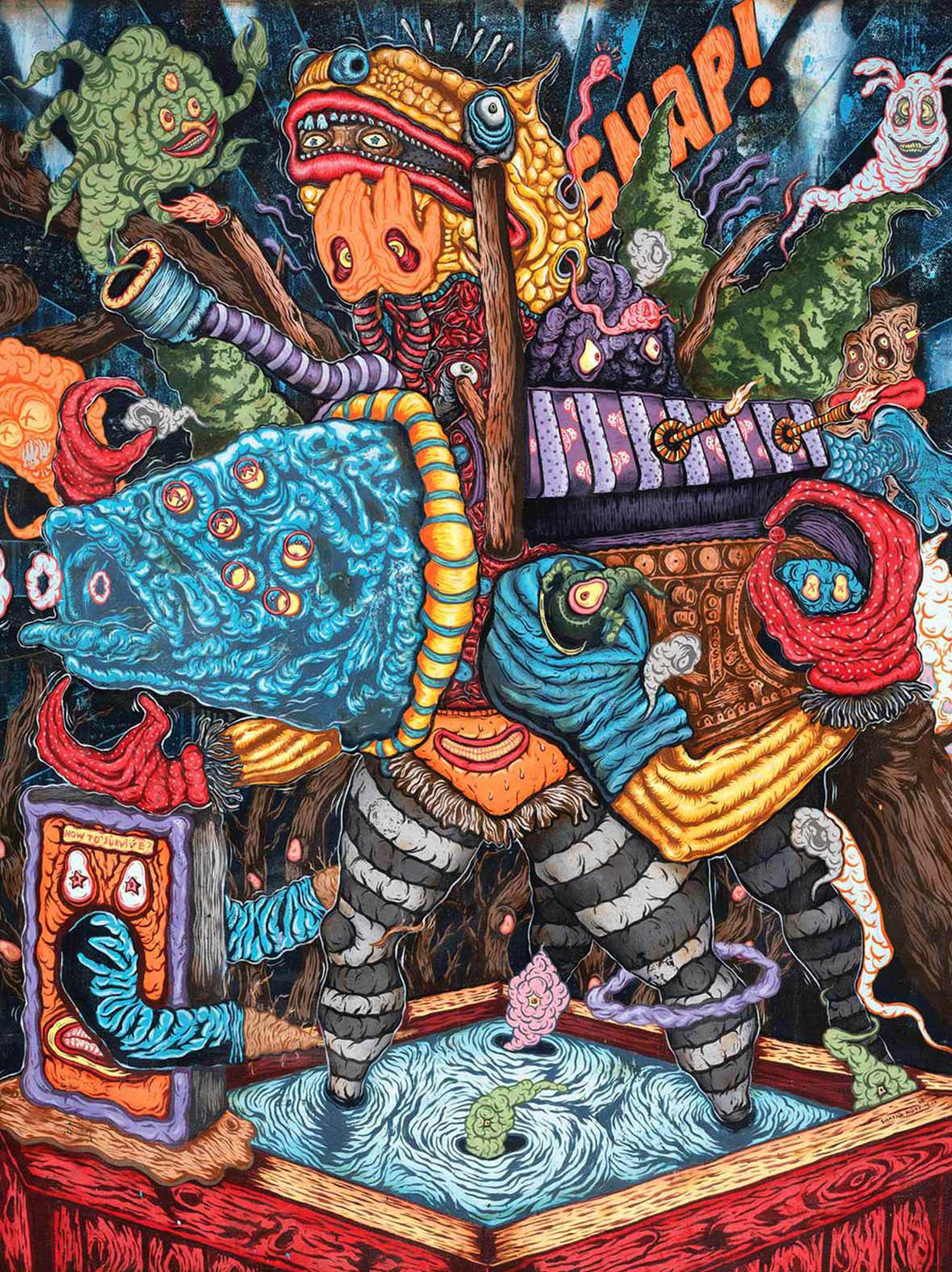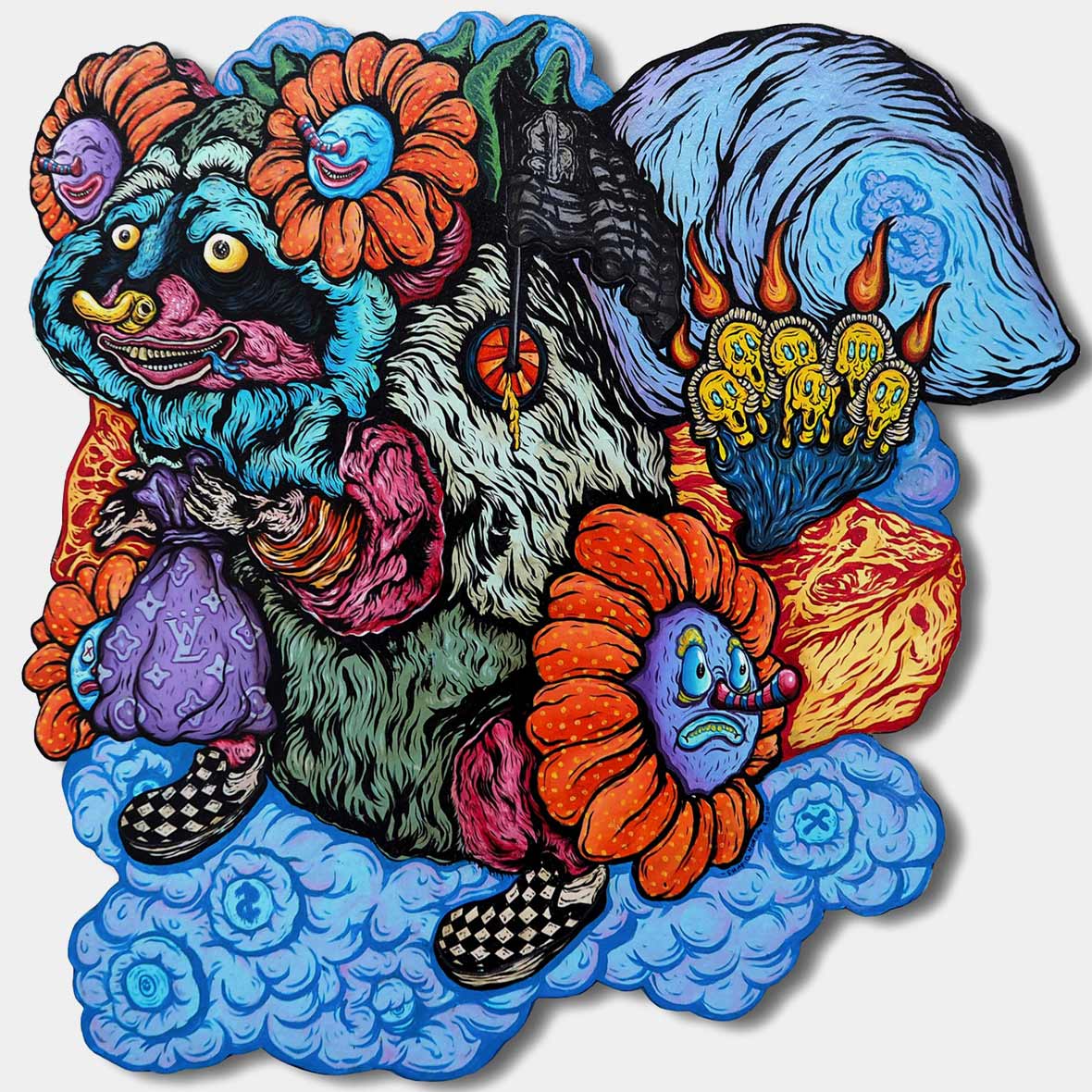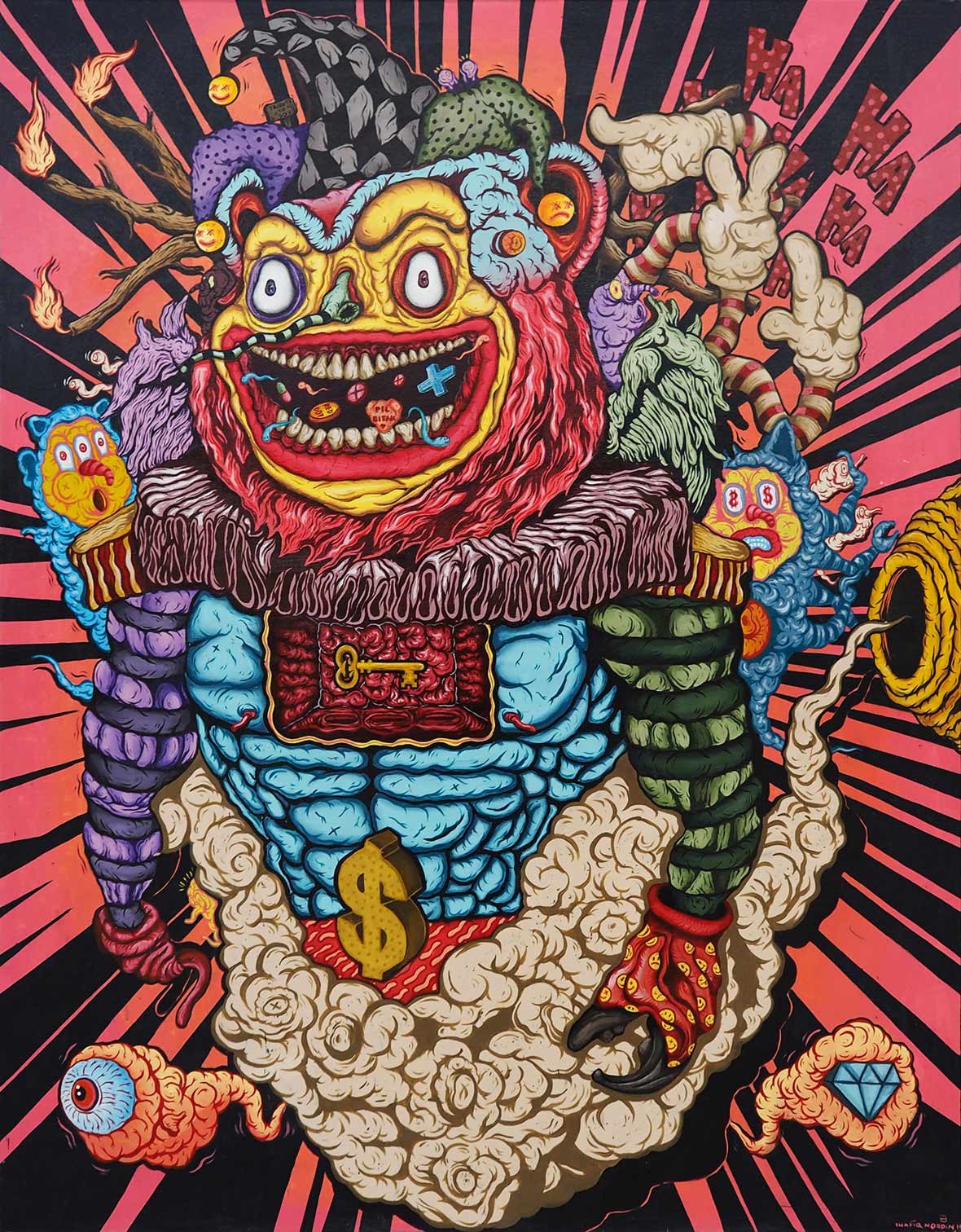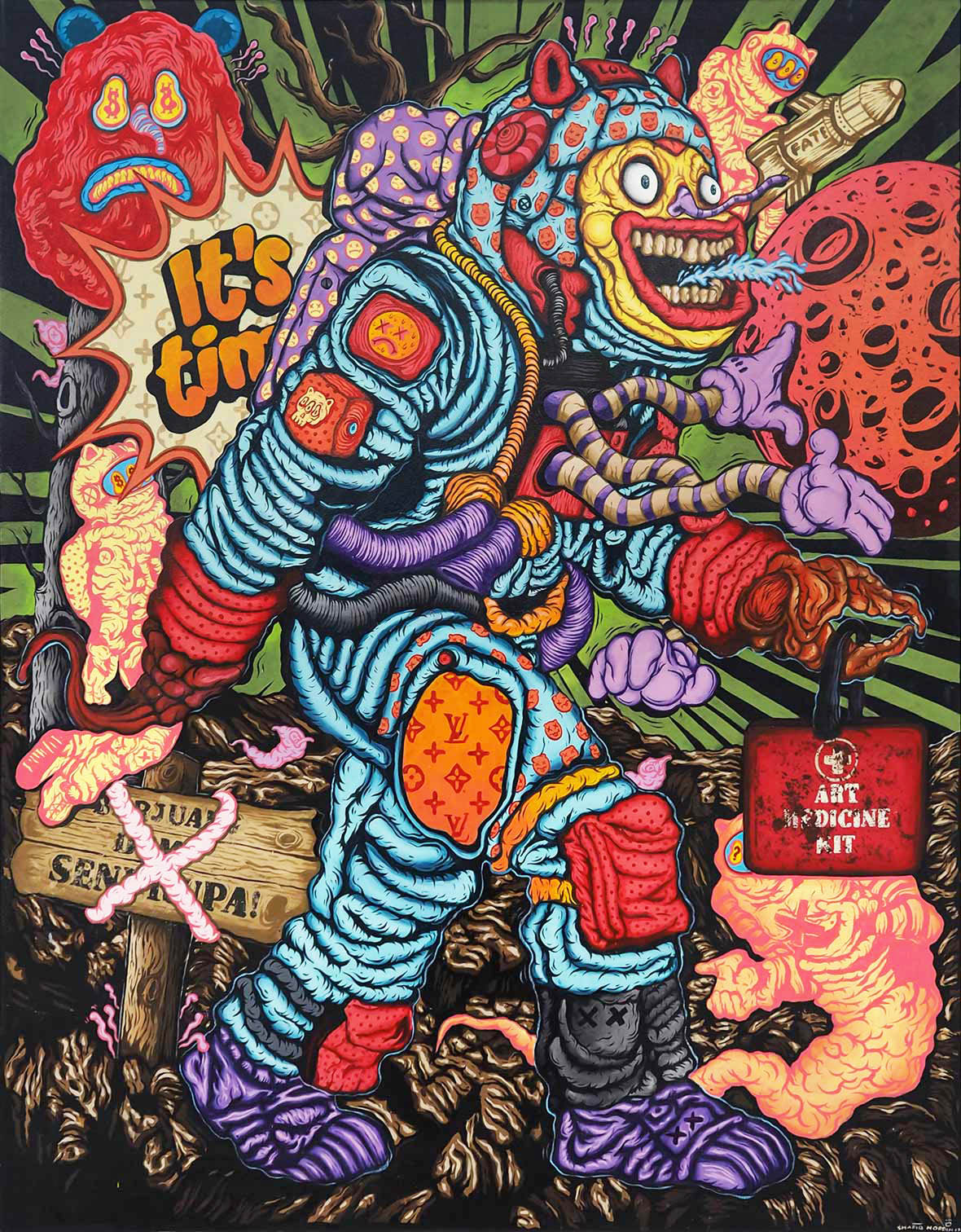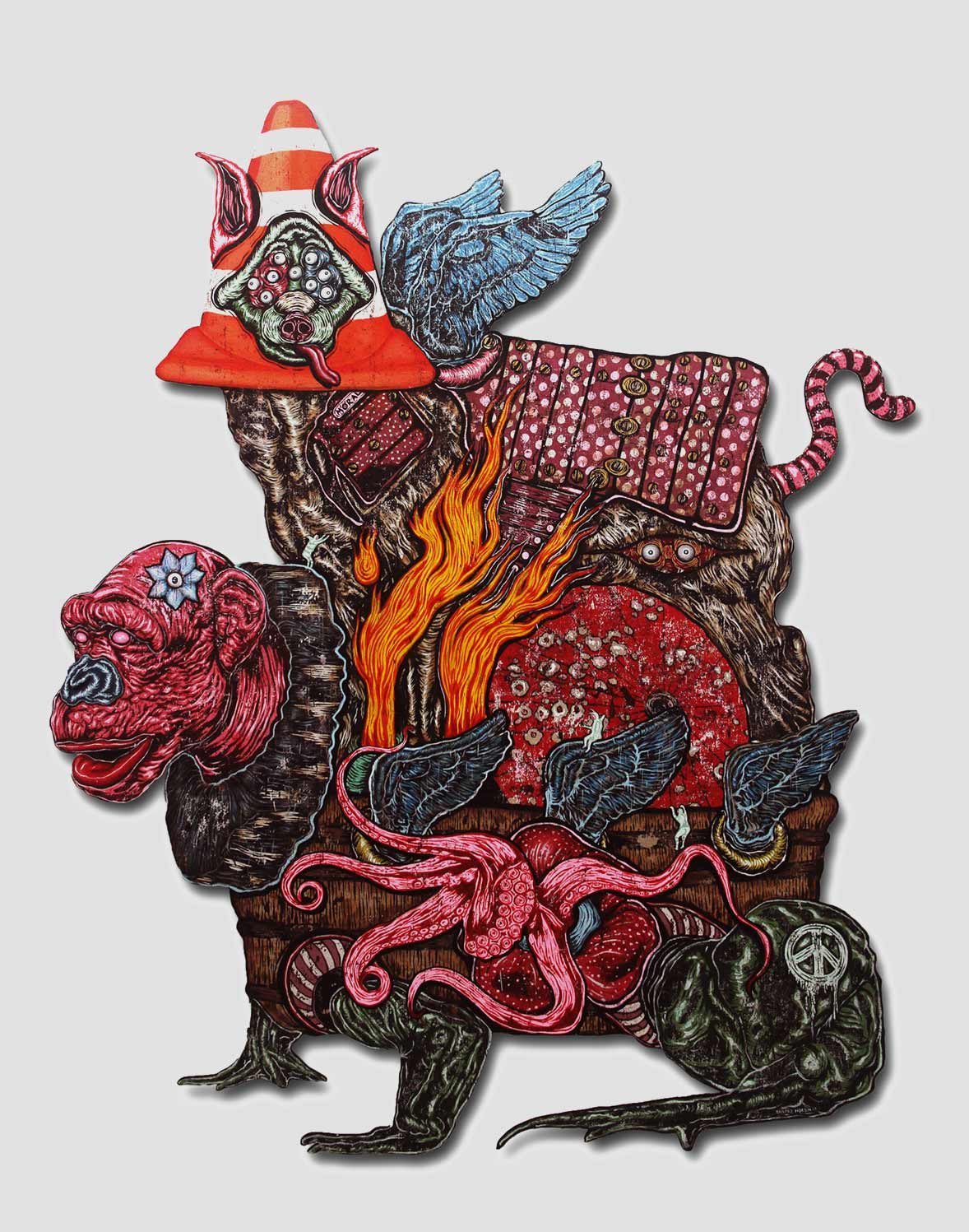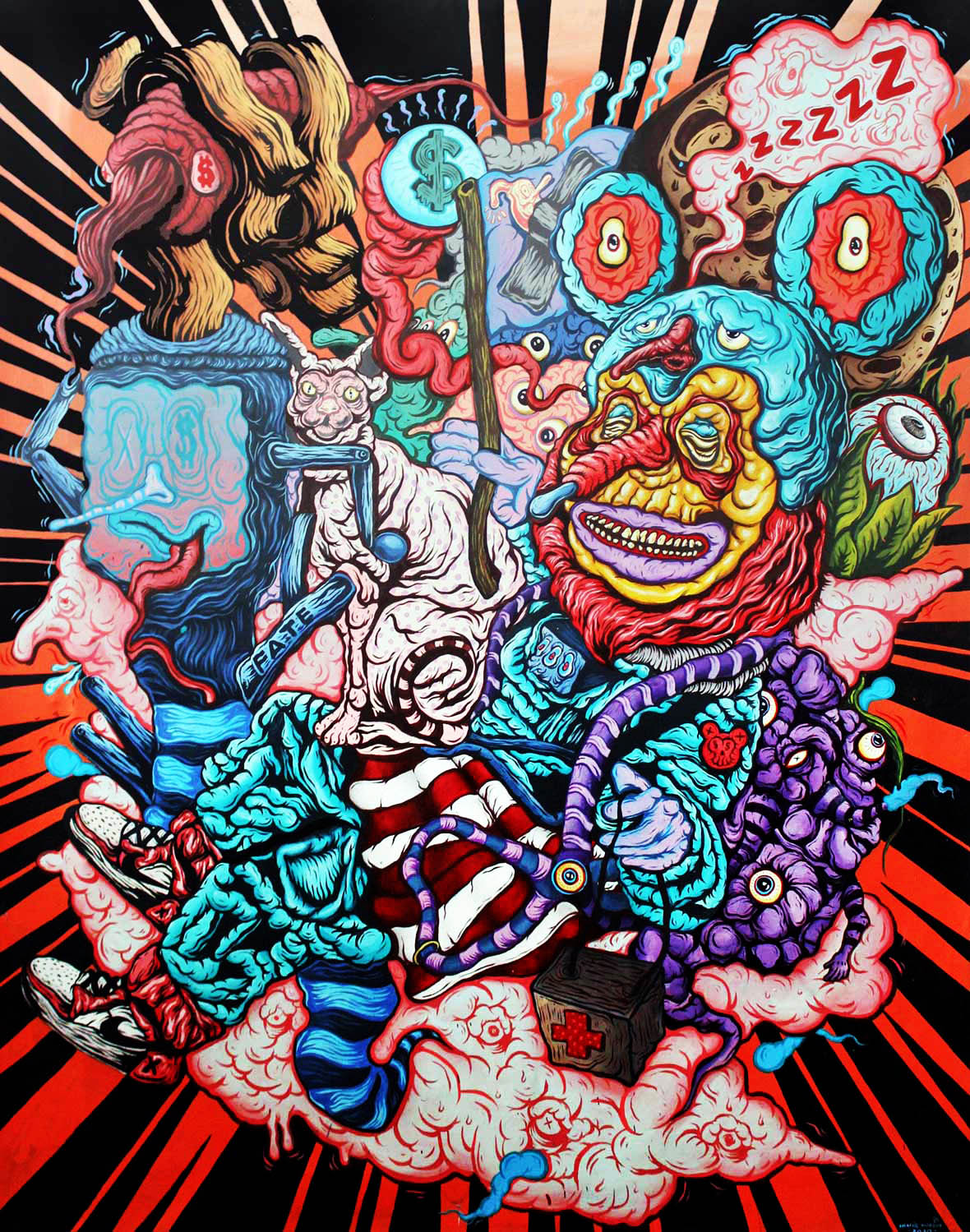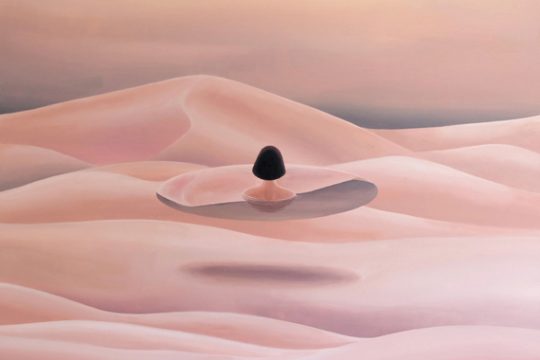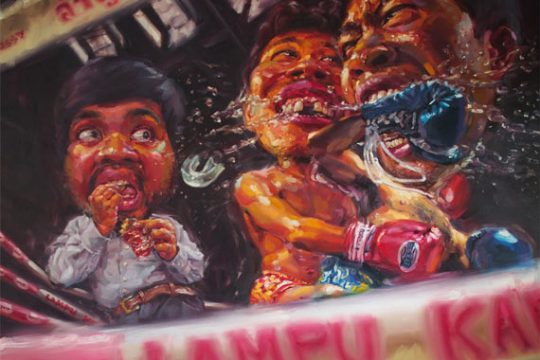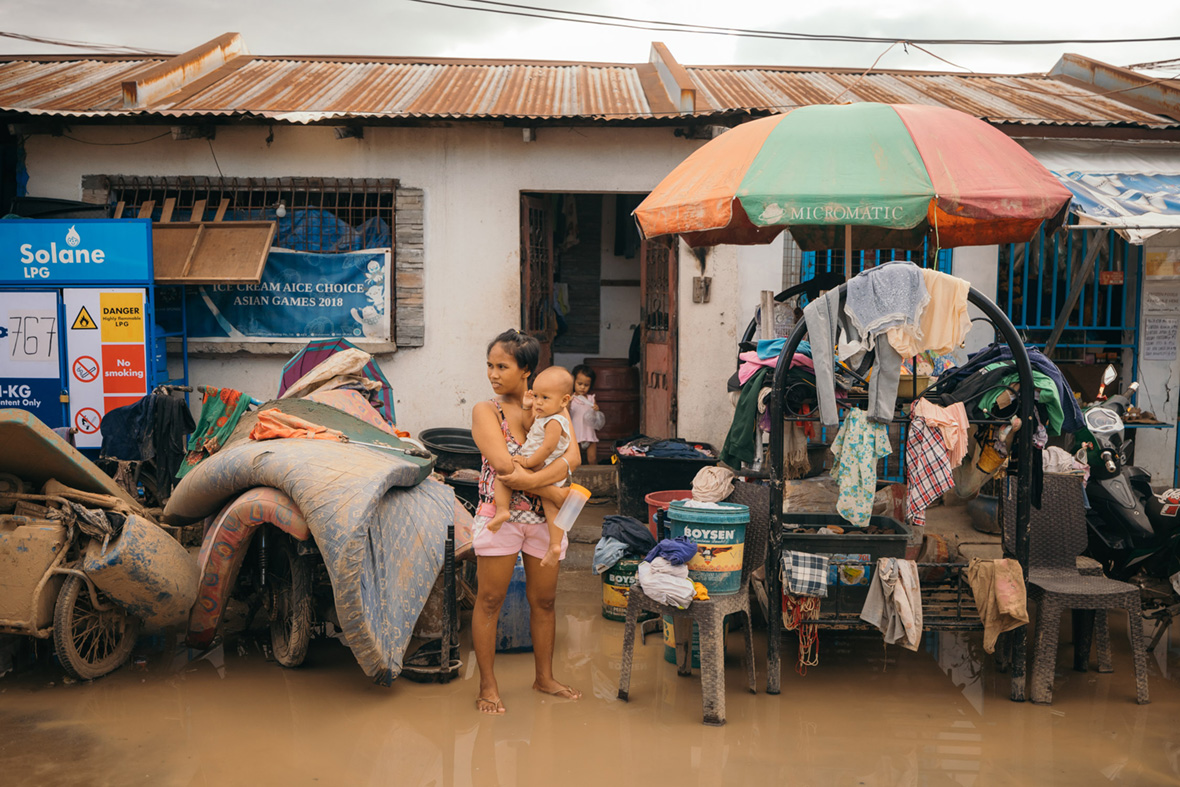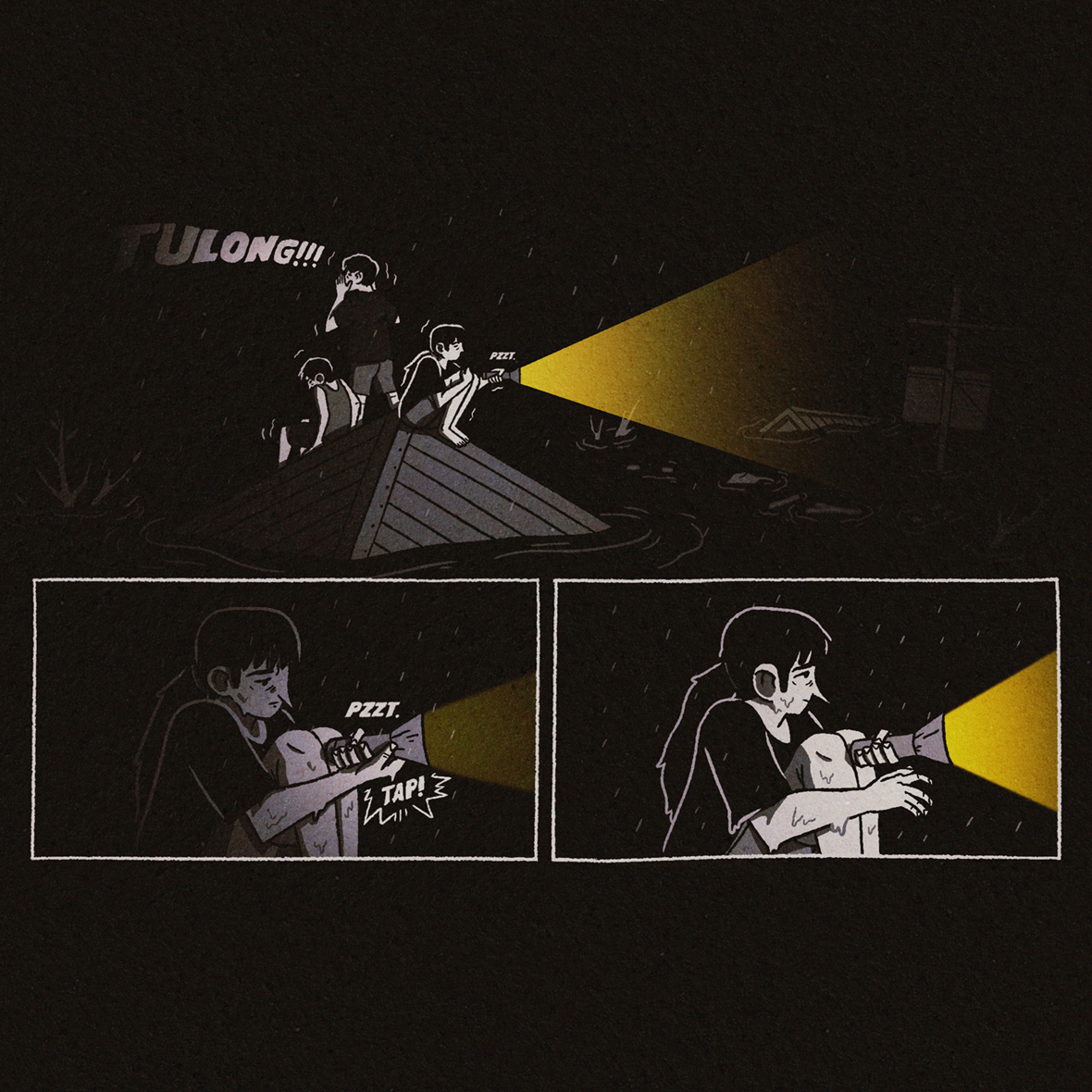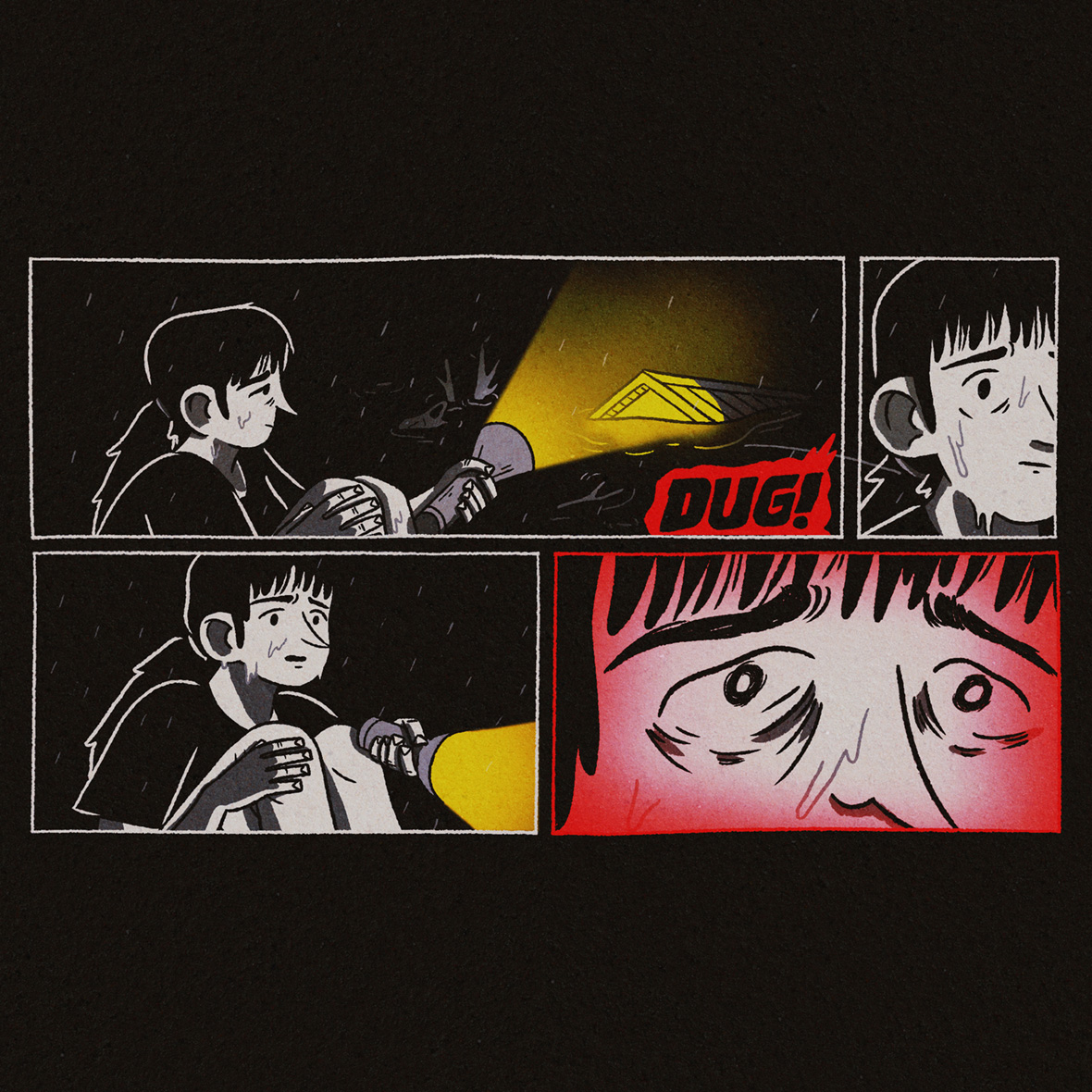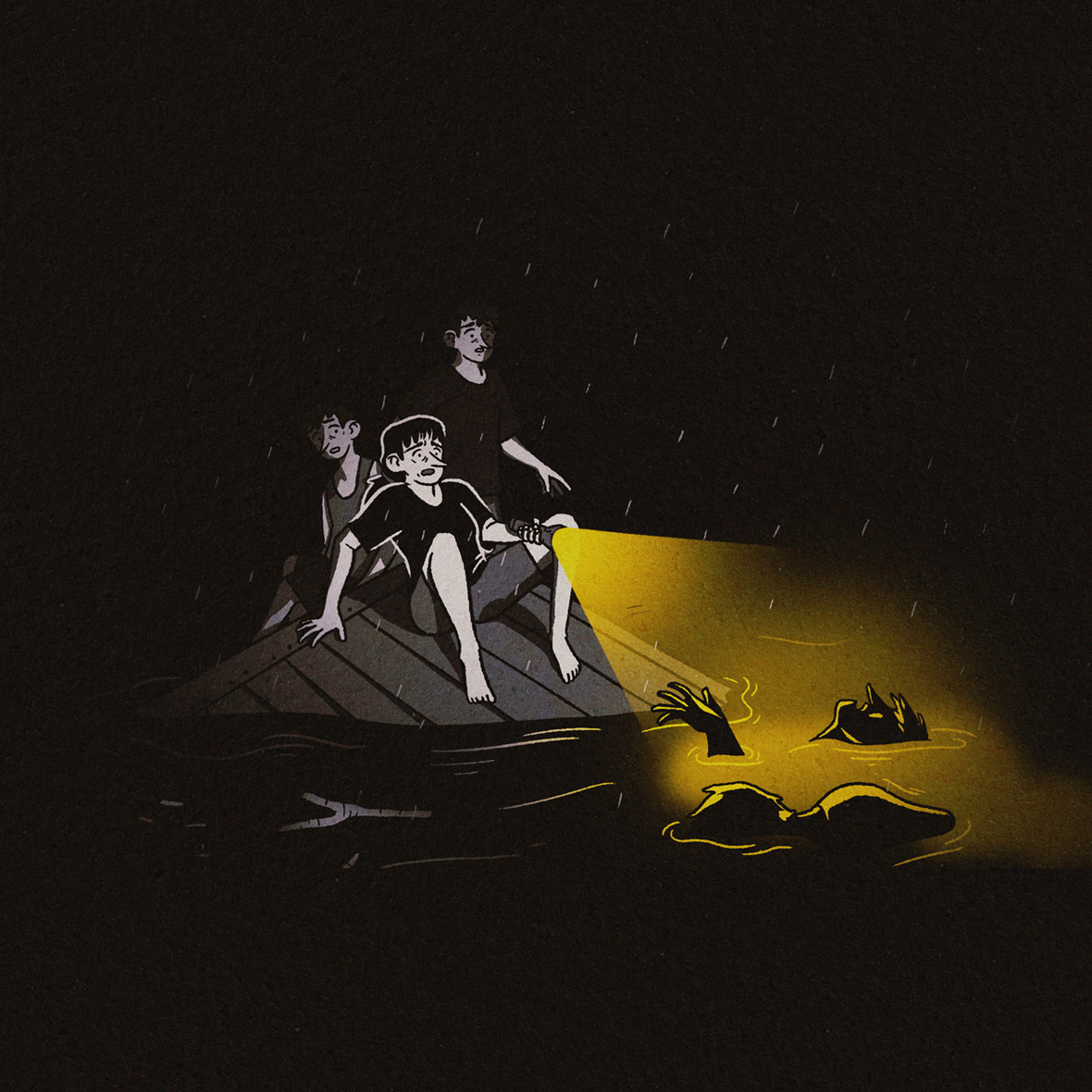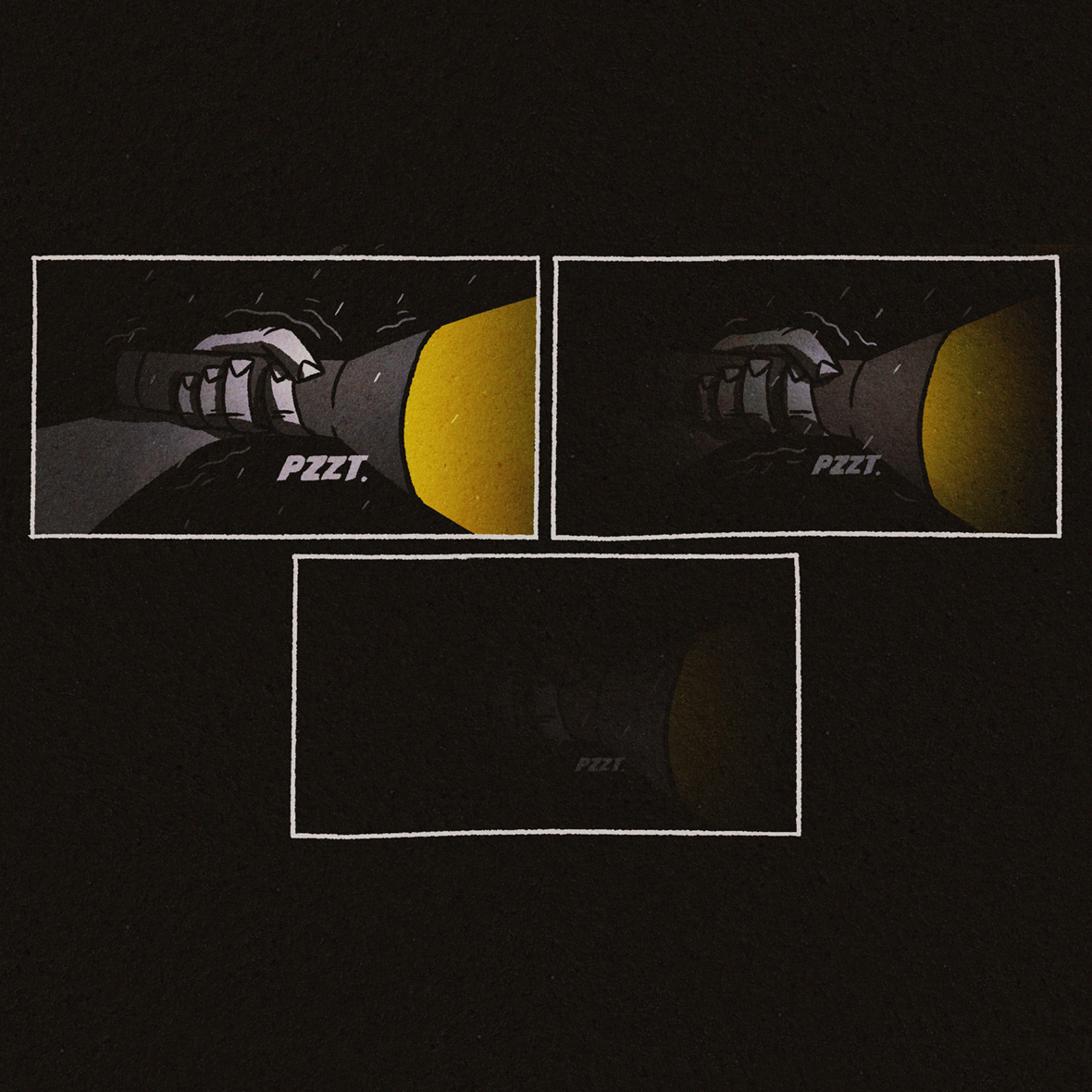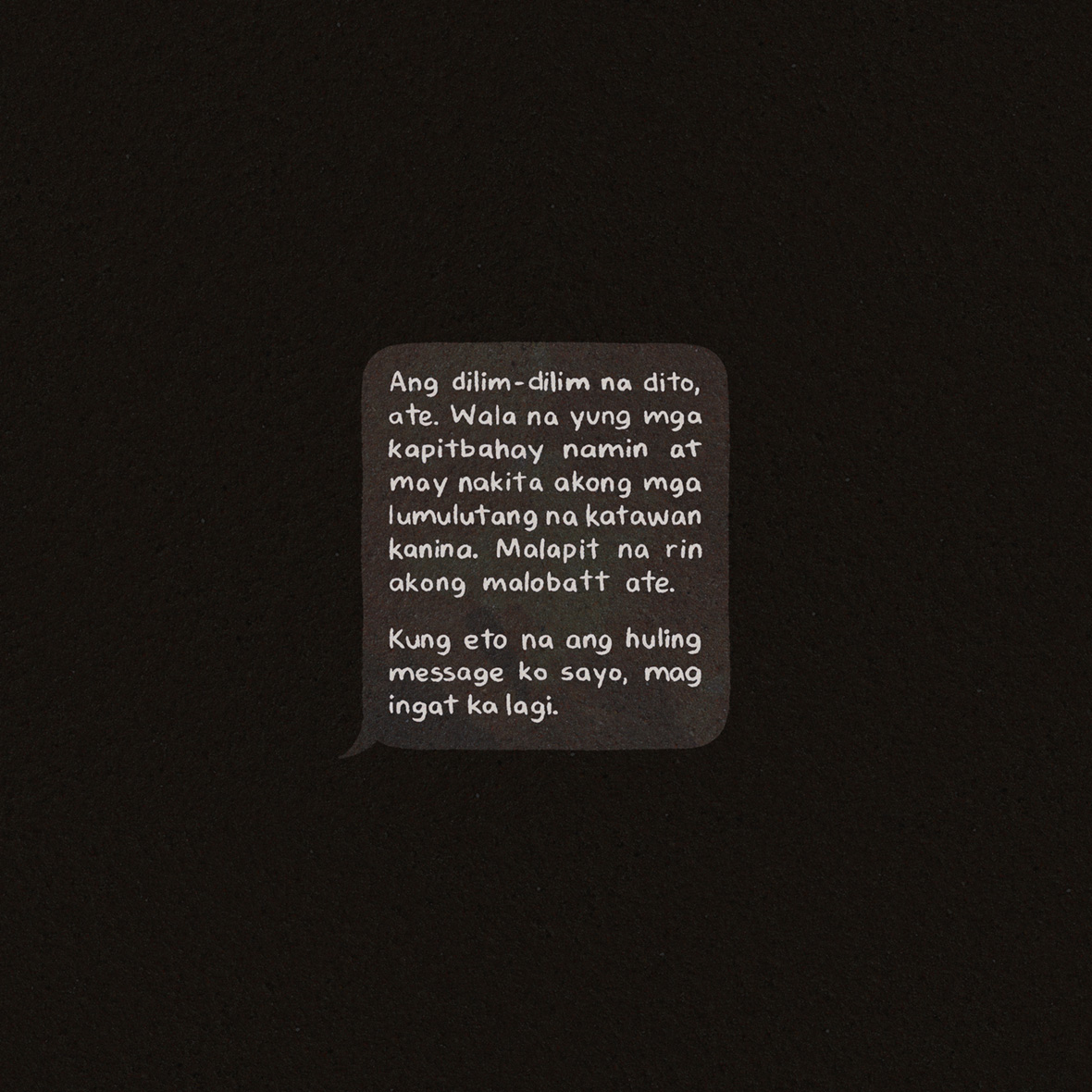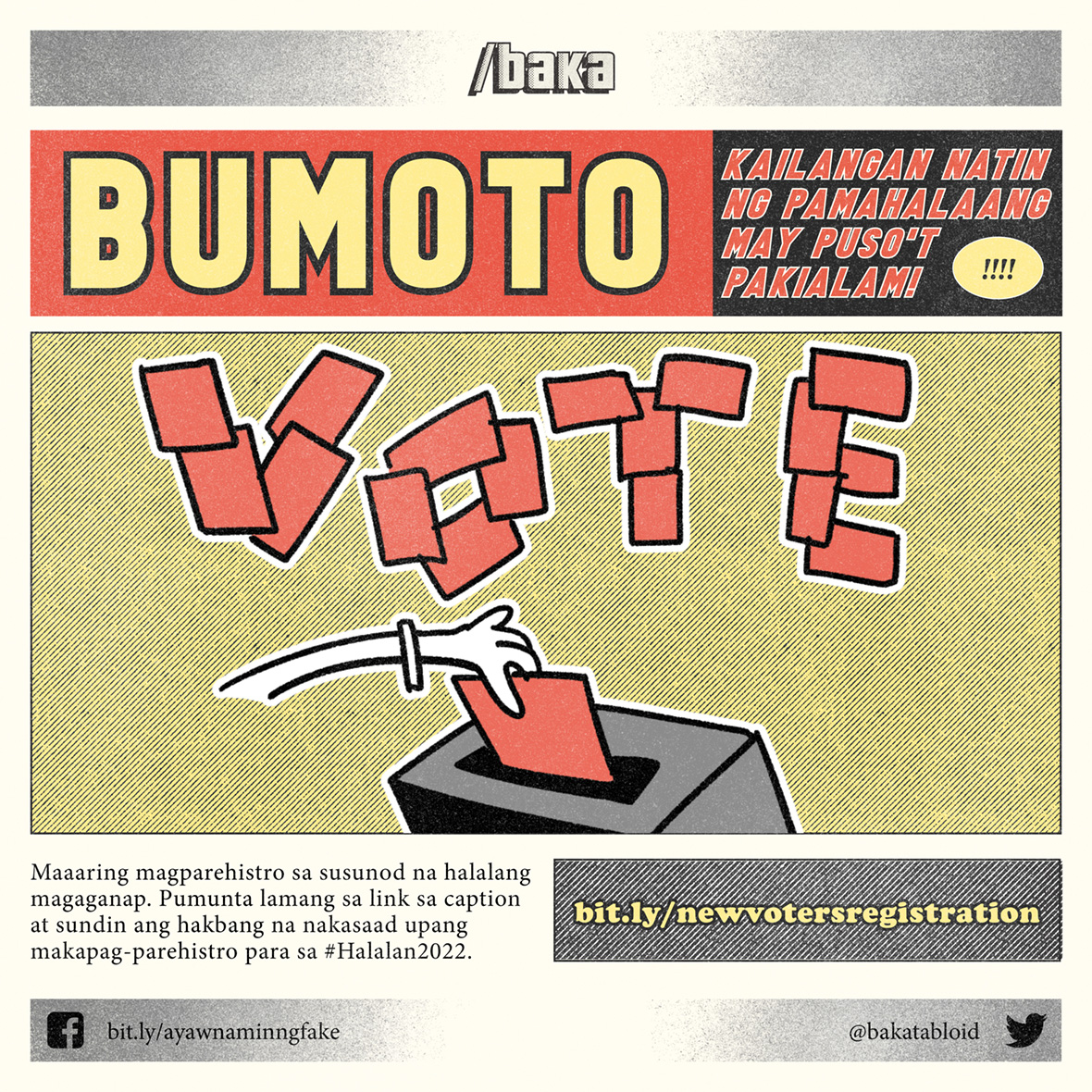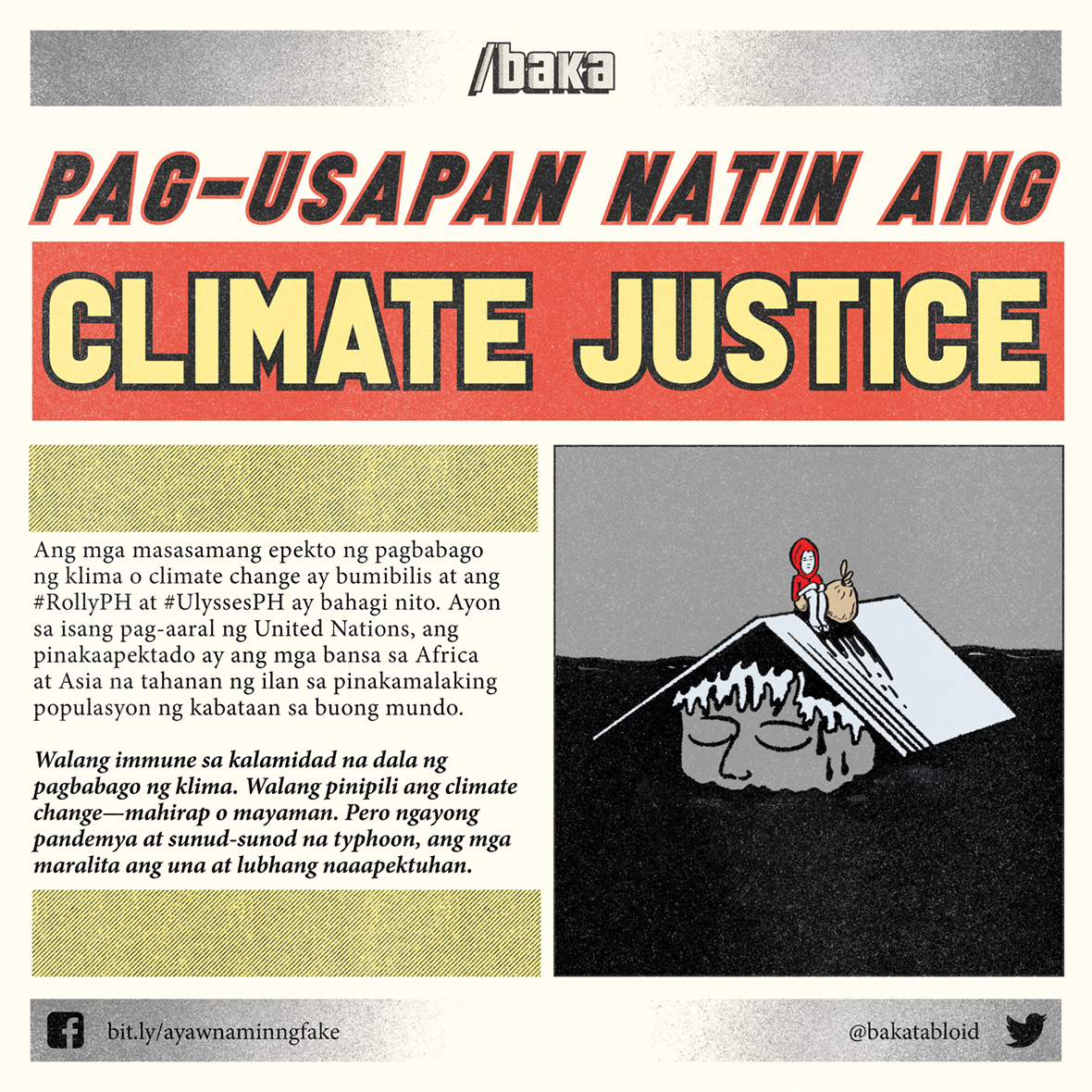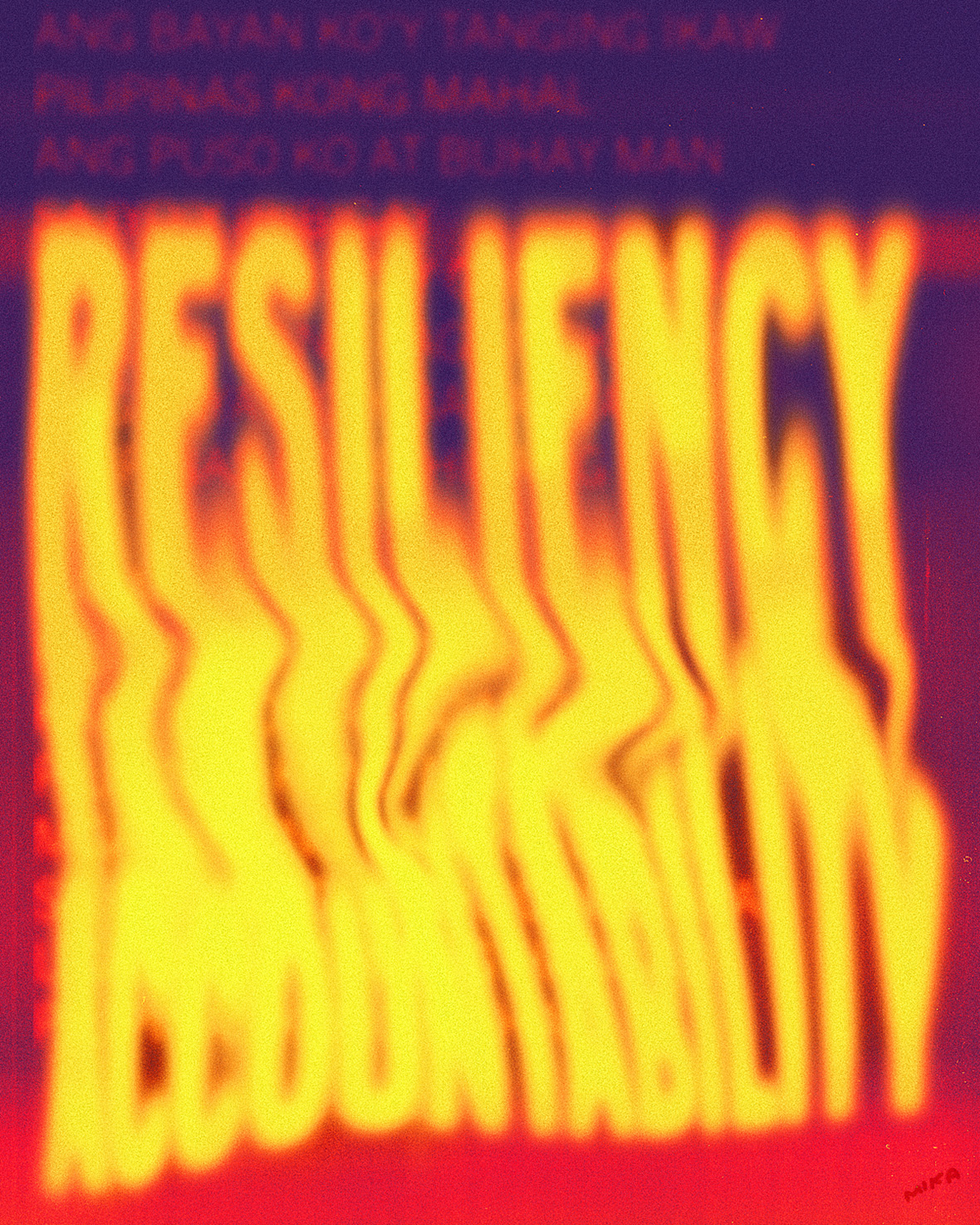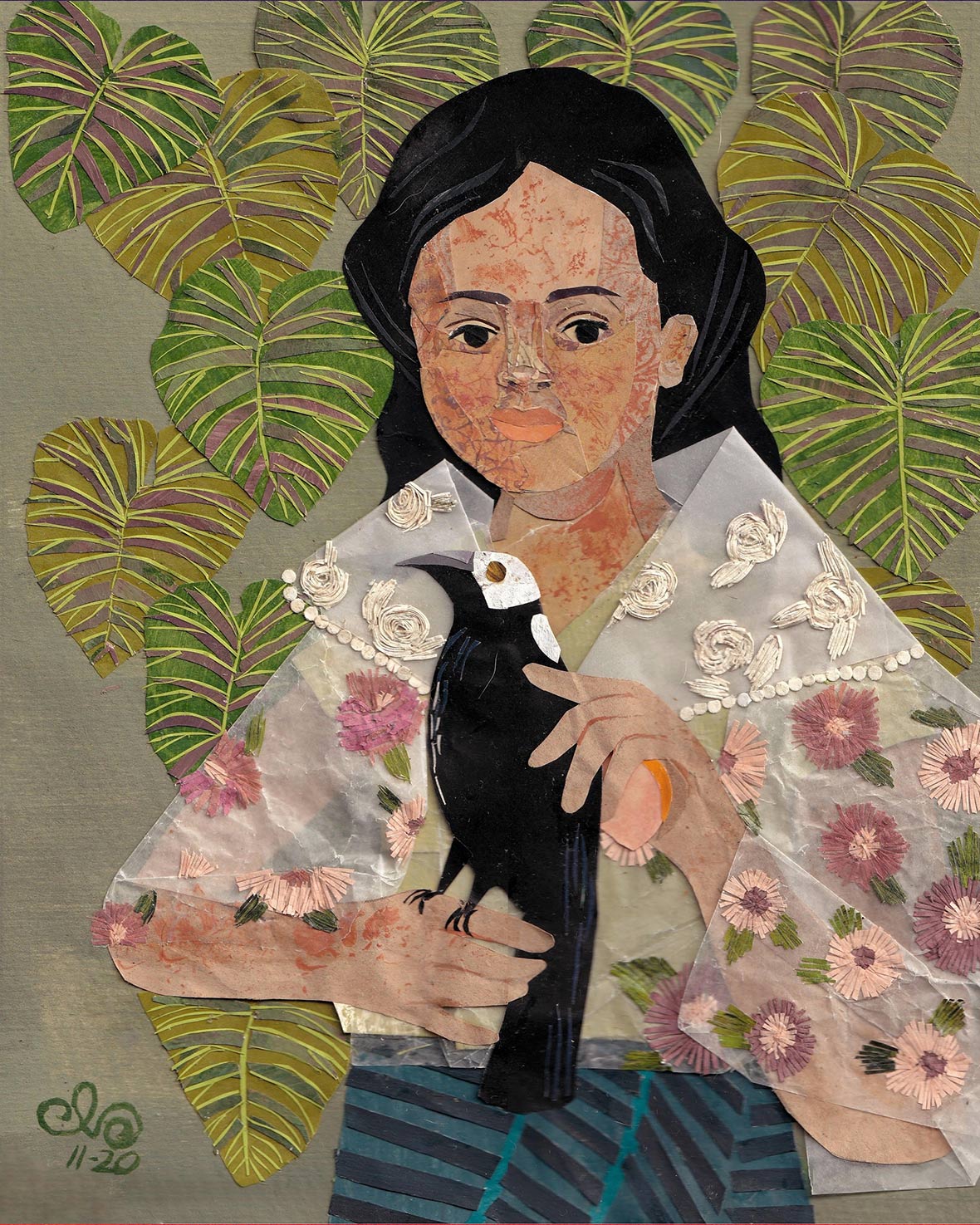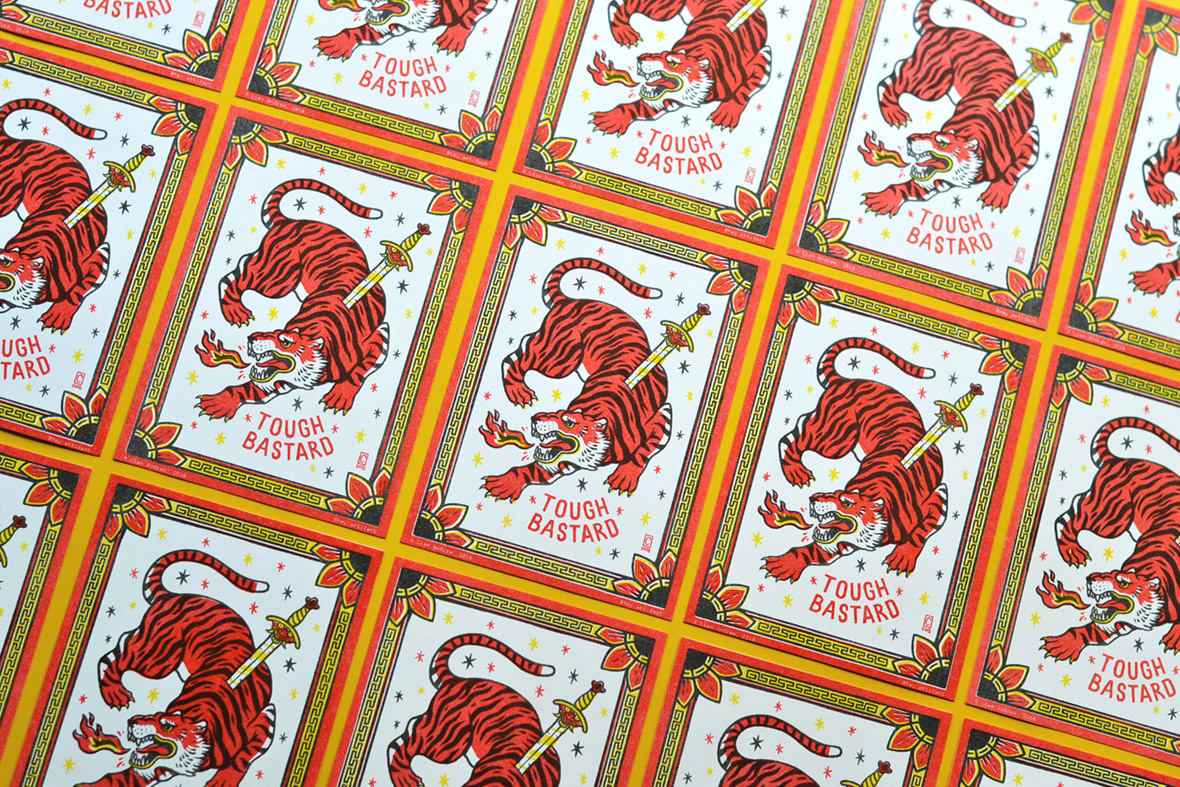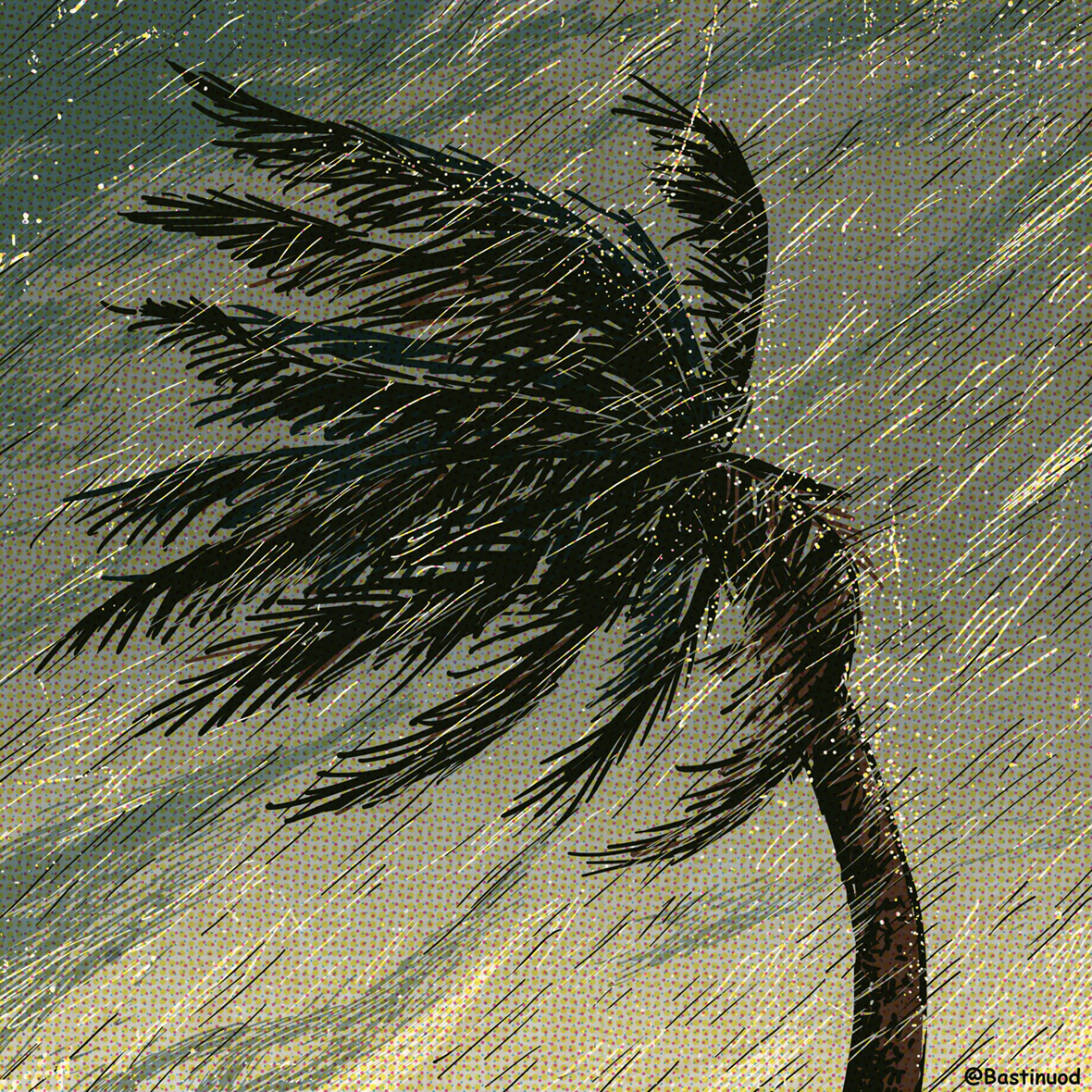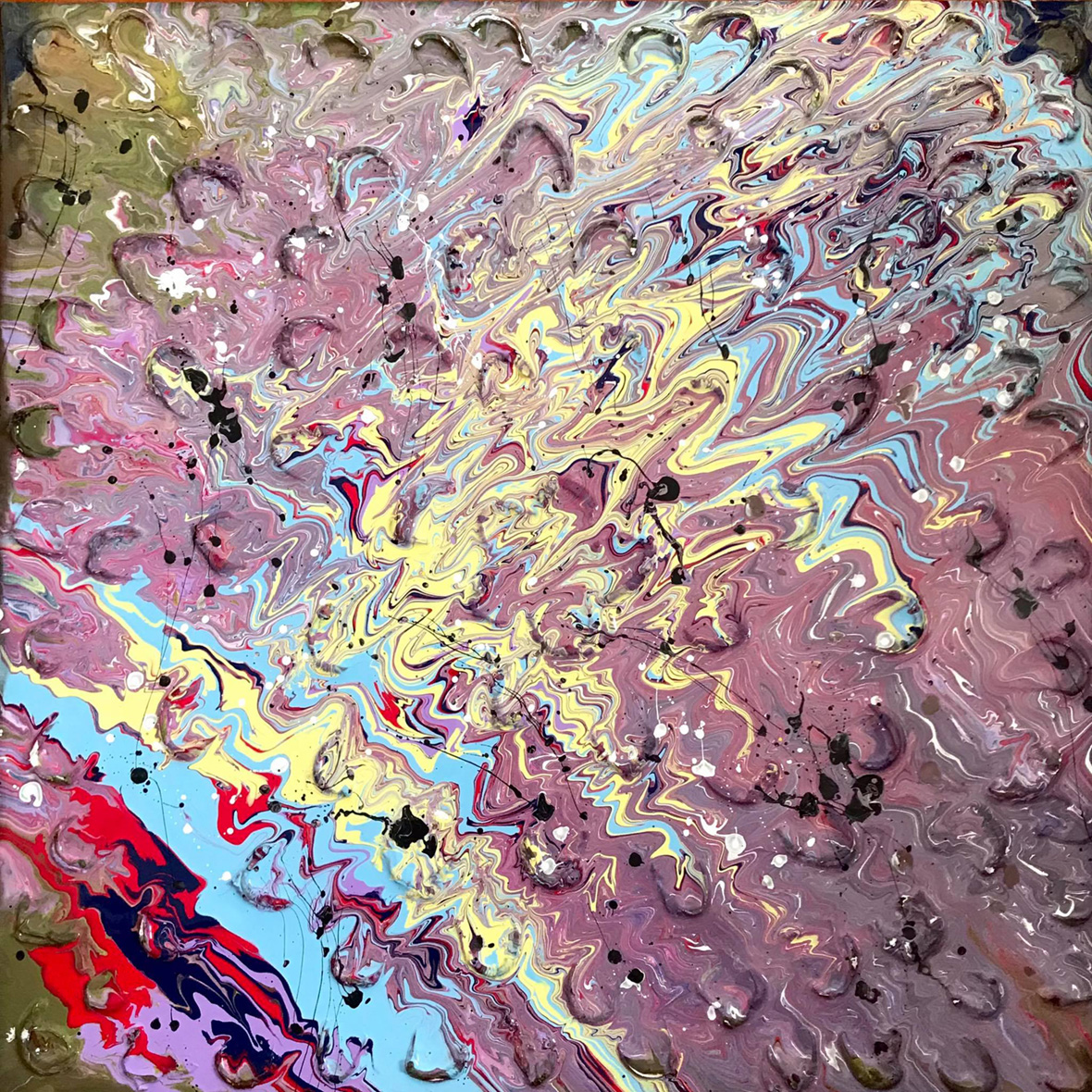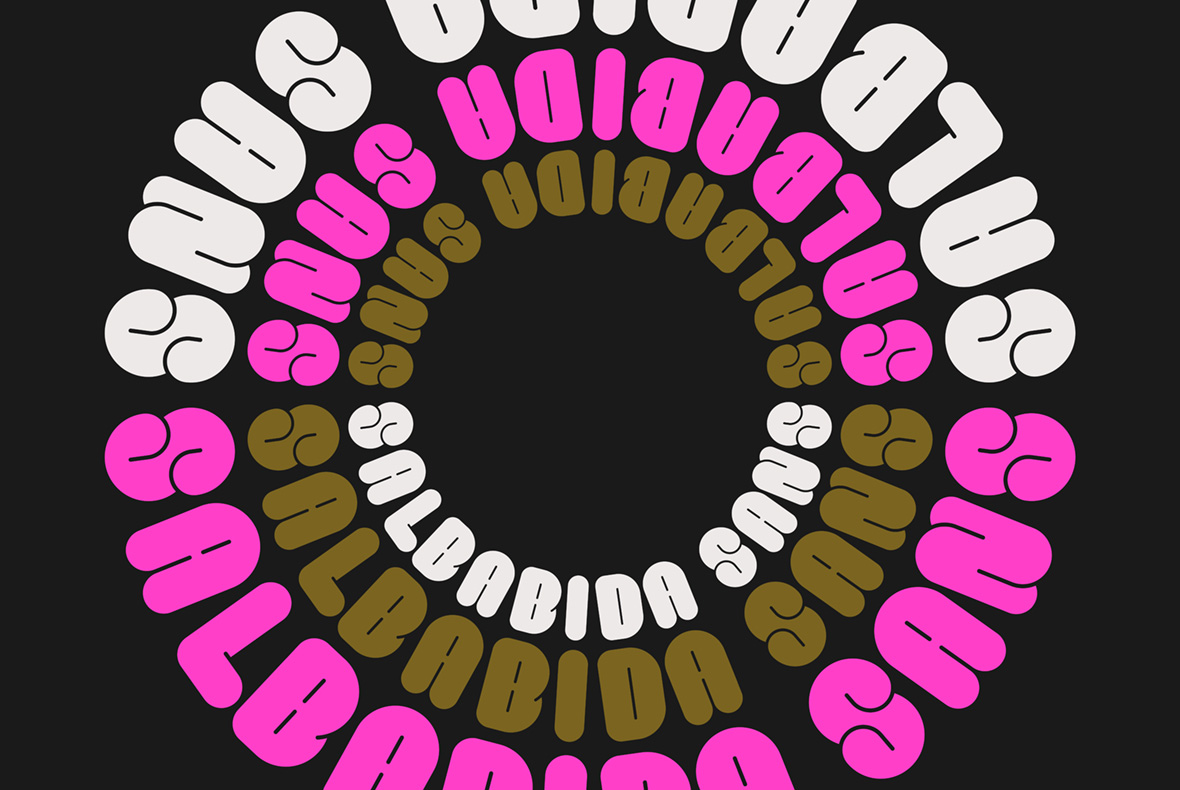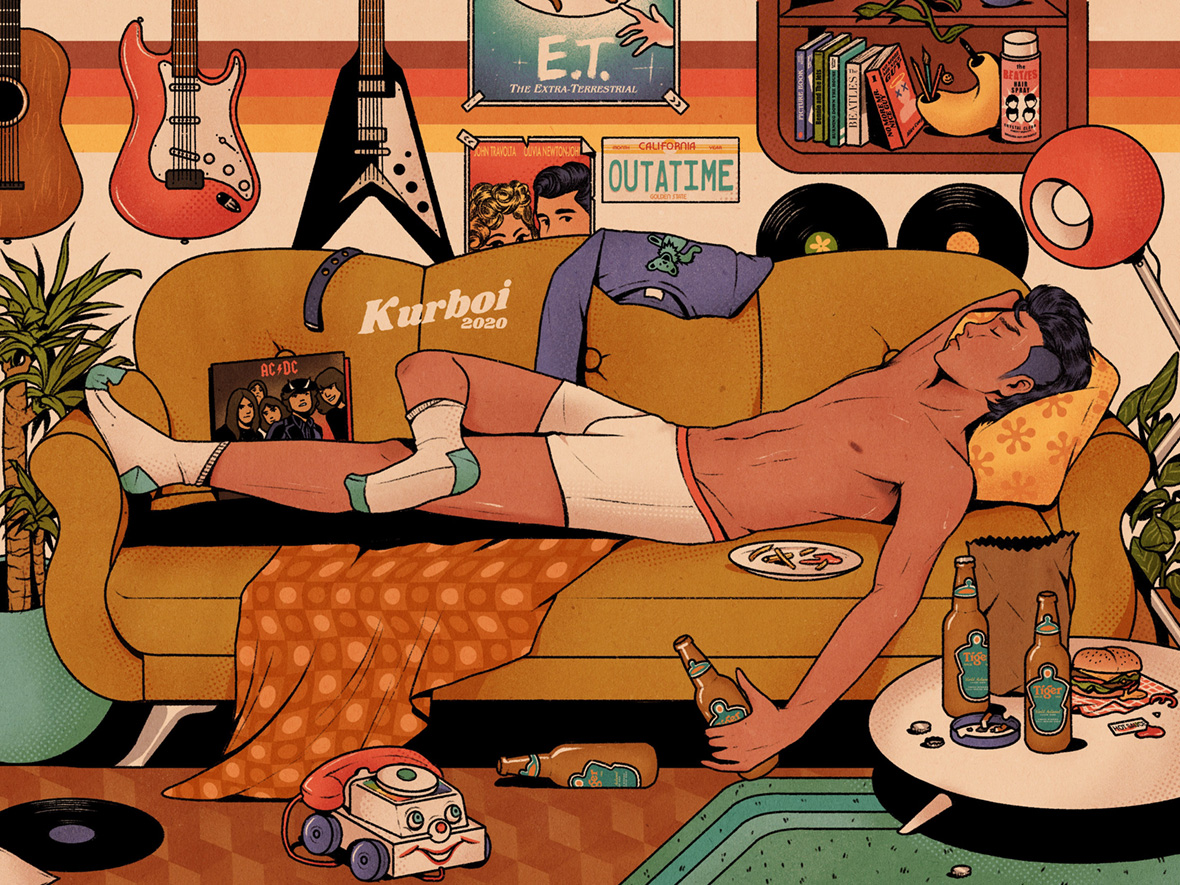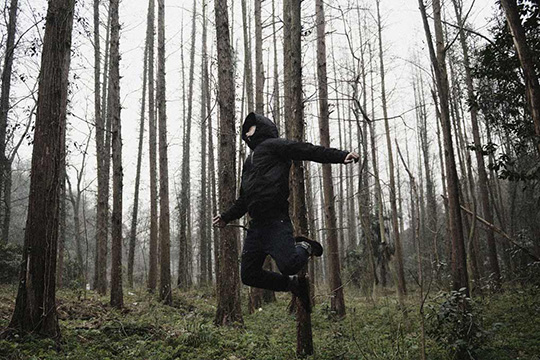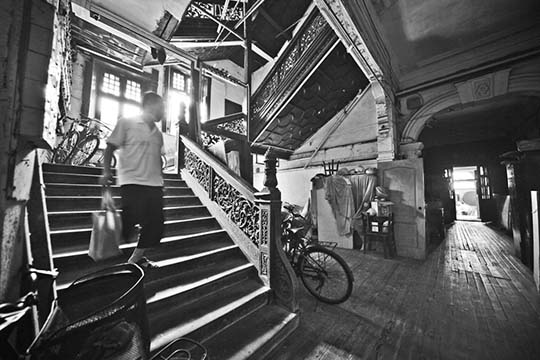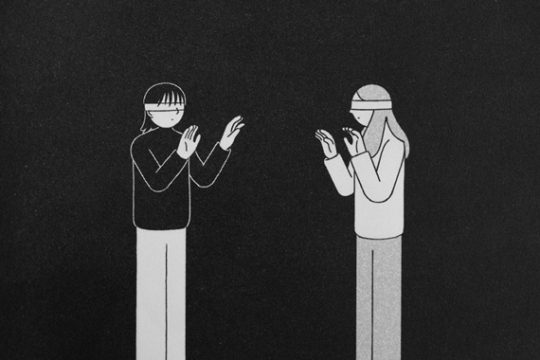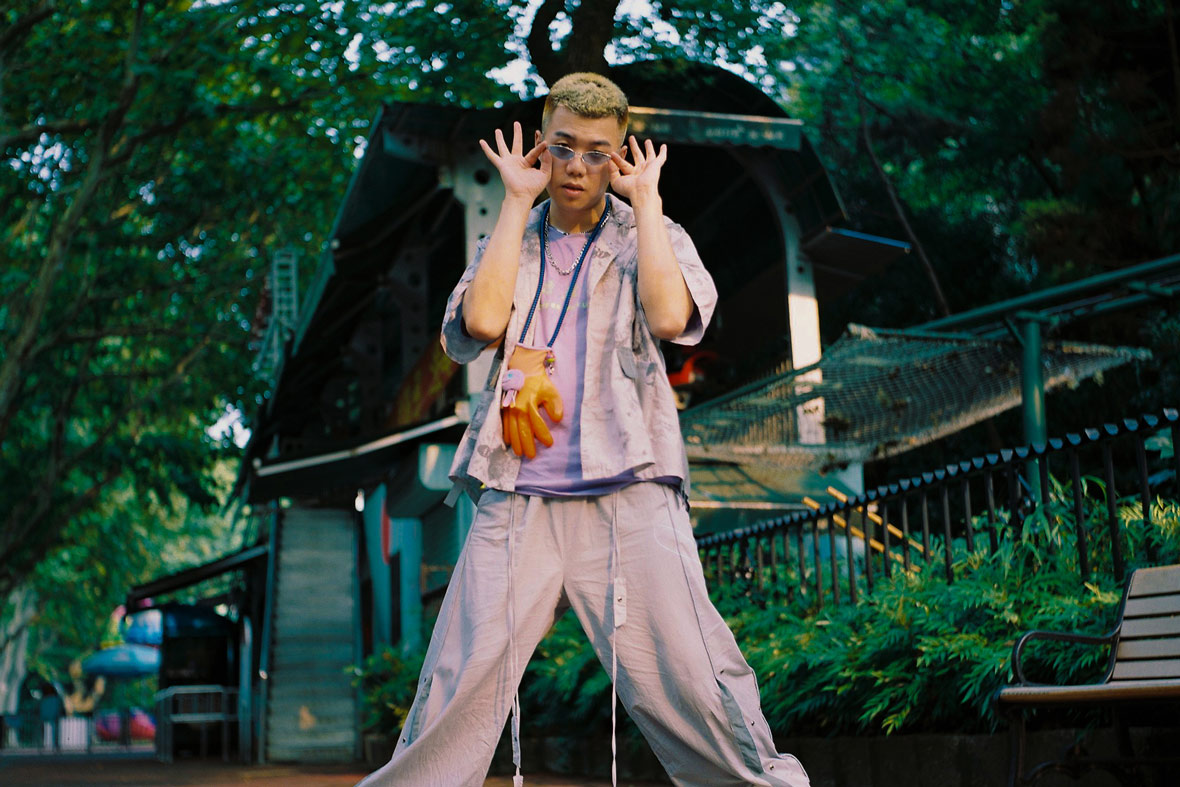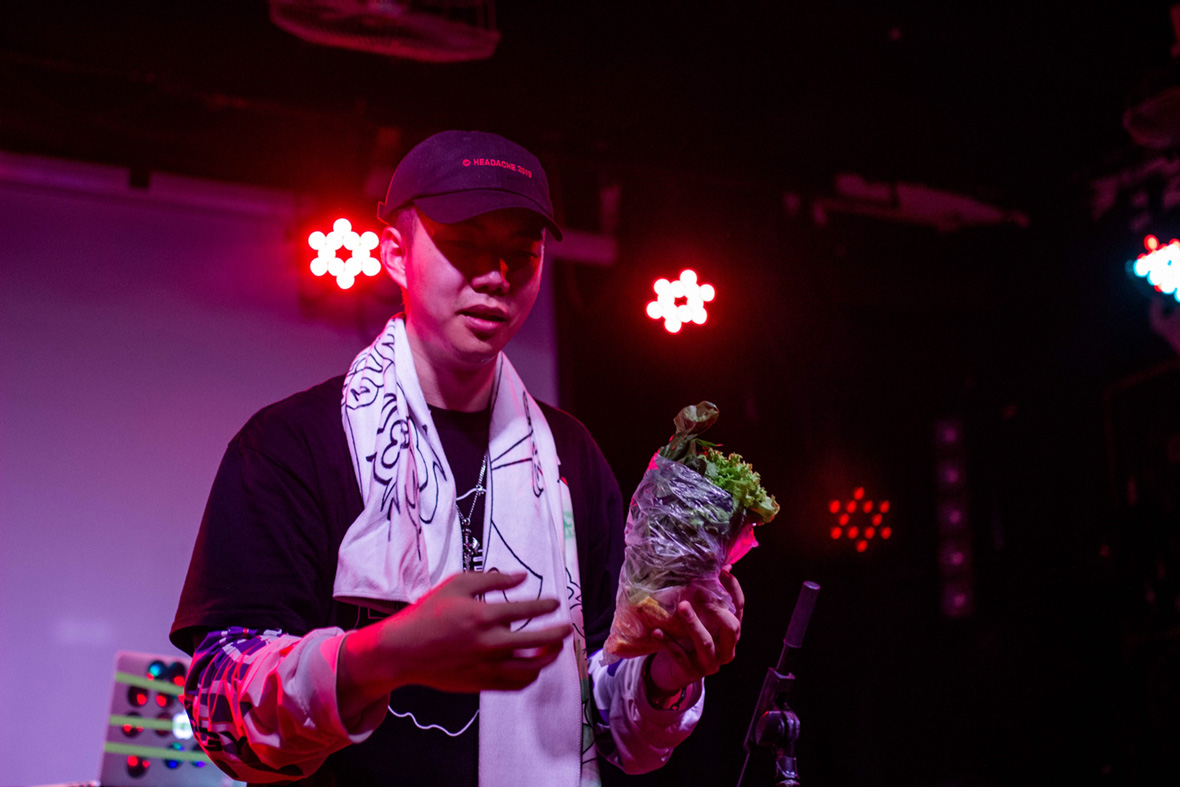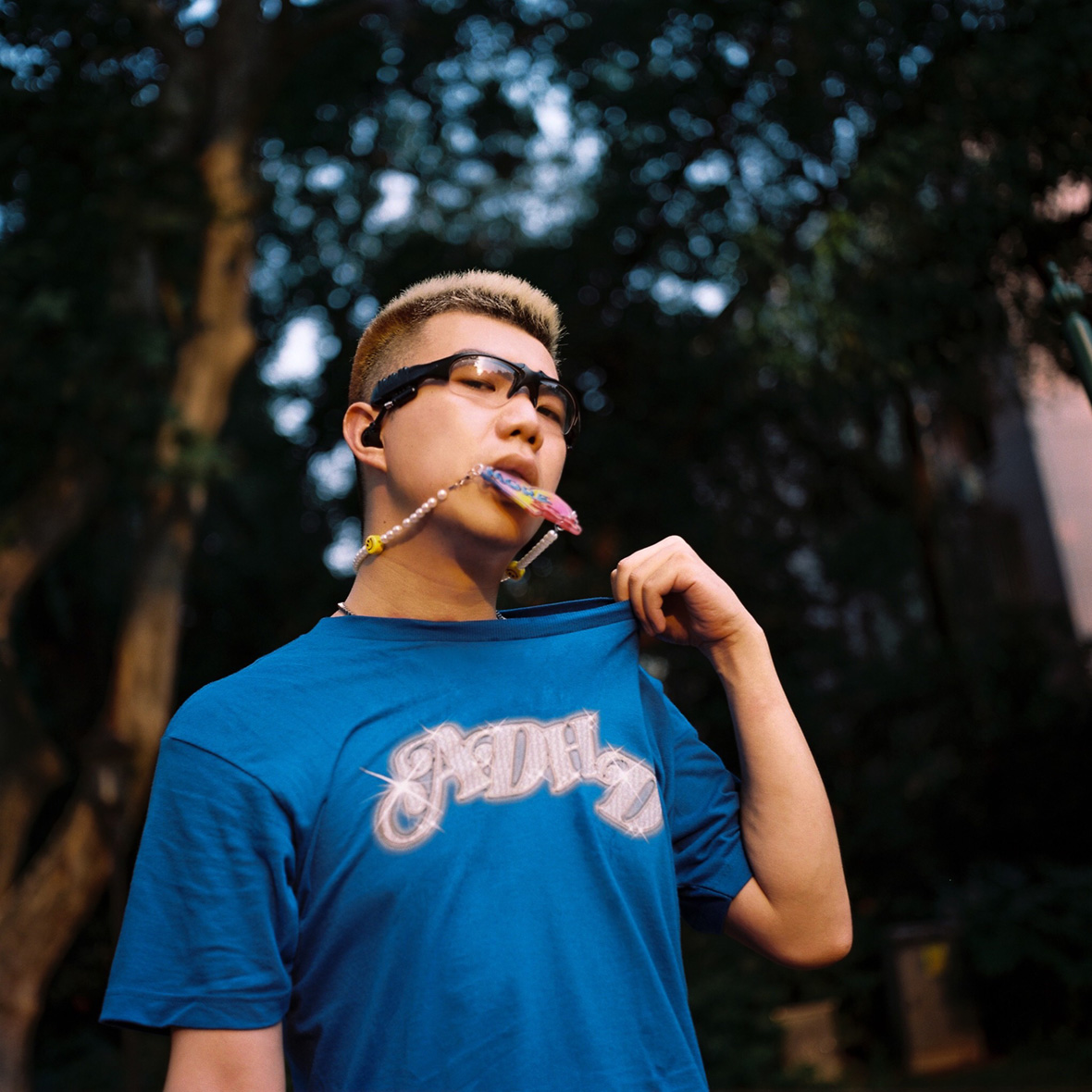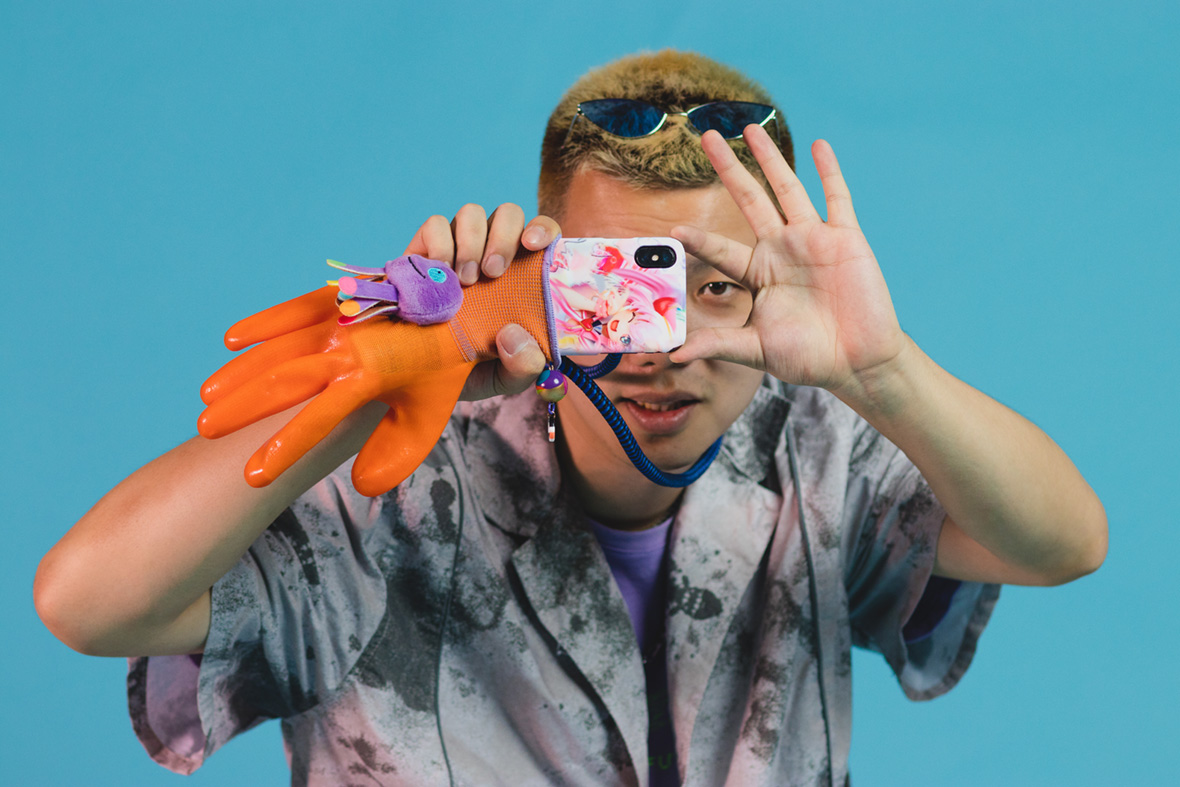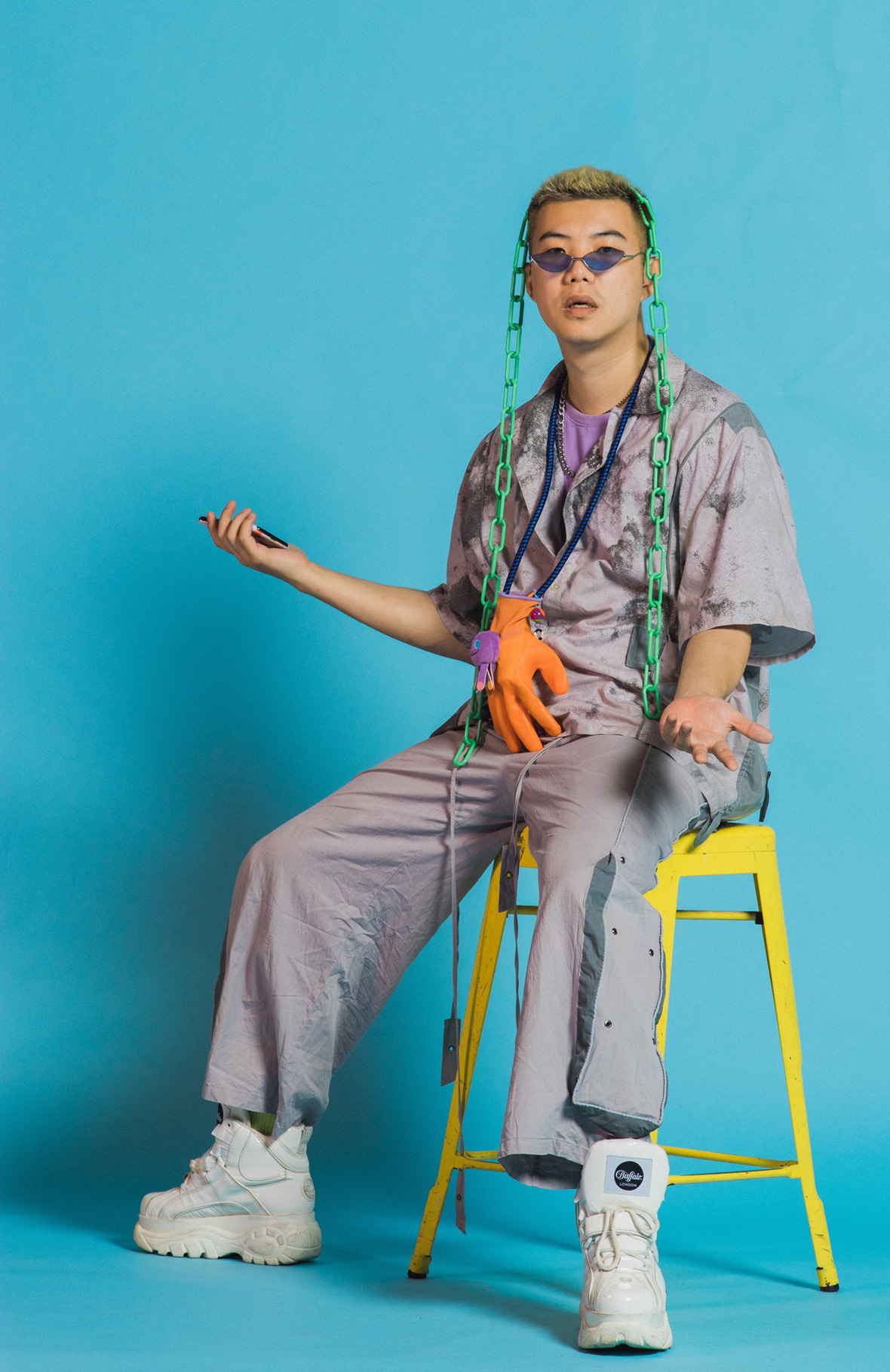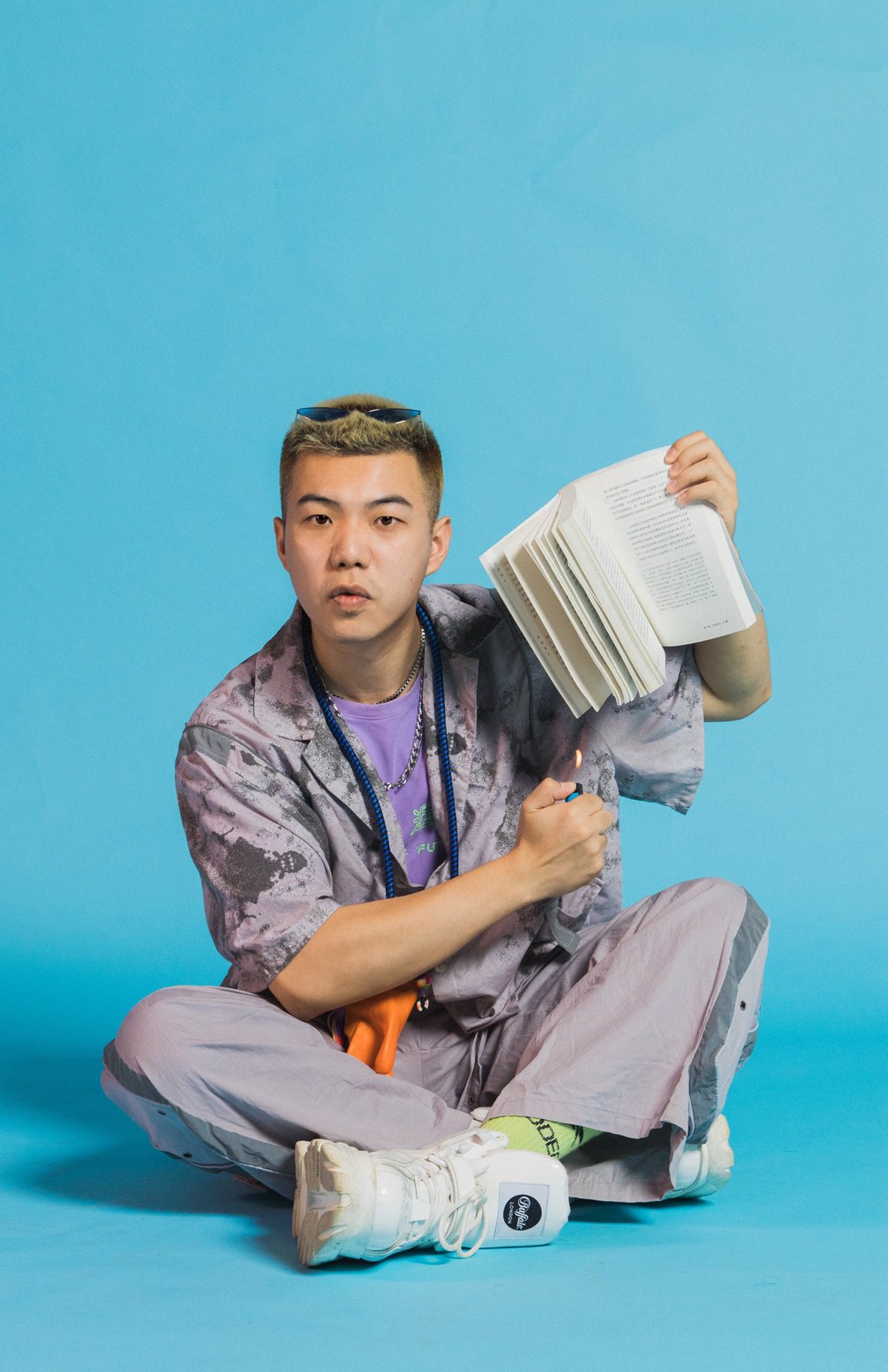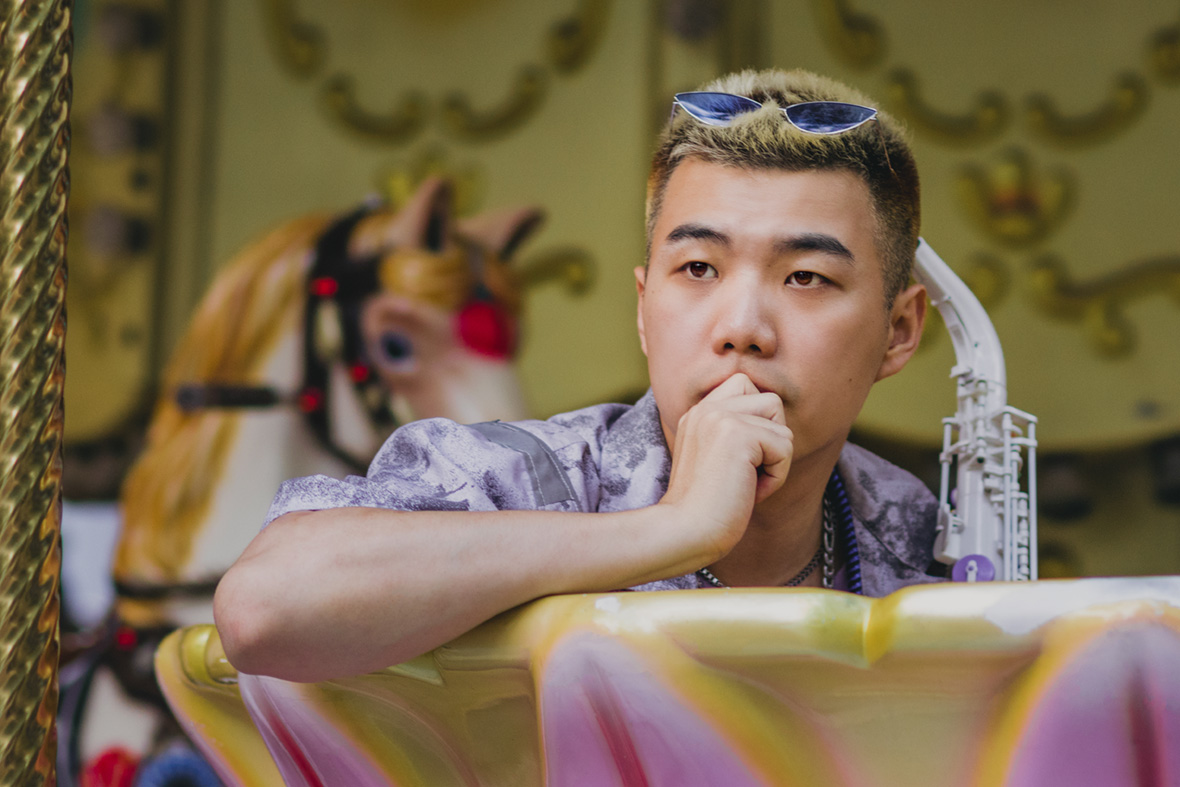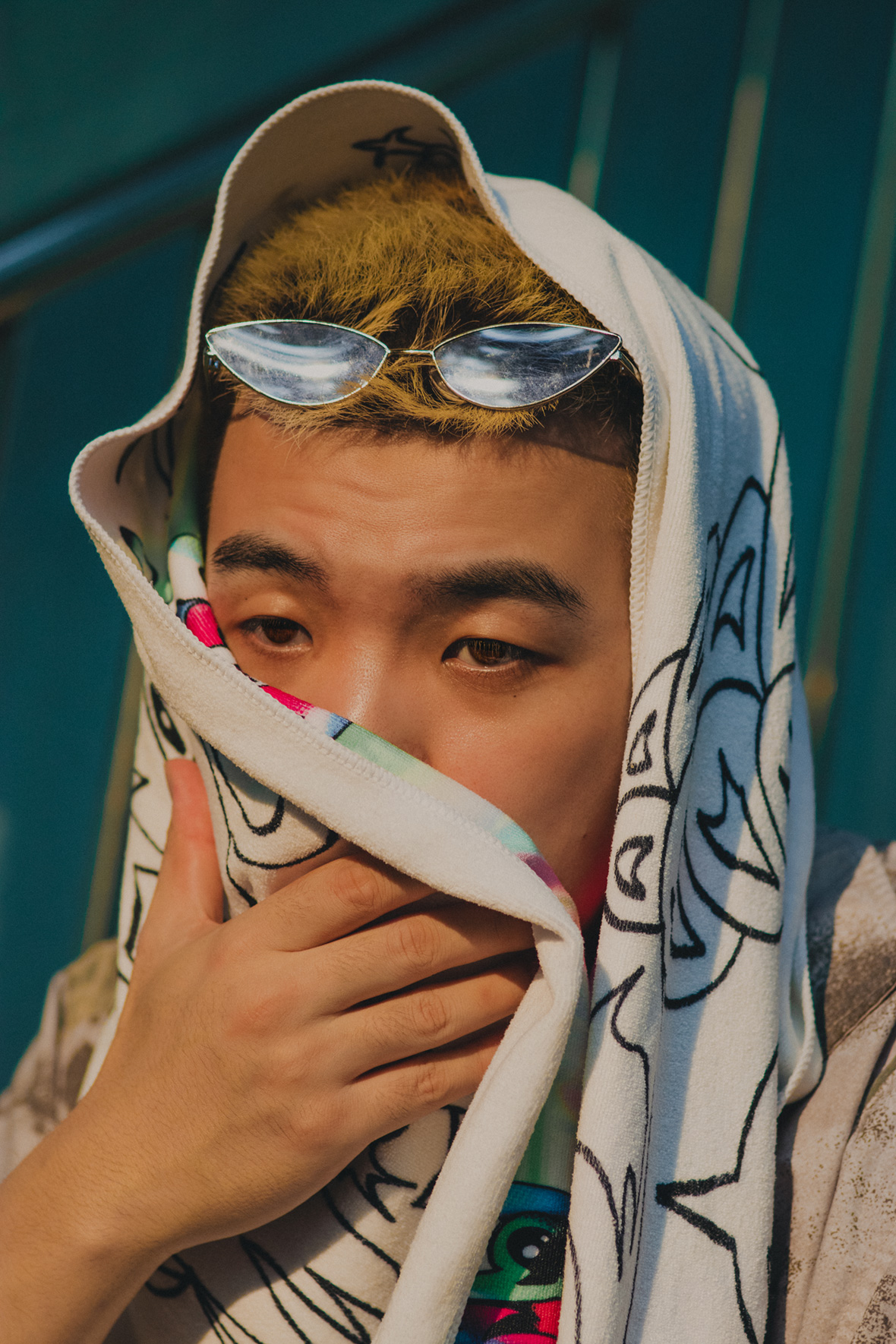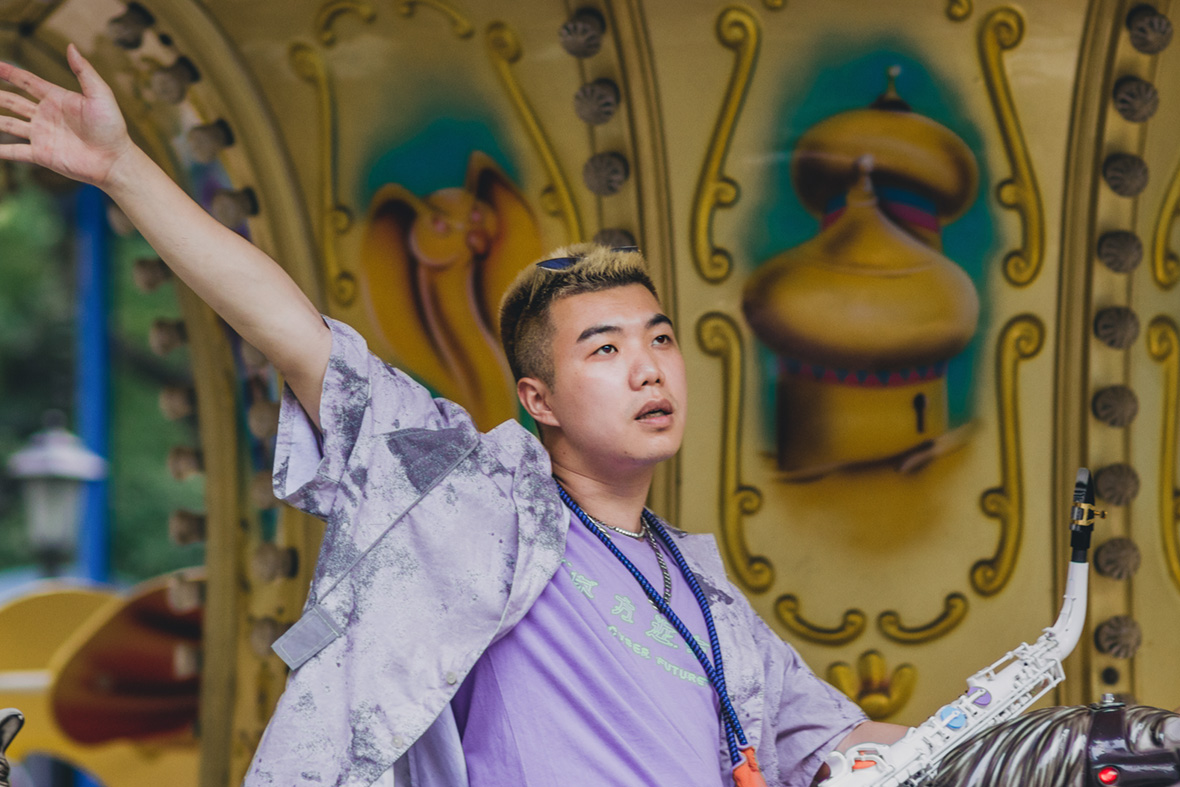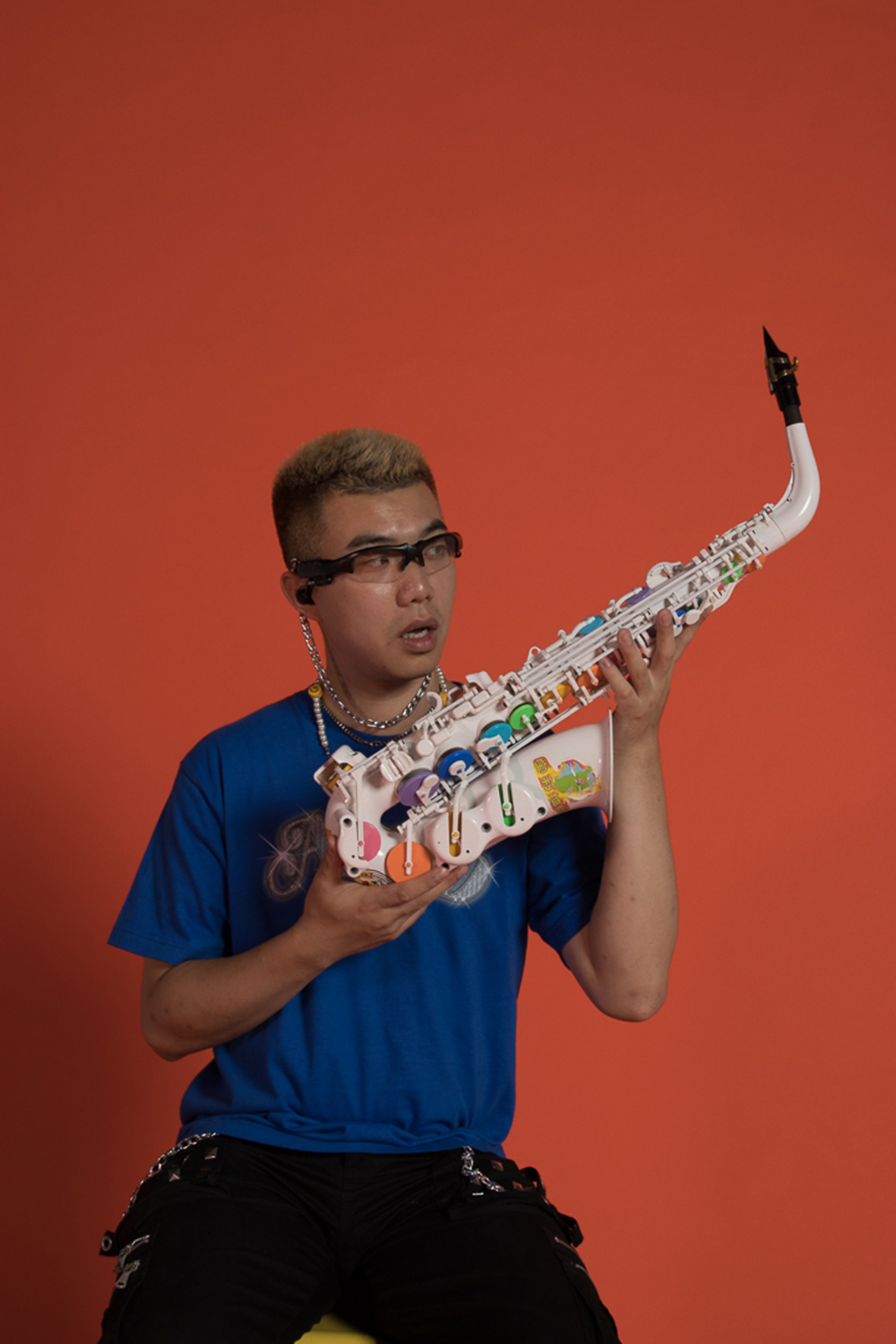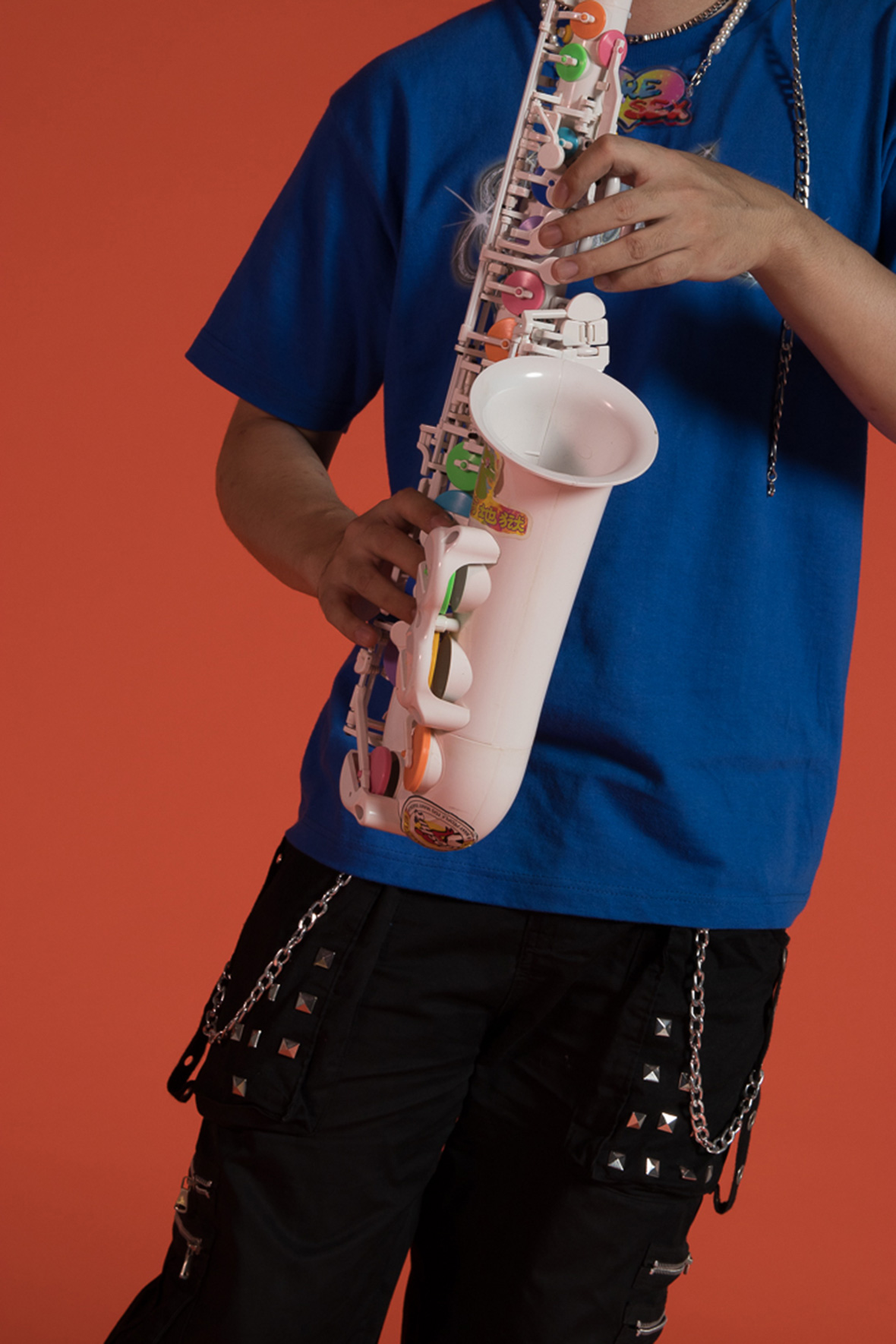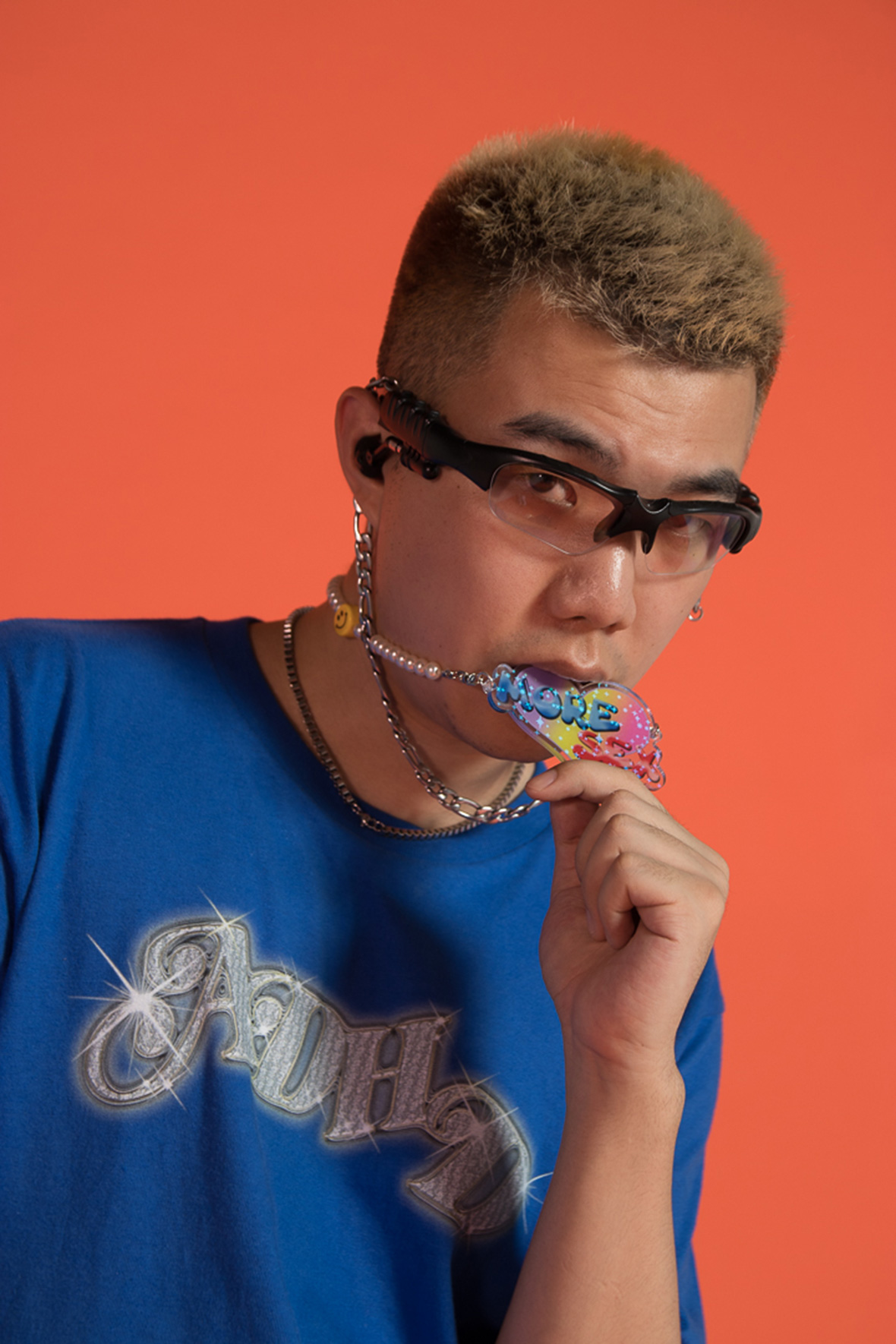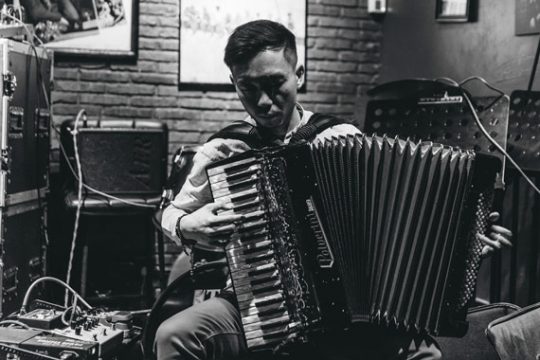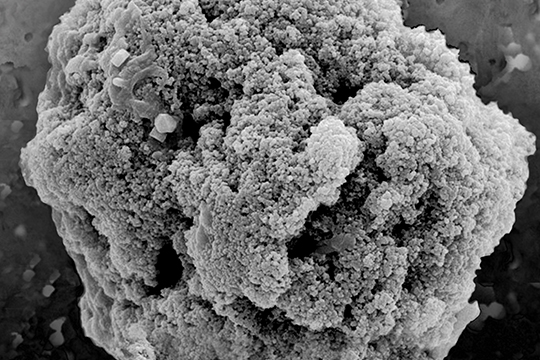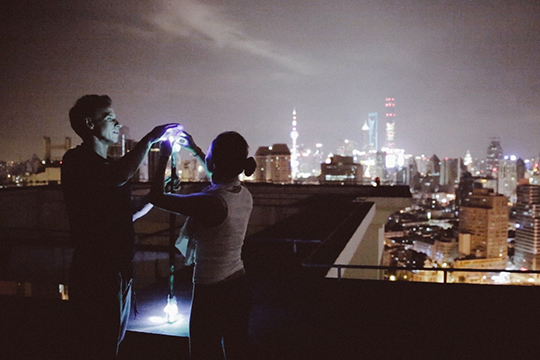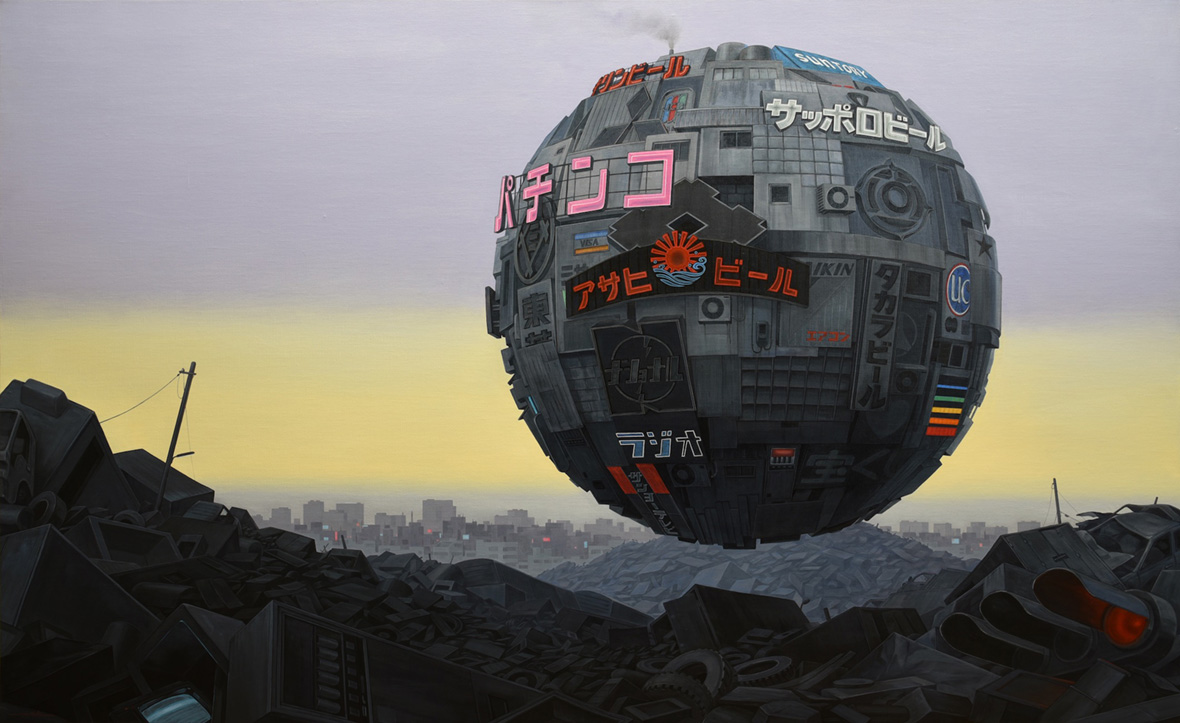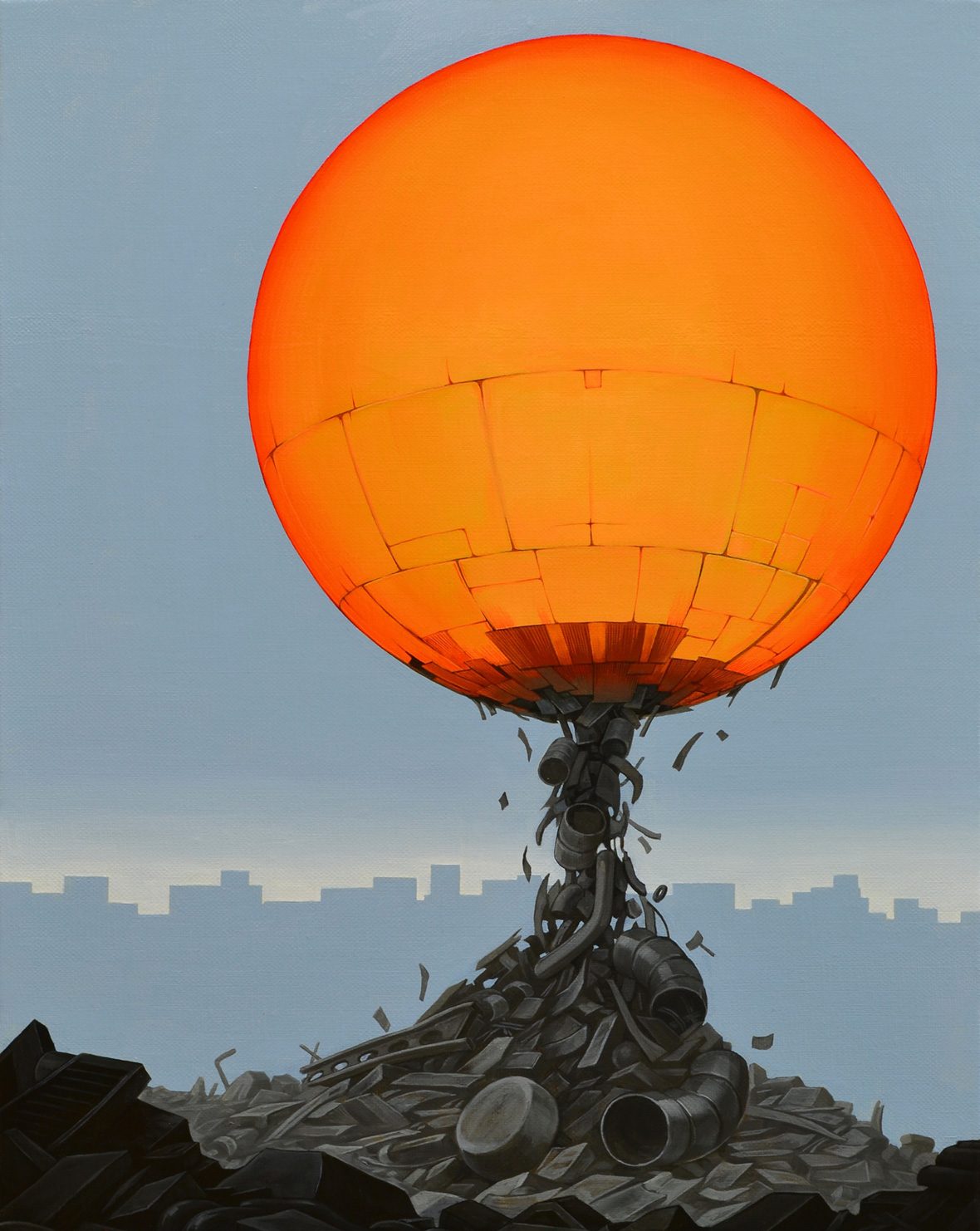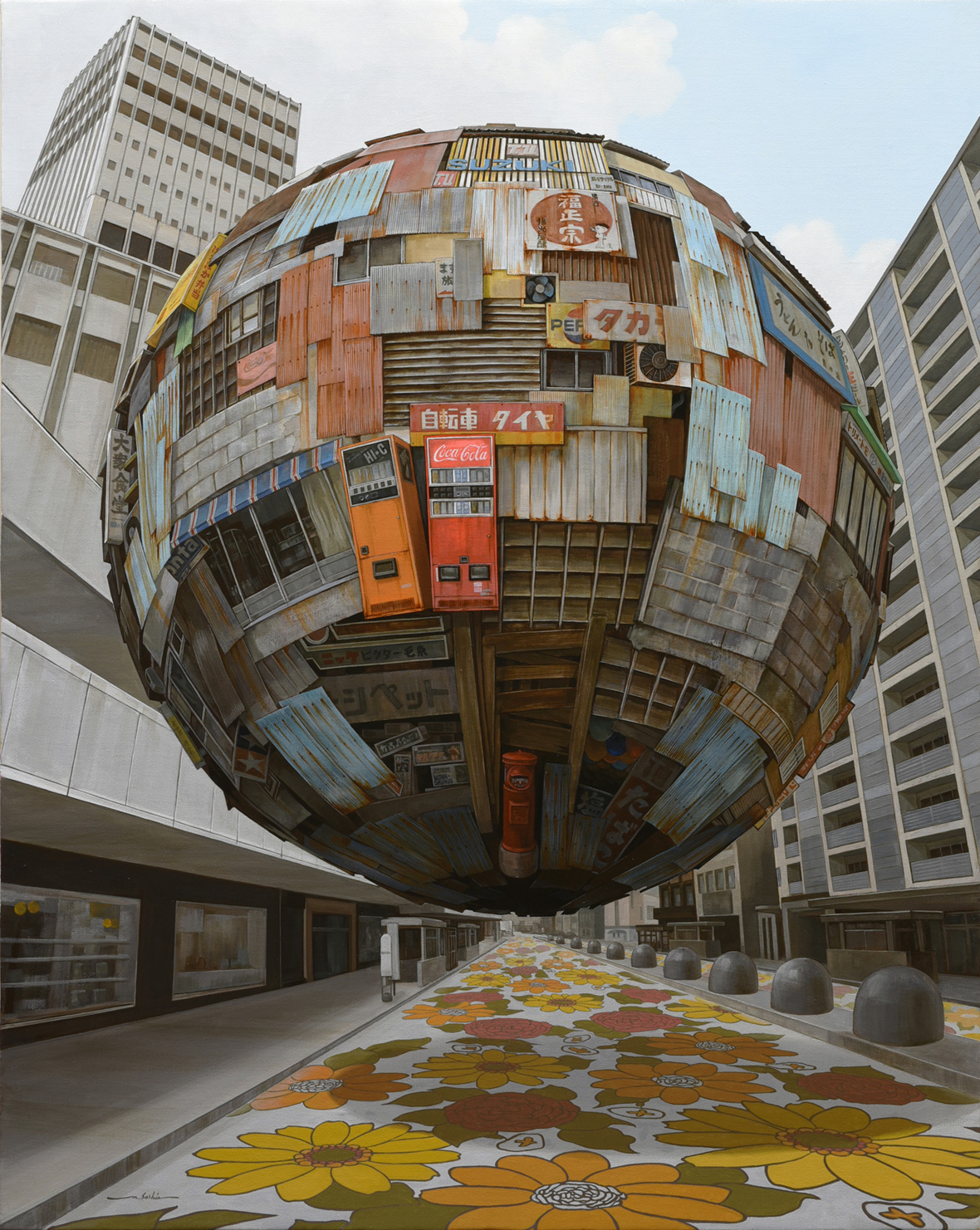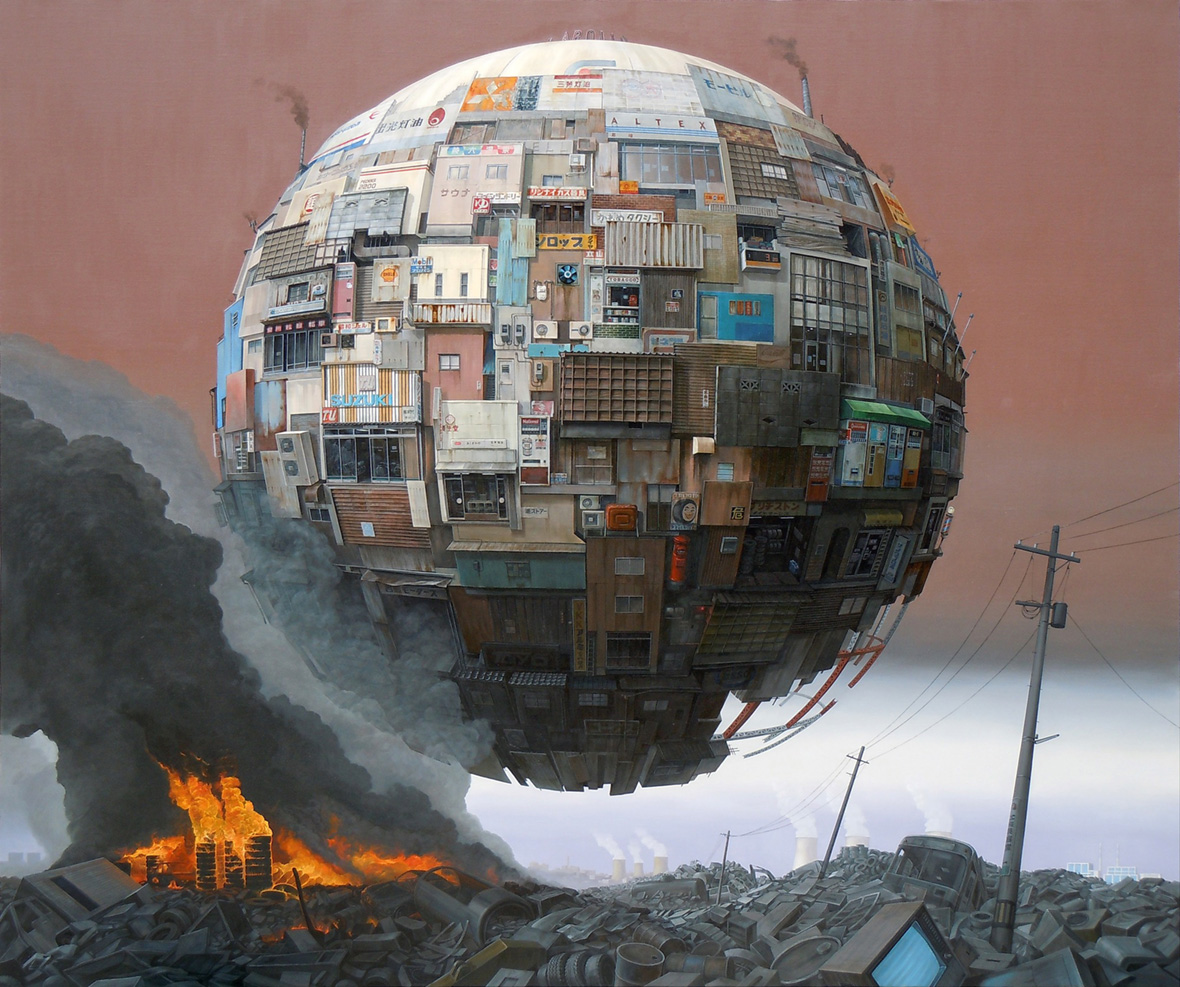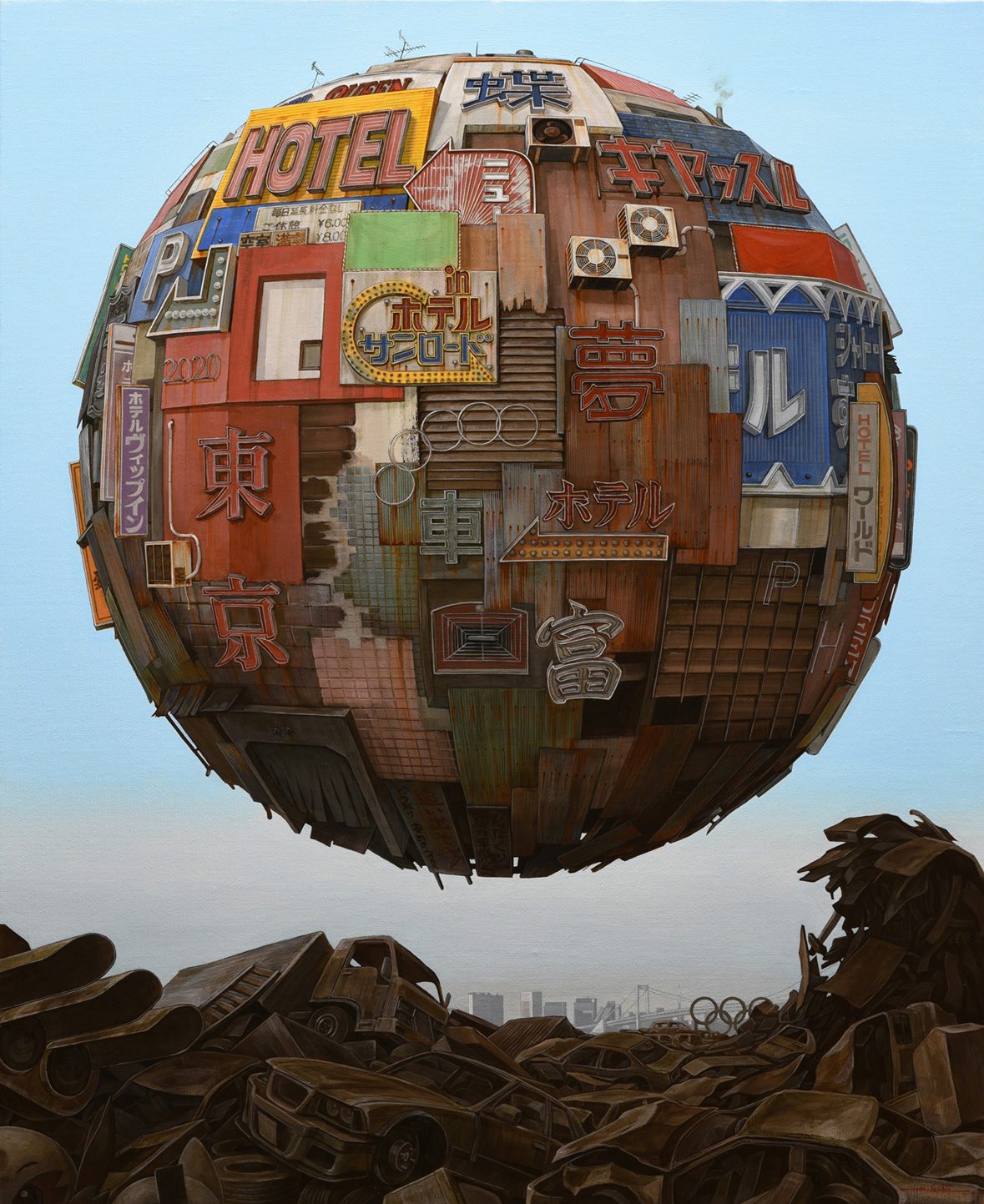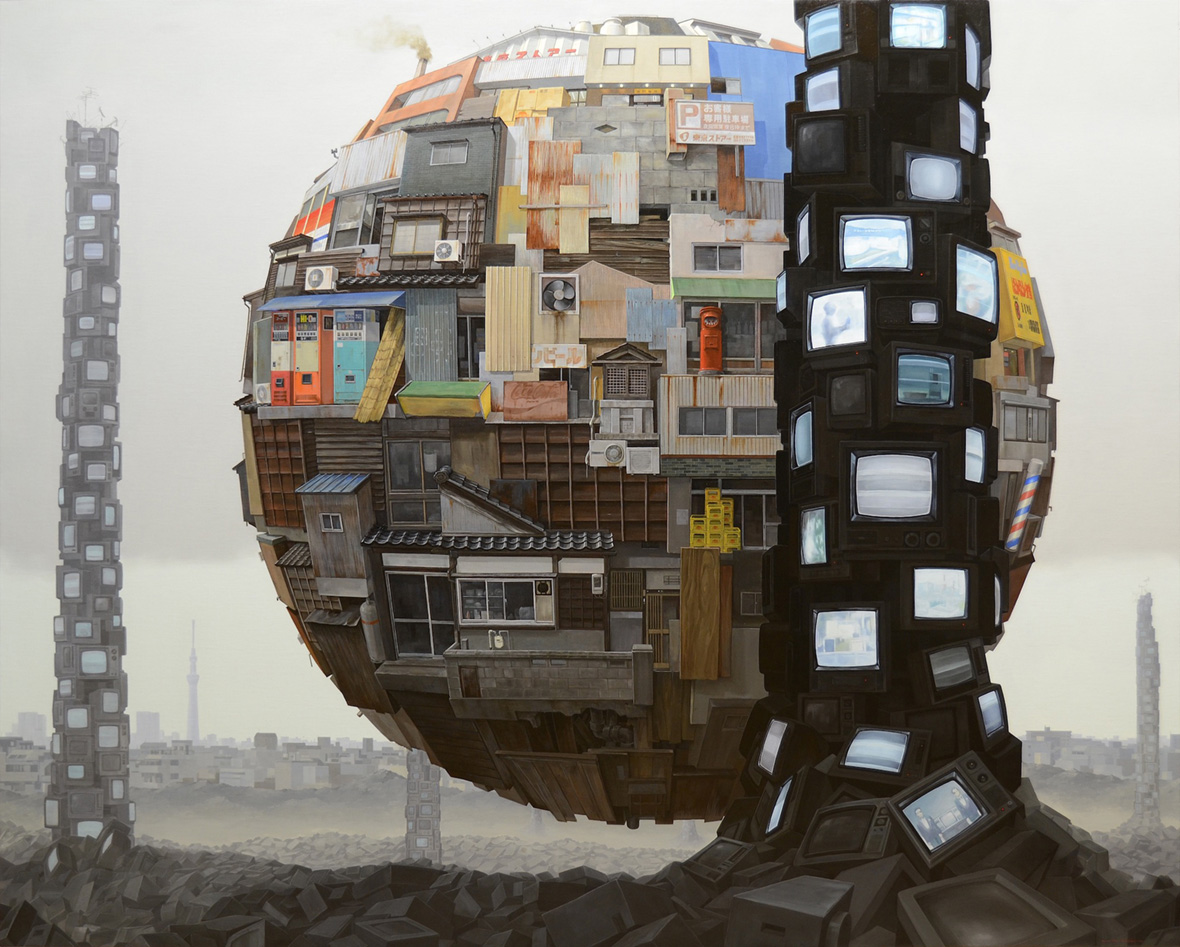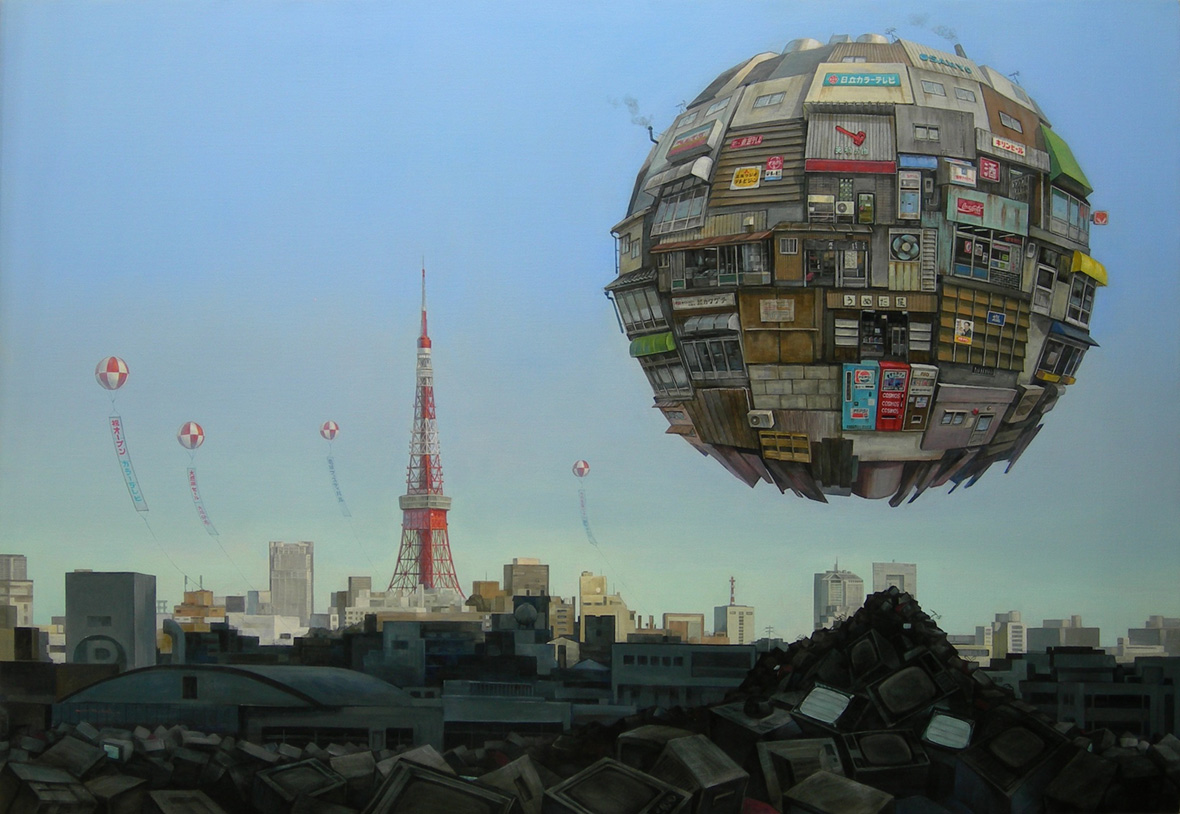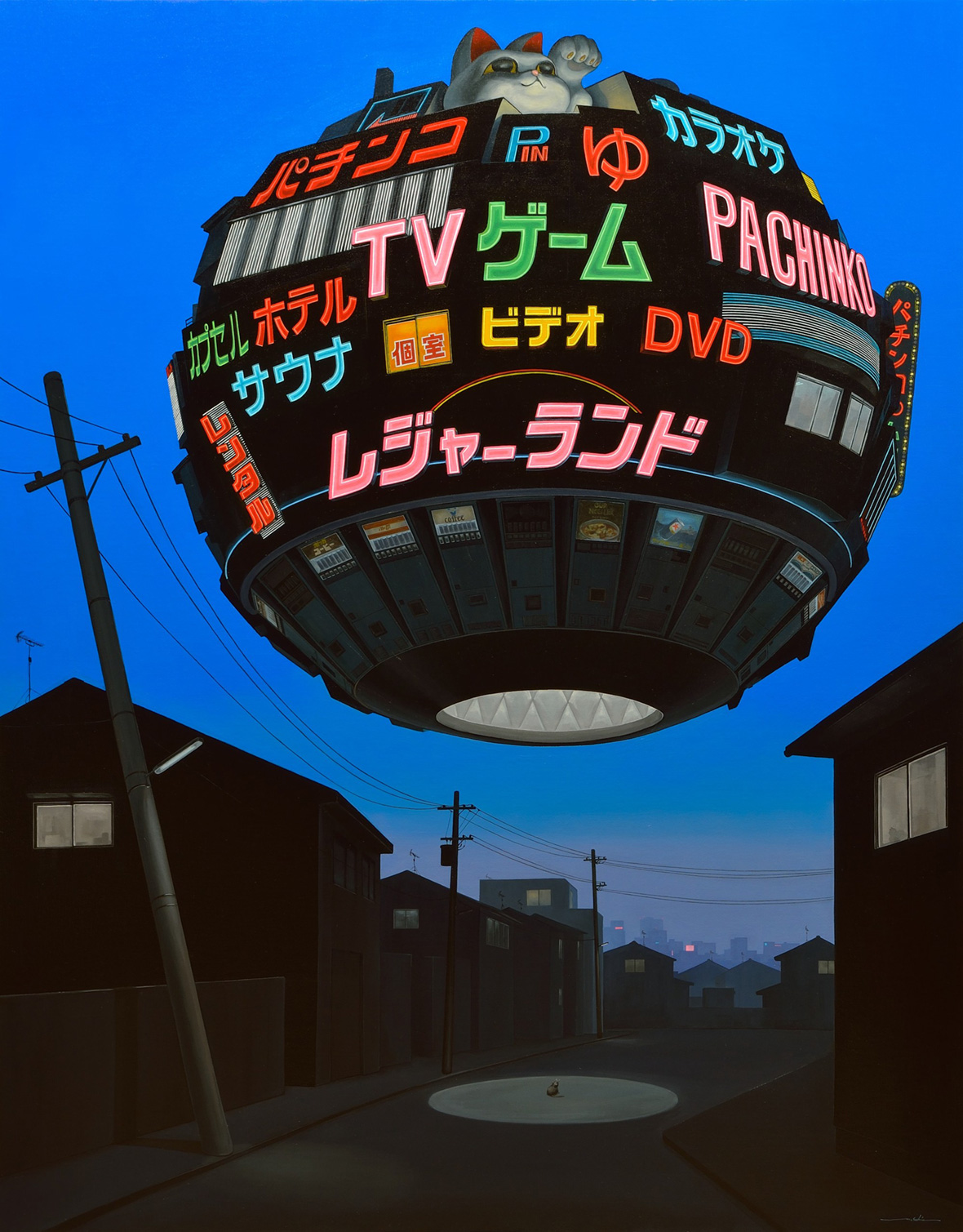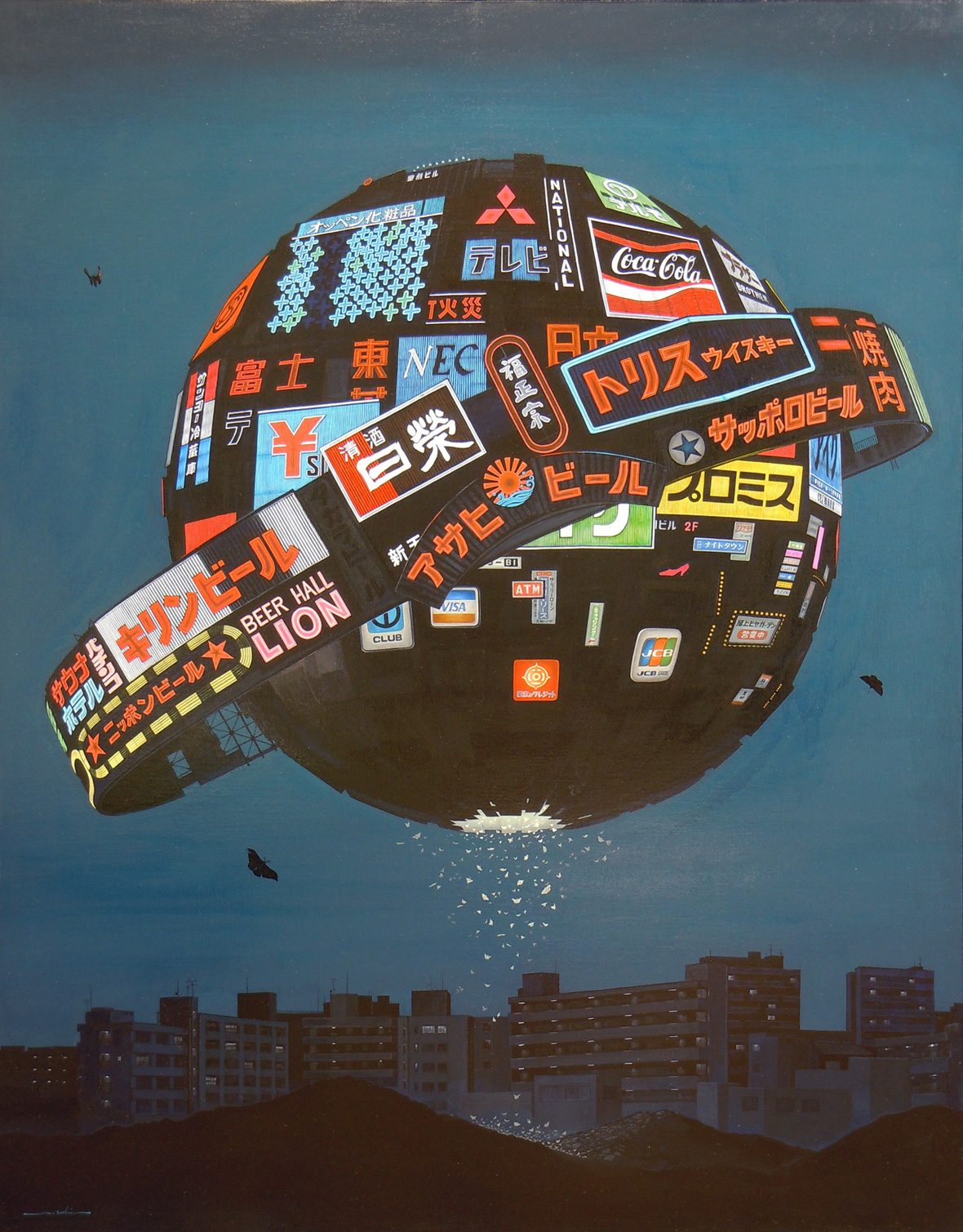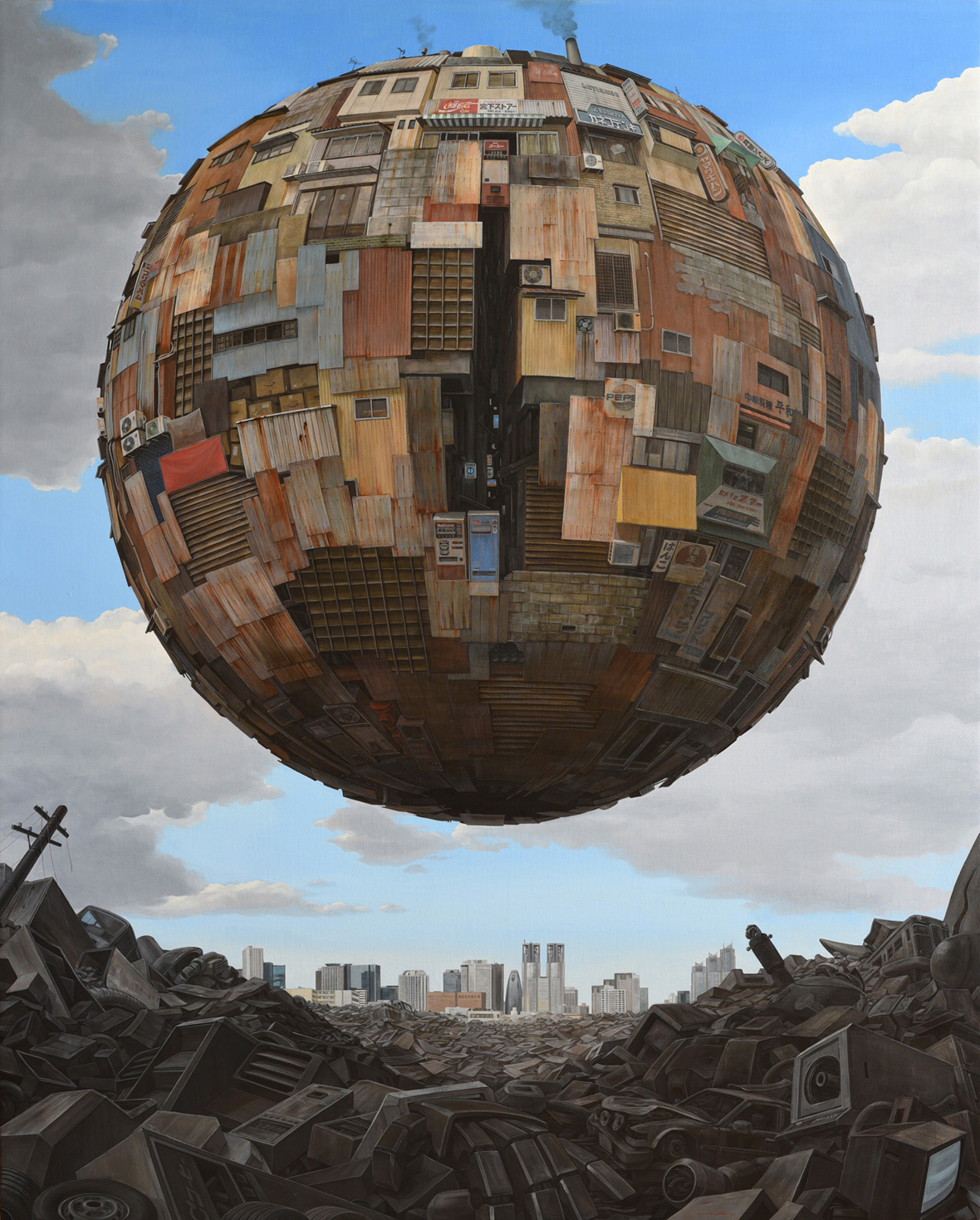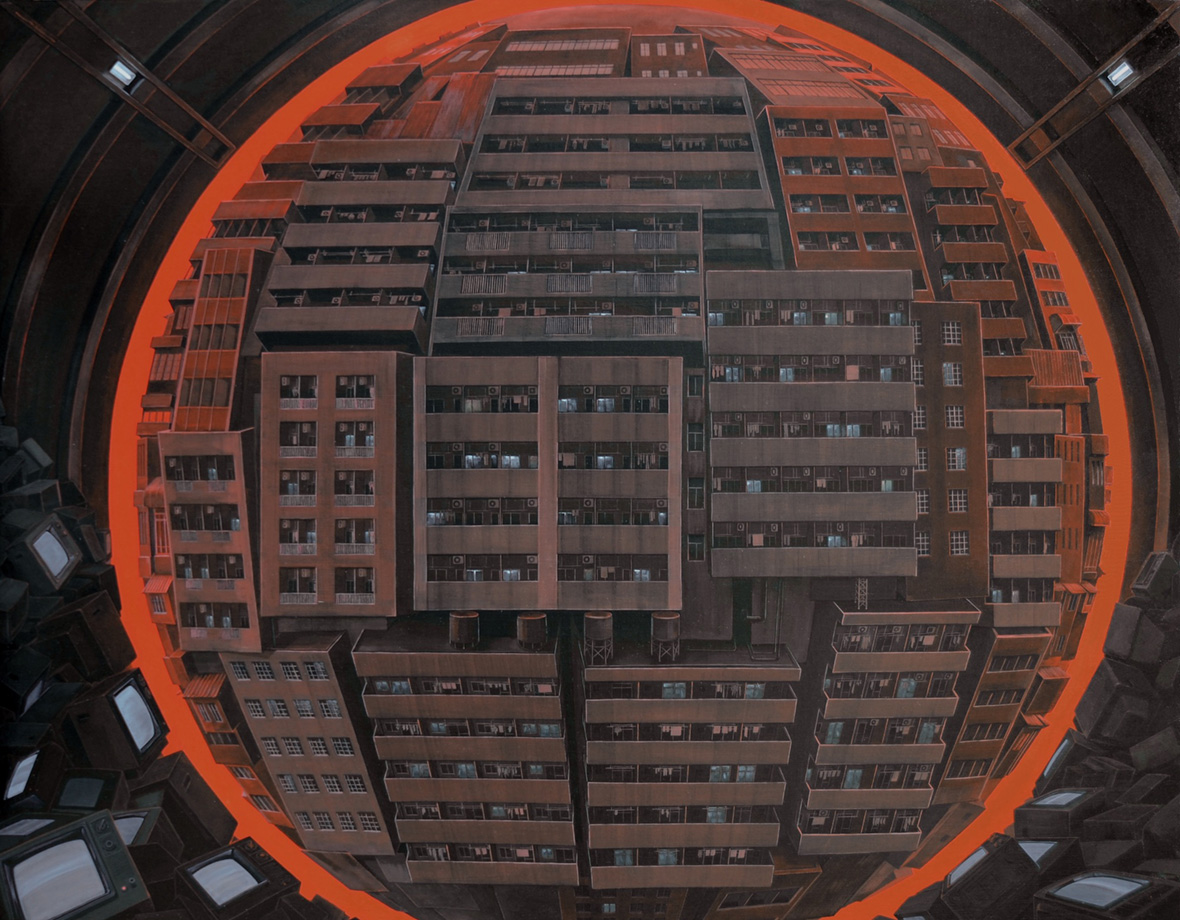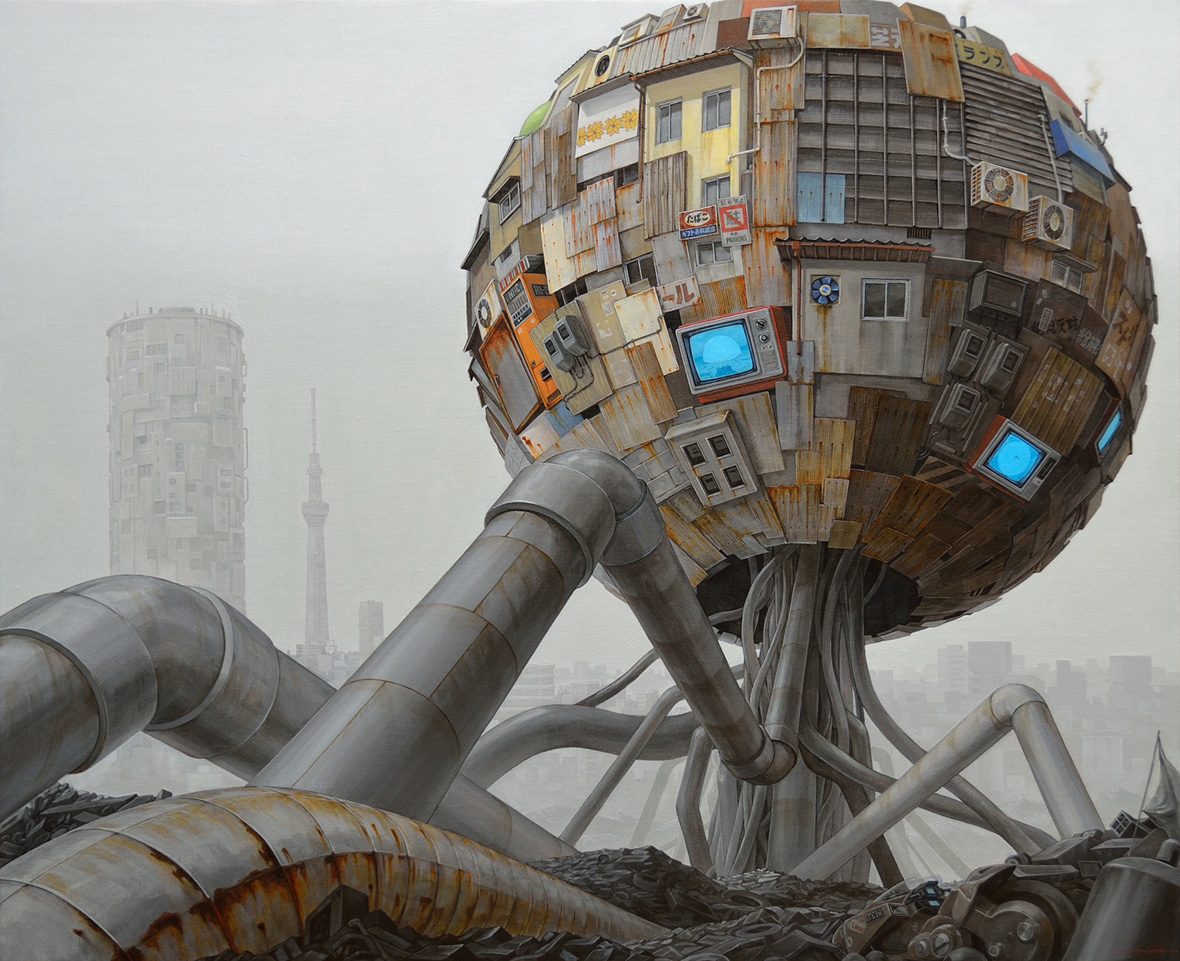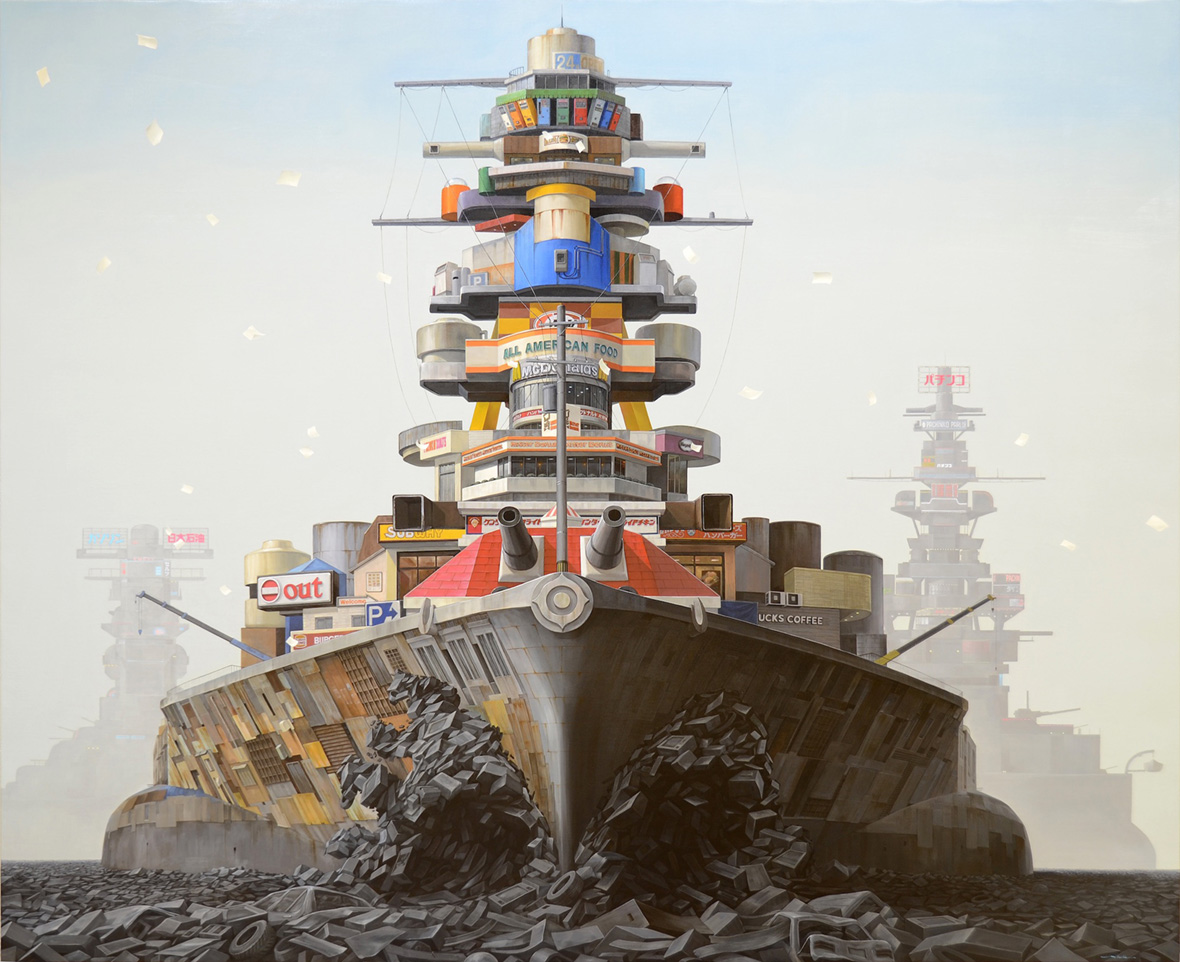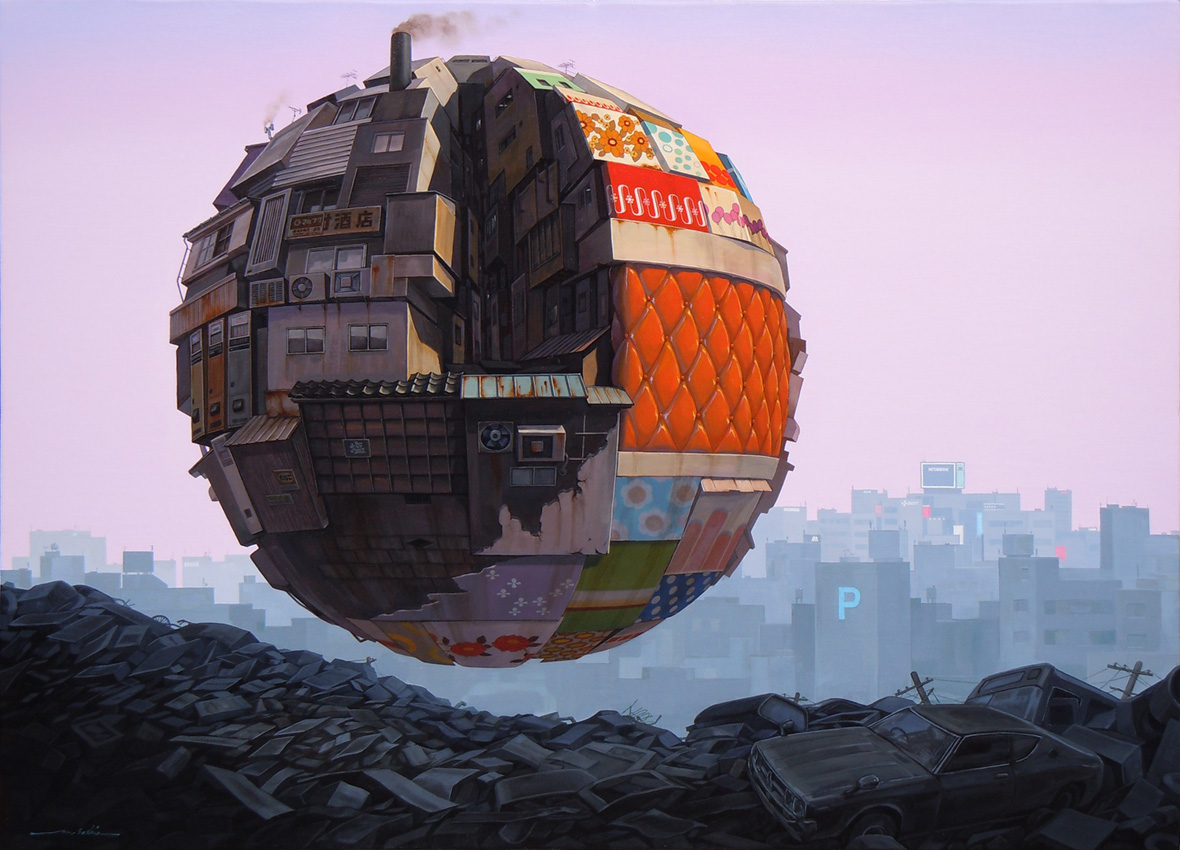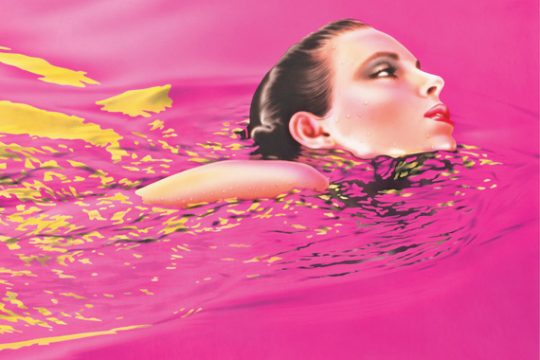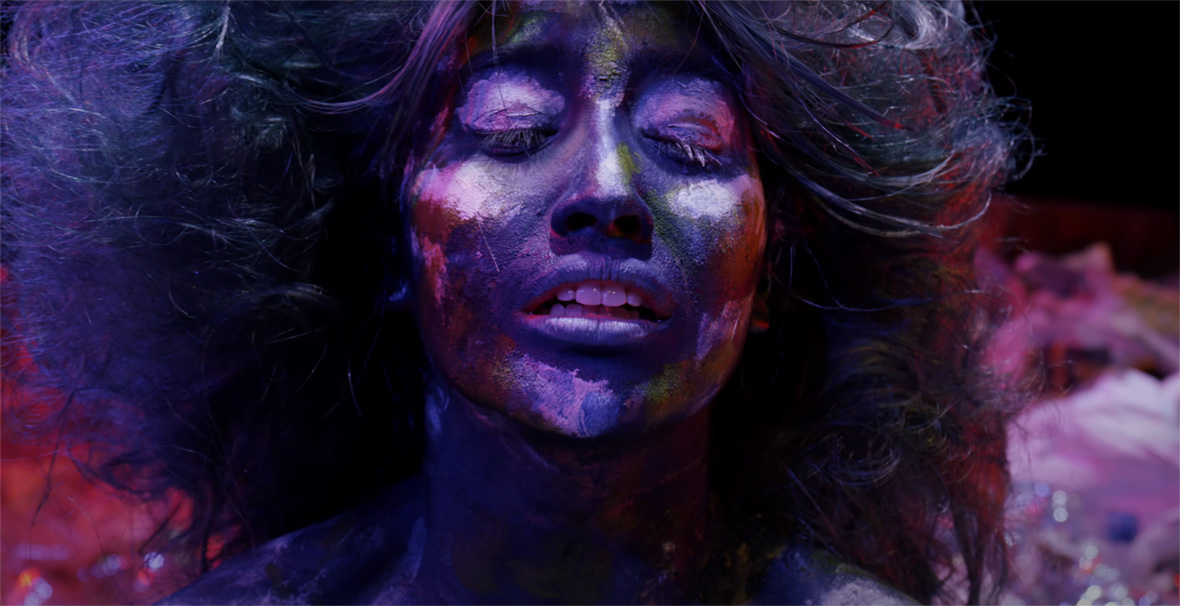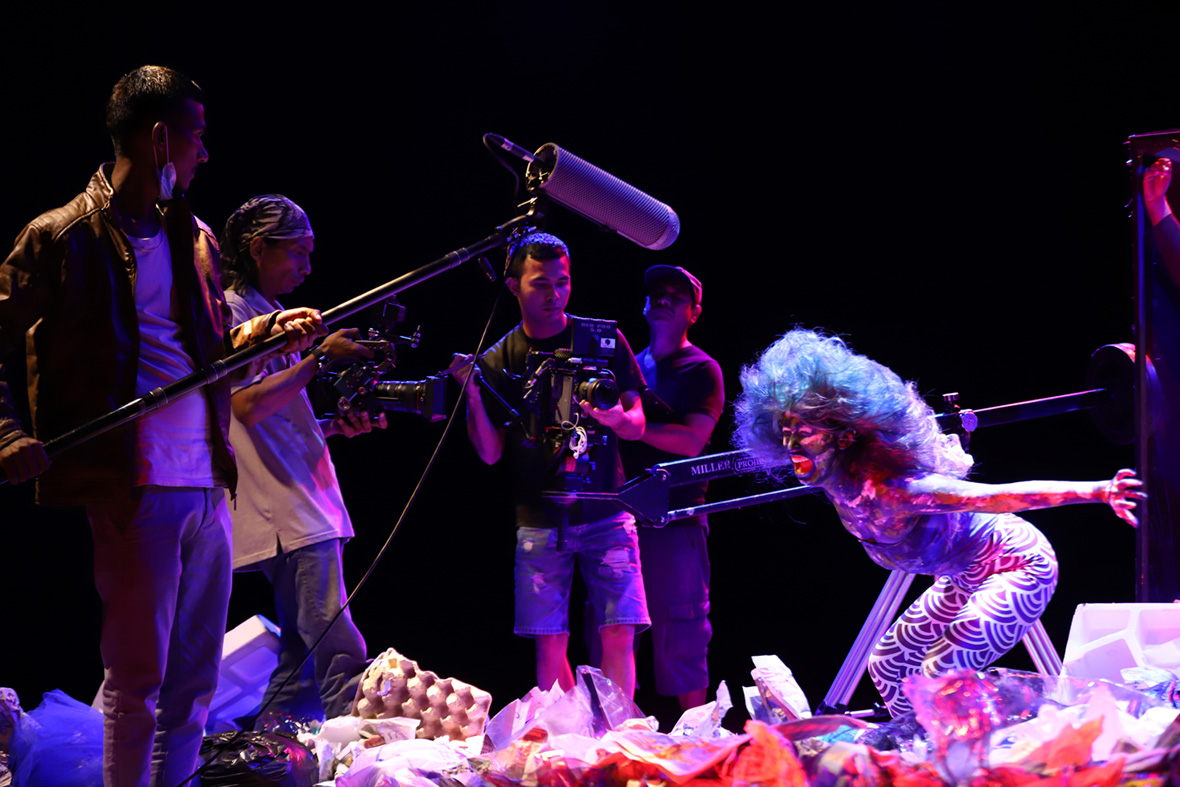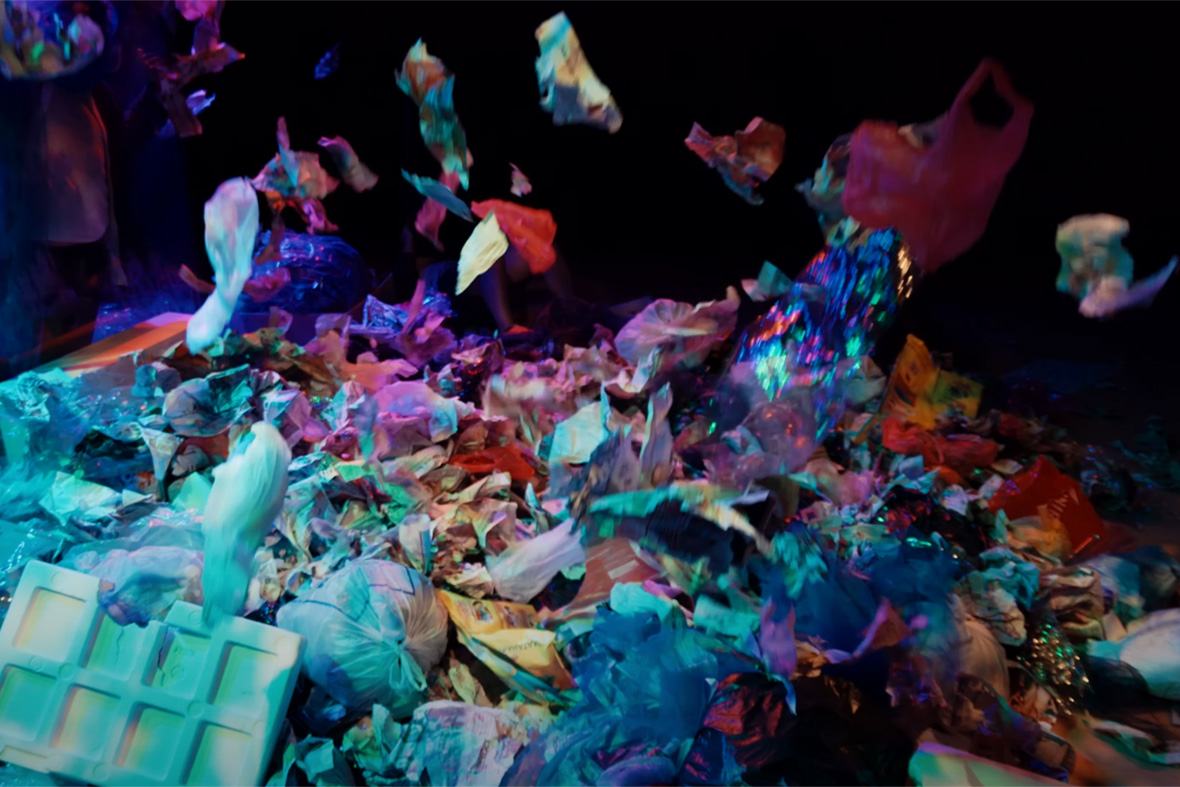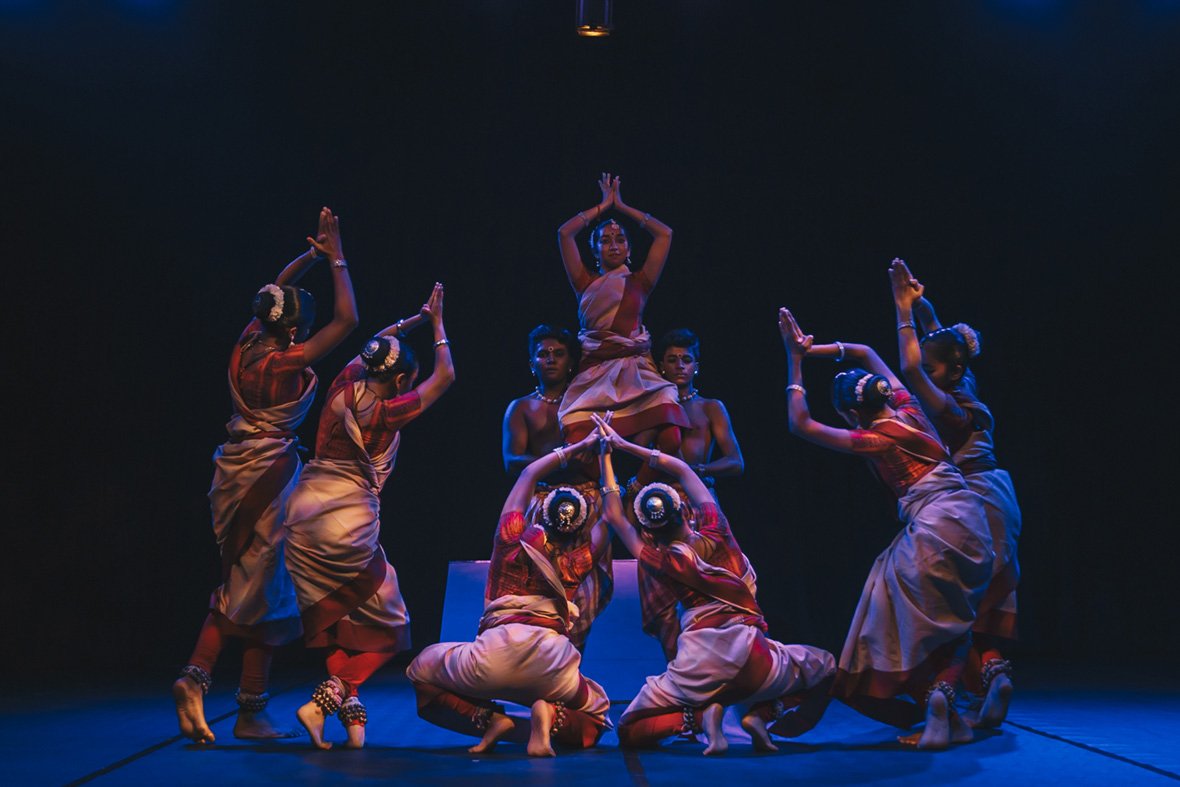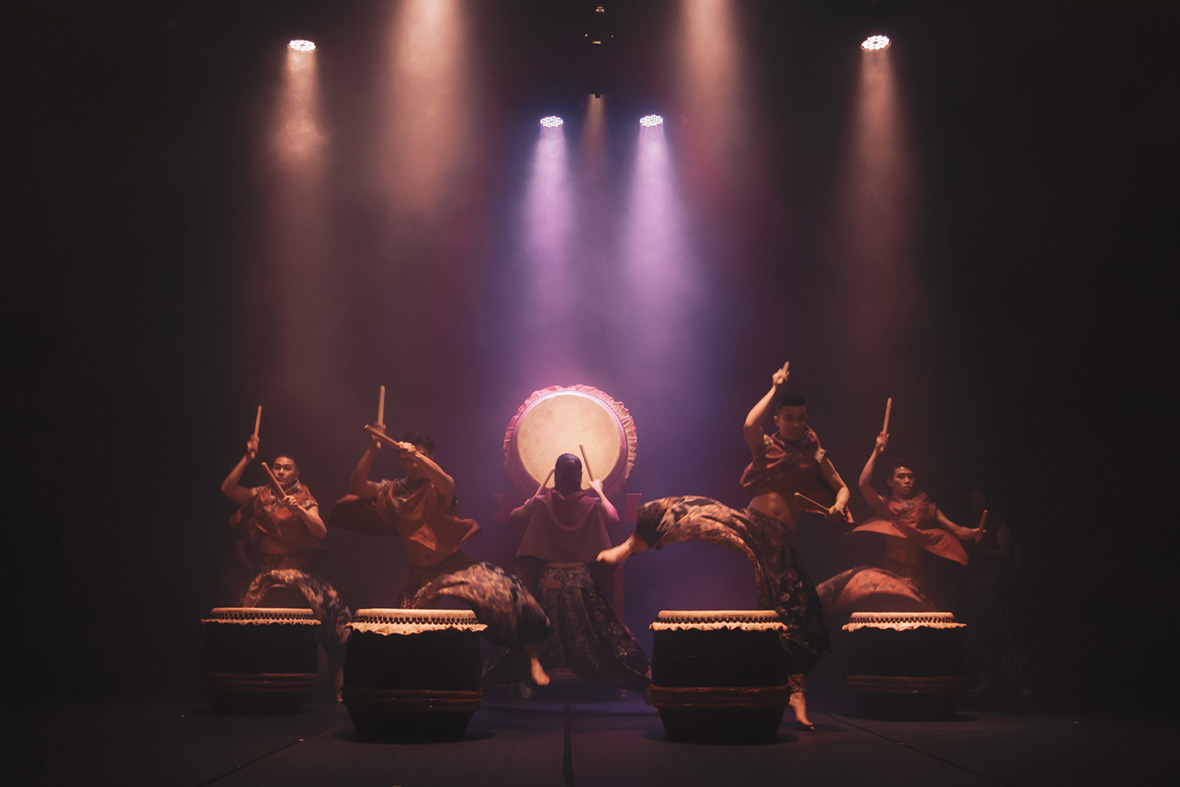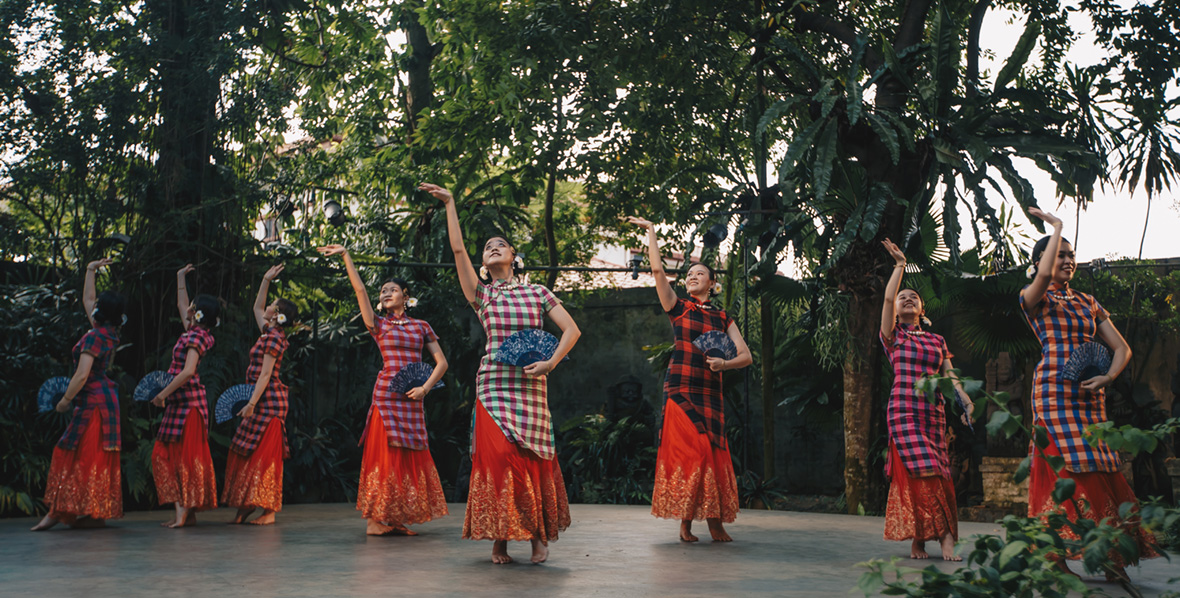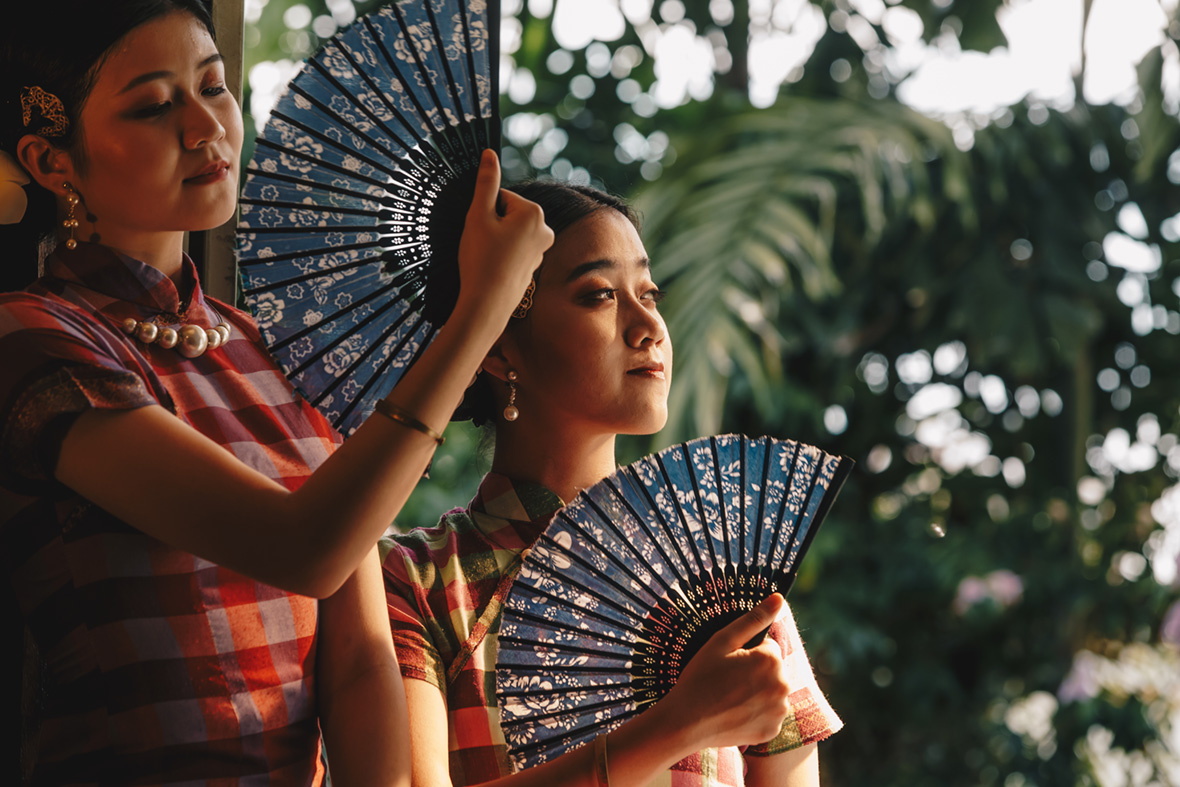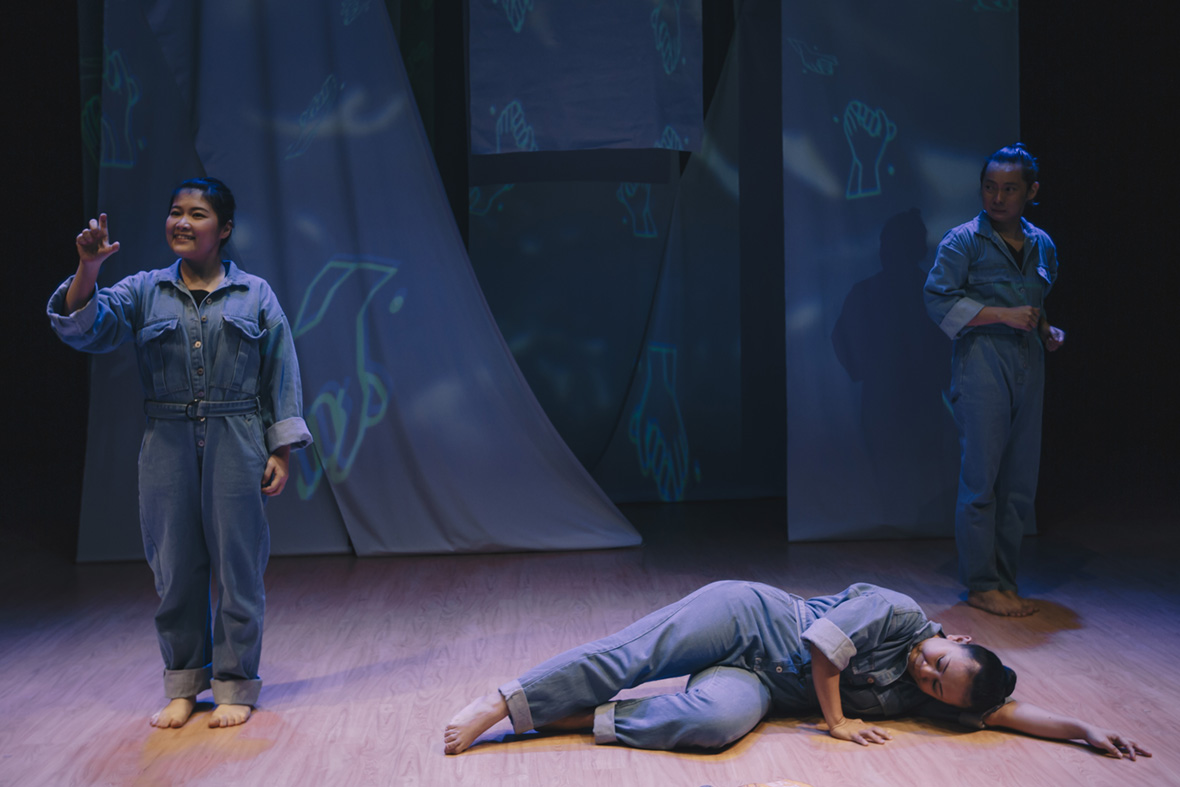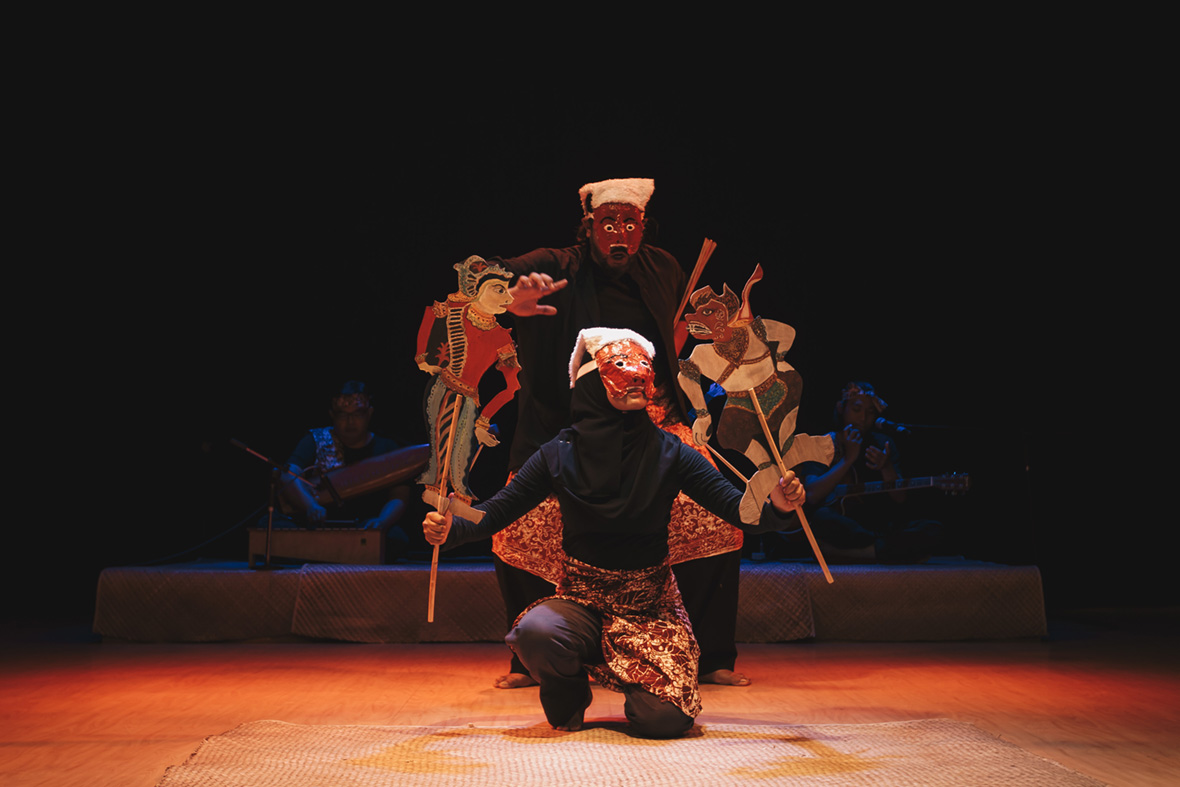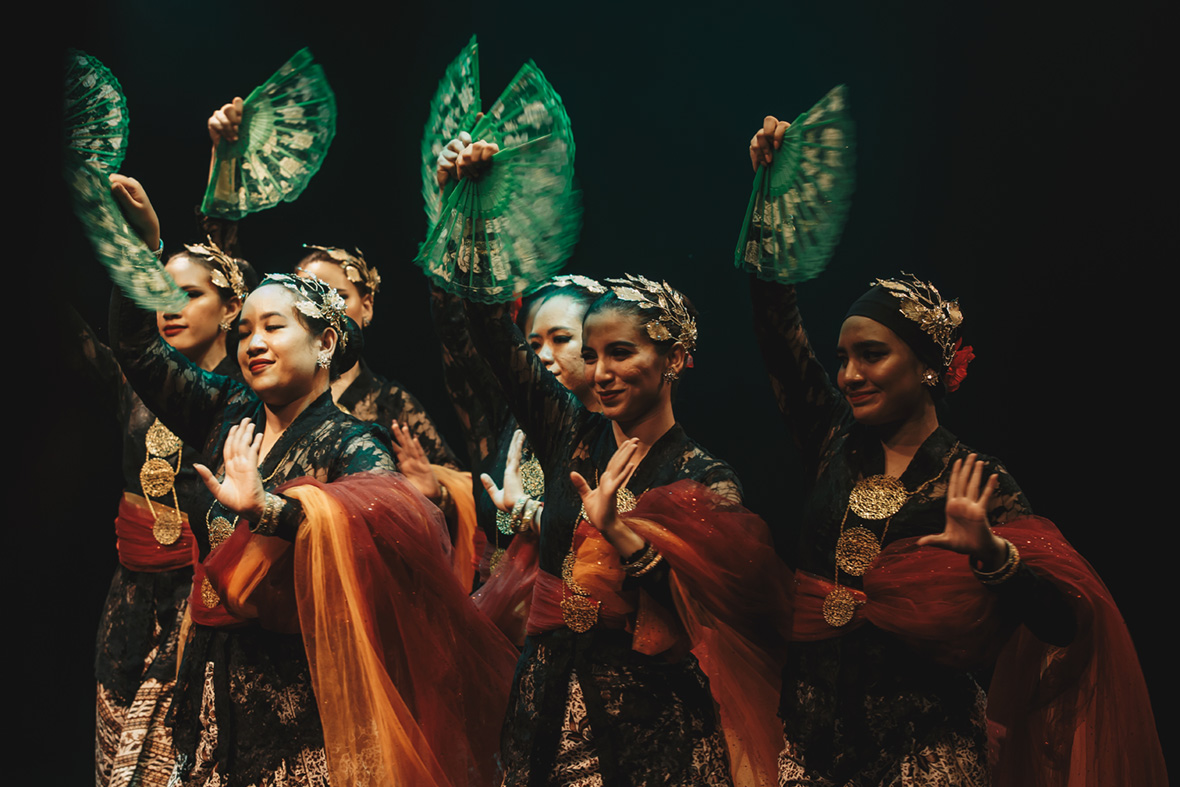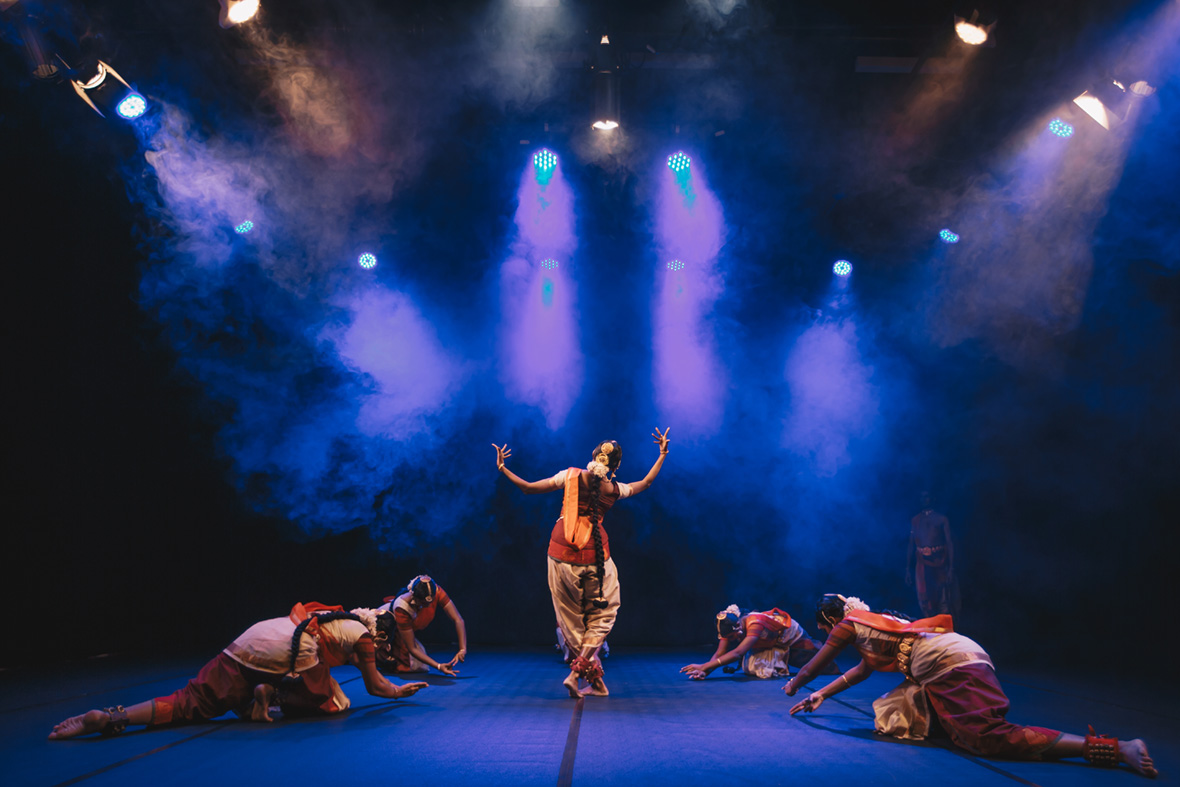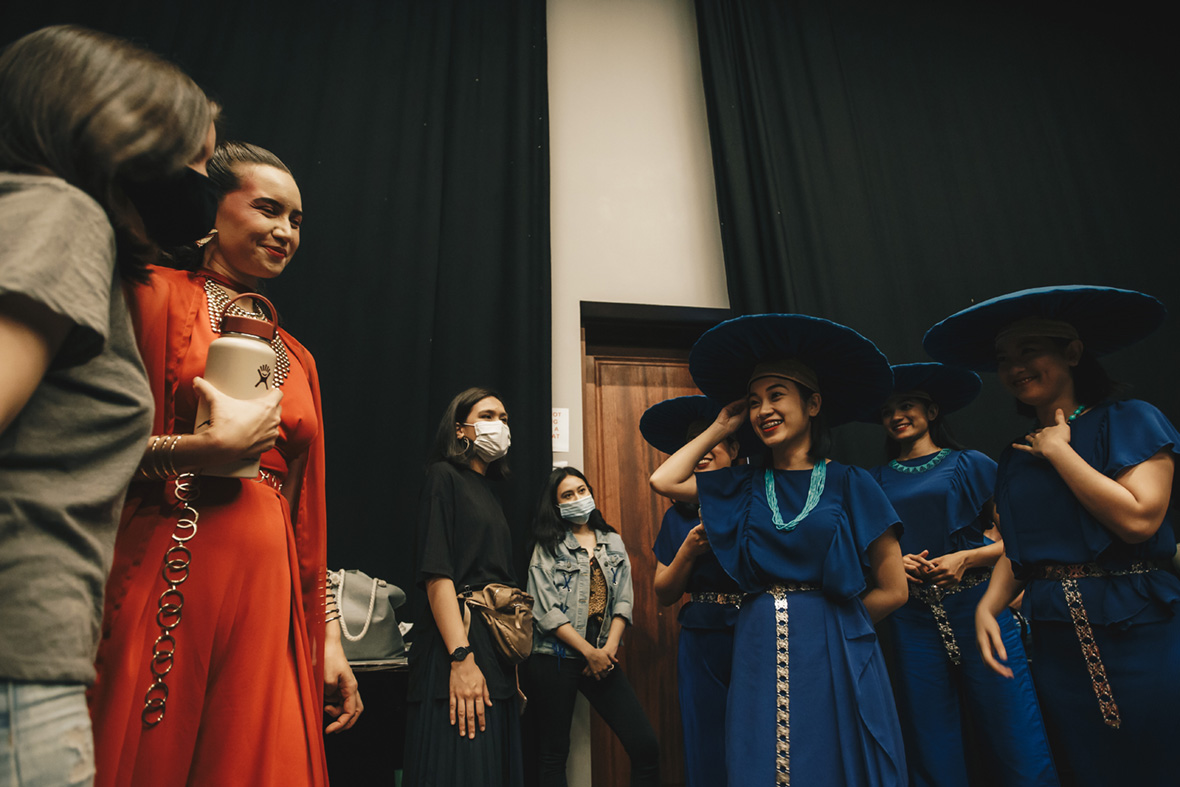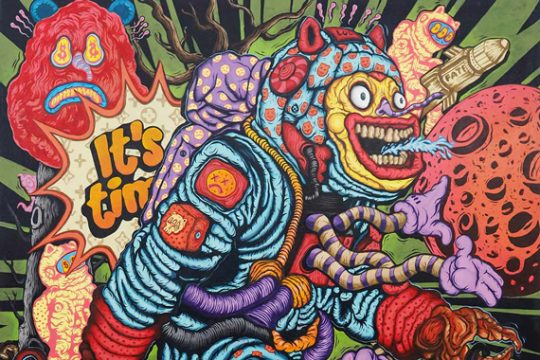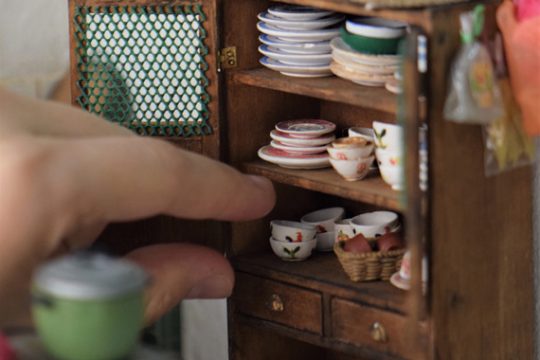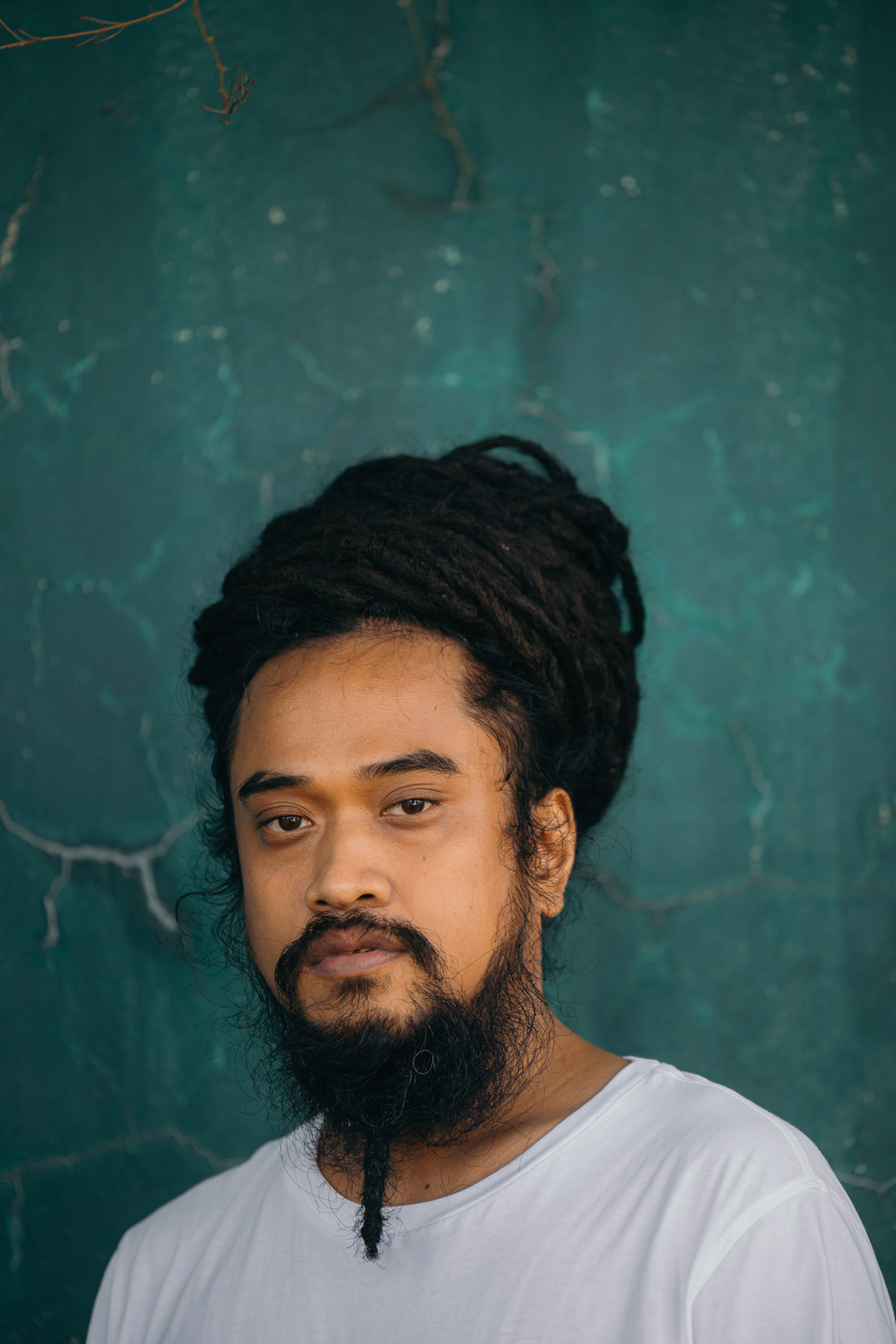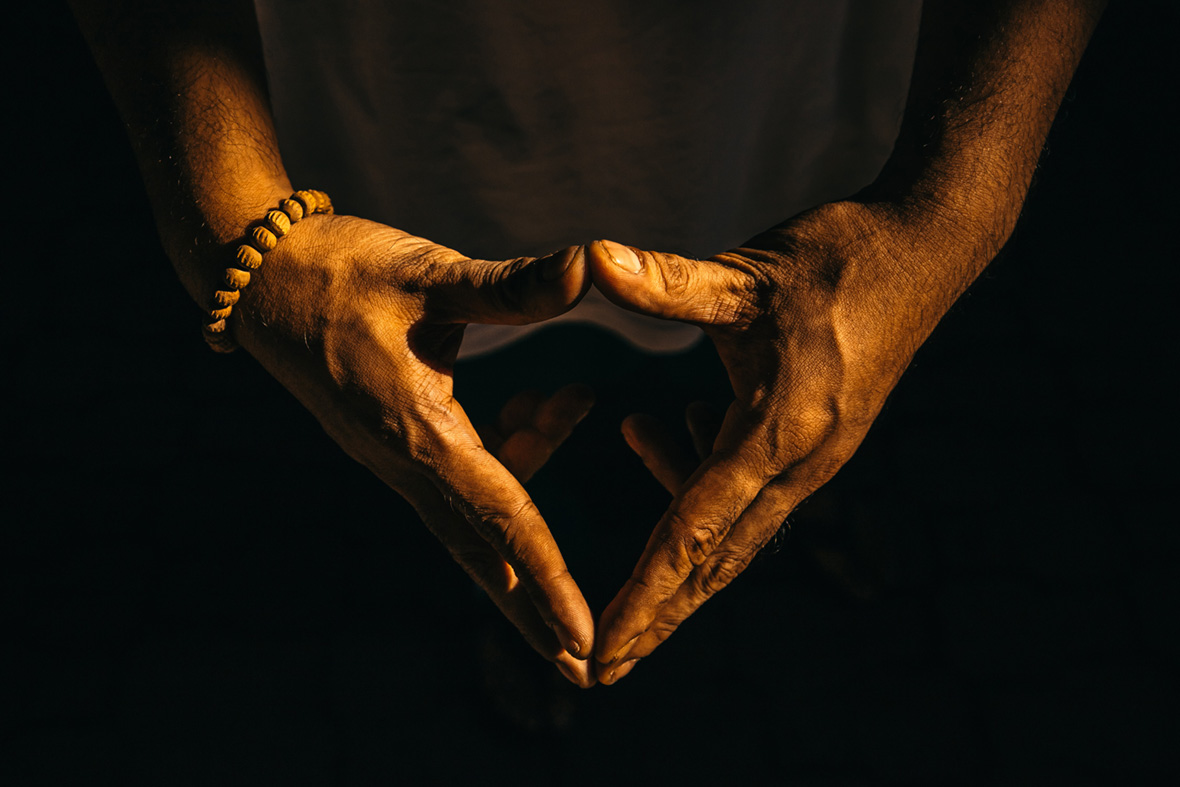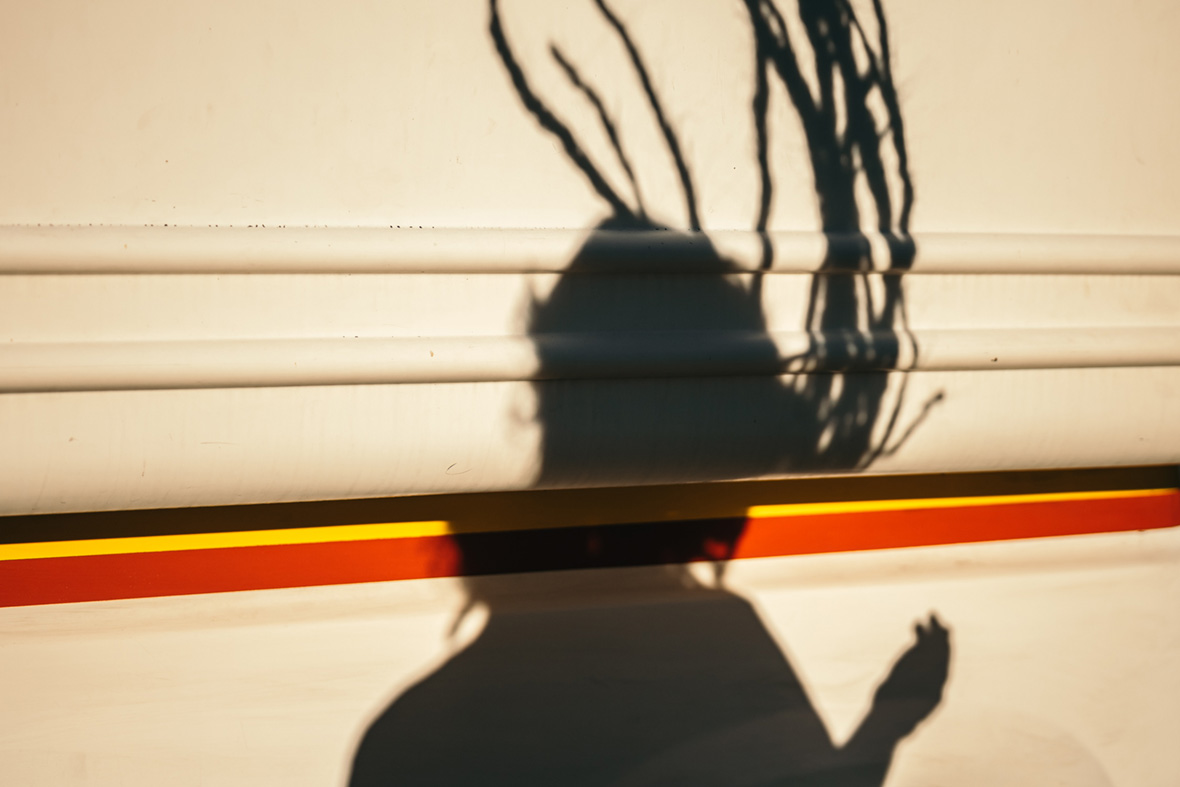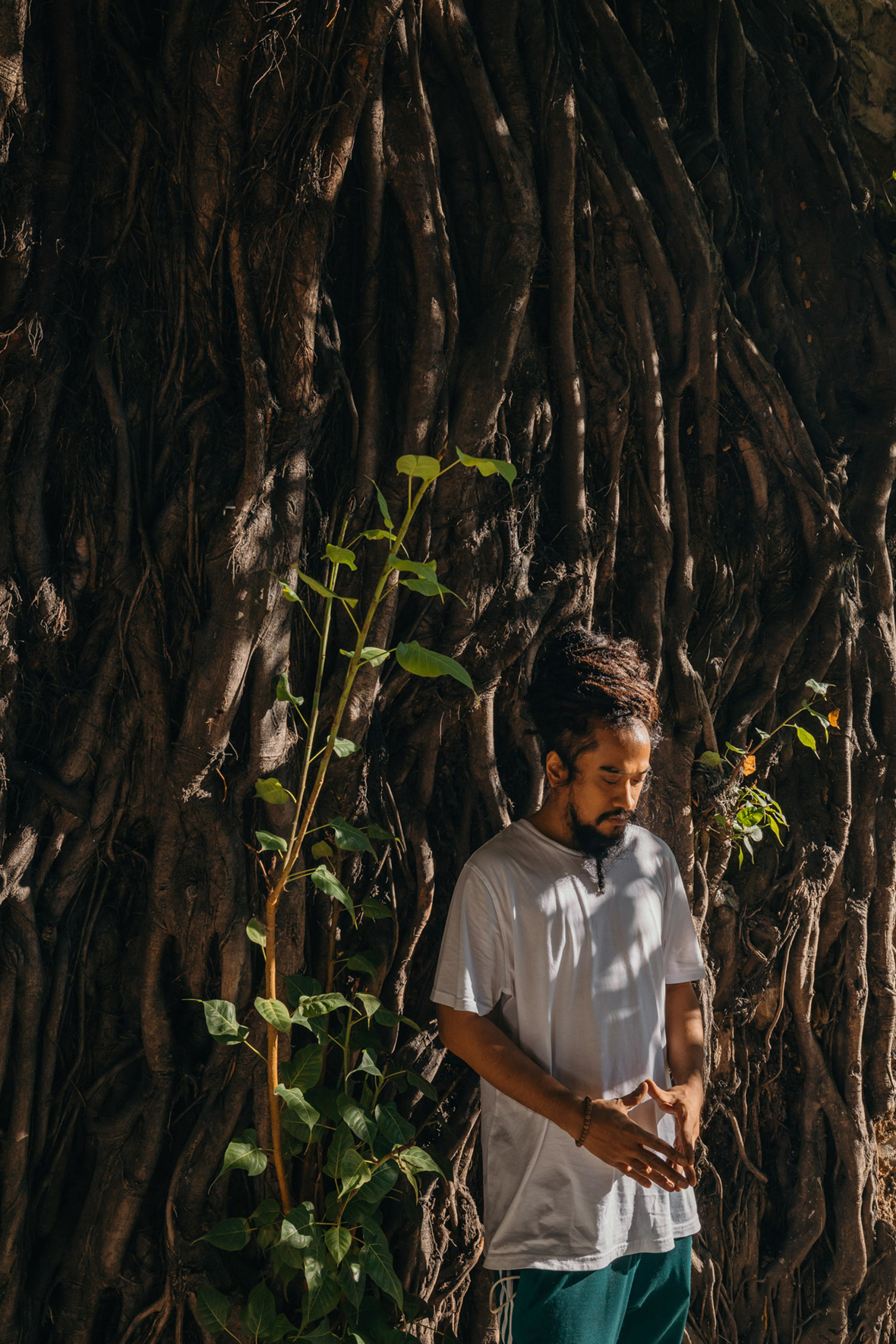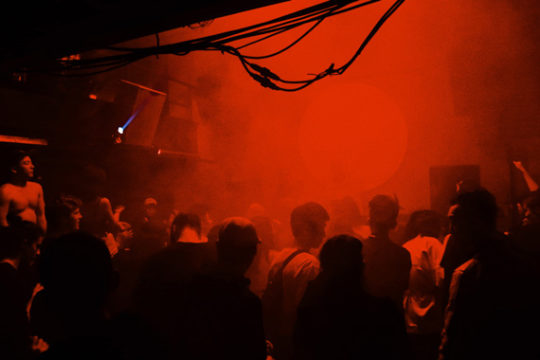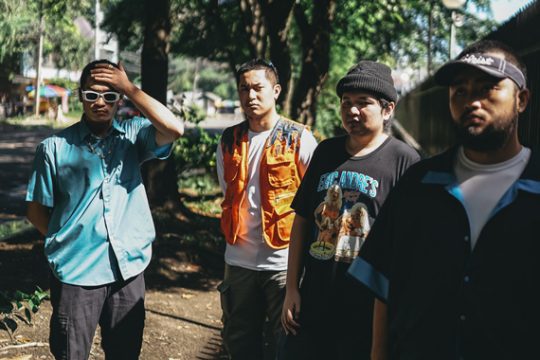
From the outside, Metro Manila’s Tenement Taguig is an intimidating structure. Its grey, fortress-like walls seal its tenants off from the surrounding world, with only tiny windows on its dilapidated exterior peeking outside. But once visitors find the entrance and step inside, they’re greeted with vibrantly colored walls and smiling faces. Residents here are used to outsiders these days, ever since the low-income housing project became world-renowned for its basketball court murals.
The center of this community is literally and figuratively the basketball courts, wedged tightly within an enclosure of walls that rise seven stories high. It’s a place where local ballers refine their skills and compete for glory and cash; when no games are in session, it’s also where residents gather for cookouts, parties, and a playground for the kids to let loose.
Tenement 廉价公寓位于马尼拉大都会塔吉格市(Taguig),从外表看来,这里总令人望而却步。七层楼高的筒子楼建筑,由灰黑色的外墙包裹,住户只能通过墙壁上小小的窗户窥探外界,像座人间堡垒。但当你踏入公寓楼内,迎面而来的,却是颜色鲜艳的墙壁和一张张友善的笑脸。这里有座篮球场,不少艺术家纷纷前来进行壁画创作,于是让这座廉价公寓闻名于世。如今,前来贫民窟的游客络绎不绝,当地的居民也早已习惯了人来人往的景象。
篮球场位于整栋公寓的正中央,是这片区域真正意义上的中心地带。平时的日子里,附近的篮球爱好者们聚集在这个篮球场上,他们切磋球技、一起斗牛;在没人打球的时候,楼里的住户则在这里烧烤聚餐、办派对,孩子们则嬉闹玩耍,把这里当作游乐场。
The open-air walkways look directly down onto the main court, providing a perfect view for the large-scale paintings that turn the entire court into a giant canvas and the intense games that play out atop them. A secondary court used to be unpaved, doubling as a soccer field, but it’s now outfitted with concrete benches and a bandstand.
Most of the walls on the ground floor and the roof are covered with graffiti and street art while many of the other walls are coated in bright pinks, yellows, and greens, with the ramps connecting each floor lit up brightly until midnight. In the daytime, each floor seems to glow as the warm Manila sun bounces off of the colorful surfaces. Soundtracked by the ambience of kids laughing and basketballs being dribbled, it’s something special for people lucky enough to take it all in. Even on stormy days, the complex is just as lively, with residents hanging out together in the hallways, roaming around and chatting while the rain batters the exterior.
站在楼上的露天过道向外望去,壁画尽现眼前。颜料把球场变成一块巨型画布,篮球和人都在画上奔跑。篮球场的旁边还有一处空地,原本打算建成小型足球场,如今被安置上石椅和舞台,供人休闲娱乐。
公寓一楼和屋顶的墙壁被涂鸦占领,其他楼层的墙壁则刷上了粉、黄、绿等颜色的颜料。即便午夜时分穿梭于楼层之间,公寓在月光的照耀下依旧格外鲜亮。白天,马尼拉温暖的阳光照射到这些墙面上,让整栋公寓仿佛被镀上了金光。孩子的嬉闹声音、篮球在地上拍打的声音,自然而然地带来几分幸福的感受。在刮风下雨的日子,这座公寓楼也照样热闹,大家伙在过道上闲庭散步,淅淅沥沥的雨声中,穿插着欢声和笑语。
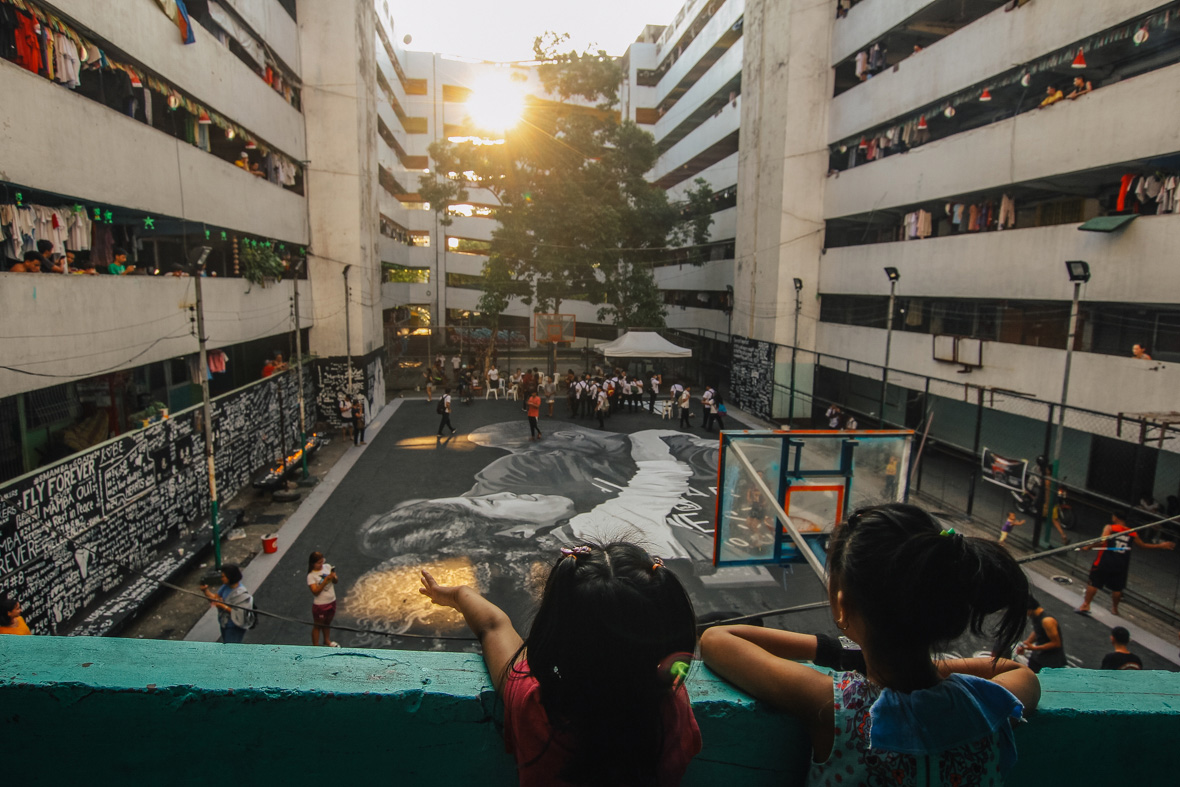
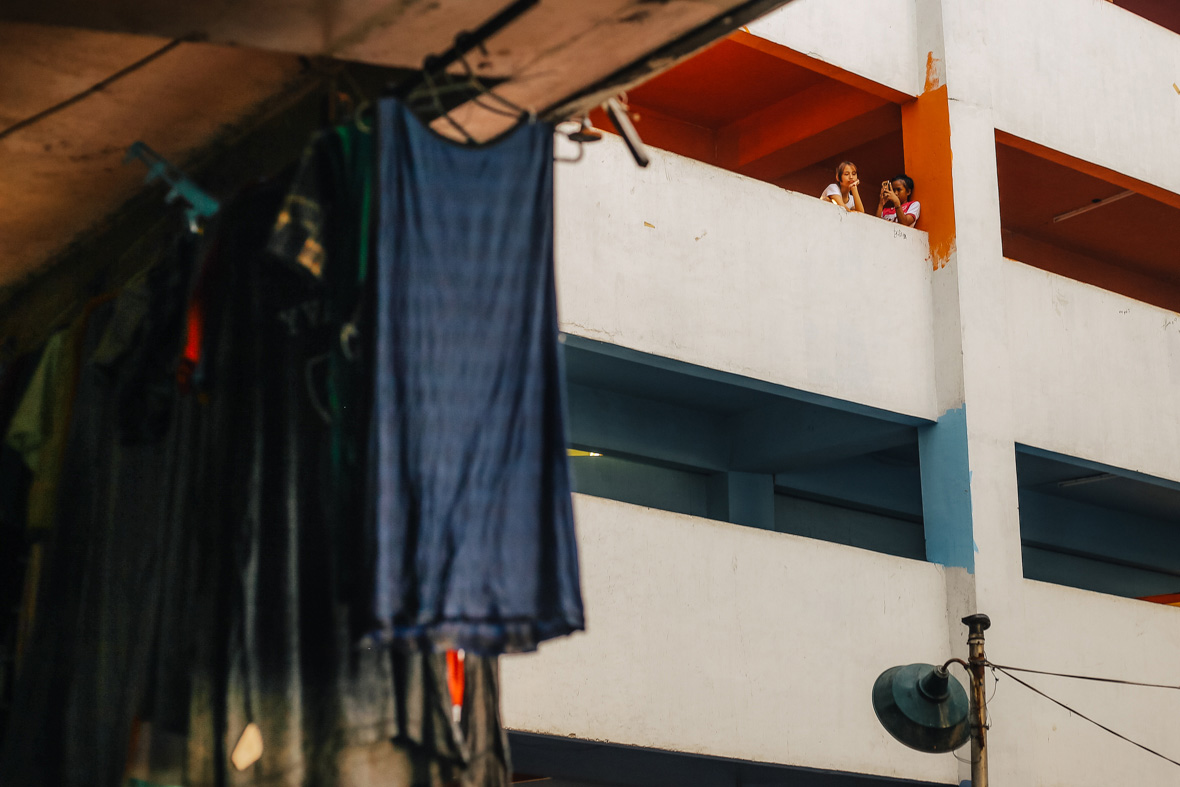
Despite this proud and tightly knit community, many pressing issues haunt the tenants. The entire building is constantly threatened with eviction, concrete is crumbling in the complex’s many corners, and there’s no running water. Residents cart gallons of water, filled from the sole faucet on the ground floor, up the cracked ramps all day, even the elderly. Holes are so big in some places you can see straight through to the floor below. But it was these struggles that invigorated the community’s transformation into an arts-and-entertainment hub, which has helped raise awareness of the tenants’ plight and make their life more enjoyable.
这里的生活看似平静祥和,但公寓楼如今却正面临诸多紧迫的问题:除了接二连三地收到被市政部门驱逐的威胁、很多墙壁开始脱落、自来水供应更是一个严峻的民生问题。包括年迈的居民在内,所有住户都要从一楼唯一的龙头接水,再用小拖车拉上坡道。一些楼层的地面破洞实在太大,大到甚至可以看到下一层楼面的样子。在如此艰难的生活状态下,社区中丰富的生活方式和面貌,引起了外界和社会的关注。
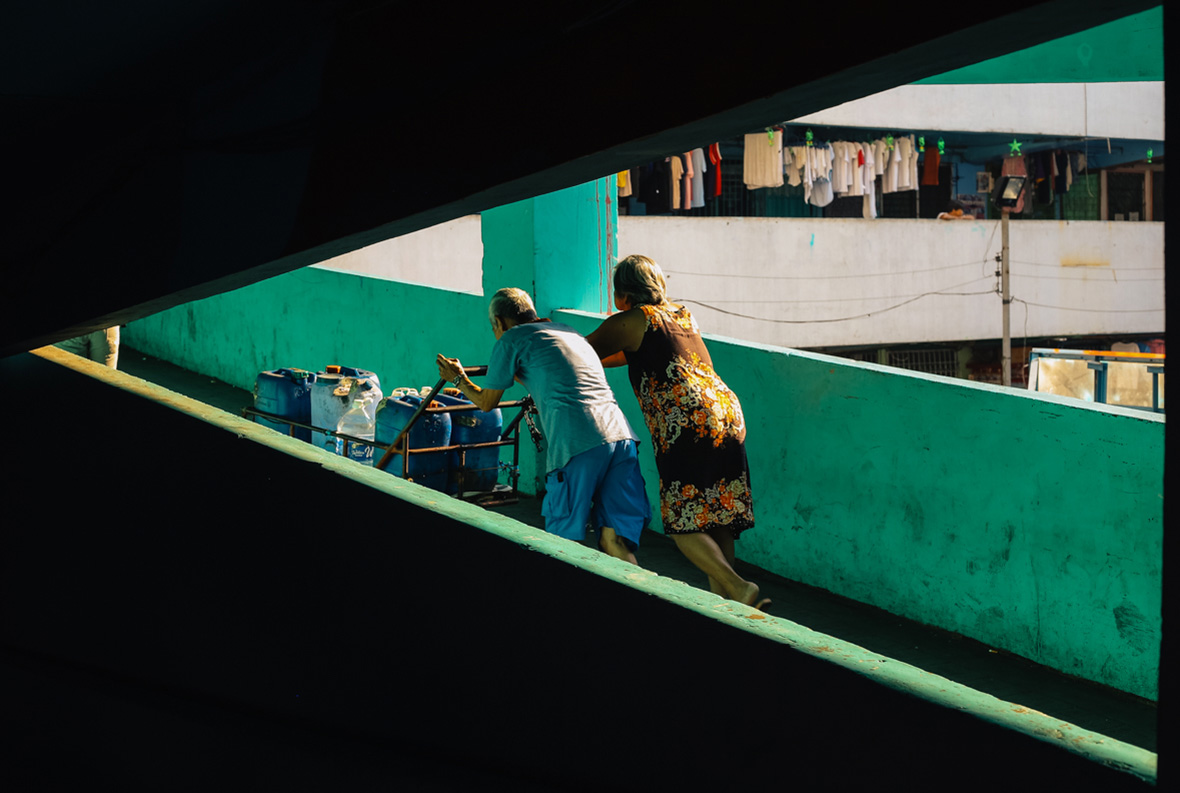
Fort Bonifacio Tenement, as it’s formally known, is located in Taguig City and was originally built in 1963 as part of a relocation program for informal settlers, mainly those living along the PNR commuter railroad tracks. It was home to 700 families and constructed by the Japanese government as part of the nation’s wartime reparations efforts.
Tenement 始建于 1963 年,以前的名字是 Fort Bonifacio Tenement,是一项为贫困人民专门提供的重置计划,主要面向生活在马尼拉轻轨沿线的居民。筒子楼式的建筑由日本国际协力机构建造,作为日本战时赔偿工作的第一个建设项目,有 700 多户人家安居于此。

Generations of families were born and raised at the tenement, and many of the original tenants’ families remain, including Jennifer Corpin, the current tenants’ association president. “The neighbors are like one big family here,” she says. “You don’t really need to leave to be happy, everything you need is here.” And it’s true; scattered throughout the building on various floors you can find sari-sari stores (mini convenience stores), food stands, barbershops, and public computers popularly called pisonet (named after it’s cost: one peso for five minutes of internet access). On one floor, there’s a pool table, and on others, videoke machines. “It’s a very simple life,” she adds with a smile.
许多户家庭在这里经历过好几代人,一些初期的住户至今仍住在这里,这其中就包括现任的租户协会会长 Jennifer Corpin。她对记者说:“这里的所有人像是大家庭。甚至足不出户,你就能获得所需要的一切生活物资。”确实如此,楼里的每一层,你都可以找到小卖部、小吃摊、理发店、甚至网吧。楼上台球桌,楼下 K 歌房,生活趣味无处不在。“这里的生活不会太过复杂,因为麻雀虽小五脏俱全”,Jennifer 笑着说道。
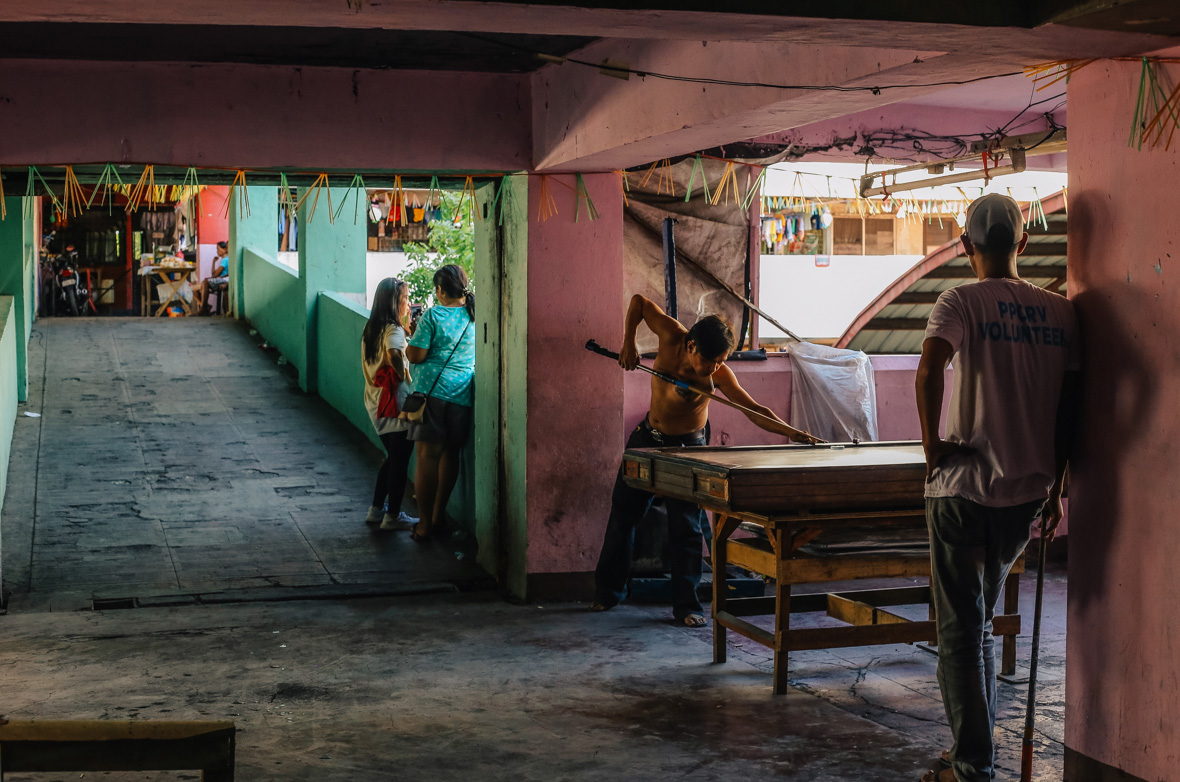
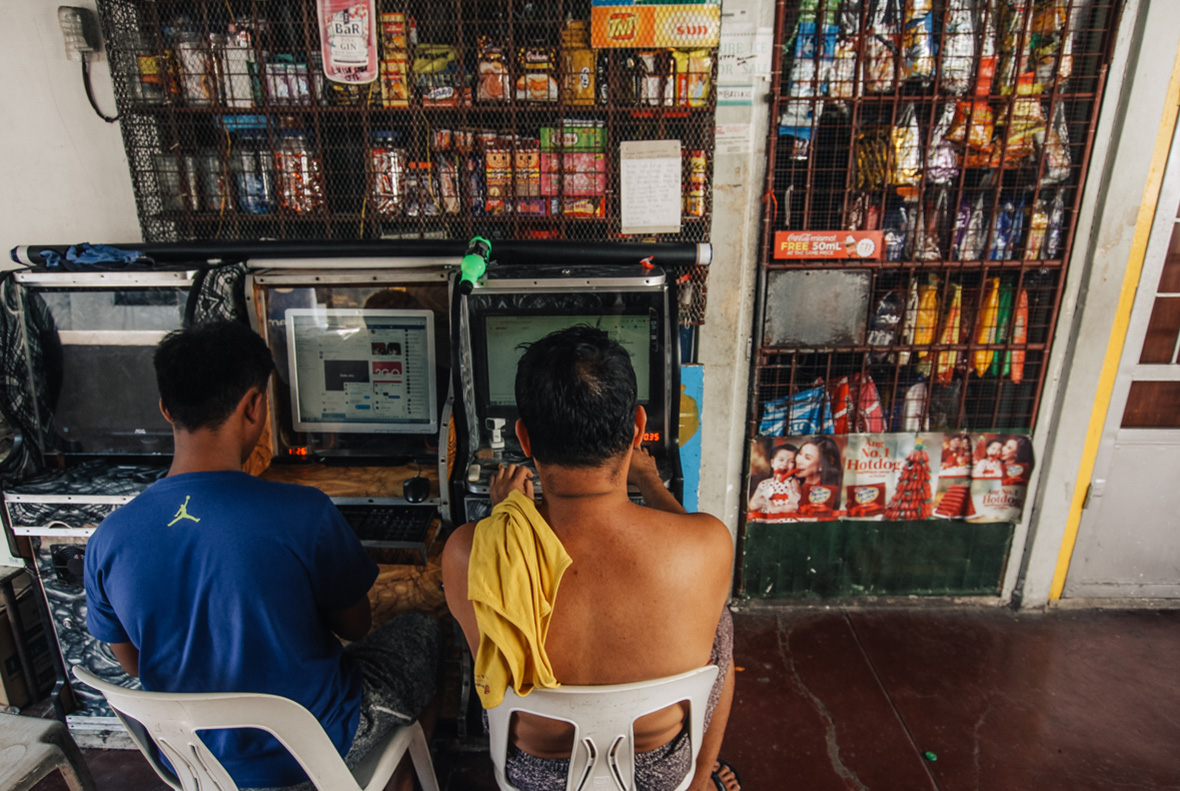
Although Corpin, known to the locals as Prez Kleng, has another home now, she still keeps her original apartment in the tenement that she shares with extended family. Her apartment speaks to the range of units within the walls of the tenement. It’s one of the nicer spaces, renovated with new tiles and updated furniture. Some other units are just as well attended as hers, while others are more modest but lovingly adorned with family pictures and mementos. Then there are those that are just bare concrete spaces. Some have been boarded up since their families left. A few of the least fortunate residents have set up living spaces in the corner landings of the back stairwells.
事实上,Jennifer 在别的地方也另有房子,但她仍然留在这里,与亲戚朋友住在一起。她的公寓算是大楼里典型的户型。房间状态也很不错,配备有新的瓷砖和家具。公寓楼里的房间大相径庭,有的房间与 Jennifer 的家一样被重新装修过;一些房间则相对朴实,家中以纪念品和老照片作为装饰;另外一些房间保留了原始的毛墙毛地,显得些许空落;还有一些木板房,是周边居民用收集来的木板搭建的房子;更有少数困难群体,在楼梯间的拐角处搭建起自己的生活空间。
Troubles first began for the tenement in the 90s. The aging building began falling into disrepair as the government fell behind on upkeep. Eventually, residents stopped paying rent. It’s unclear when exactly this started happening, but by the 2000s, pretty much everyone had stopped paying. The original residents were awarded perpetual lease contracts and were supposed to pay the National Housing Authority. But sometime during this period, they stopped sending bills entirely. And then the eviction threats started happening.
九十年代,由于当地政府未能及进行维护,让整栋公寓变得破败不堪,很多住户因此不愿意再支付房租。直到两千年之后,几乎全部住户都不为房租买张了,这违反了家住房管理局的规章制度。政府的驱逐令也陆陆续续地开始了。
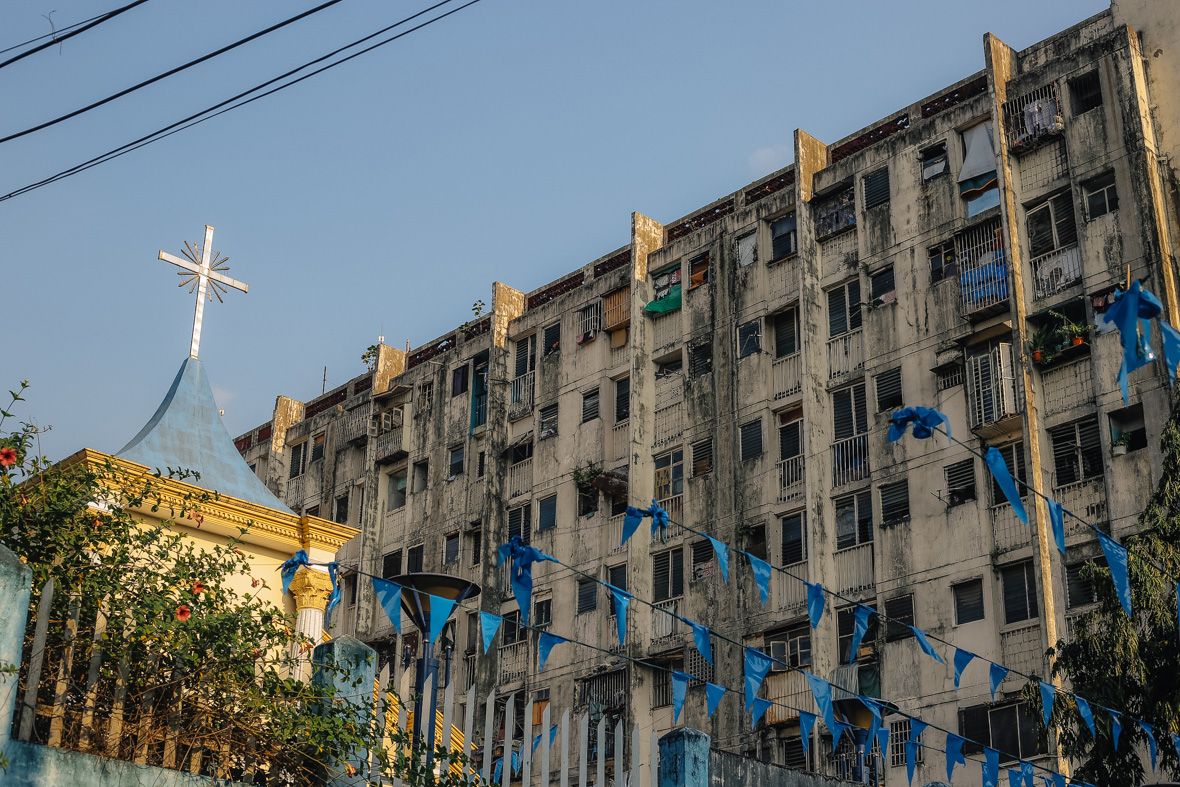
In 2010, mayoral candidate Lani Cayetano stepped up and told the residents they didn’t need to worry if she was elected. “You will not be leaving,” she said. “You can now sleep in peace.” The promise helped carry her into office and she went on to serve two terms until 2019. But she went silent after that first election and barely visited the tenement, despite numerous eviction notices sent out during her tenure. “It’s like she just used the issue to win,” complains Erick Delloza Reyes, an activist and former resident who grew up in the tenement. He points out that her family is a political dynasty holding positions all across high levels of government. “They’ve been in power for how many years now? But they did nothing.”
In 2014, the housing authority again threatened the residents, saying they would be removed from Tenement, claiming that the structure was unsound and would collapse in the next big earthquake, which is expected and overdue. They offered to move them to a new location, but it was out in the province, far from work, the hospital, and the friends and family they’d grown up around. While some took the offer, the majority of tenants poured out to the alcoves, leaning over the railing to bang pots and pans in a noise barrage to protest the eviction. “We’ve asked for a third party to study the structure but they won’t entertain it; we’d have to pay for it ourselves,” Corpin says. When Neocha contacted the Japan International Cooperation Agency (the agency that took over development projects like Tenement), a representative declined to comment, saying they could retrieve no records of the project and thus were unable to provide any information about it.
2010 年,市长候选人 Lani Cayetano 站出来表示,如果她当选为市长,住户将不再会被驱逐。Lani 最终上任,她的第二任期延续至 2019 年。不过当初的承诺并未兑现,在当选之后,Lani 从未提及此事,甚至很少到访这幢公寓大楼,并向 Tenement 发起多次驱逐通知。Erick Delloza Reyes 是一名社会倡议学者,也曾是这幢公寓大楼的居民,他抱怨道:“很显而易见,她只是利用这个问题来赢得更多选票罢了。”他还表示 Lani 是政治世家,她的家人在各级政府中都有职务。Erick 接着说道:“这帮人已经执政不知道多少年了,毫无作为!”
2014 年,住房管理局再次威胁居民搬离公寓楼,声称大楼结构不稳固,下一次地震很可能坍塌,并表示搬迁的决定早已逾期,且势在必行。政府提出将居民安置到省里新的地点,但那距离他们的公司、医院以及他们一起长大的朋友和家人都很远。一部分人接受了安排,但大多数住户选择在楼中央聚集起来以示抗议,他们愤怒地拉扯着栏杆,把家里的锅碗瓢盆砸出巨大的动静。Jennifer 说:“我们要求第三方来评估大楼结构,但他们不愿意支付这笔费用,要求我们自己来承担。”对于大楼结构,居民们甚至还联系了日本国际协力机构,但对方拒绝发表任何评论,称无法检索到该项目的记录,因此拒绝提供任何信息。

It was around this time that Mike Swift got involved. Swift is a FIlipino-American rapper who grew up in the housing projects of Coney Island, Brooklyn. He moved from the Philippines to New York in second grade and returned in 2004 as an adult to pursue a rap career. He had some success from documentary-style DVDs, which included video of him performing in both countries, joking around with big-name rappers, and hooping. “Basketball had always helped me make friends, even as a kid in Brooklyn before I spoke English well,” he says. “I was already ahead in math and grammar and everything, but my accent was different. Once I landed in the Philippines, I was looking for basketball right away. ‘Where we ballin’ at?’ That’s how I became friends with everyone.”
Swift had been in the country for a full decade by 2014 and was looking for something beyond the rap world. With basketball so popular in the Philippines, courts can be found almost anywhere in the country, from little dirt clearings with boxes for hoops, to narrow alleyways with hoops on wheels so they can be moved out of the way of traffic. He’d been taking pictures of them along his journeys, collecting them on an Instagram account called Mr. PinoyHoops. He was also involved in renovating courts. “Everywhere I went, I was looking for courts,” he says. “Even in New York I was involved in clean-up jobs on the courts. It’s not major money, it’s just major time. And that became my philosophy: You don’t need the government or money, you just need to be a leader. Get a broom and a garbage bag; buy a bit of paint.”
与此同时,Mike Swift 正打算用说唱的形式表达抗议。作为一位菲律宾裔美国说唱歌手,他从小在布鲁克林康尼岛的公租房里长大。二年级时,他从菲律宾搬到纽约,并于 2004 年回到故乡,励志成为一名说唱歌手。他发行的音乐纪录片享有不错的热度和口碑,其中包括他在菲美两地演出的镜头,还有与著名说唱歌手街头过招的画面。他说:“篮球让我结交了不少朋友。那会儿我刚到布鲁克林,英语还说得不太流利,平时都是通过篮球来认识朋友。一回到菲律宾,马上就去找地方打篮球,每当有新朋友时,我的第一句话往往是’我们一会儿去哪里打球?’。”
2014 年,Swift 在菲律宾已经生活了整整十年,而他也一直想在说唱界以外有所作为。篮球在菲律宾是一项十分流行的运动,到处都是球场,简陋的水泥地球场随处可见,甚至在狭窄的小巷里,还能看到可移动式的篮筐,以方便为过往的汽车开道。他用镜头拍摄下旅途中看到的各种球场,然后将照片发布在名为“Mr PinoyHoops”的 Instagram 帐户上。除此之外,他还偶尔参与球场翻新的建设工作,他说:“我每到一个地方都会去找球场。哪怕在纽约生活的时候,我也会帮忙去做球场的清洁工作。钱不是最主要的,时间才是。这也是我的理念:你不需要行政部门的支持,也不需要很多的钱,只需要成为带头行动的人,拿一把扫帚和一个垃圾袋,再买点油漆就行了。”
无法观看?前往腾讯视频
In 2014, Swift was featured in a Nike commercial shot at the tenement. Through that visit, he met the ballers there and learned more about the place. “I became focused on getting the world to pay attention to the tenement,” he says. “I wanted to make it attractive so people would come here, and I was interested in all elements of hip-hop, so the art came naturally. They were facing eviction and I was at a low in my rap career. We were both at lows in our lives.”
Swift decided to throw a big event called Picnic Games to help raise the resident’s spirits. There were games for the kids, food, music, and art. “It was a synergy of all the different parts of my life, but the residents really made it all happen.” The event was a success, and the Picnic Games became a regular event. As a result, the local government even briefly backed off with the eviction demands.
同年,Swift 参与耐克在 Tenement 公寓楼拍摄的广告项目。那次经历让他结识了很多当地的篮球爱好者,也进一步熟悉了公寓的情况。他说:“我尝试提高外界对这幢公寓楼的关注。加上我对嘻哈的兴趣,自然而然地就想到来这里创作。这里的住户正被驱逐,而我当时也处于说唱生涯的低谷,可以说我们是同病相怜。”
Swift 决定举办一场为“野餐游戏”的活动,鼓励家长带着小孩参与其中,包括游戏、美食、音乐和艺术环节。“这个活动融合了我生活中积累的不同方面资源,但也是靠大楼的住户共同努力,才可能实现。”“野餐游戏”活动非常成功,并变成了定期举办的活动,最终甚至让当地政府暂时打消了驱逐的念头。
The next year Swift met Maya Carandang, a local painter, tattoo artist, and dancer. The murals that they created in the tenement began to capture international attention. Their first full-court mural, designed by Carandang and painted with the help of dozens of residents, was a giant picture of LeBron James. “The mural was bait for him to come here,” Swift laughs. And it worked. The mural and its story drew one of the NBA’s best players to the other side of the world. “It became a saying around here, ‘If LeBron came to the tenement, anything is possible.'”
Swift 结识了当地的画家、纹身师和舞者 Maya Carandang。他们随后一起在公寓楼创作的壁画逐渐引起了国际上的广泛关注。第一幅覆盖球场的壁画由 Maya 负责设计,在数十名居民的帮助下完成绘画,壁画上的内容是篮球巨星 LeBron James。“这幅壁画其实是个诱饵,就是想吸引他能亲身来到这里。”Swift 笑着说道。不久之后,“诱饵”奏效了,这幅壁画及其背后的故事吸引了这名 NBA 传奇球员千里迢迢来到世界的另一端。“很多人都难以置信,这一切真的成真了。”
Despite the tenement’s newfound exposure, eviction threats once again continued. “The problem is the value of the land,” says Reyes. “The local government wants to sell the land to corporations rather than have the tenants stay there. They’re not helping residents because they want them to suffer so they are just forced to move.” Along with the eviction notices, the murals and events continued as well. The court is now repainted a few times a year, although Carandang is no longer involved. Events are just as frequent, with graffiti battles and musical performances drawing crowds from across the city. The tenement has been used as a setting for telenovelas, video games, and a Nike sneaker was even named after it. The grey walls of the tenement’s outer walls are slowly being covered in pastel hues as well, with donated paint organized by Swift.
虽然有了曝光度,但拆迁的威胁依然存在。Erick 说:“整个件事的问题都源于这块儿地的价格。当地政府想将这块地出售给企业,因此不愿意让租户继续留在那里。他们之所以不愿意提供维修,就是想让这里的生活糟糕一些,迫使人们不得不搬。”虽然驱逐通知没有撤除,但壁画创作和活动仍在继续。Maya 已不再参与,但球场每年都会有新壁画出现;他们频繁举办各种活动,通过涂鸦比赛、音乐演出吸引各地的游客前来参观。公寓也曾被用作电视剧、电子游戏的拍摄场地,甚至有一款以它的名字命名的耐克运动鞋。灰色的大楼外墙也慢慢地被全新的燃料覆盖,所用维护的费用都由 Swift 的活动筹集得来。
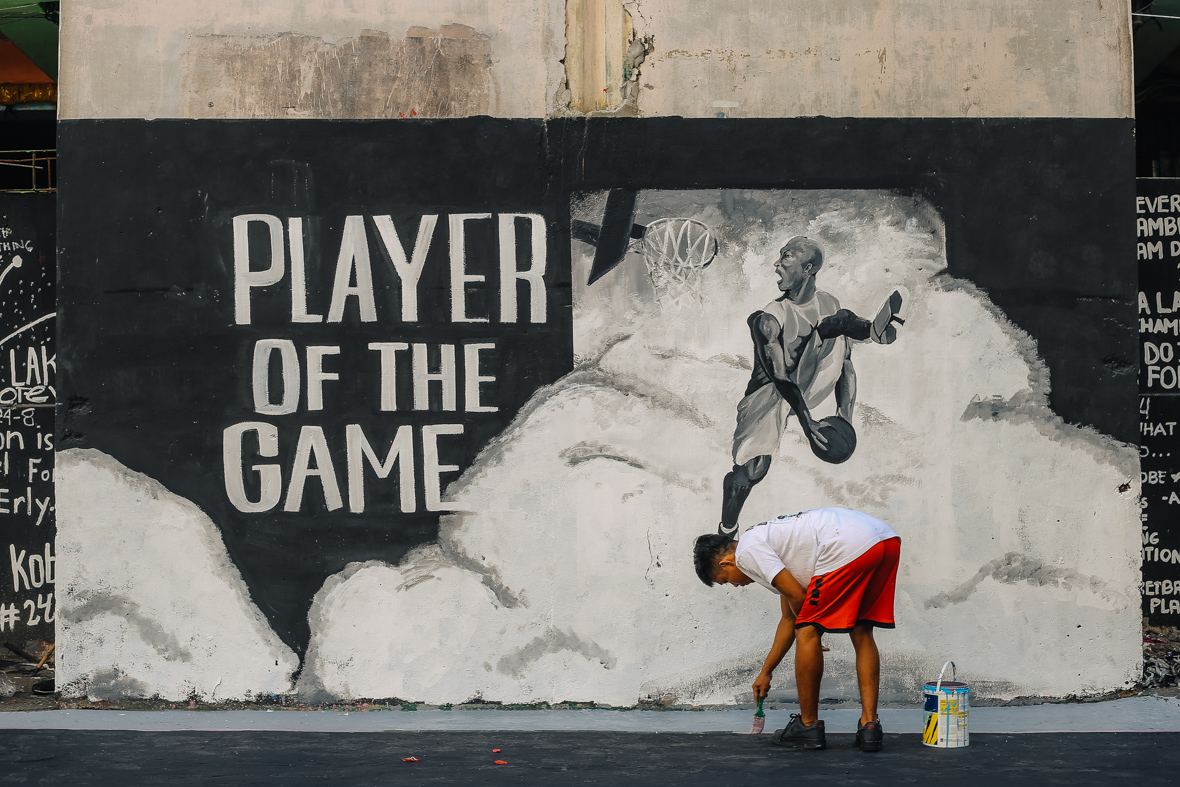
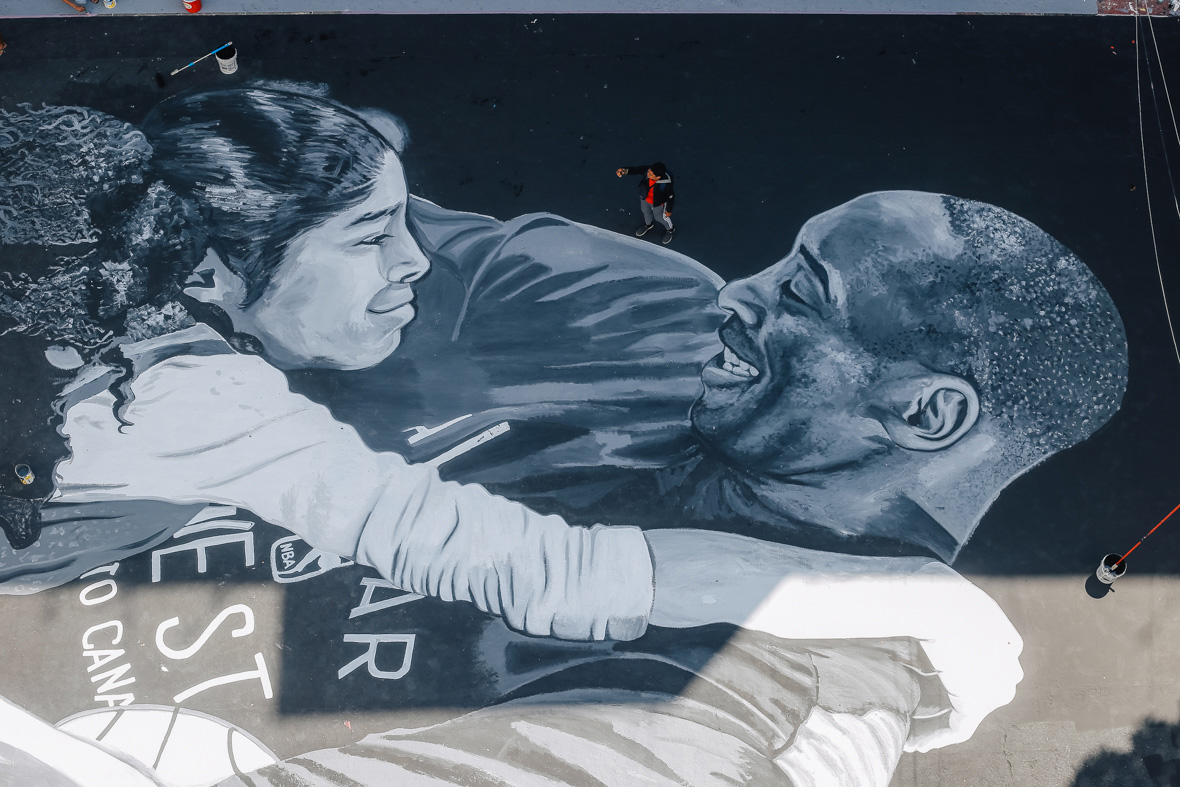
Earlier this year, a month before the country shut down in hopes of warding off the coronavirus, tenement residents came together once again in remembrance of Kobe and Gianna Bryant. A full-court, black-and-white mural of Kobe and his daughter Gianna was painted within days of his demise. Space was cleared on every other bit of surface surrounding the court for residents and guests to paint messages to them. Candles were lit throughout the week. “It’s unfortunate that it needs to be in mourning,” says Swift. “This tribute was the least we can do. It was so natural: There was no plan, no proposals. We all just came together out of love.” Once again, reporters and fans started arriving from across the country and the world to revel in the magic that the tenement had created. “We’re the world-famous tenement court,” Swift grins.
2020 年初,菲律宾因为疫情采取了一个月的境内封锁,那段时间正值科比父女俩人的离世,公寓大楼的居民们再次聚集在一起,纪念这位篮球巨星。就在科比离世的消息出现几天之后,一幅他和女儿 Gianna 的巨型黑白壁画就覆盖在球场上。球场四周的空间也被腾出,让居民和游客在此留下悼念。整整一个星期,球场上点满了蜡烛。Swift 说,“整个过程都是自发的,没有事先计划,没有人特意提议。我们都是出于爱而聚集在这里。”再一次,国内外的记者和球迷涌到这里,感受这幢公寓大楼的奇妙力场。
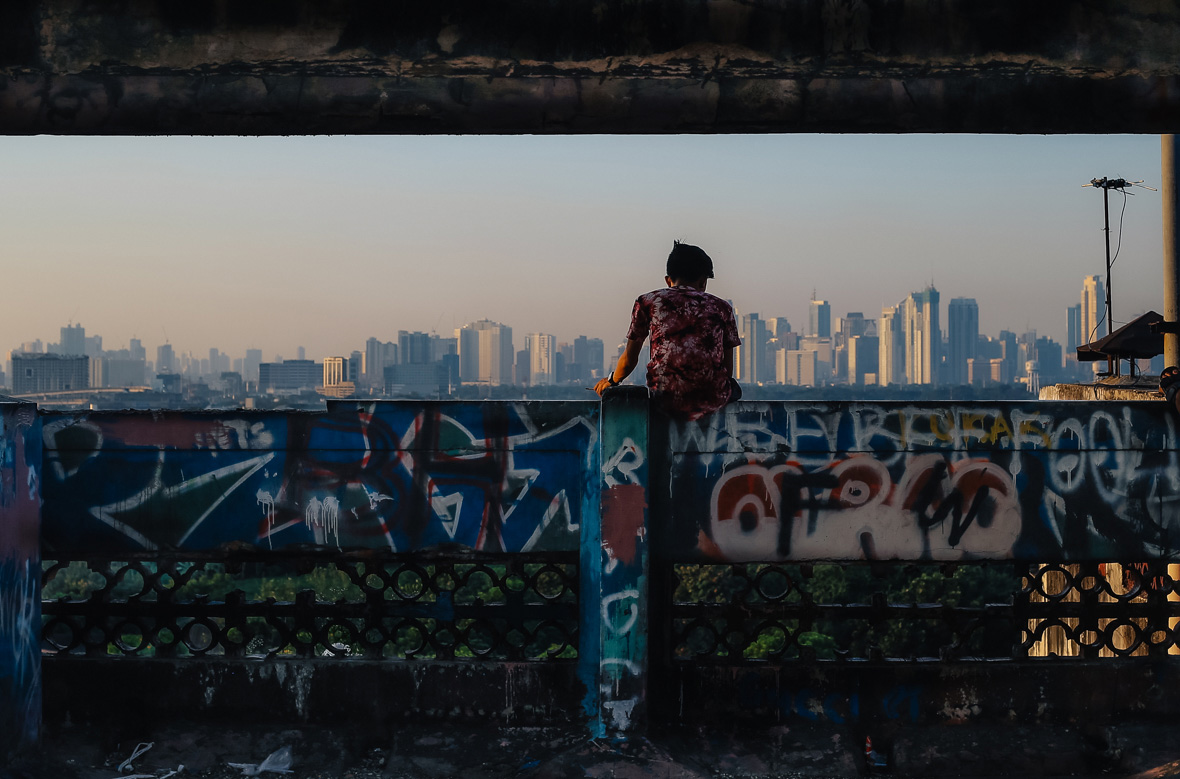
But the struggles are far from over. There’s still no running water, the concrete keeps crumbling, and the eviction notices continue. “We’re just surviving on our own,” says Corpin, a statement made with some pride rather than resignation. “We’re used to the fact that no one cares about us.”
然而,住户的斗争还远远没有结束——大楼里依然没有自来水,墙壁还在不断脱落,驱逐通知预计也将再次下达。Jennifer 表示:“我们一直都是孤军奋战、自食其力。”比起无奈,语气中却彰显出些许自豪,“我们已经习惯了不被人们关心的事实。”
Like our stories? Follow us on Facebook and Instagram.
Contributor: Mike Steyels
Photographer: Earvin Perias
Chinese Translation: Olivia Li

